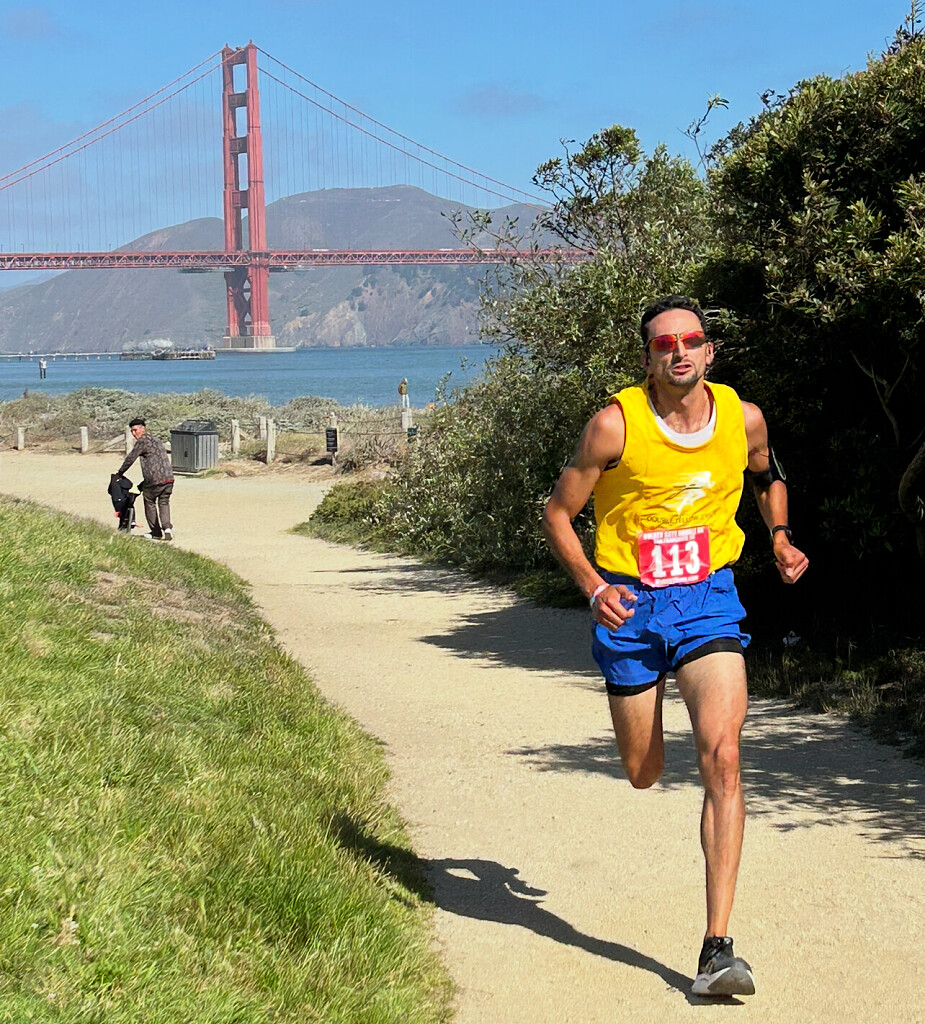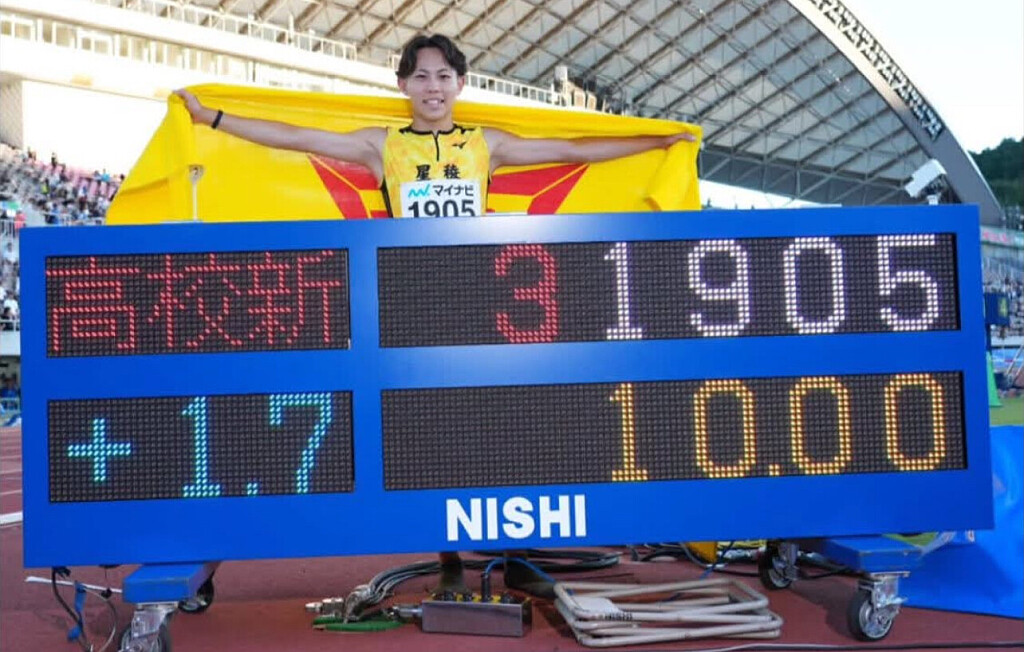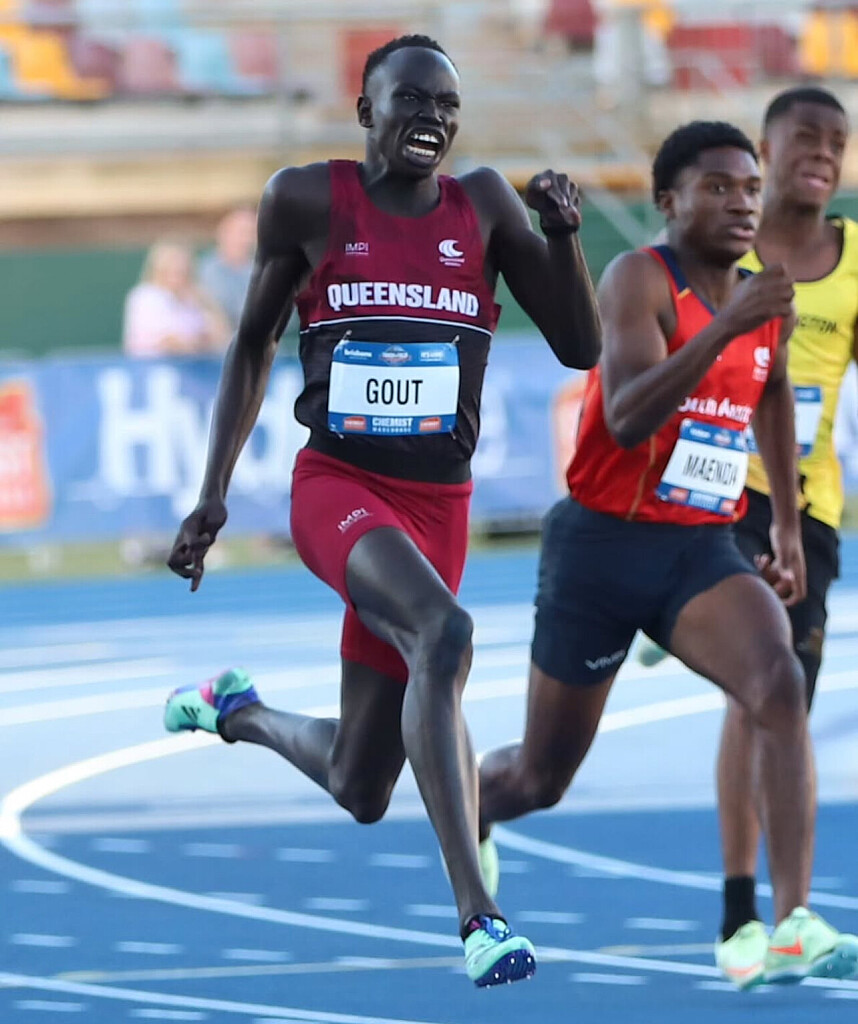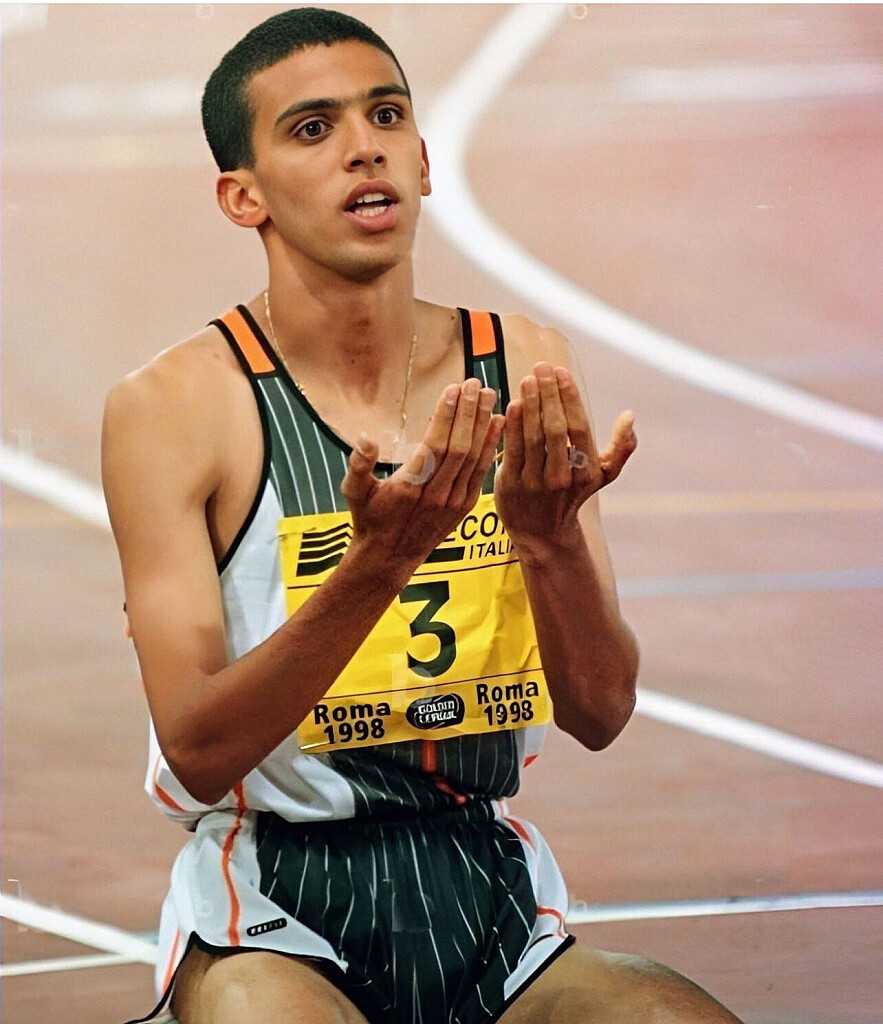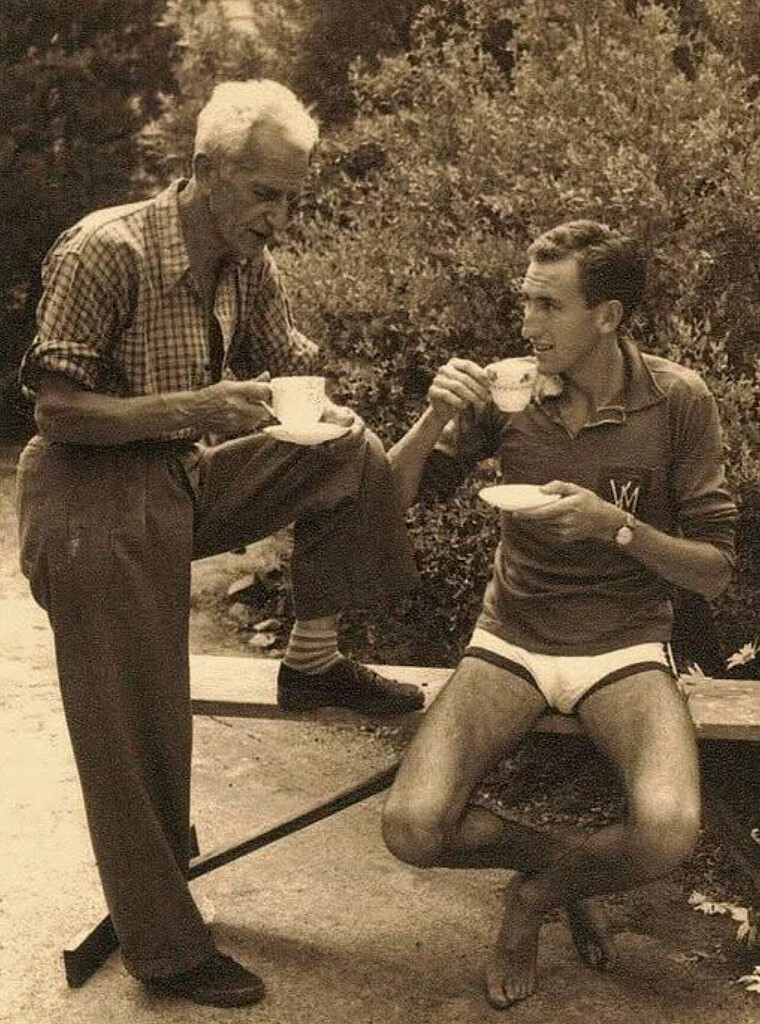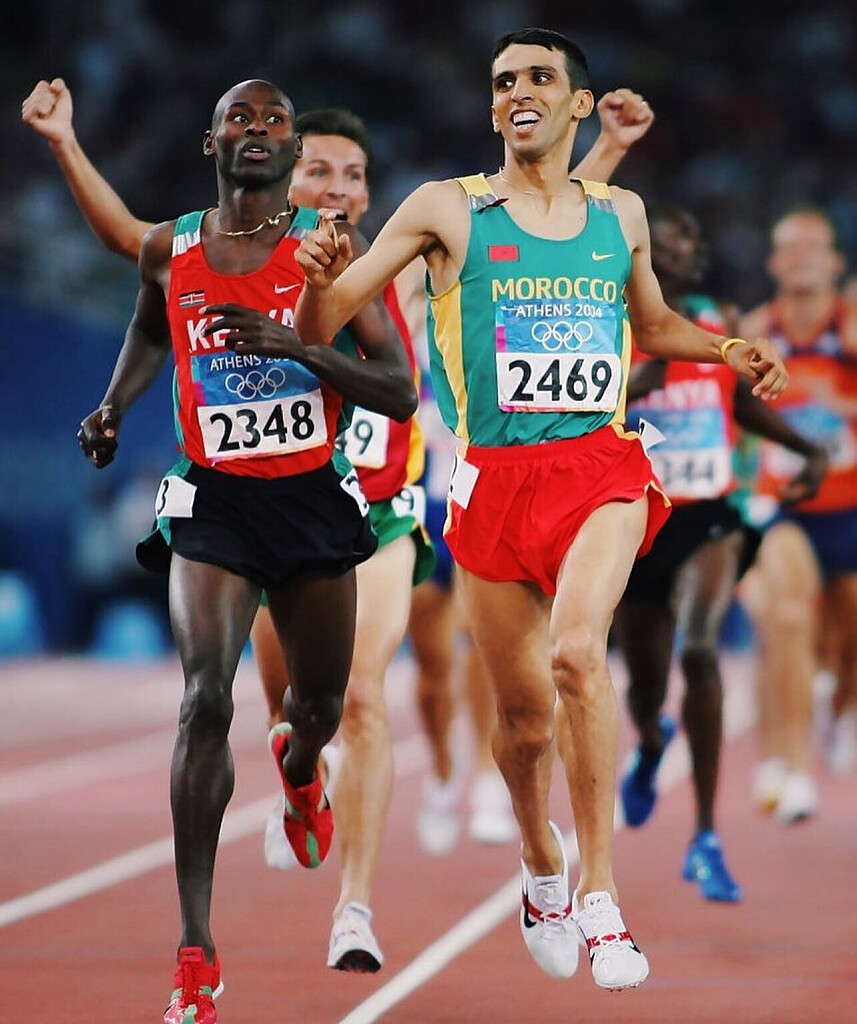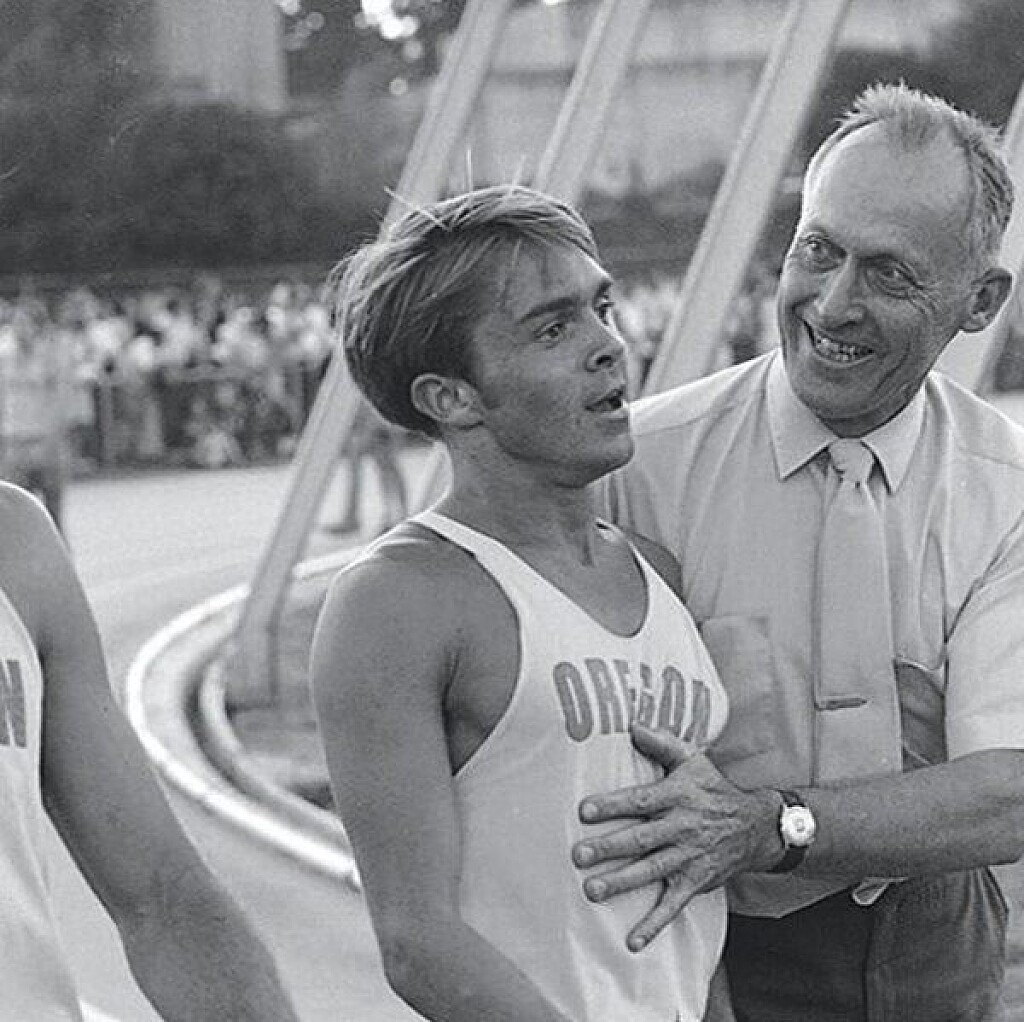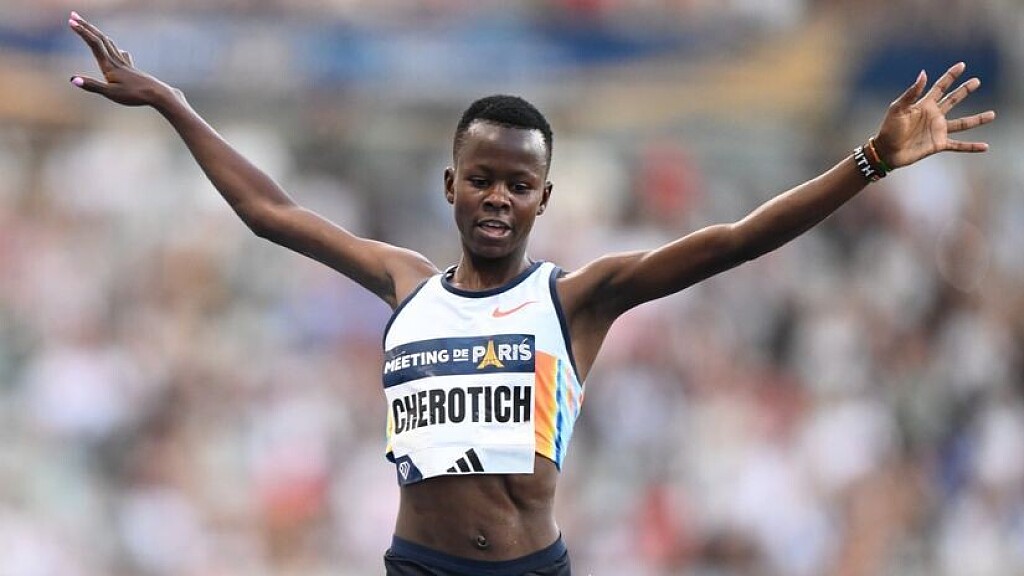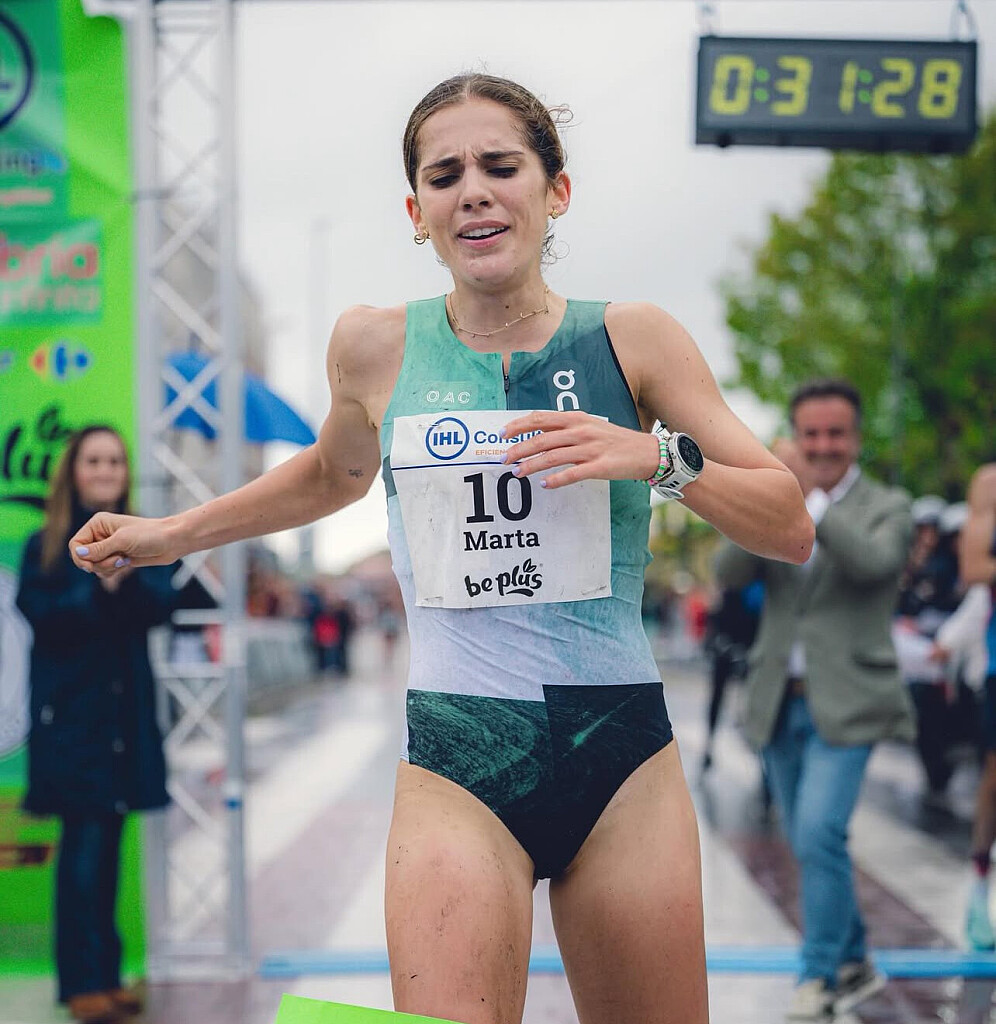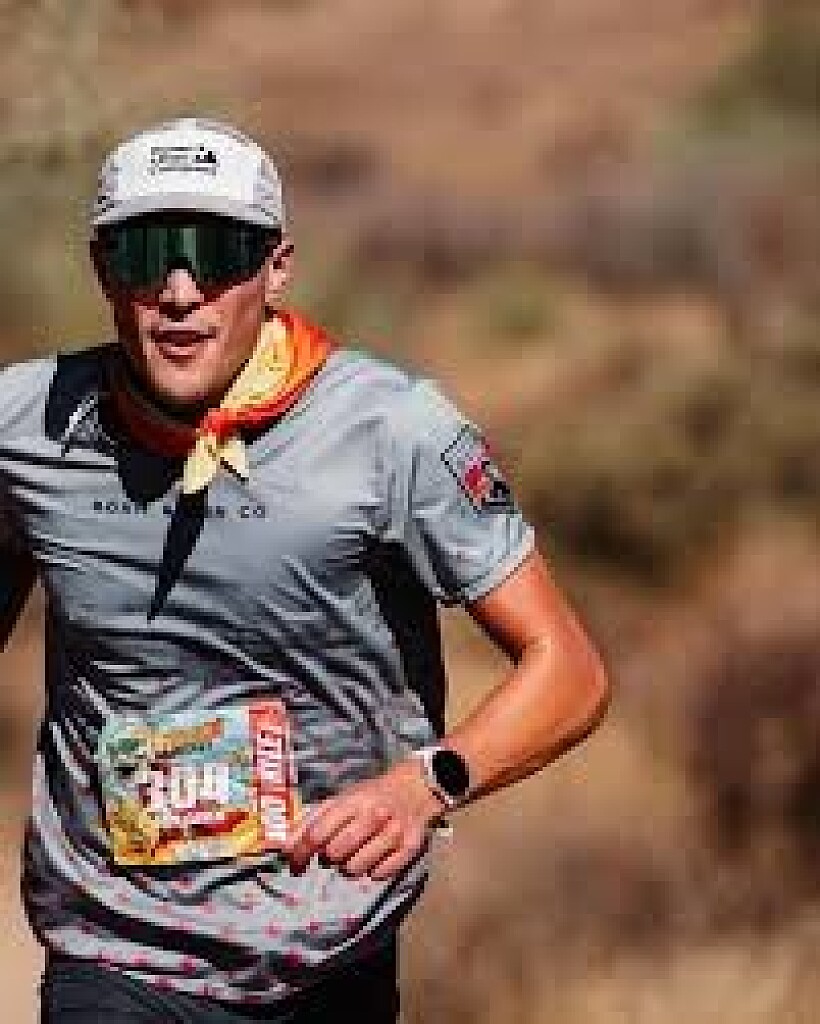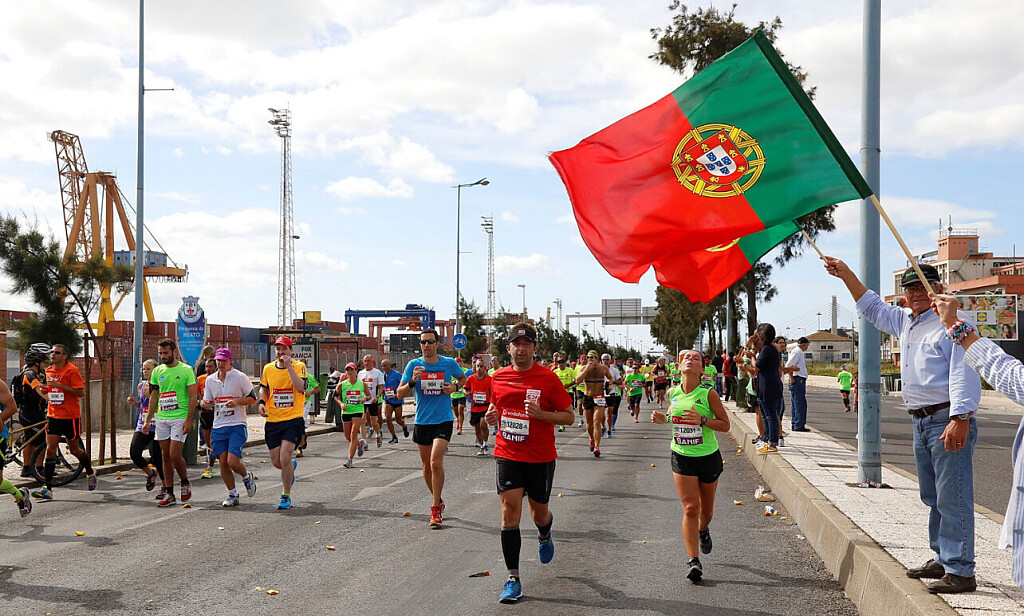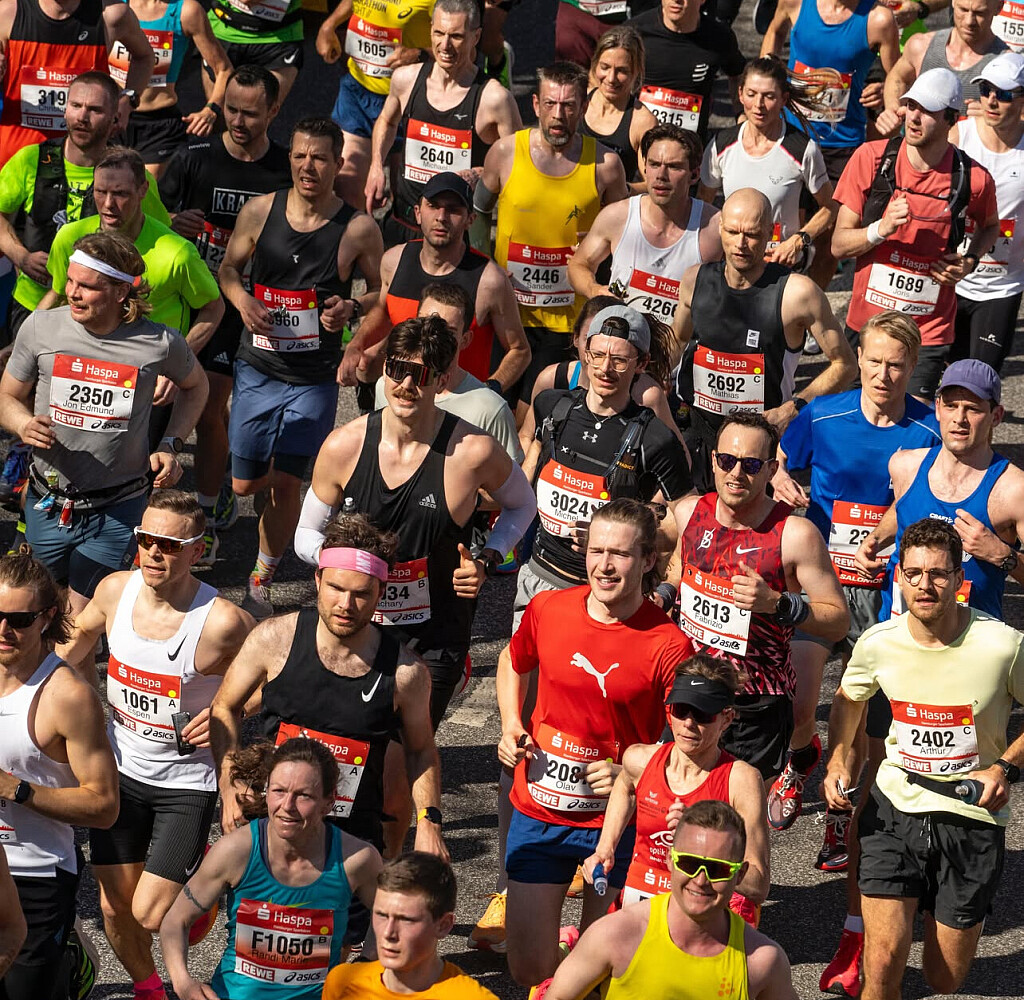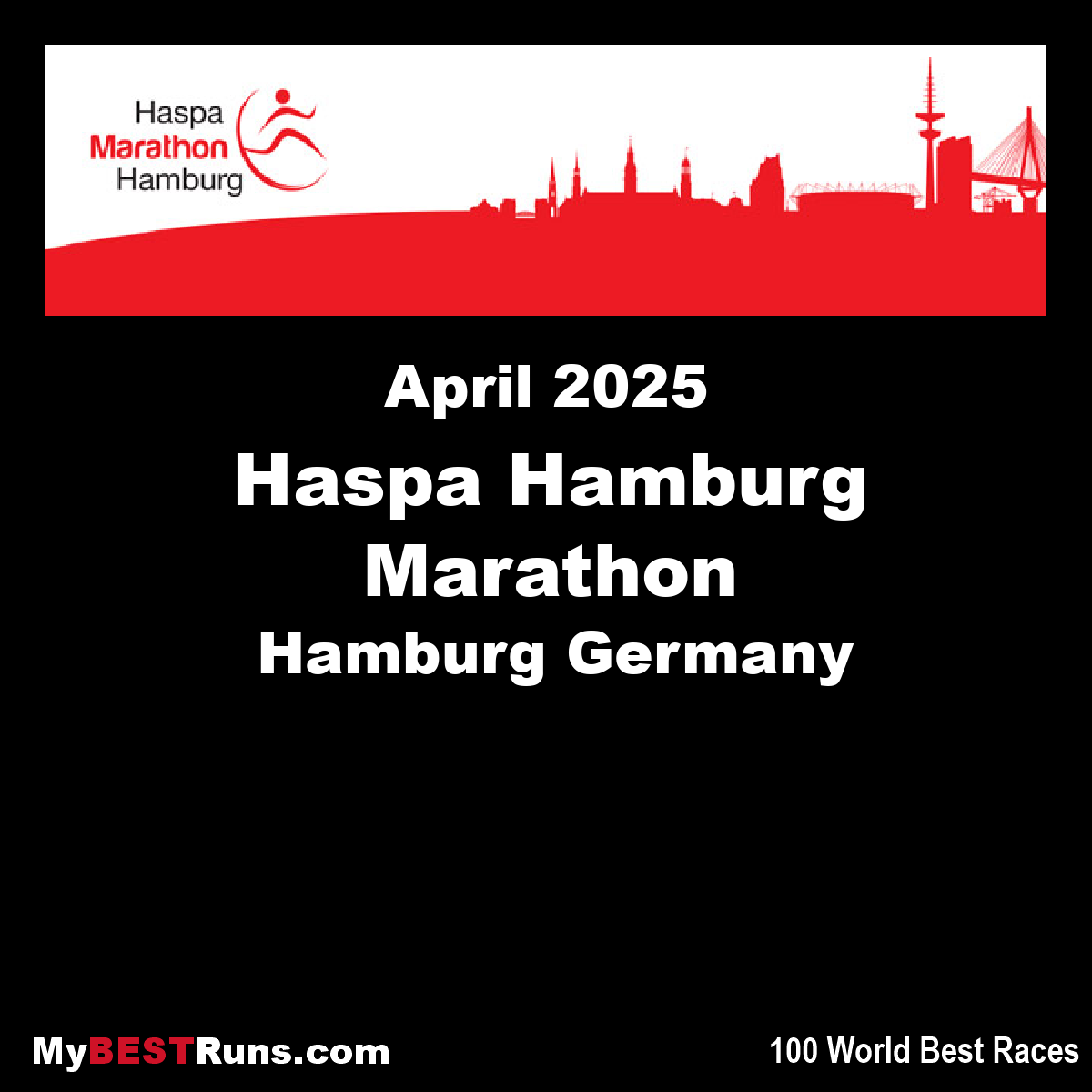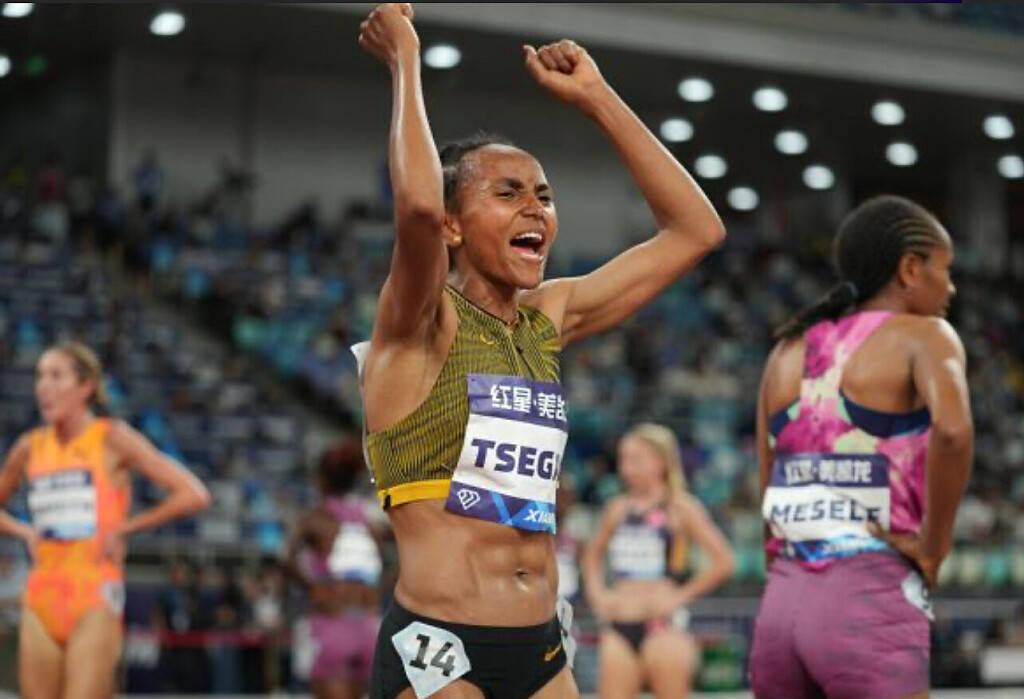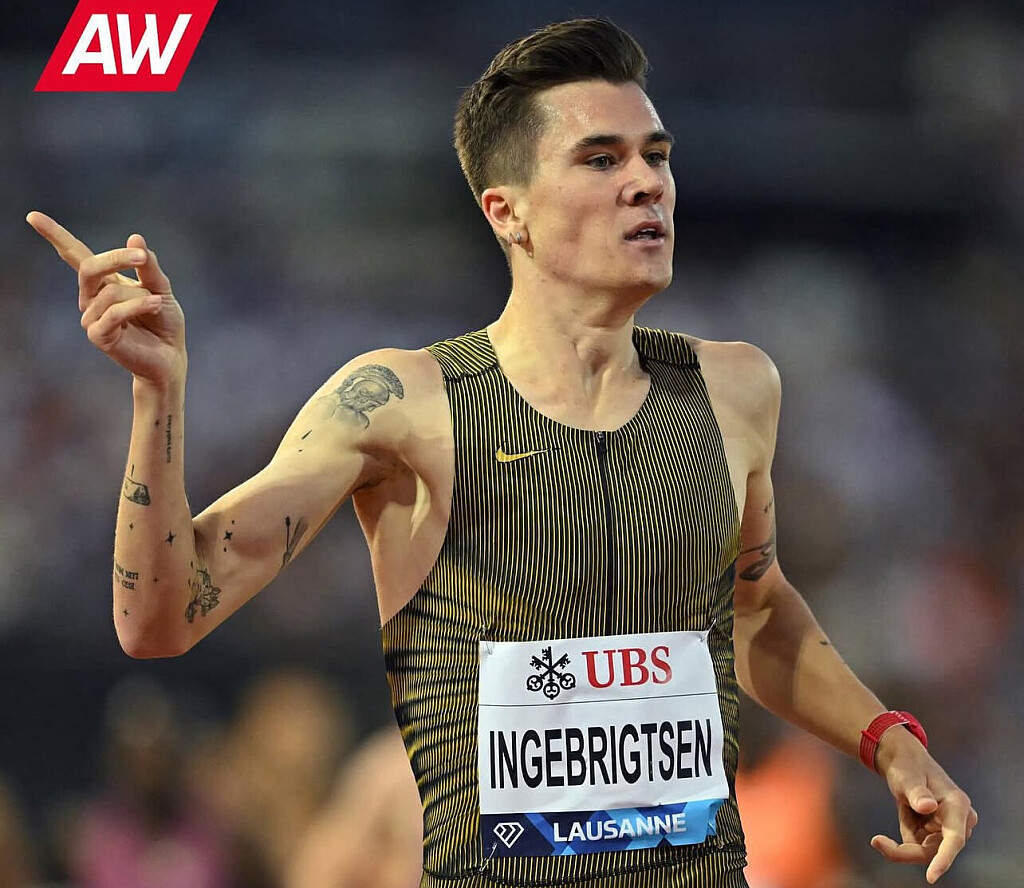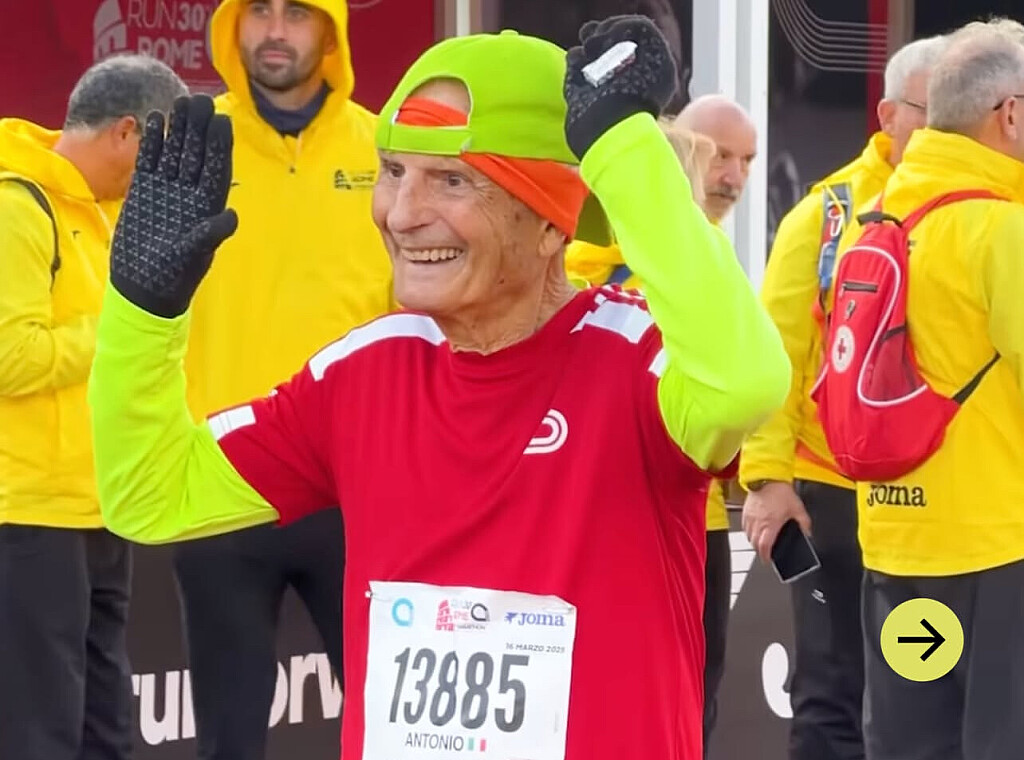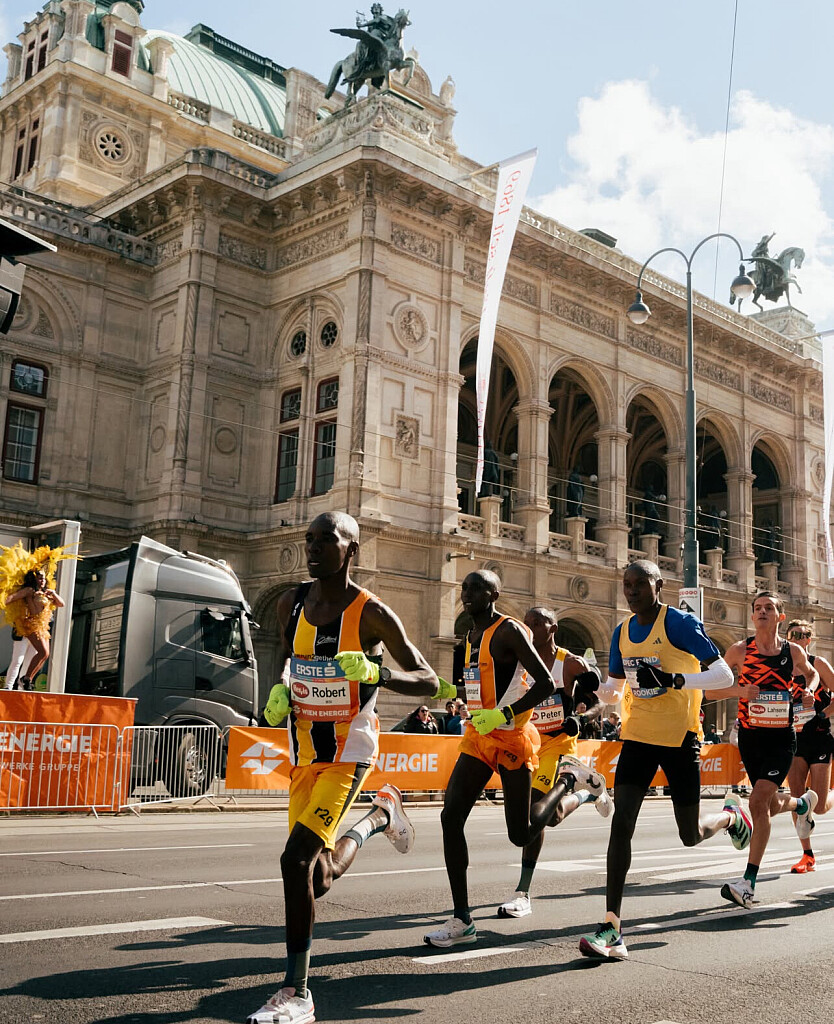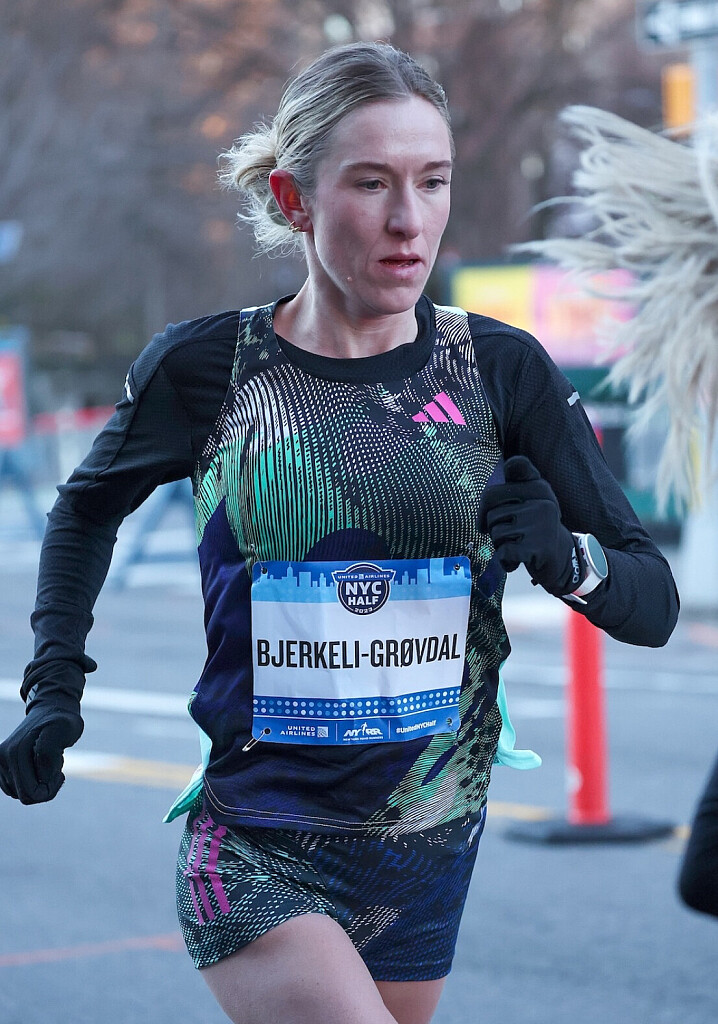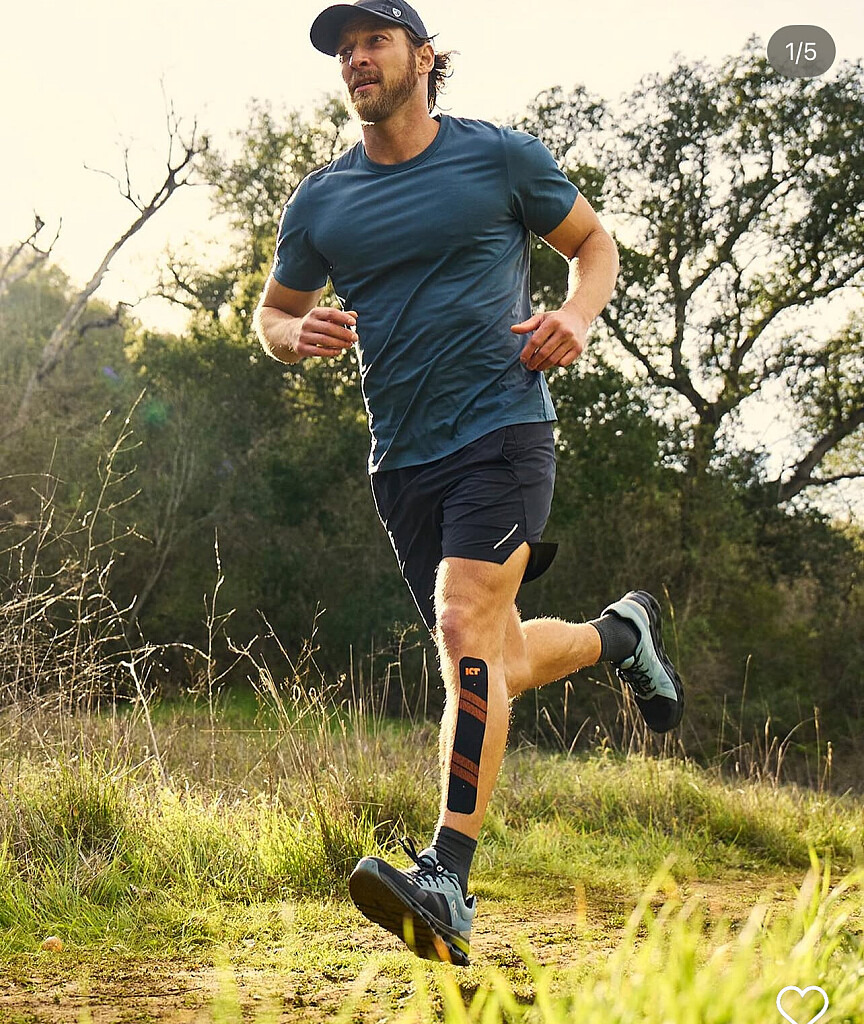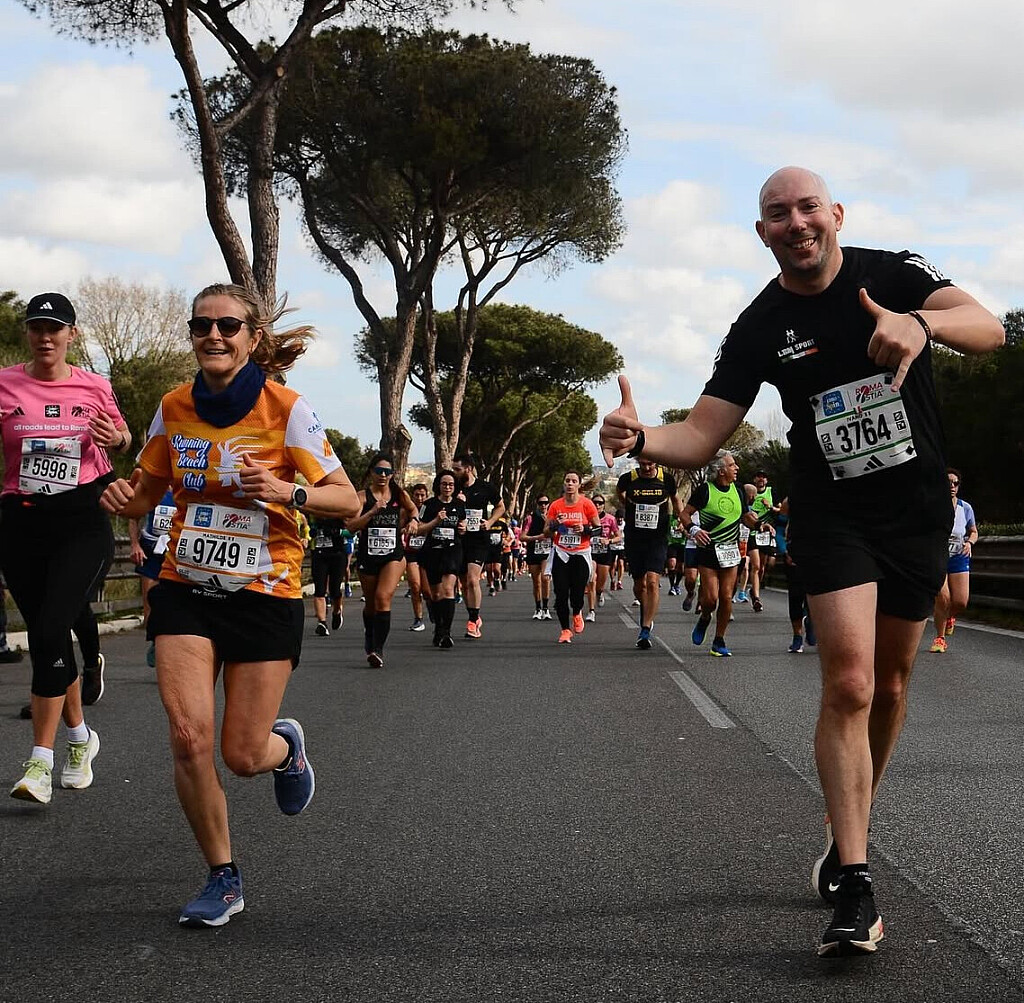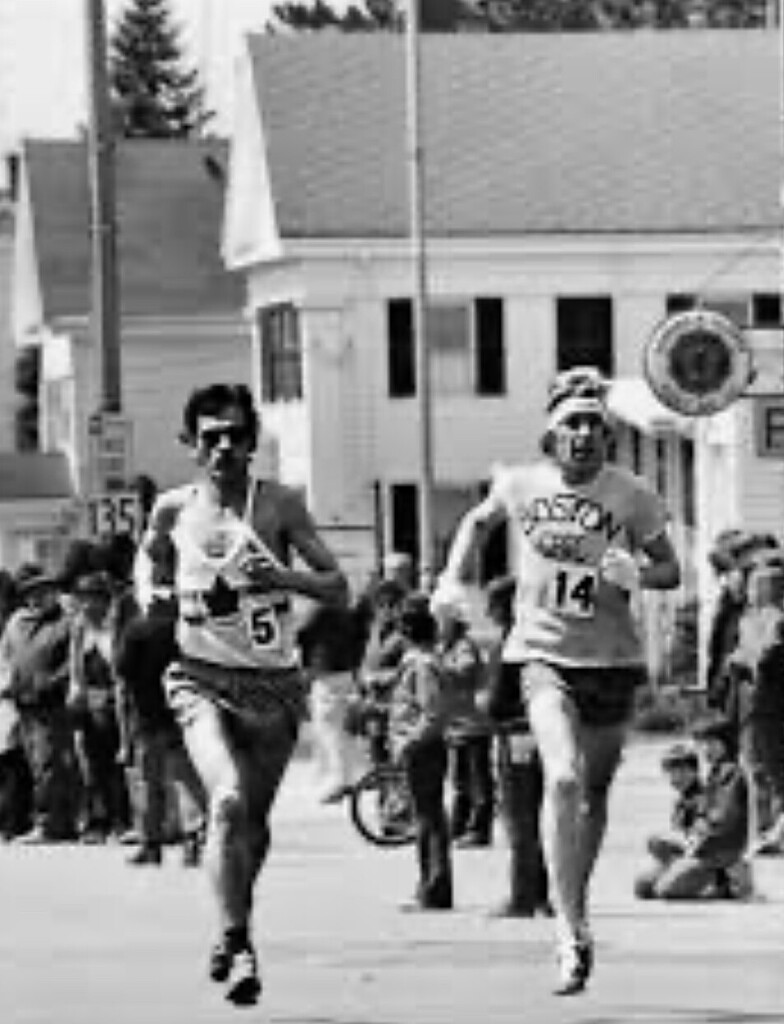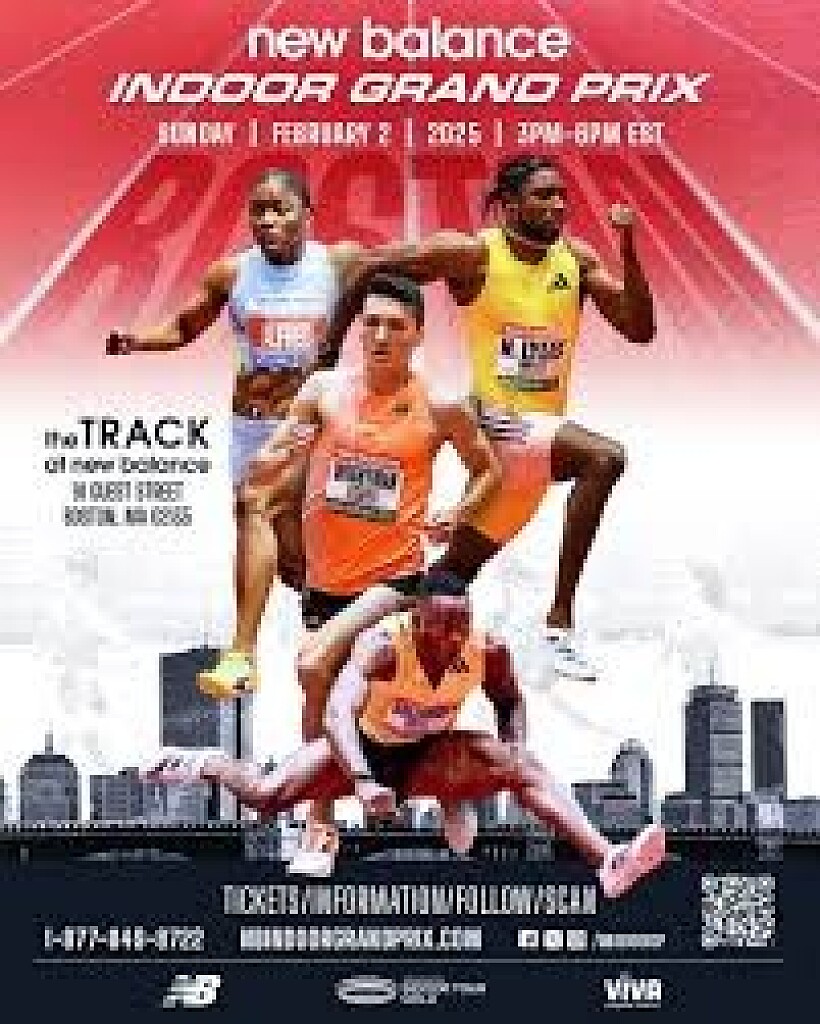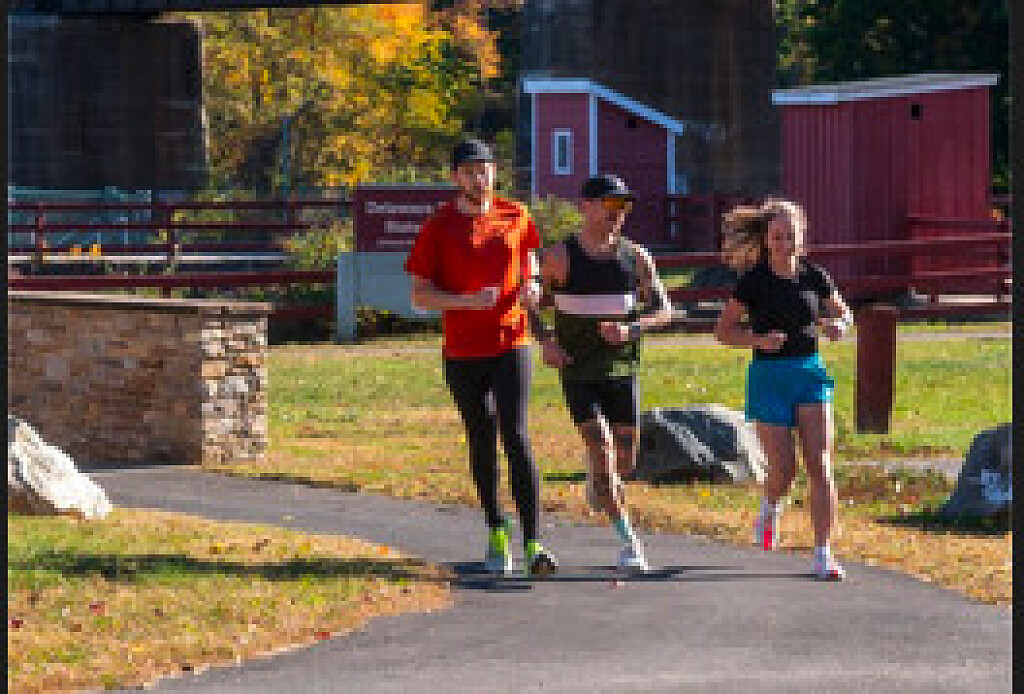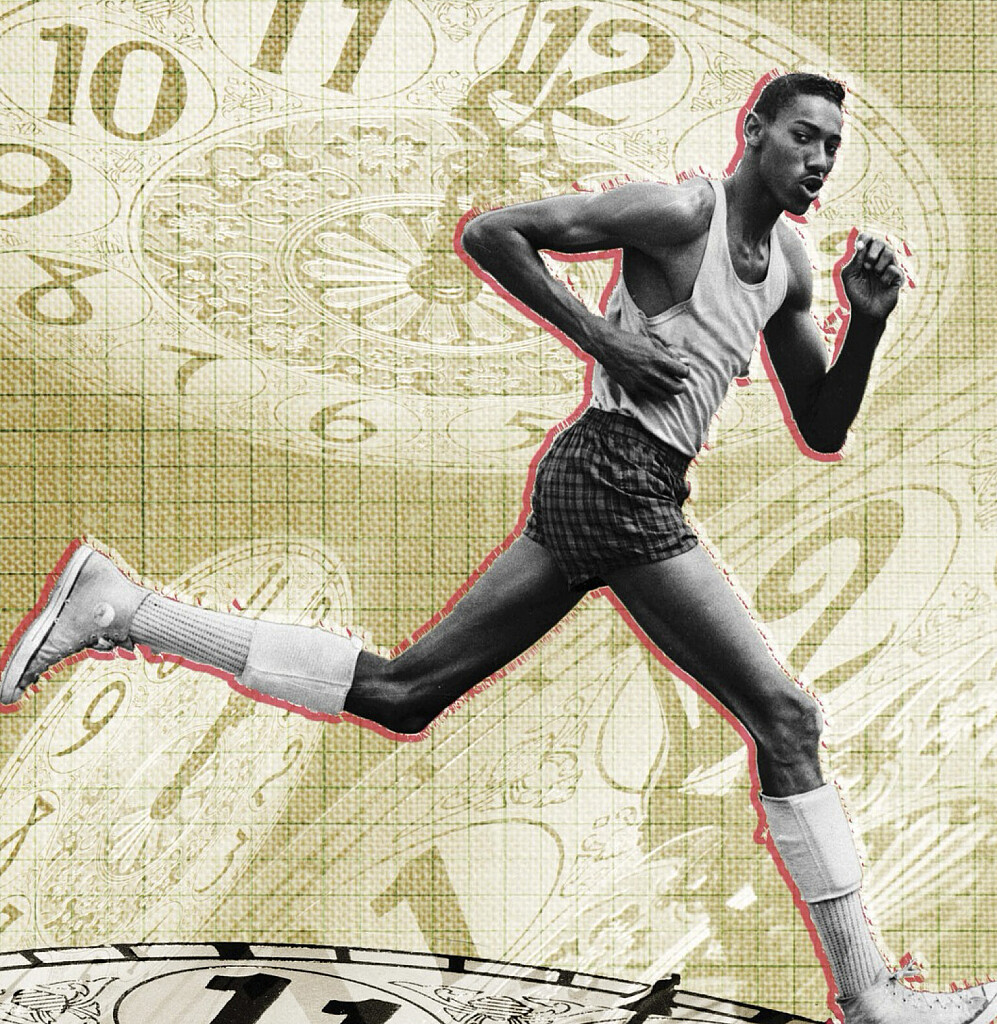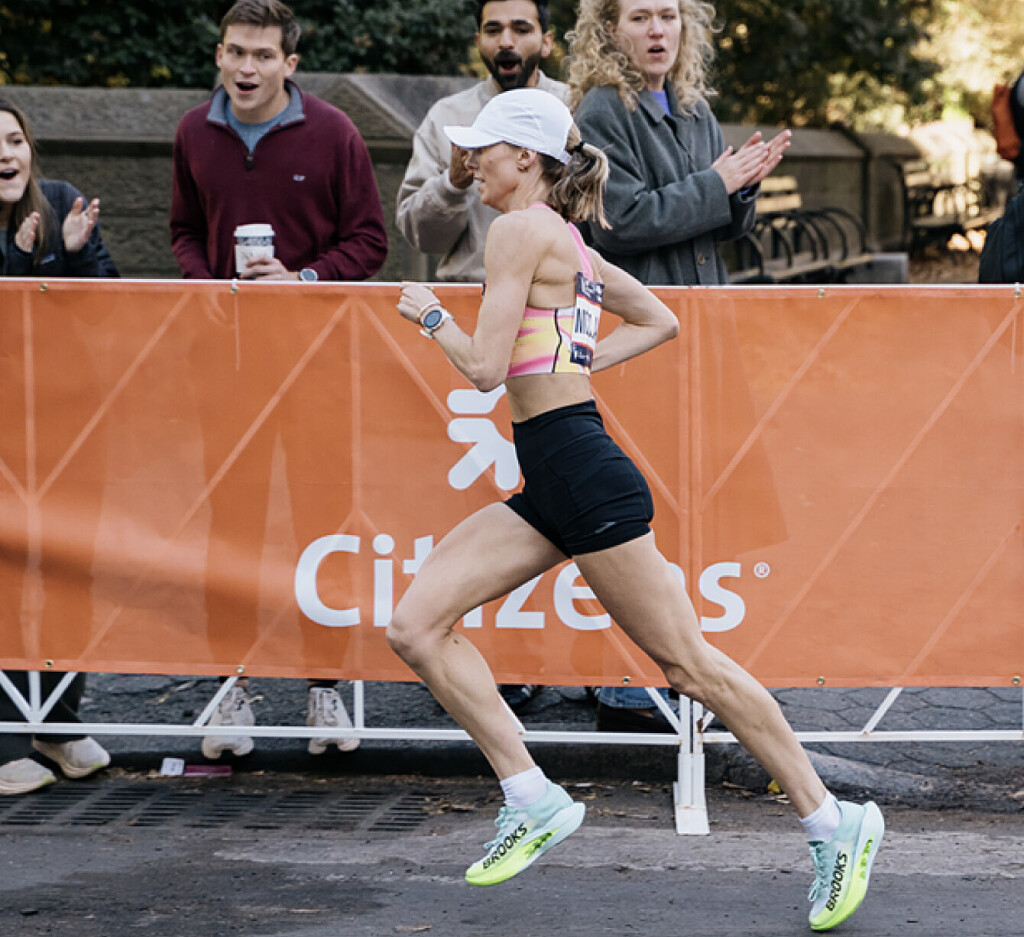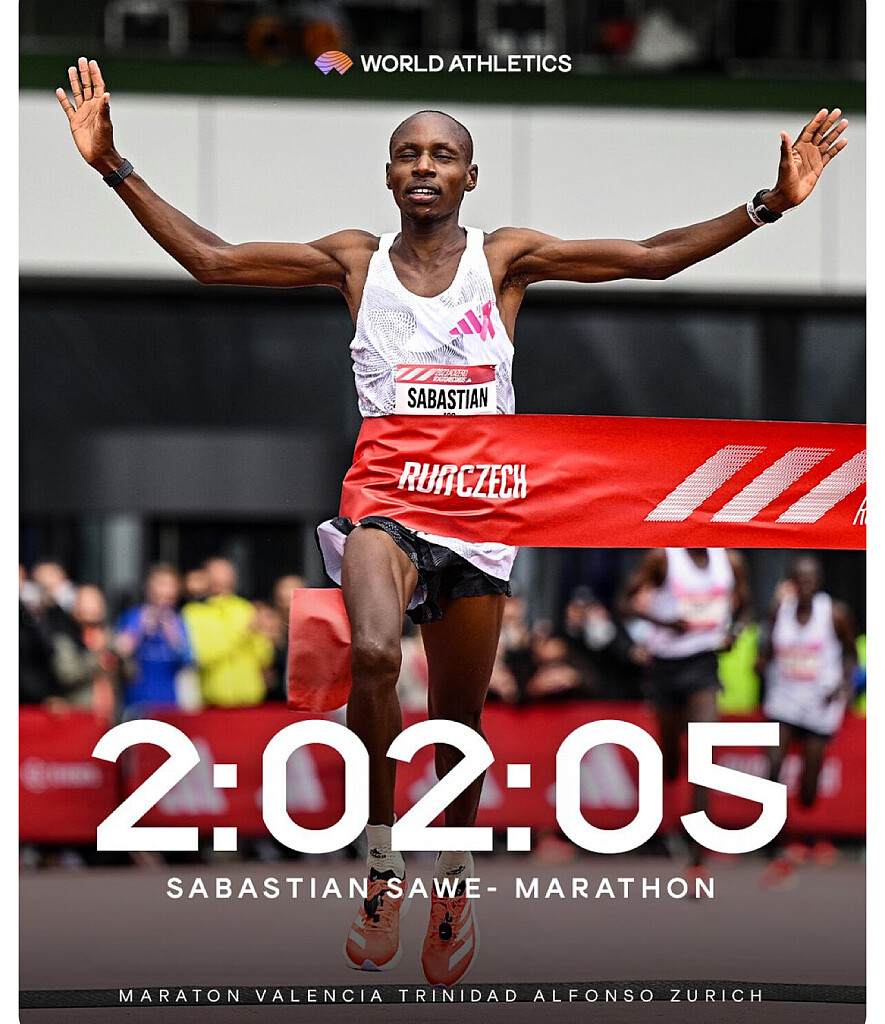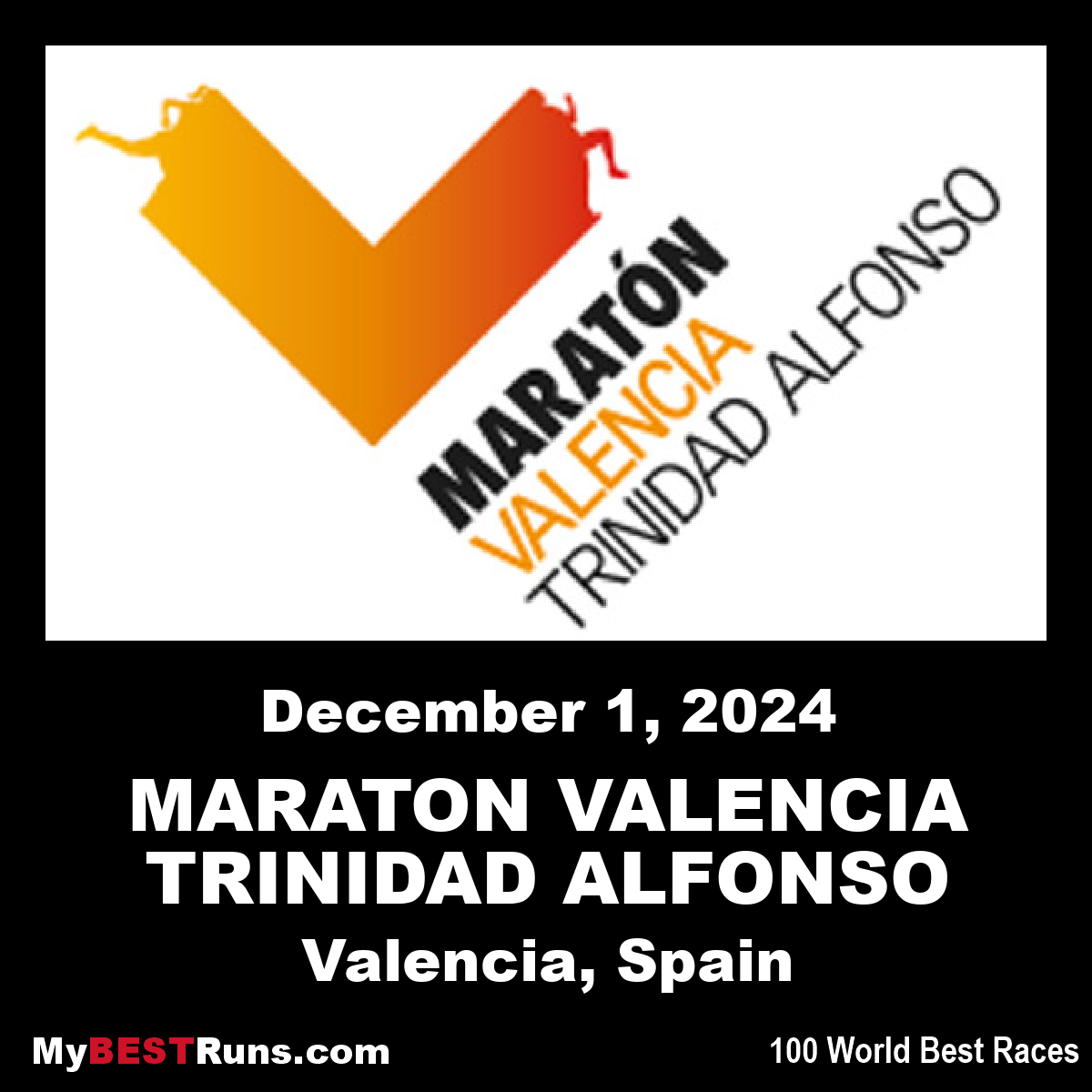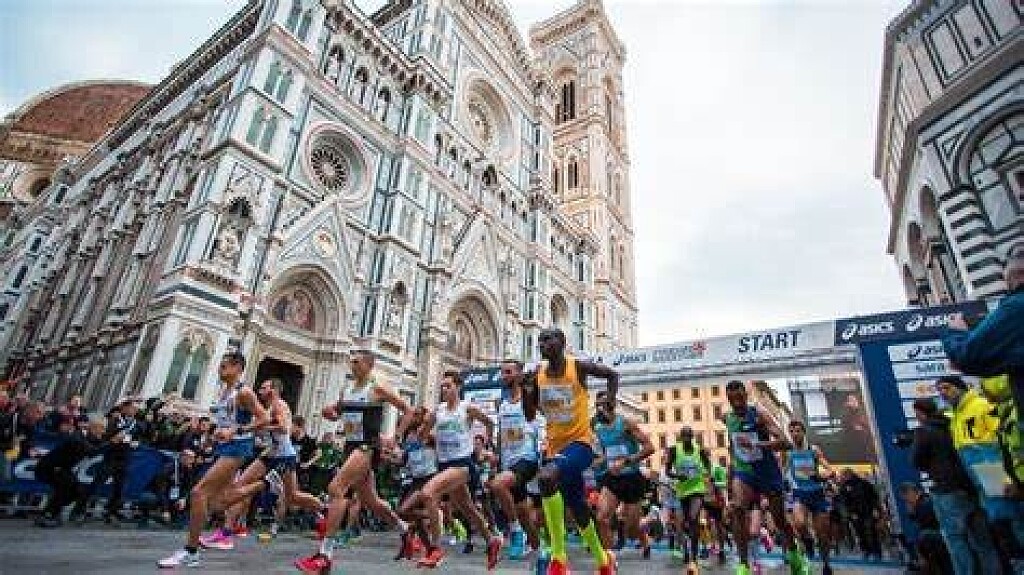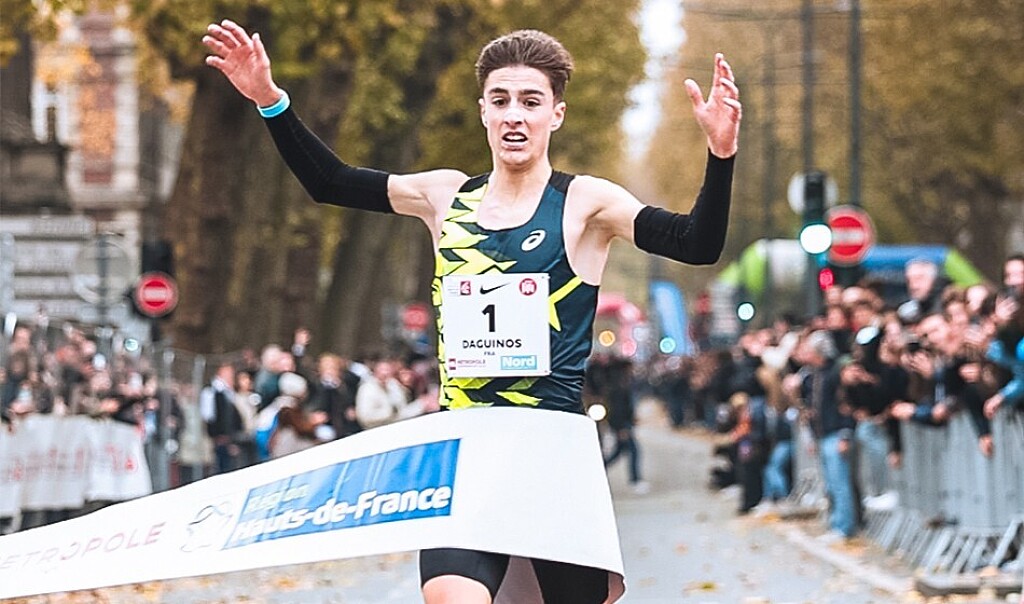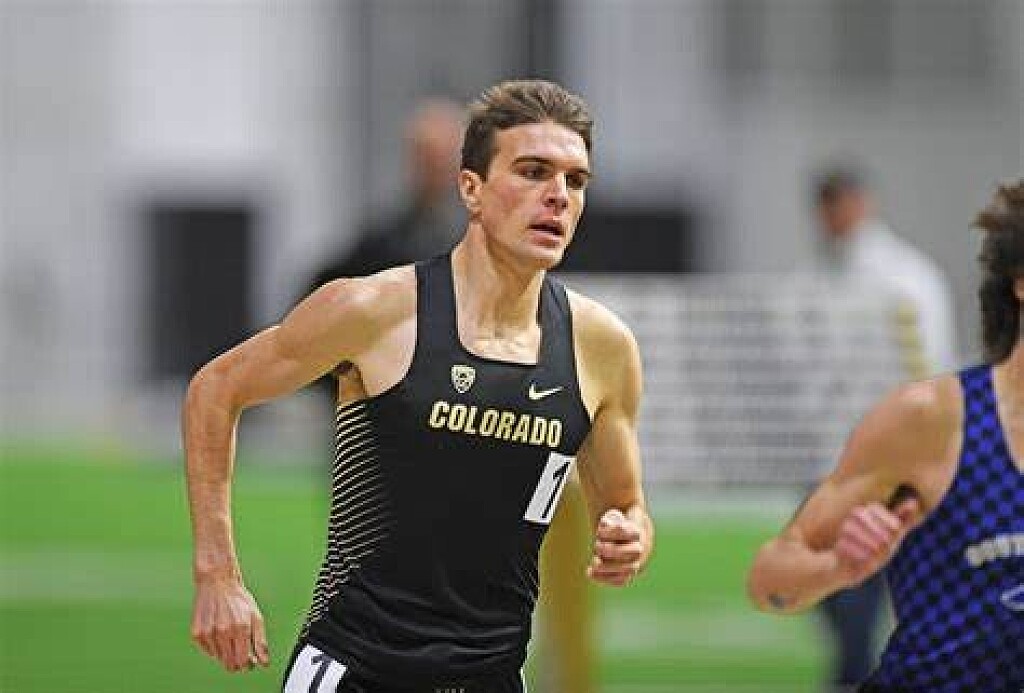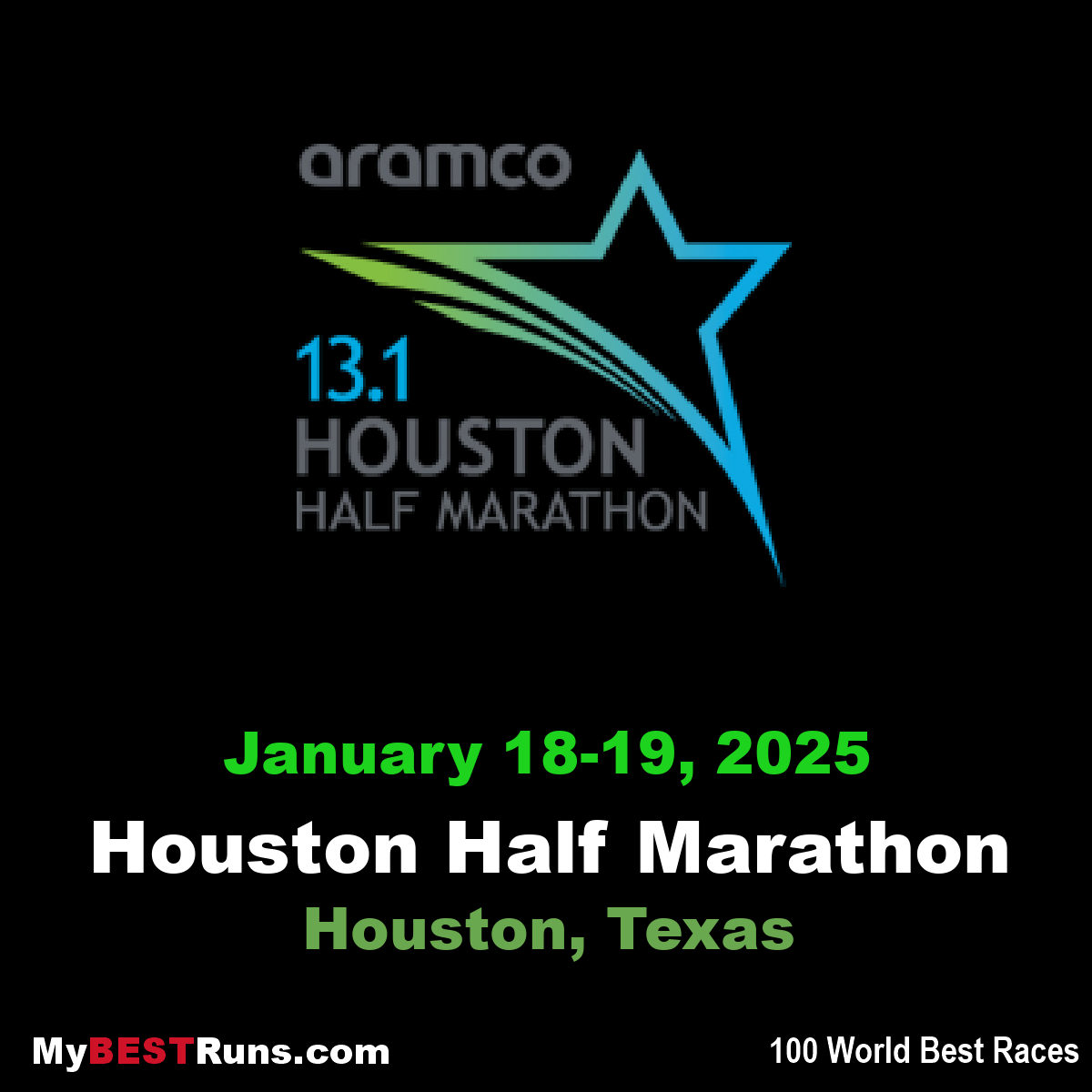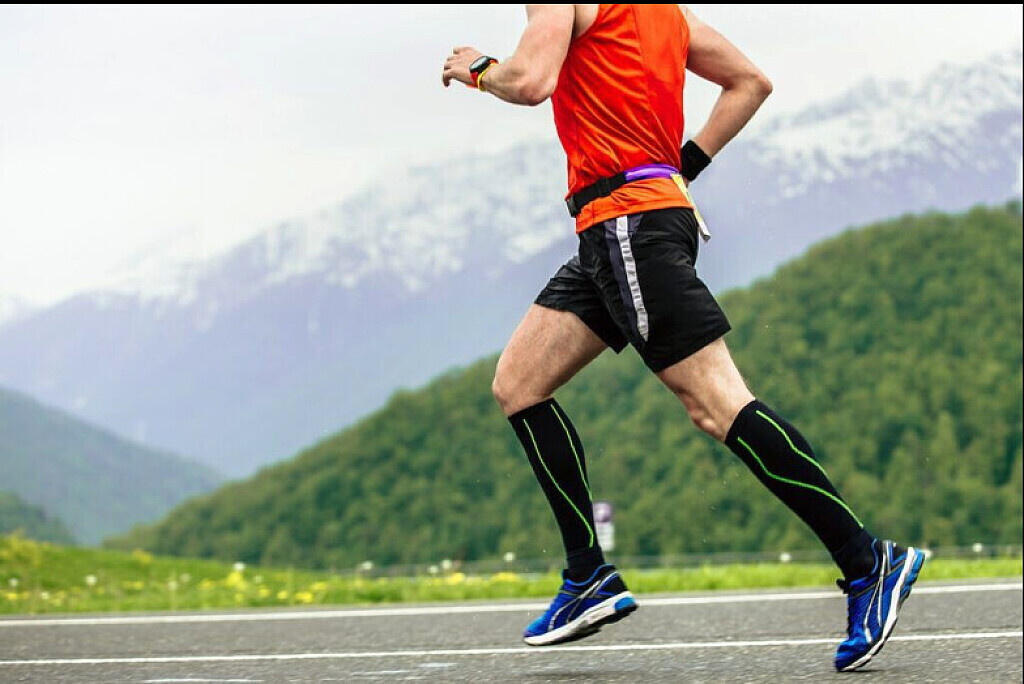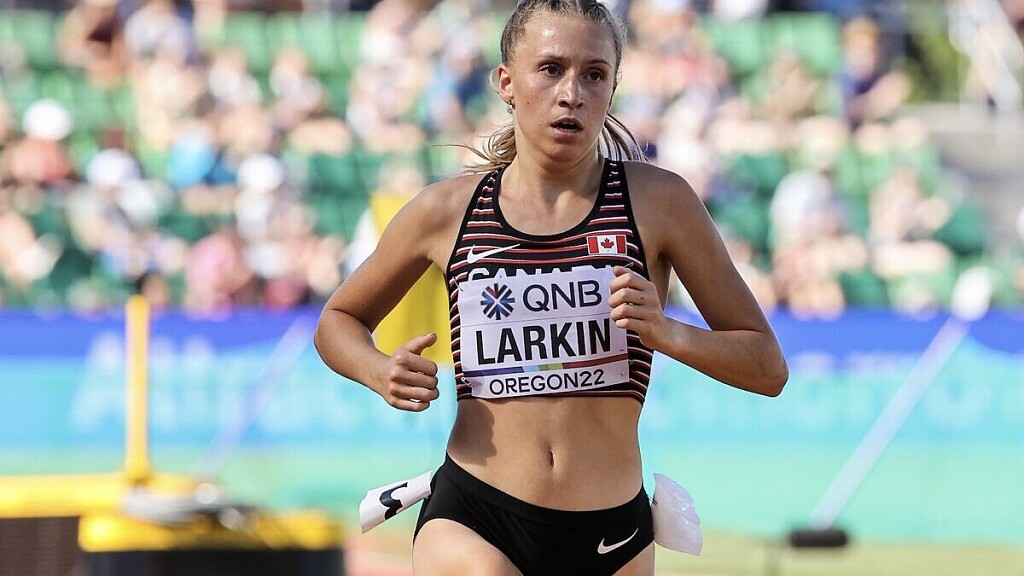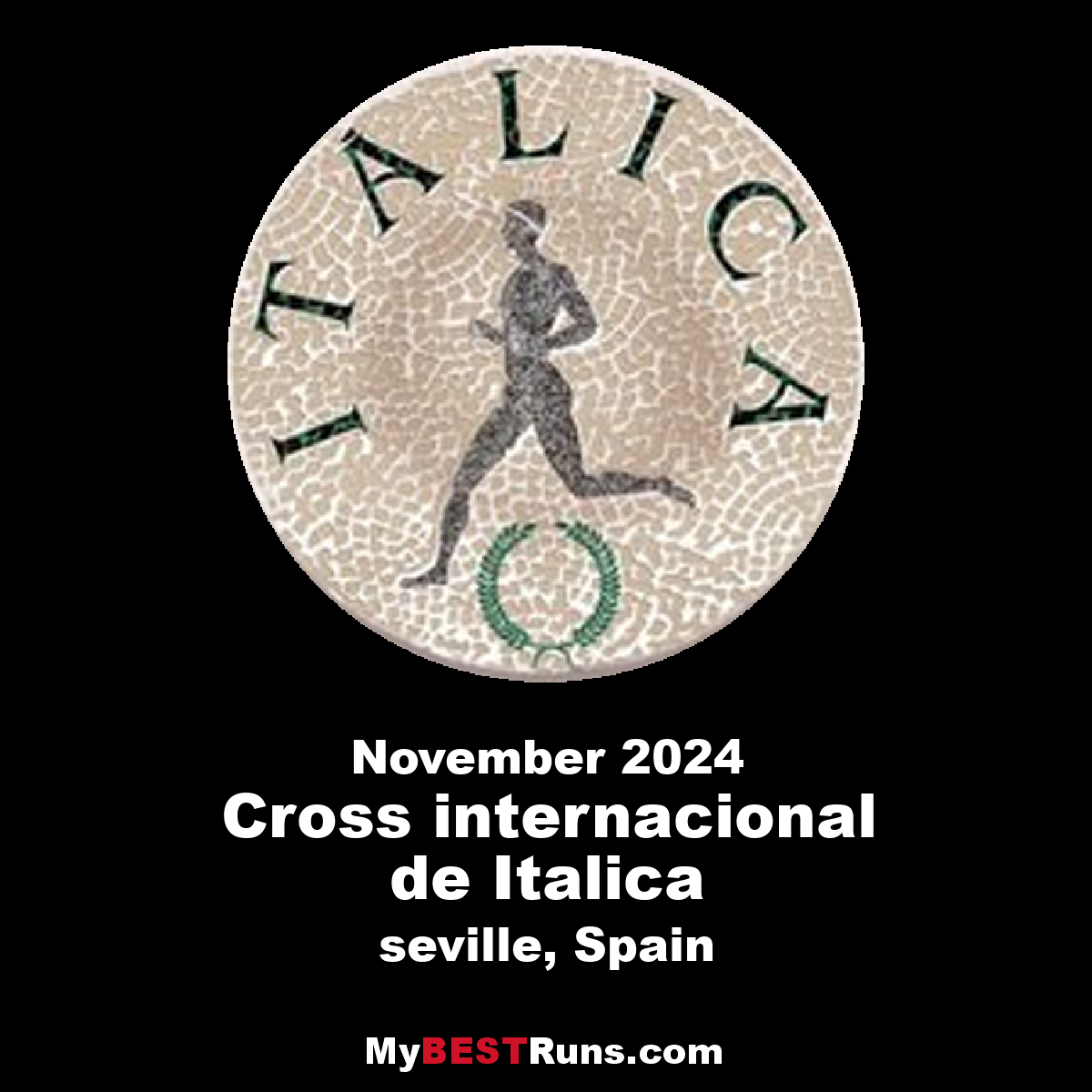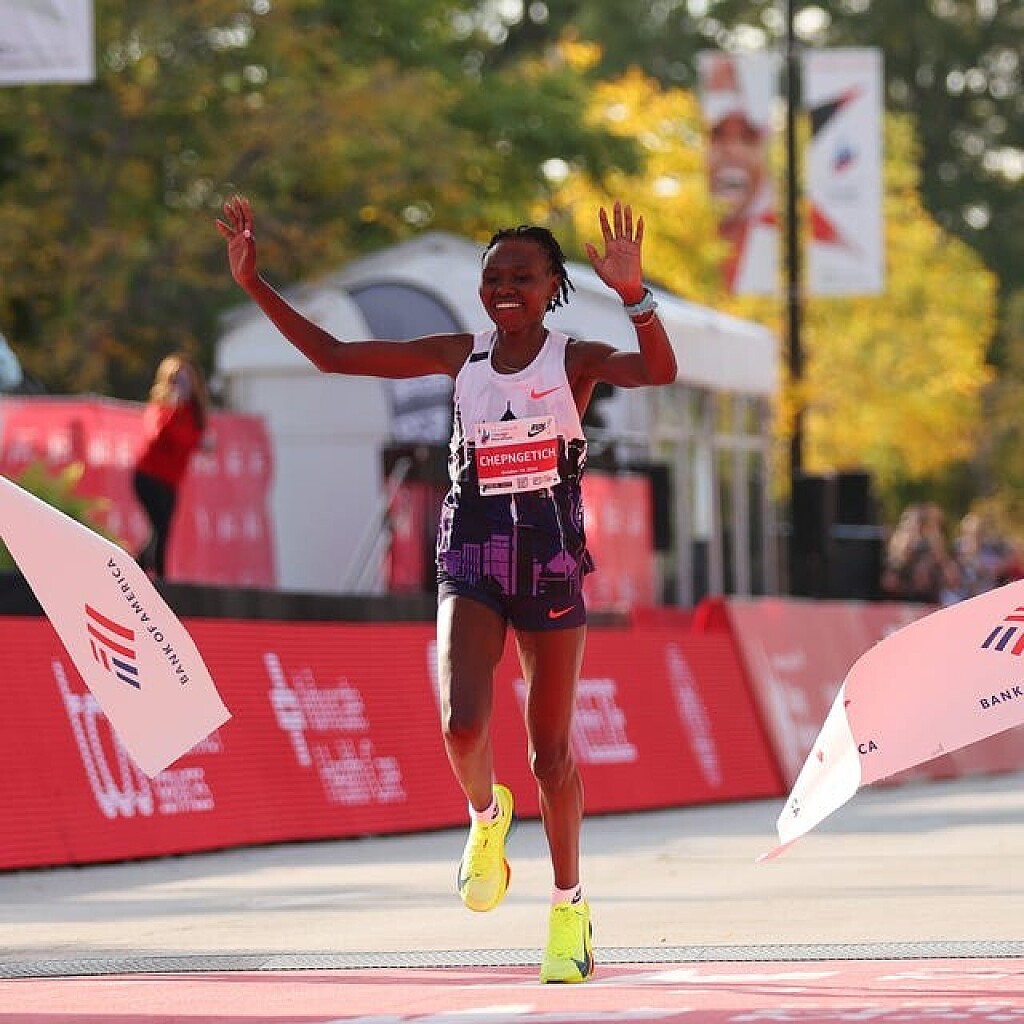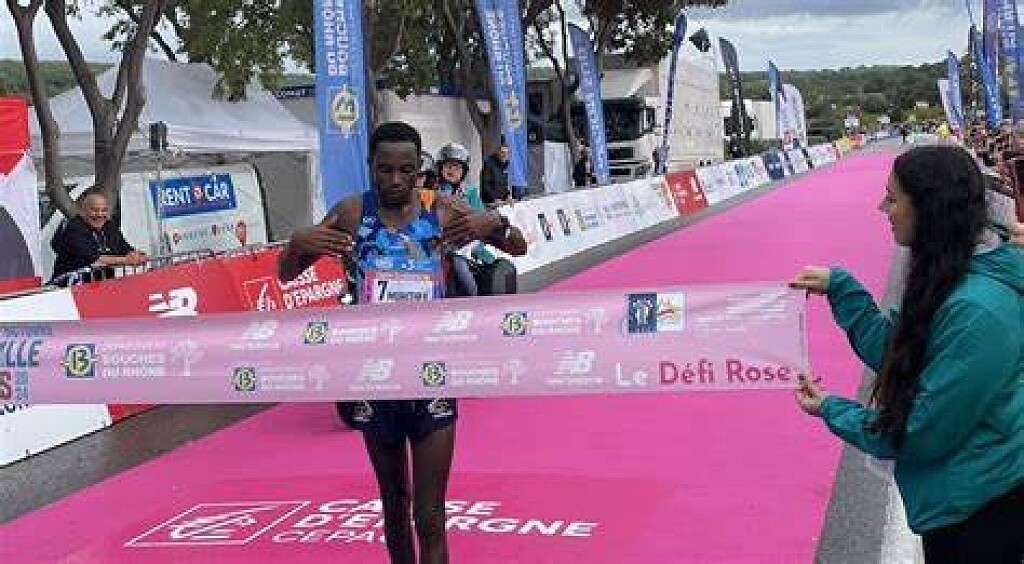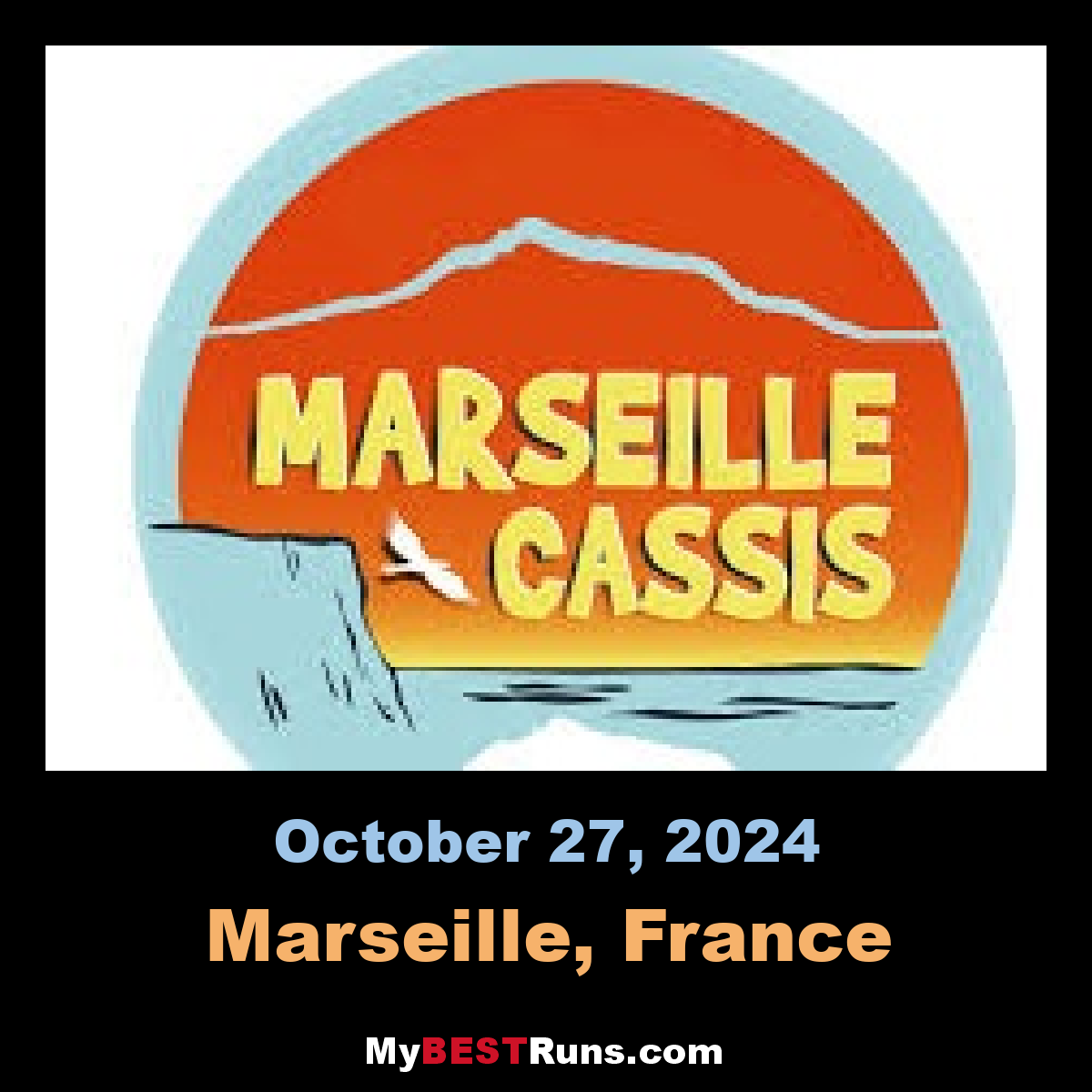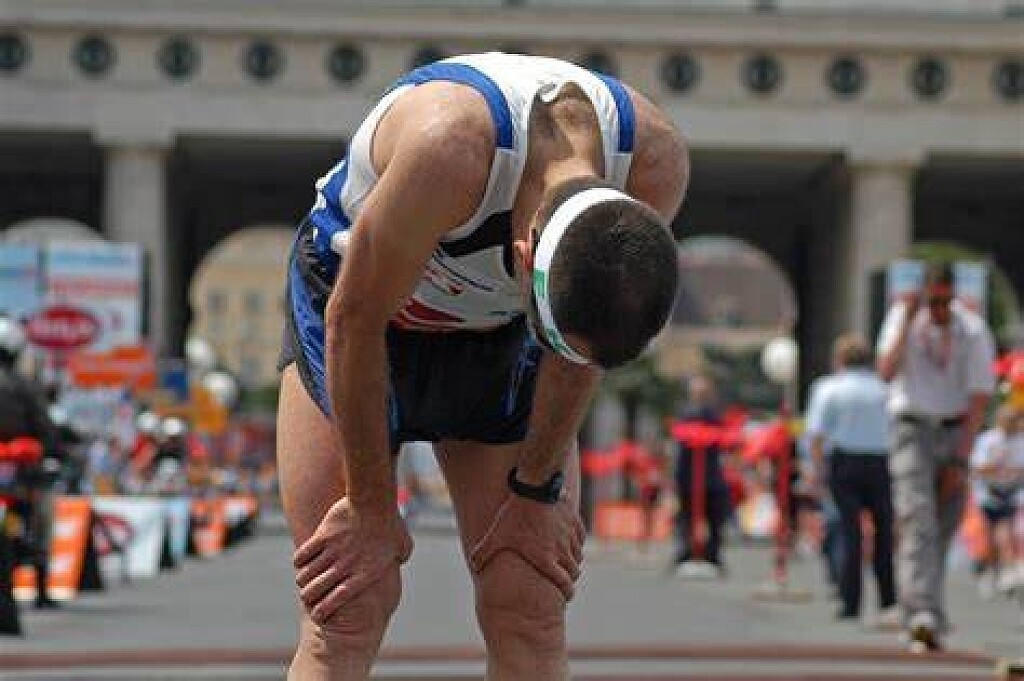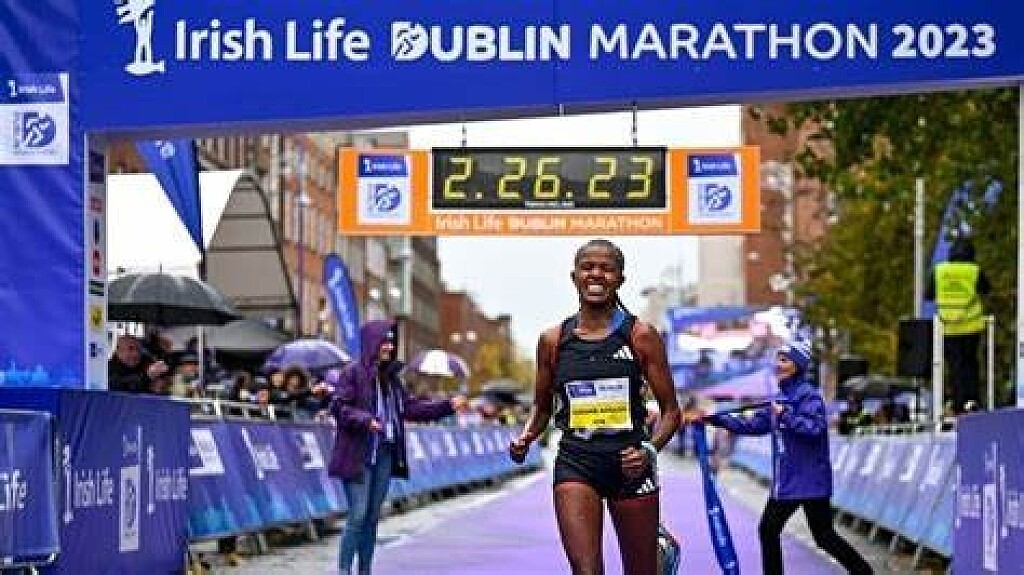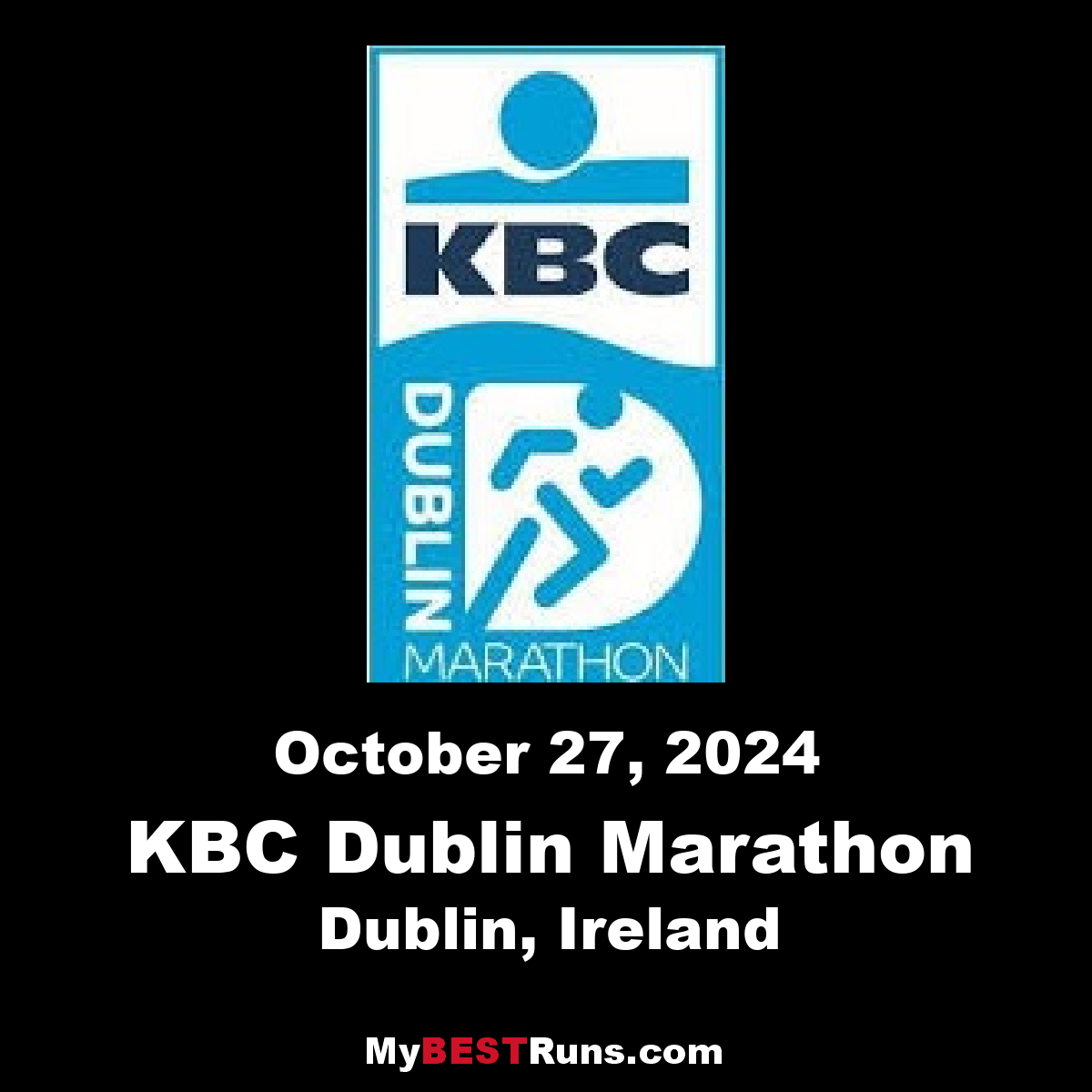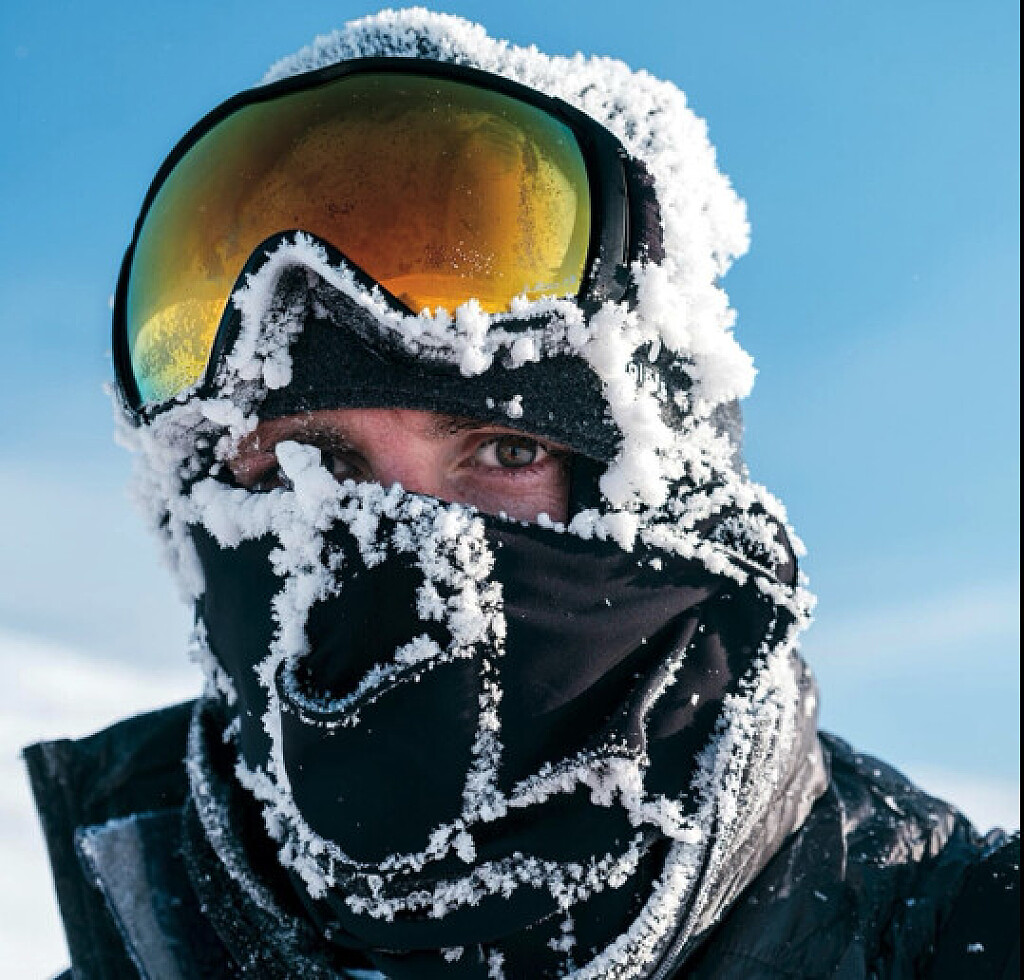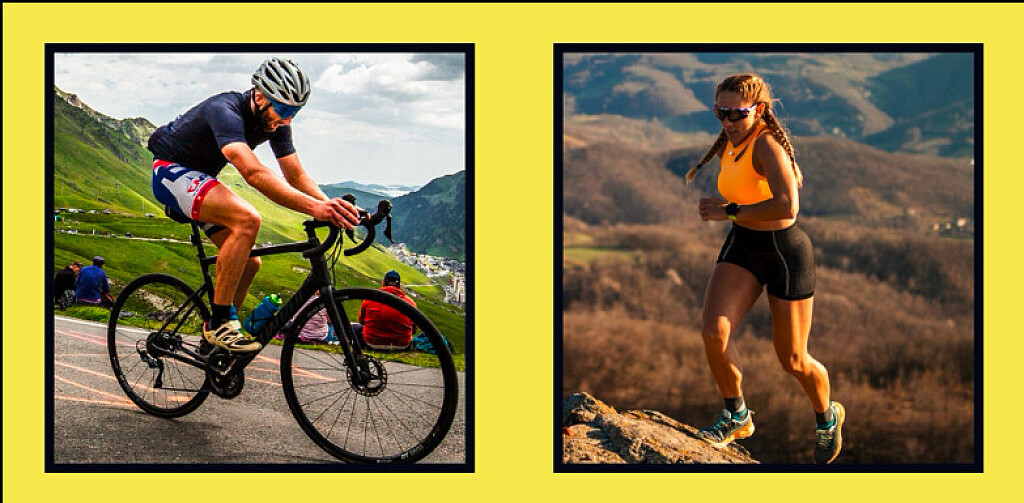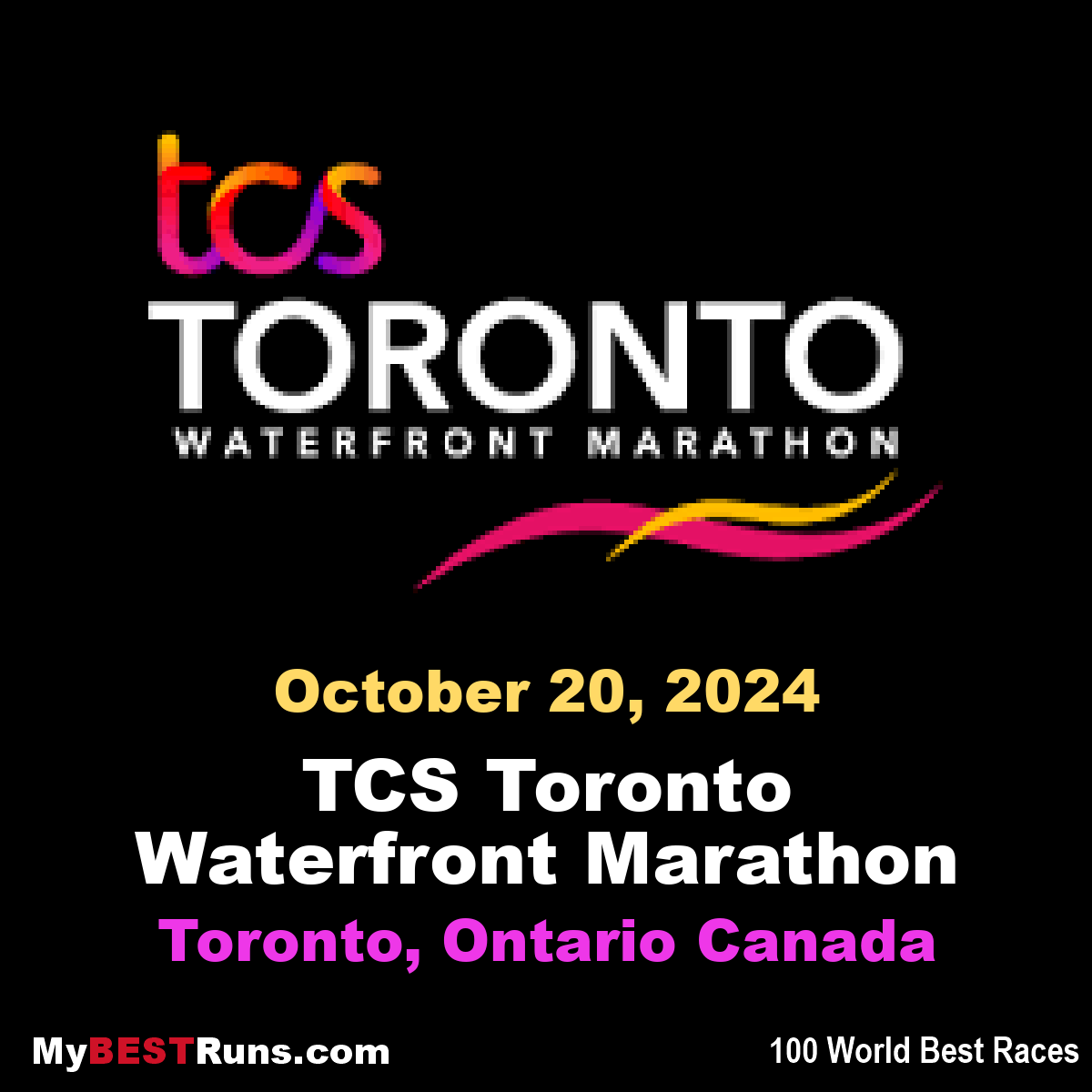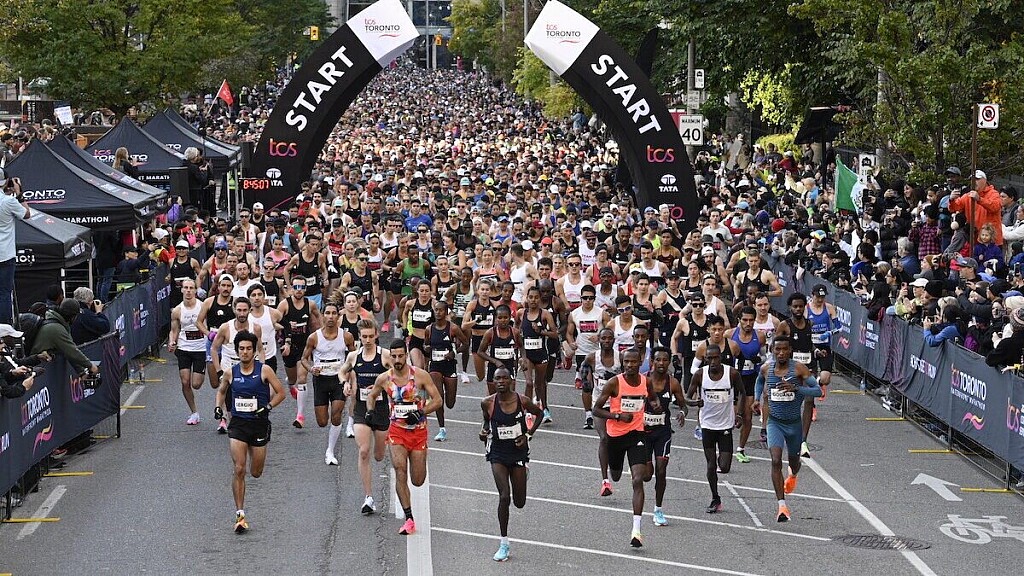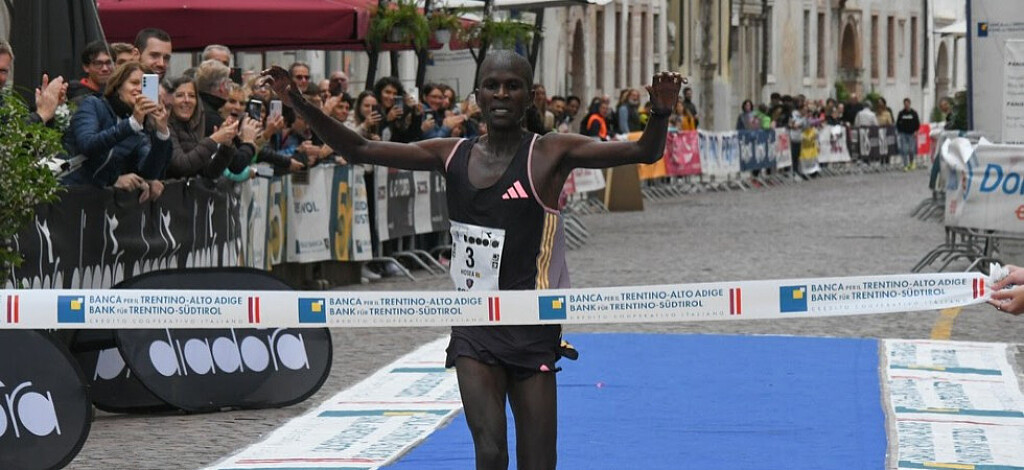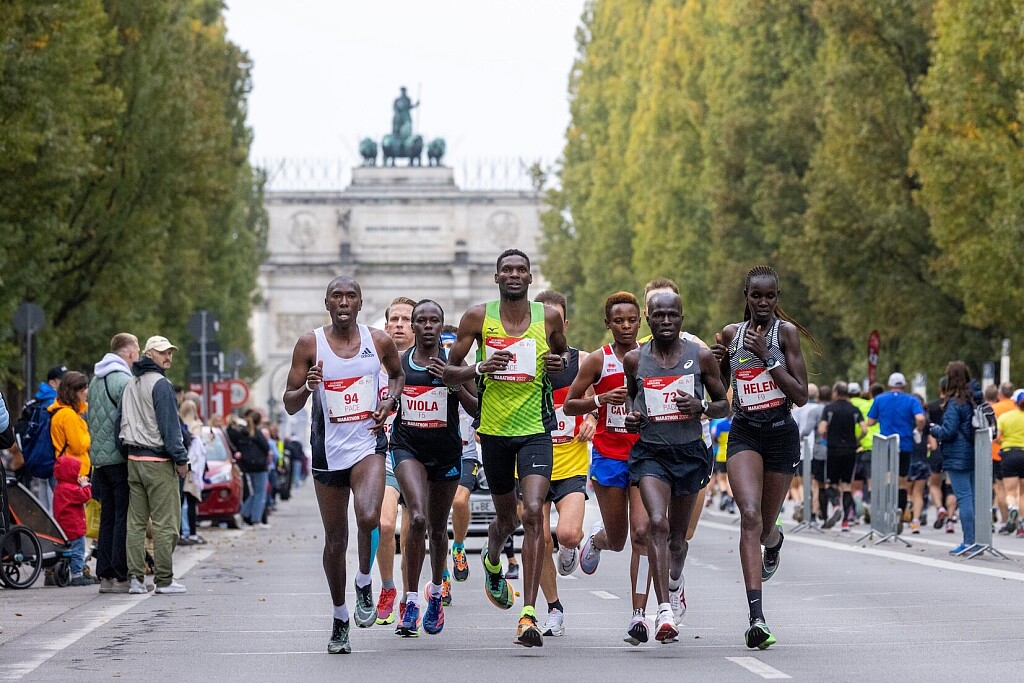Running News Daily
Running News Daily is edited by Bob Anderson. Send your news items to bob@mybestruns.com Advertising opportunities available. Train the Kenyan Way at KATA Kenya and Portugal owned and operated by Bob Anderson. Be sure to catch our movie A Long Run the movie KATA Running Camps and KATA Potato Farms - 31 now open in Kenya! https://kata.ke/
Index to Daily Posts · Sign Up For Updates · Run The World Feed
Articles tagged #Rome
Today's Running News
Golden Gate Double 8K Showcases Speed and Scenery in San Francisco
Golden Gate Double 8K Showcases Speed and Scenery in San Francisco
August 3, 2025 – San Francisco, CA

Over 400 runners gathered in San Francisco on a stunning summer morning to compete in the Golden Gate Double 8K, along with an Open 10K and 5K. With the iconic Golden Gate Bridge visible throughout the entire course, runners were treated to not only fast racing but also unforgettable views.
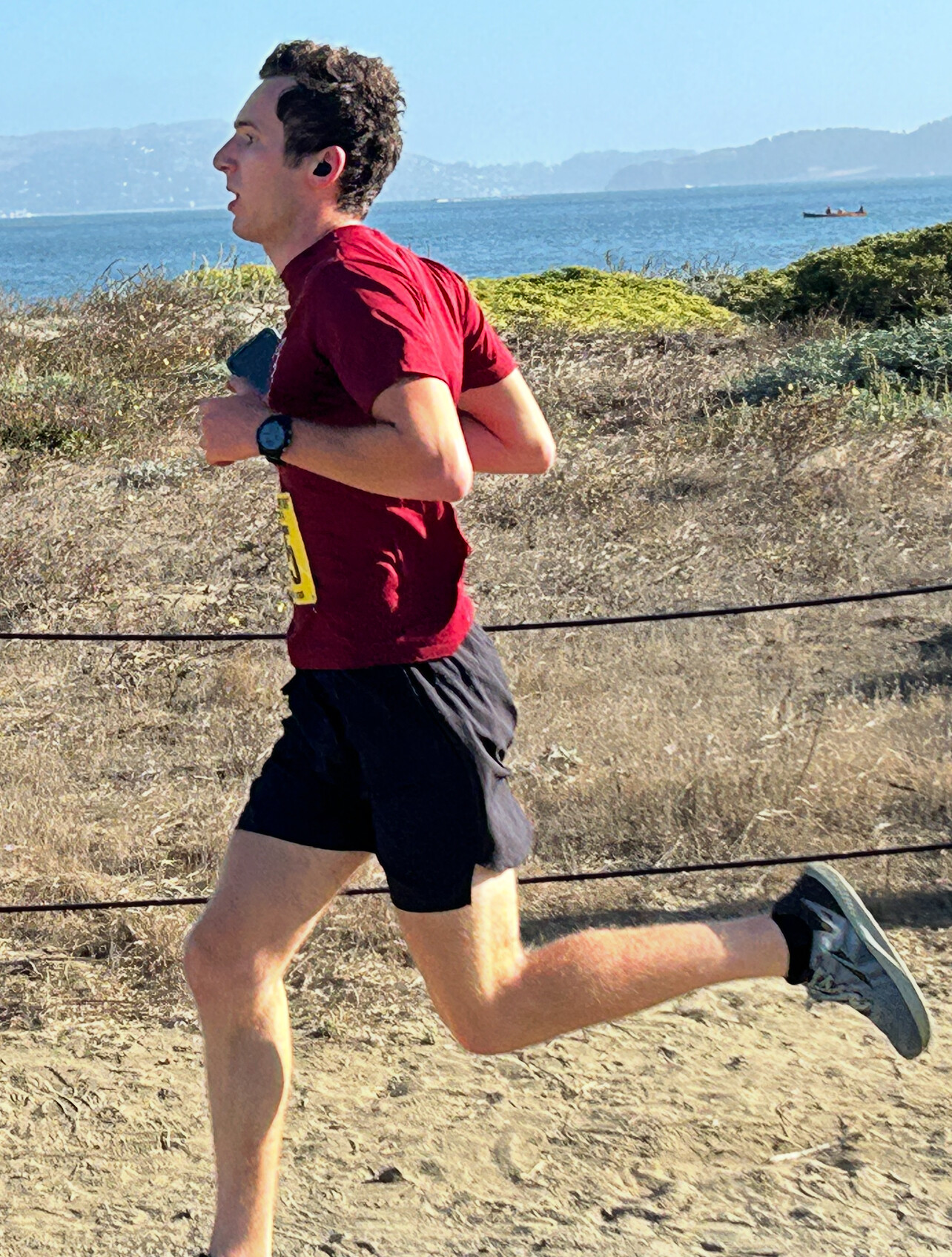
The highlight of the day was the Double 8K (5K + Break + 3K) event. Anthony Cortes, 31, of the 30–39 age group, claimed a commanding victory with a combined time of 26:56. Cortes blazed through the 5K in 17:07, then returned after the recovery break to cover the 3K in 9:49, holding off all challengers.
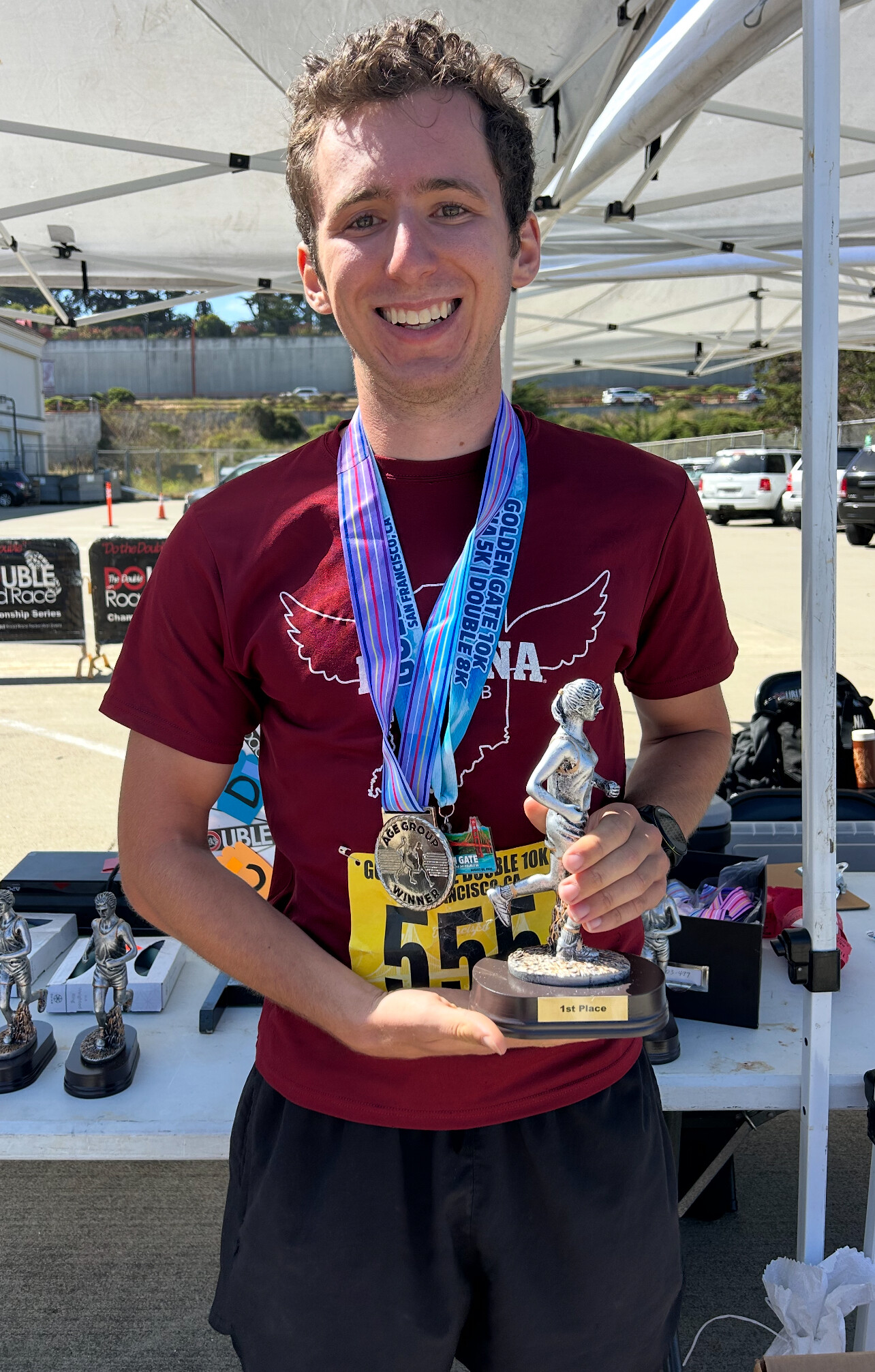
Behind him, a competitive men’s field included Colin Kennedy and Charles Hudson, both 47, who finished second and third with times of 34:08 and 34:56, respectively. Among the top women, Betty G, 58, ran a strong combined time of 40:30, followed closely by Cordelia McGee-Tubb (40:54) and Ruben Romero (42:23).

Open 10K Results
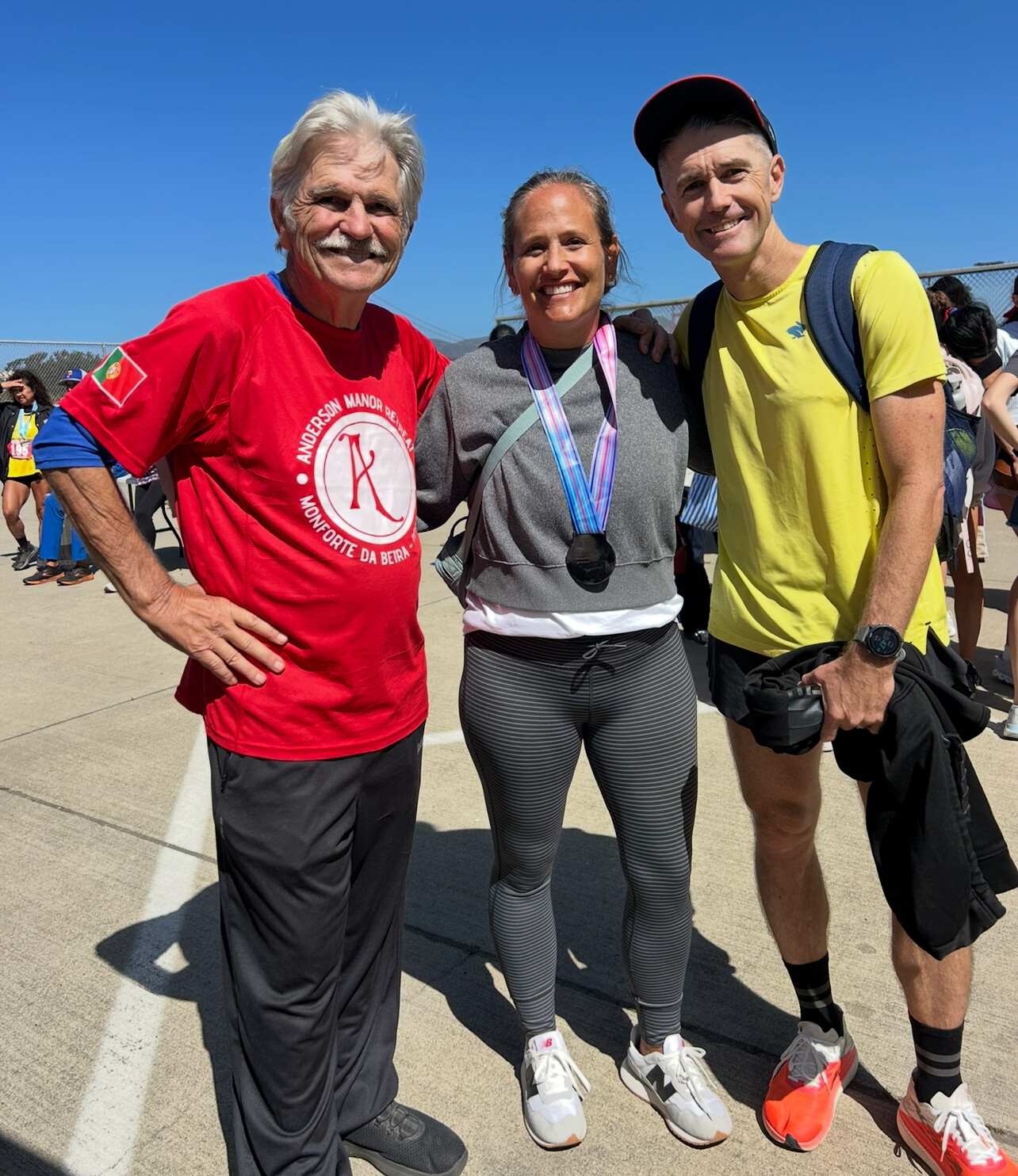
In the Open 10K, 22-year-old Noah Sauer led the charge with a time of 38:57, followed by Mark Speets (41:17) and Cole Ryan (41:49). The top five men all broke the 45-minute mark, with performances from runners in both the 20–29 and 50–59 age groups.
Open 5K Highlights
The Open 5K was equally exciting. Barrett Wade, 49, won in 18:31, just holding off 15-year-old Taylor Synnott, who finished only three seconds back in 18:34. Rounding out the podium was Kris Croome, 45, in 18:46. The youth field was especially deep, with impressive times from runners under 19, including Sofia Kiyama (21:48), Kiki Boukas (21:57), and Amina Zegar (22:44).
A Day to Remember
With ideal weather and the Golden Gate Bridge in full view from start to finish, this year’s Golden Gate Double and Open Races offered the perfect blend of competitive racing and scenic beauty. Enthusiastic spectators lined the course, and the atmosphere was electric from the first gun to the final finisher.
by Boris Baron
Login to leave a comment
Golden Gate 10k/5k DOUBLE 8K
The Golden Gate courses offers unparalleled views of the Golden Gate Bridge for more than 80% of the way! The course will begin at historic Crissy Field near the Presidio of San Francisco. Runners will enjoy the gorgeous vistas of the Golden Gate National Recreation Area. We are offering three races: Golden Gate 10K and 5K (run/walk) and Golden Gate...
more...Sorato Shimizu Sprints Into History: 16-Year-Old Clocks 10.00s to Set World Age-16 Record
Japanese sprinting phenom Sorato Shimizu has etched his name into the history books with a jaw-dropping performance at the Japanese Inter-School Championships—blazing to a 10.00-secondfinish in the 100 meters. At just 16 years old, Shimizu now owns the fastest time ever recorded by a 16-year-old, breaking the previous world best of 10.09 held by Thailand’s Puripol Boonson.
The time, achieved with a legal wind assistance of +1.7 m/s, marks a stunning personal best for the young star and sets a new World Age-16 Record. The stadium erupted as Shimizu crossed the line and confirmed the time on the scoreboard, with fans and fellow athletes celebrating what could be the beginning of a generational sprinting career.

A Historic Milestone in Sprinting
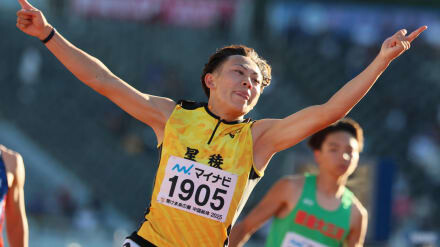
Running 10.00 seconds in the 100m is a feat few athletes achieve—even at the elite senior level. That a 16-year-old high school student has accomplished it underscores Shimizu’s immense talent and the growing strength of sprinting development in Japan.
Shimizu’s run wasn’t just about raw speed—it showcased poise, explosive acceleration, and flawless execution from start to finish. His reaction time, drive phase, and transition into top-end speed were that of a seasoned pro. It was a performance that stunned not only spectators in Japan but sprint fans across the globe.
Breaking Boonson’s Mark
Before Shimizu’s 10.00, the world age-16 best was 10.09, set by Thailand’s Puripol Boonson in 2022. Boonson has since gone on to become one of Asia’s fastest men—and Shimizu is now poised to follow a similar path, if not exceed it.
With this performance, Shimizu moves into a rarefied tier of sprinting prospects, joining a list that includes the likes of Trayvon Bromell, Erriyon Knighton, and Usain Bolt—who all produced world-class times as teenagers.
The New Face of Japanese Sprinting
Japan has long produced disciplined and technically sound sprinters, with athletes like Abdul Hakim Sani Brown, Yoshihide Kiryu, and Ryota Yamagata helping bring Japanese sprinting into the global spotlight. Sorato Shimizu now emerges as the new face of that legacy—and possibly, its next global champion.
With the Paris Olympics behind us and eyes already shifting to Los Angeles 2028, Shimizu’s name will surely be one to watch on the international scene.
What’s Next for Sorato Shimizu?
While this 10.00 clocking will take some time to fully digest, one thing is clear: Sorato Shimizu is just getting started. Still in high school, his future includes national championships, international junior meets, and, if his progression continues, a spot on Japan’s senior relay and individual sprint squads.
His breakthrough opens new possibilities for Japanese sprinting, showcasing that sub-10 is not a dream for the future—it’s a reality for the present.
Final Word
In an era where sprinting records are harder than ever to break, Sorato Shimizu just redefined what’s possible at age 16. His 10.00-second dash not only resets the record books—it ignites excitement for the future of global sprinting.
This isn’t just a time. It’s a statement.
Sorato Shimizu has arrived.
by Boris Baron
Login to leave a comment
Jamaica Takes Over the 100m in 2025 — But Don’t Count Team USA Out Just Yet
Jamaica is back—and in a big way. With just weeks until the World Athletics Championships Tokyo 2025, the top three times in the men’s 100 meters all belong to Jamaican sprinters:
Kishane Thompson – 9.75

Bryan Levell – 9.82
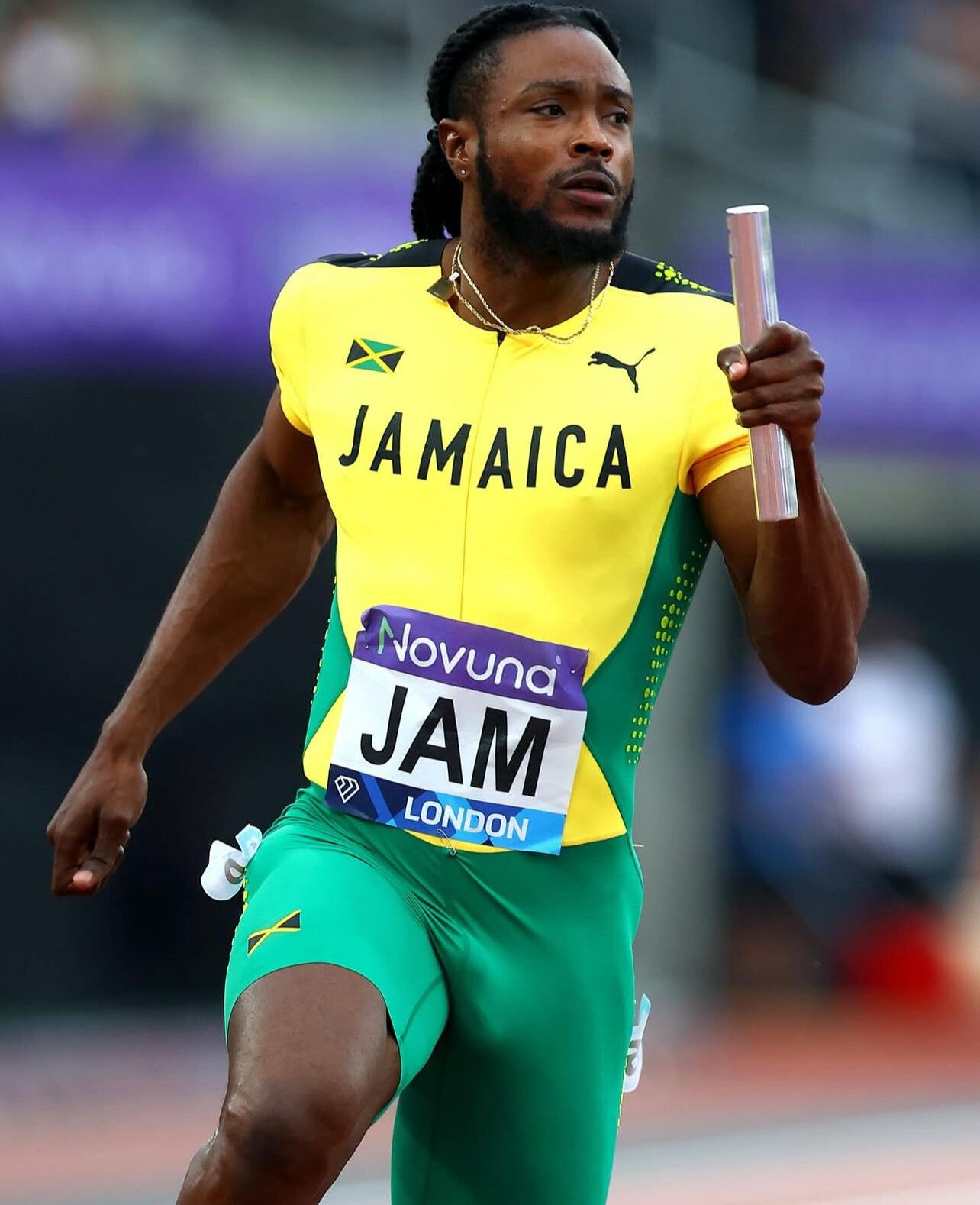
Oblique Seville – 9.83
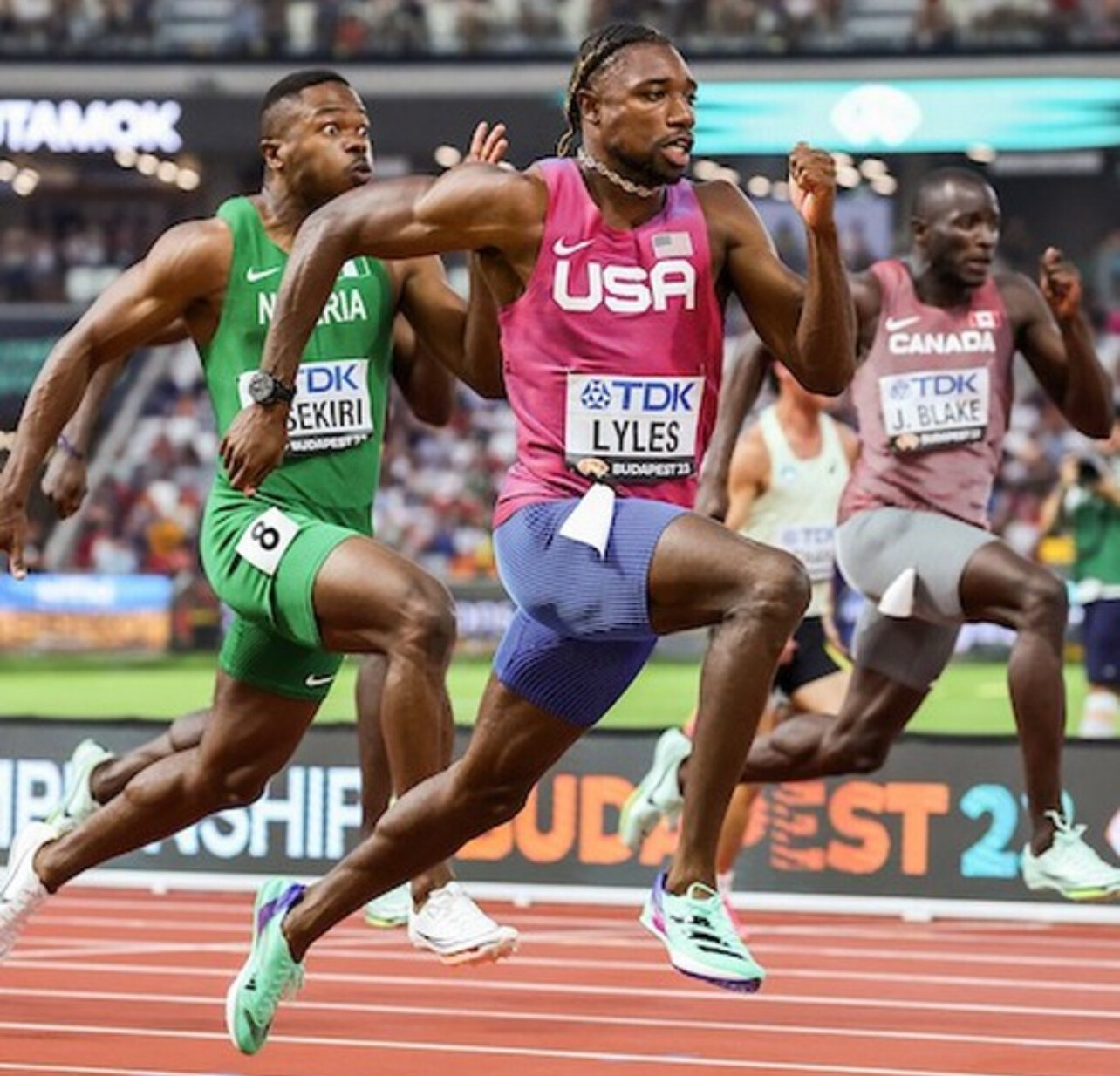
It’s a stunning sweep that echoes the glory days of Usain Bolt, Asafa Powell, and Yohan Blake. Once again, Jamaica is asserting sprinting dominance on the global stage.
But the Americans aren’t backing down.
The U.S. Response
Christian Coleman, the 2019 World Champion and indoor world record holder, remains a serious contender. While he hasn’t cracked the 9.80 mark this season, his raw speed and big-meet experience can’t be ignored.
Then there’s Noah Lyles, the reigning 100m world champion from 2023. Lyles opened 2025 focused more on the 200m and Olympic buildup, but he’s expected to peak at the right time. He holds a personal best of 9.83, and if he gets the start right, he can be deadly in the final 30 meters.
Fred Kerley and Trayvon Bromell are also in the mix, both capable of sub-9.90 performances when healthy and locked in. Their challenge now is to stay consistent as the season progresses.
The Rivalry is Back
Tokyo 2025 could deliver one of the most thrilling 100-meter finals in recent memory:
• Three Jamaicans in peak form.
• Four Americans with world-class credentials.
• African stars like Omanyala and Tebogo chasing their first world title.
It’s a global showdown that brings back the tension and electricity of the Bolt-Gatlin era—only this time, the Jamaicans aren’t chasing; they’re being chased.
As World Athletics put it: “JAMAICA TO THE WORLD” — but America might have something to say about that.
by Boris Baron
Login to leave a comment
Australia’s teenage sprint sensation, Gout Gout, is gearing up for his biggest stage yet — the 2026 Commonwealth Games in Glasgow.
At just 17 years old, Gout Gout has already rewritten the record books. The Queensland-based sprinter, born in December 2007 to South Sudanese parents, is widely regarded as one of the most exciting young talents in global athletics. His rapid rise has drawn comparisons to legends like Usain Bolt — and for good reason.
Gout currently holds the Oceanian 200m record with a time of 20.02 seconds, set at the Golden Spike meet in Ostrava earlier this year. He also clocked 10.17 in the 100m to win the Australian U-18 title and later dominated the U-20 division. His combination of top-end speed, graceful stride, and fierce competitive drive has made him a must-watch on the world stage.
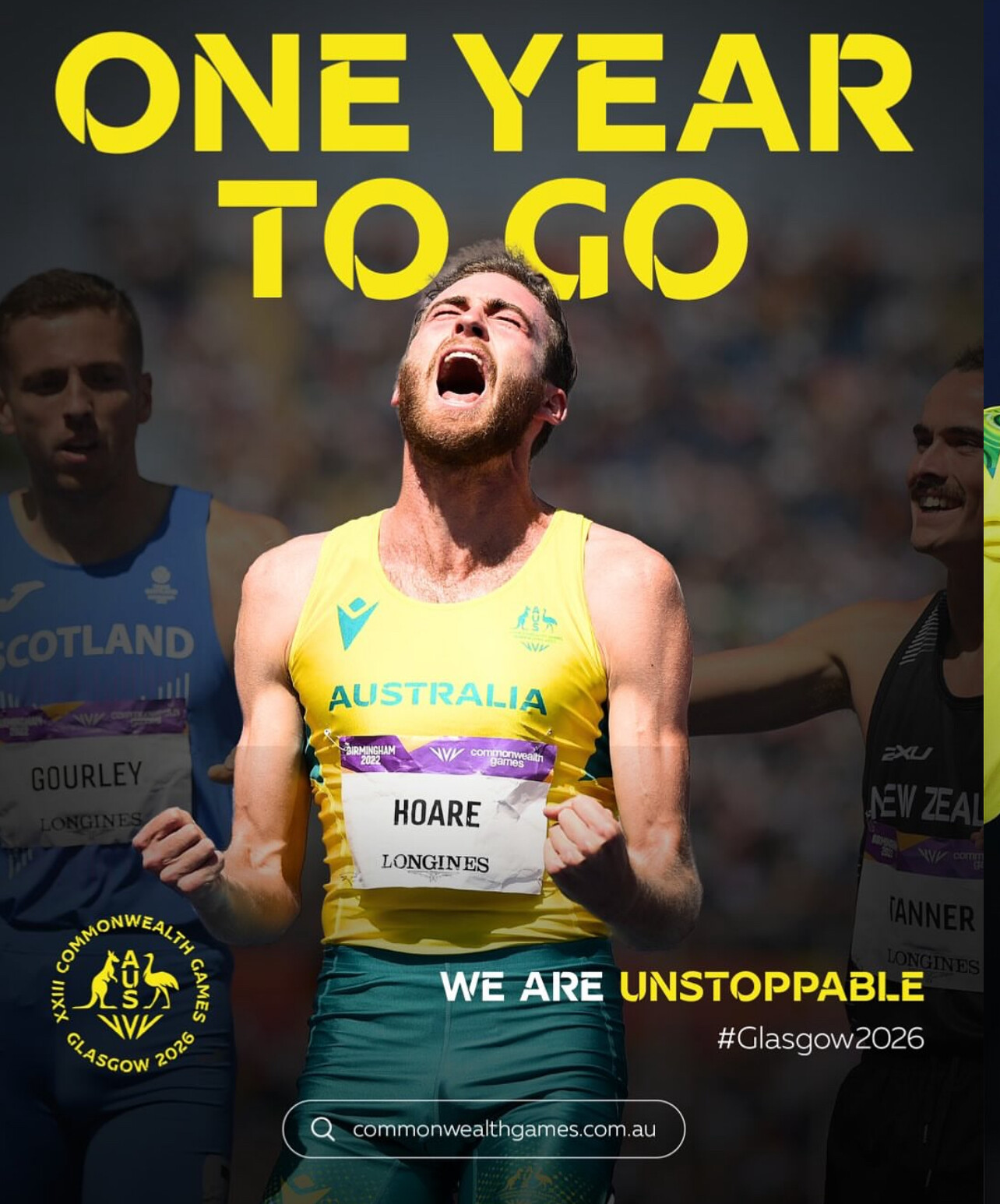
Now, the teen phenom is set to represent Australia at the 2026 Commonwealth Games, scheduled for July 23 to August 2 in Glasgow, Scotland. He is expected to compete in the 100m, while his entry in the 200m remains under consideration due to scheduling conflicts with the World Junior Championships, which will take place shortly after in Eugene, Oregon.
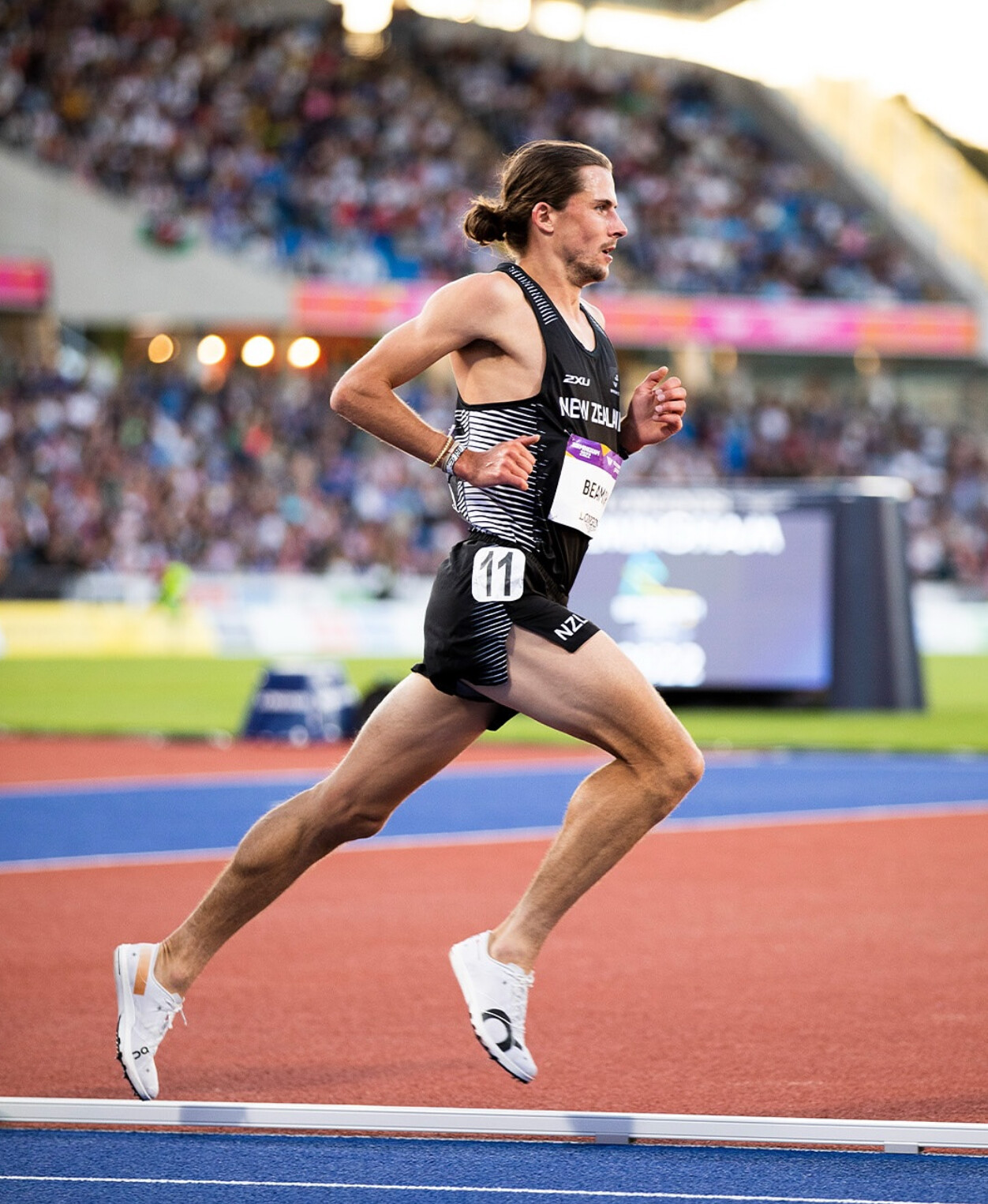
Gout’s Path to Stardom

Gout’s emergence as a global sprint force has been nothing short of remarkable. Raised in Ipswich, Queensland, he was introduced to athletics at a young age and quickly caught the attention of Australia’s elite coaches. Under the guidance of Diane Sheppard, Gout has developed into a technically polished athlete with a mature race strategy far beyond his years.
His silver medal at the 2024 World U20 Championships in the 200m confirmed what many already believed — Gout Gout isn’t just Australia’s future; he’s already one of its best.
Sheppard has praised his dedication, humility, and focus, noting:
“With Gout, it’s not just talent — it’s mindset. He’s willing to do the work and stay grounded.”
Glasgow 2026: A Games Reimagined
The 2026 Commonwealth Games will mark a return to Glasgow, which last hosted the event in 2014. Following Victoria’s withdrawal as host due to financial concerns, Glasgow stepped up with a streamlined, cost-efficient plan built on existing infrastructure.
The Games will feature:
• 10 core sports and 47 para-sport events
• Key venues including Scotstoun Stadium (track and field), Tollcross International Swimming Centre, and the Sir Chris Hoy Velodrome
• A strong focus on sustainability and legacy, with no new athletes’ village planned
Mascot “Finnie the Unicorn”, named after the Finnieston Crane and created by local students, has already captured hearts with its fun, distinctly Scottish vibe.
by Boris Baron
Login to leave a comment
“I Could Have Run 3:24” — Hicham El Guerrouj Reflects on His Still-Unbroken 1500m World Record from July 14, 1998
On July 14, 1998, Moroccan middle-distance legend Hicham El Guerrouj delivered one of the most iconic performances in track and field history, running a stunning 3:26.00 in the 1500m at the Golden Gala meet in Rome—a world record that still stands 27 years later.
But according to El Guerrouj himself, that time could have been even faster with today’s advancements.

“With today’s technology—carbon-plated shoes, wavelight pacing, and modern training science—I could have run 3:24,” he recently told reporters.
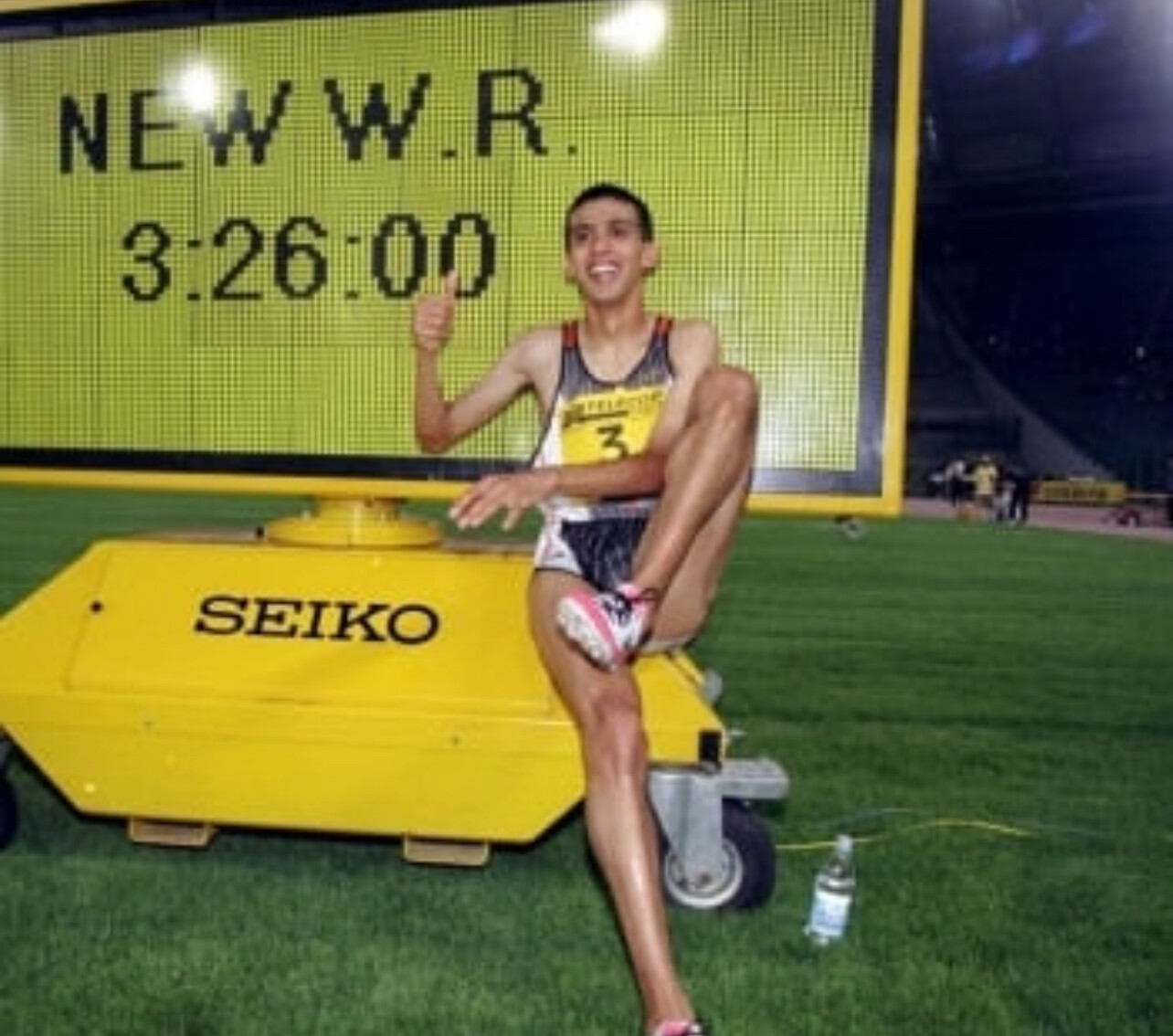
That bold claim holds weight when you look at the splits from that historic night. El Guerrouj covered the final 400m in 53.03 seconds and blazed through the last 300m in 39.66 seconds—numbers that rival top 800m finishes.
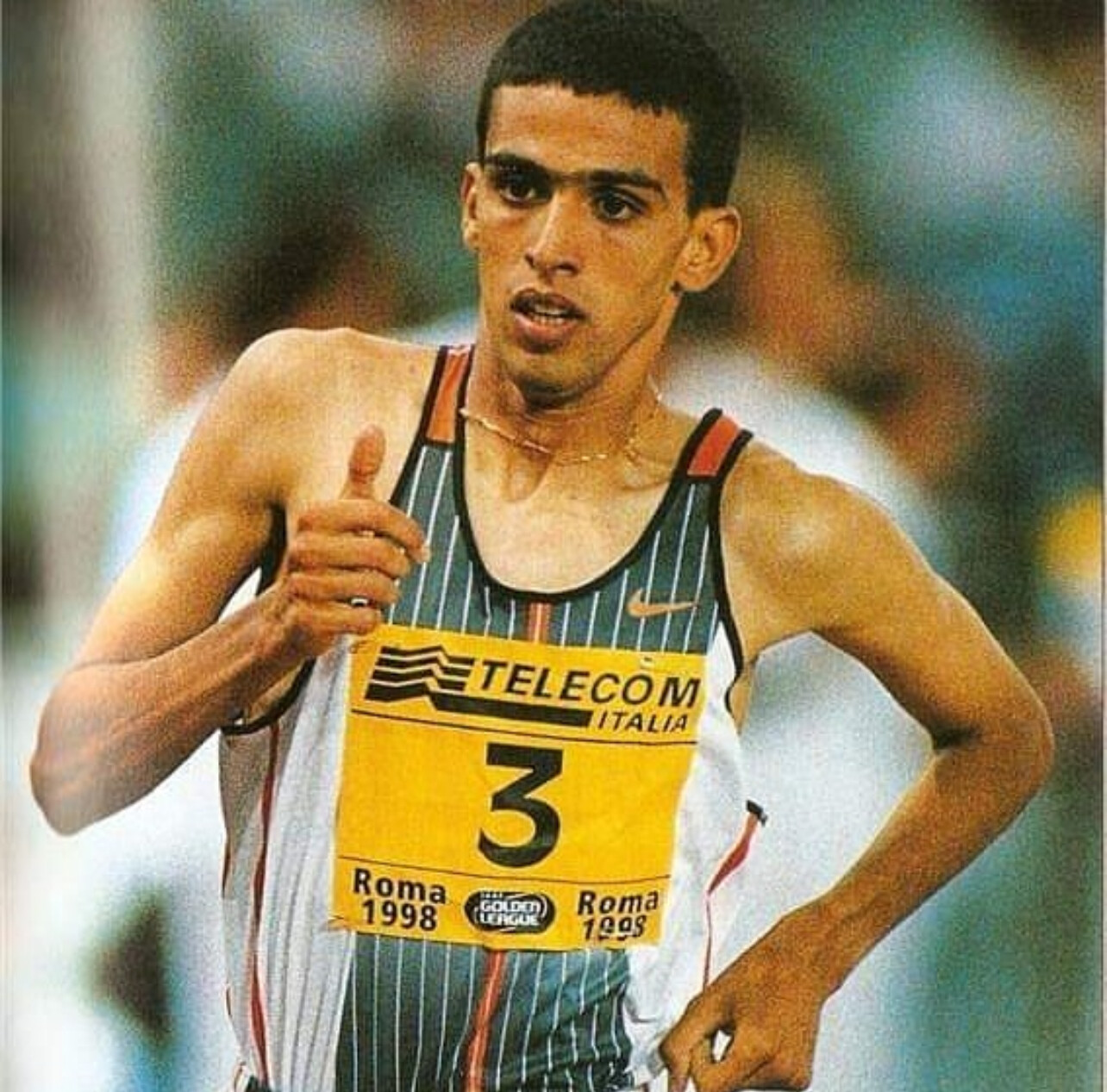
What makes this feat even more remarkable is that it was accomplished in an era before super spikes, pacer lights, and the finely tuned sports science that athletes now rely on. His performance was built on years of focused training, tactical brilliance, and unmatched closing speed.
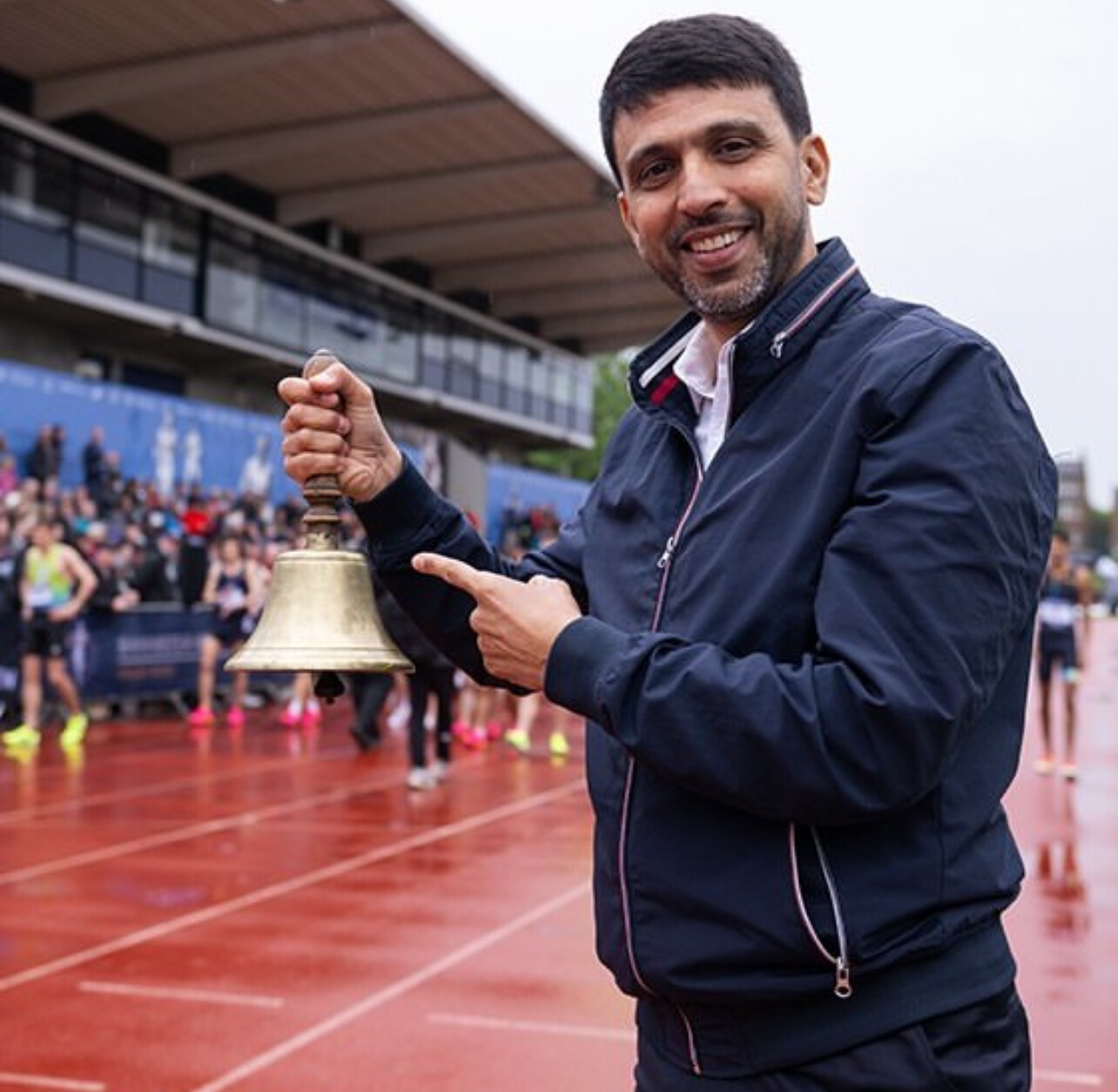
His time of 3:26.00 remains not only the fastest ever run over 1500m, but also the longest-standing men’s world record in any Olympic track distance between 800m and 10,000m.
With today’s stars like Jakob Ingebrigtsen inching closer to the mark, the debate continues: how much faster would El Guerrouj have gone in 2025 conditions?
For now, the record stands—and so does the legend of Hicham El Guerrouj.
by Boris Baron
Login to leave a comment
Tea, Grit, and Gold: The Timeless Bond of Percy Cerutty and Herb Elliott
In the world of distance running, few duos are more legendary—or unconventional—than Percy Cerutty and Herb Elliott. This remarkable photo, a moment of quiet between the storm, captures their unique relationship: the eccentric coach and his prodigy, sharing a cup of tea, as if Olympic greatness were just another day at the beach.
Percy Cerutty, the Australian coaching pioneer, was known for his wildly unorthodox training methods. Forget tracks and stopwatches—Cerutty believed in natural running, hard living, and mental toughness forged through raw experience. His athletes sprinted through sand dunes, carried logs, ran barefoot, and followed strict diets. He preached a philosophy he called “Stotanism” (a blend of Stoicism and Spartan discipline), rooted in pushing physical and mental limits to achieve personal greatness.
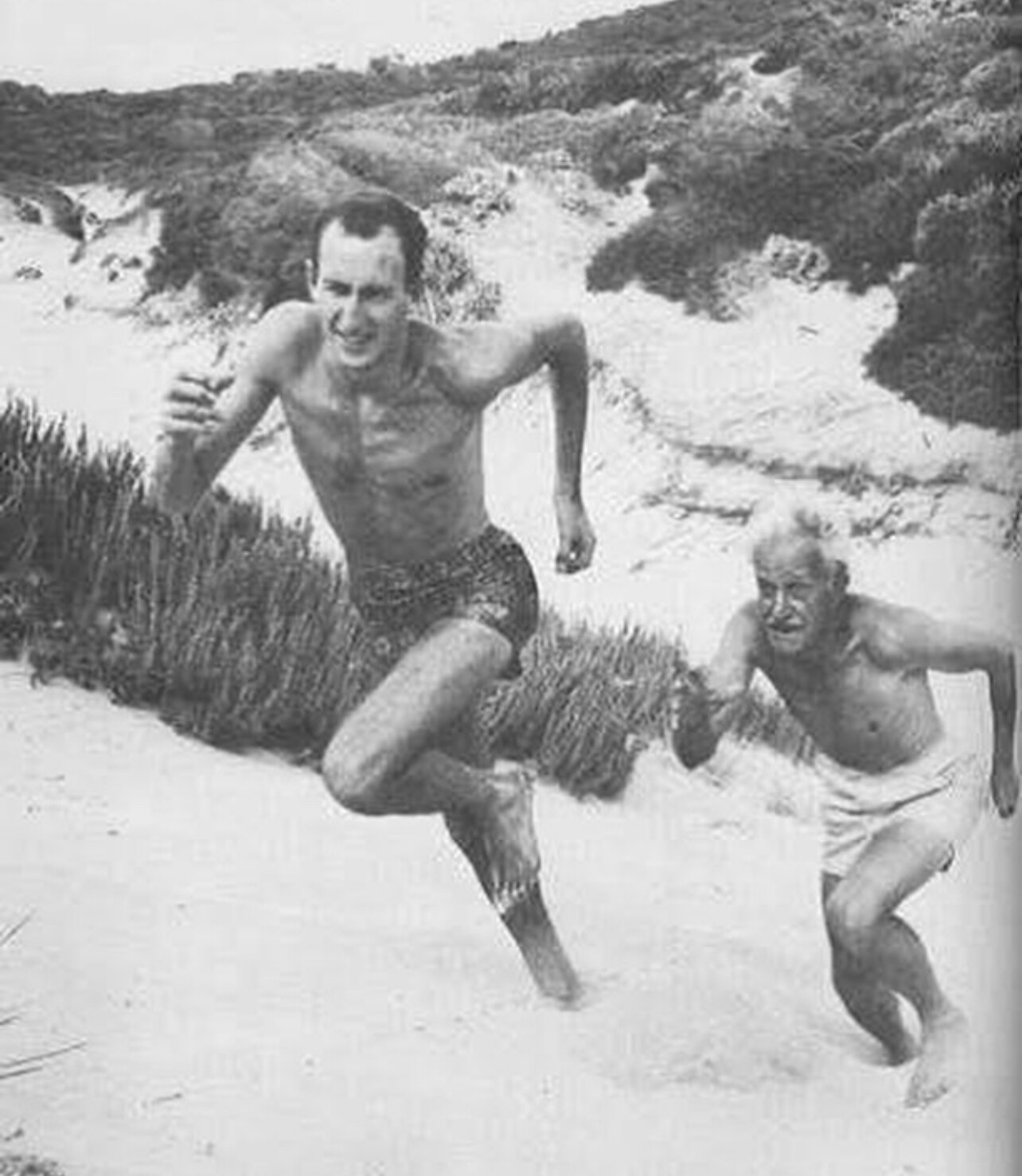
At the center of his philosophy stood Herb Elliott, perhaps the greatest middle-distance runner of his time. Under Cerutty’s guidance, Elliott remained undefeated in the mile and 1500m throughout his career. His crowning moment came at the 1960 Rome Olympics, where he won gold in the 1500m with a then-world record of 3:35.6—a performance that stunned the world and validated Cerutty’s methods.
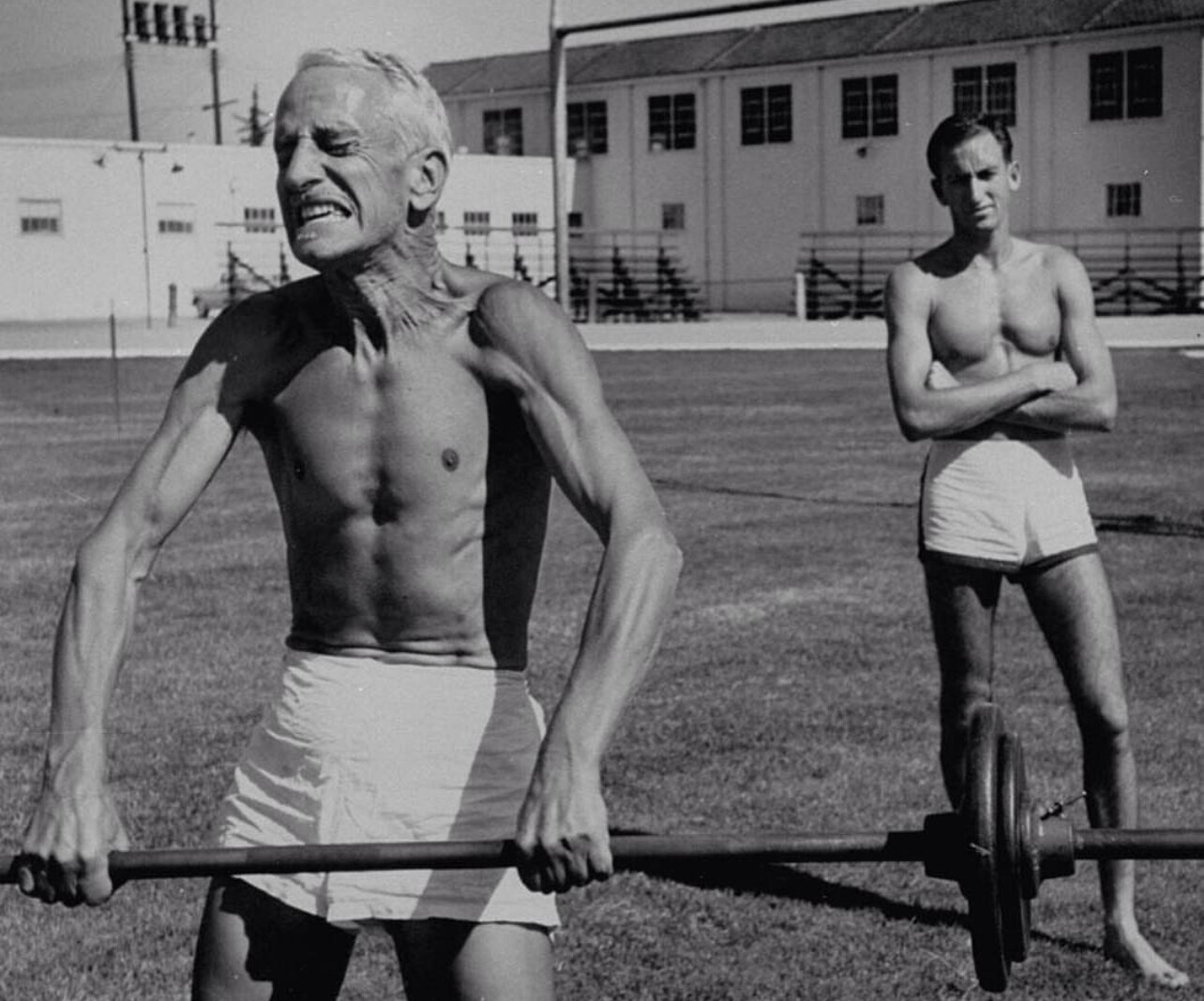
The photo tells its own story: Cerutty, intense and engaged, leans in with wisdom and purpose, while Elliott, relaxed and barefoot, listens—legs strong from miles on sand, mind sharp from hours of philosophical talk with his coach. They are not just athlete and trainer. They are master and disciple. Kindred spirits.
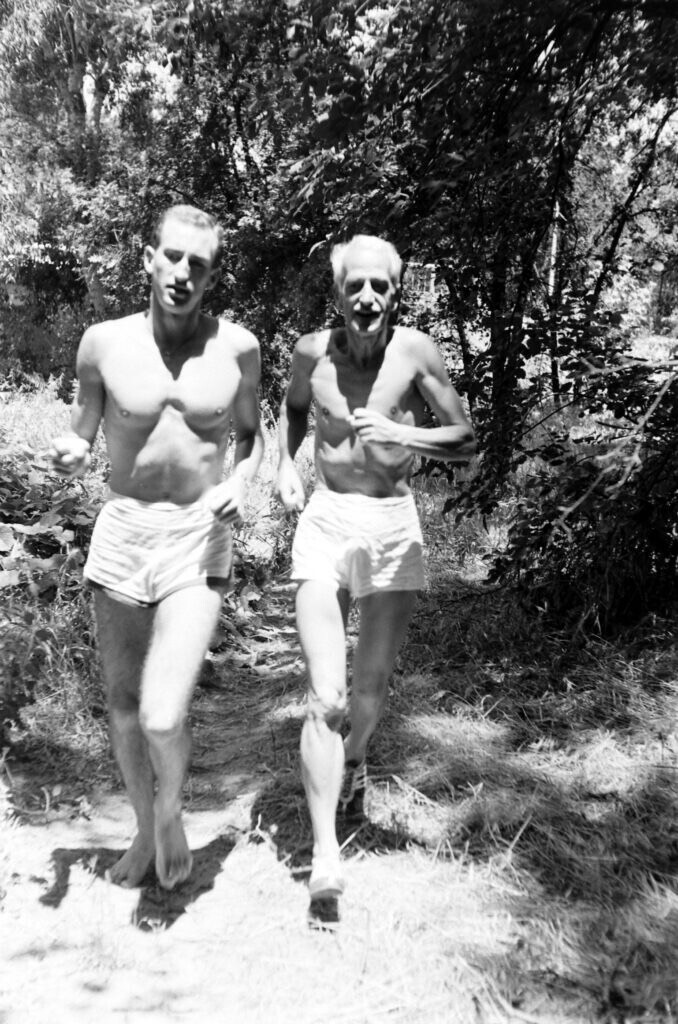
While modern training methods have evolved, the legacy of Percy and Herb endures. They taught us that greatness isn’t just built in the gym or on the track—it’s born in the wilderness, in the soul, and sometimes, over a cup of tea.
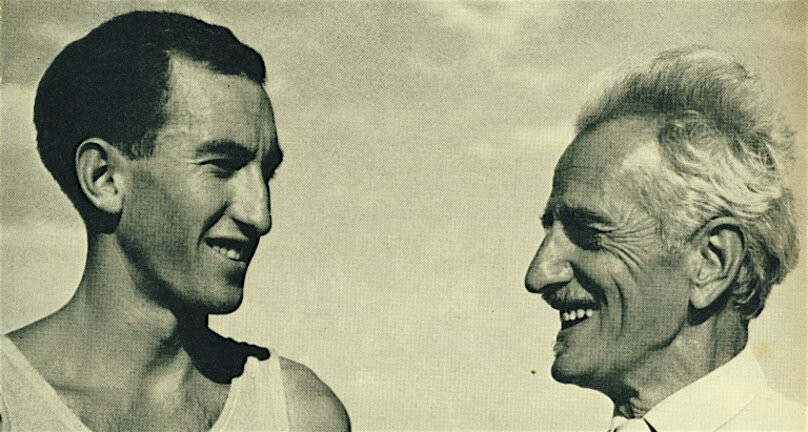
Thanks Eric Giacoletto for digging up this photo.
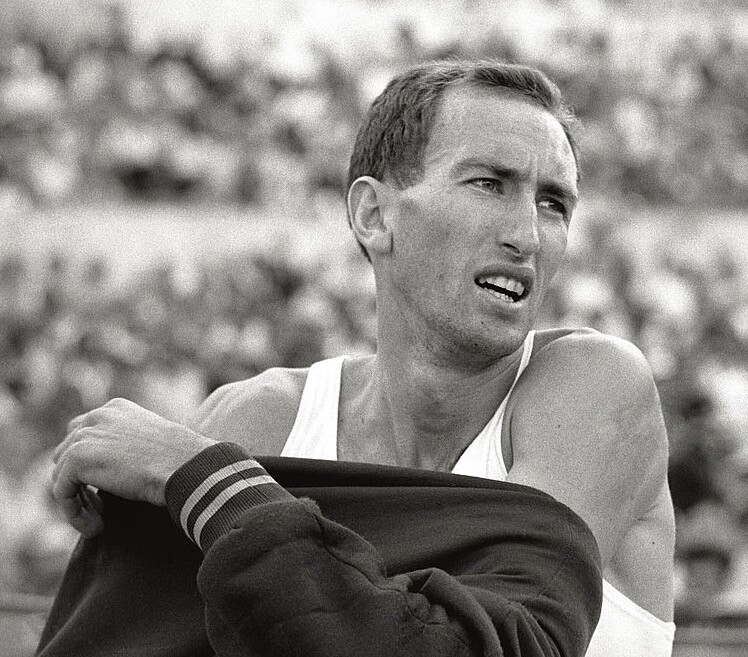
by Boris Baron
Login to leave a comment
I knew them both. In fact Herb was our Australian editor for Runner’s World. I visited him in Perth and we ran among the kangaroos. Percy wrote his first articles for us when RW was called Distance Running News. His book Athletics: Become a champion was my bible. Two great men! - Bob Anderson 7/12 4:43 pm |
The Fastest Mile Ever Run—And Why It Still Hasn’t Been Broken
On July 7, 1999, under the lights of Rome’s Stadio Olimpico, Morocco’s Hicham El Guerrouj delivered a performance that remains one of the most iconic feats in track and field history. Racing against a world-class field, El Guerrouj clocked 3:43.13 for the mile—shattering his own previous best and establishing a world record that still stands 26 years later.
No man has run faster since.
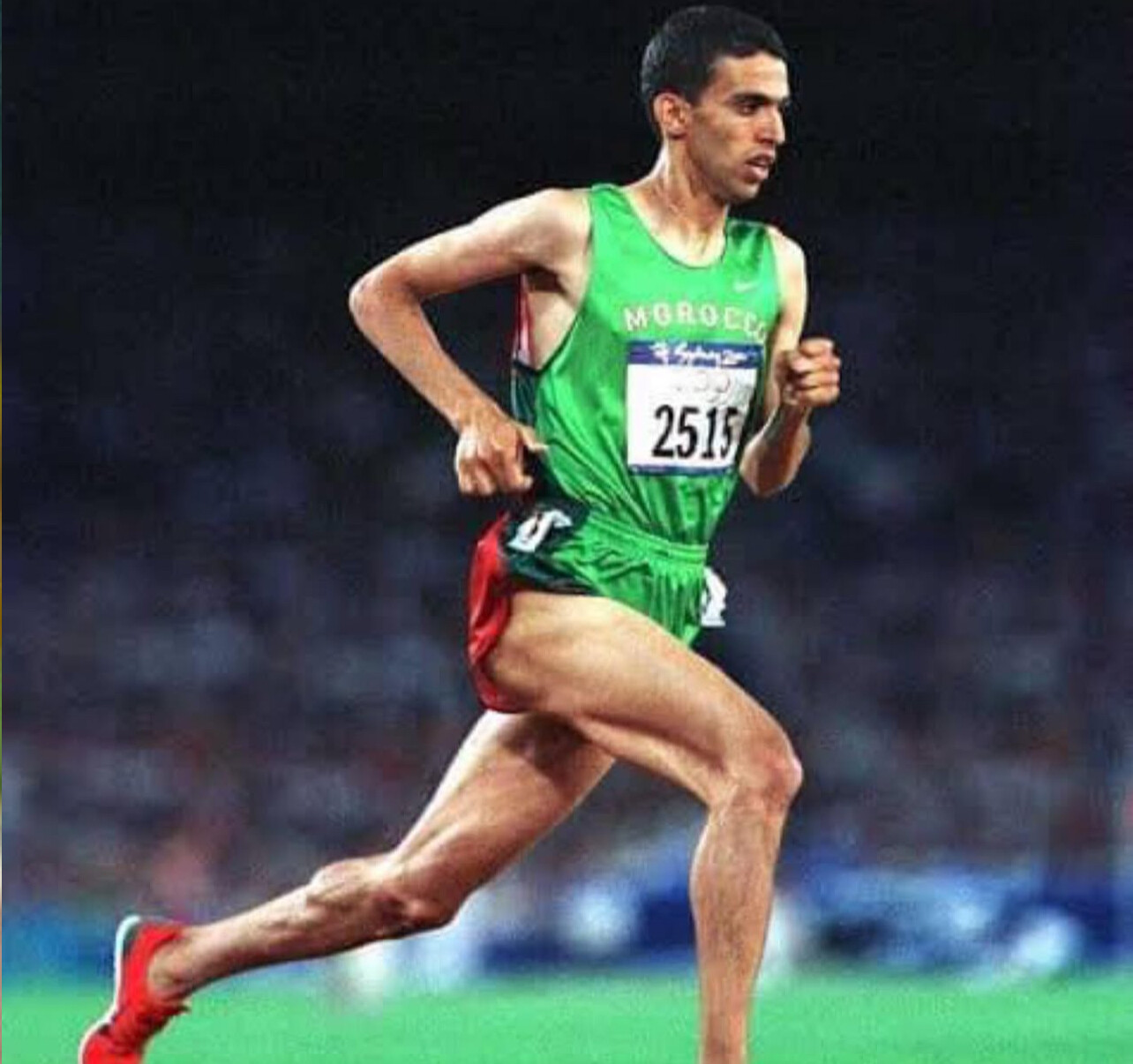
In one of the most thrilling middle-distance races ever contested, Kenya’s Noah Ngeny pushed El Guerrouj all the way to the finish, crossing in 3:43.40—a time that remains the second-fastest mile in history. The duel produced two performances that remain unmatched, solidifying the race as perhaps the greatest mile ever run.
At the time, El Guerrouj was already recognized as the world’s premier miler, having come heartbreakingly close to Olympic gold in 1996 when he tripped with 400 meters to go. But his performance in Rome in 1999 left no doubt about his dominance. Paced perfectly through the opening laps, El Guerrouj accelerated with trademark elegance and blistering speed over the final 400 meters, crossing the line with history behind him.
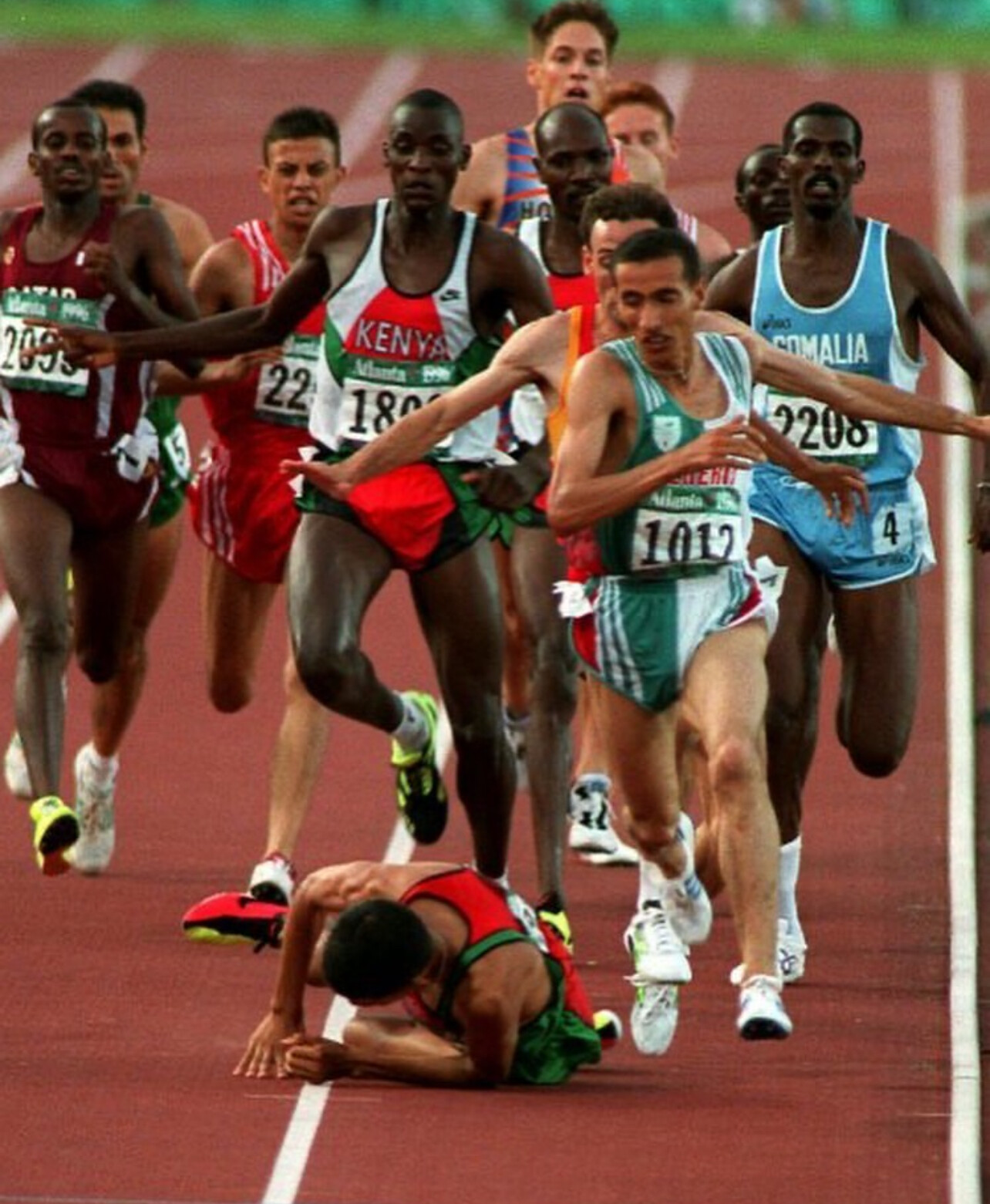
His 3:43.13 replaced the previous world record of 3:44.39, set by Noureddine Morceli in 1993, and it has now stood longer than any other men’s outdoor mile world record in history.
Fast Facts:

• Date: July 7, 1999
• Location: Stadio Olimpico, Rome, Italy
• Winner: Hicham El Guerrouj (Morocco) – 3:43.13 (World Record)
• Runner-Up: Noah Ngeny (Kenya) – 3:43.40 (Still #2 All-Time)
Legacy
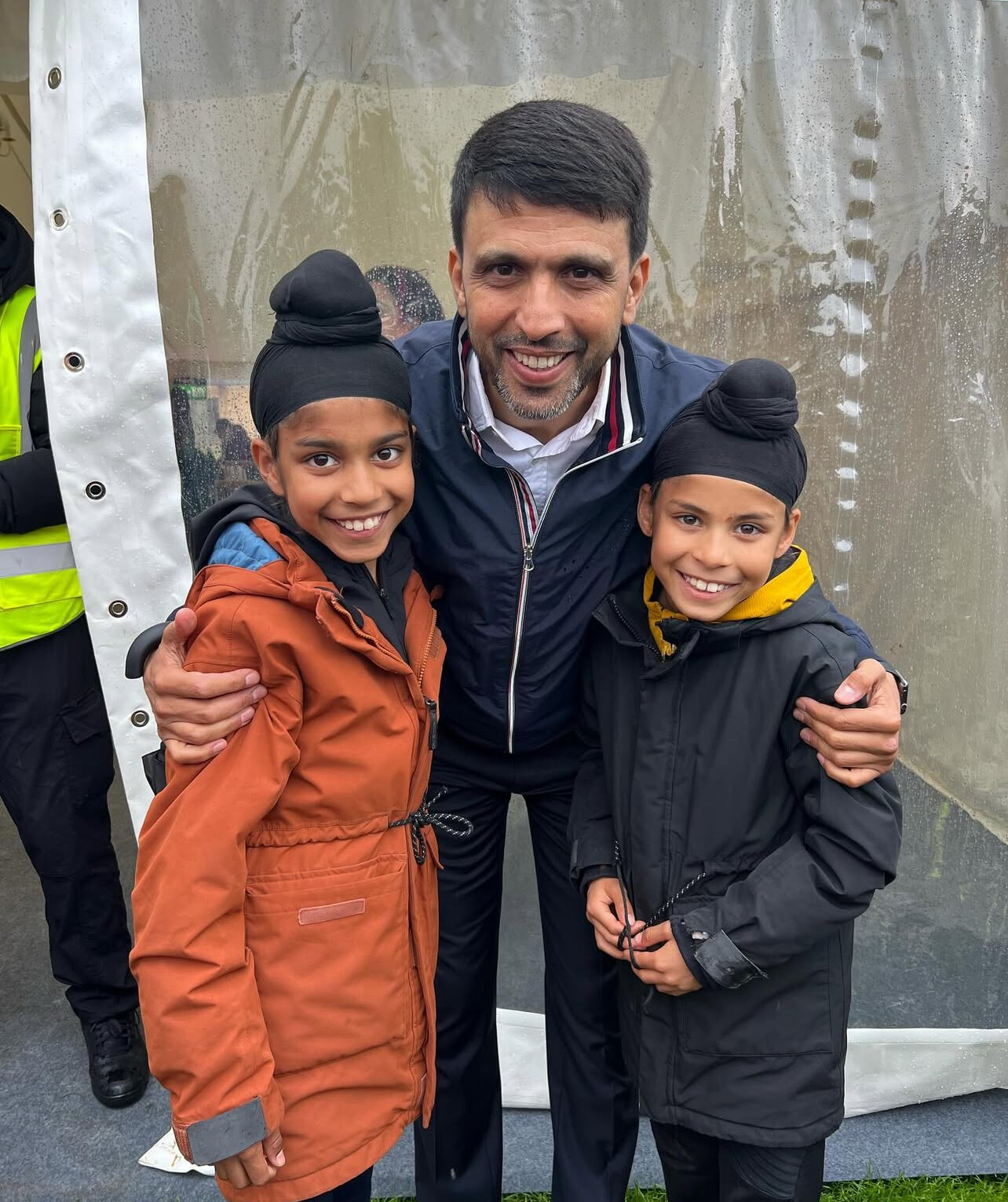
El Guerrouj went on to win double Olympic gold in 2004 (1500m and 5000m), capping a storied career. But it’s the 1999 mile in Rome that may be his most enduring legacy. Despite super spikes, faster tracks, and new training philosophies, no one has yet managed to break 3:44 since that night.
As we mark 26 years since this historic performance, the record stands not just as a mark of physical excellence, but as a symbol of the enduring mystique of the mile—track and field’s most storied distance.
by Boris Baron
Login to leave a comment
Bill Dellinger, Olympic Medalist and Legendary Coach, Passes Away at 91
The world of distance running is mourning the loss of one of its greats. Bill Dellinger, a three-time Olympian, Olympic bronze medalist, and one of the most influential coaches in U.S. track history, has passed away at the age of 91 on June 26.
Dellinger’s name is etched into the legacy of American distance running, both for his competitive fire and his ability to mentor champions. A fierce competitor on the track and a quiet architect of greatness on the sidelines, Dellinger leaves behind a legacy that stretches across generations.
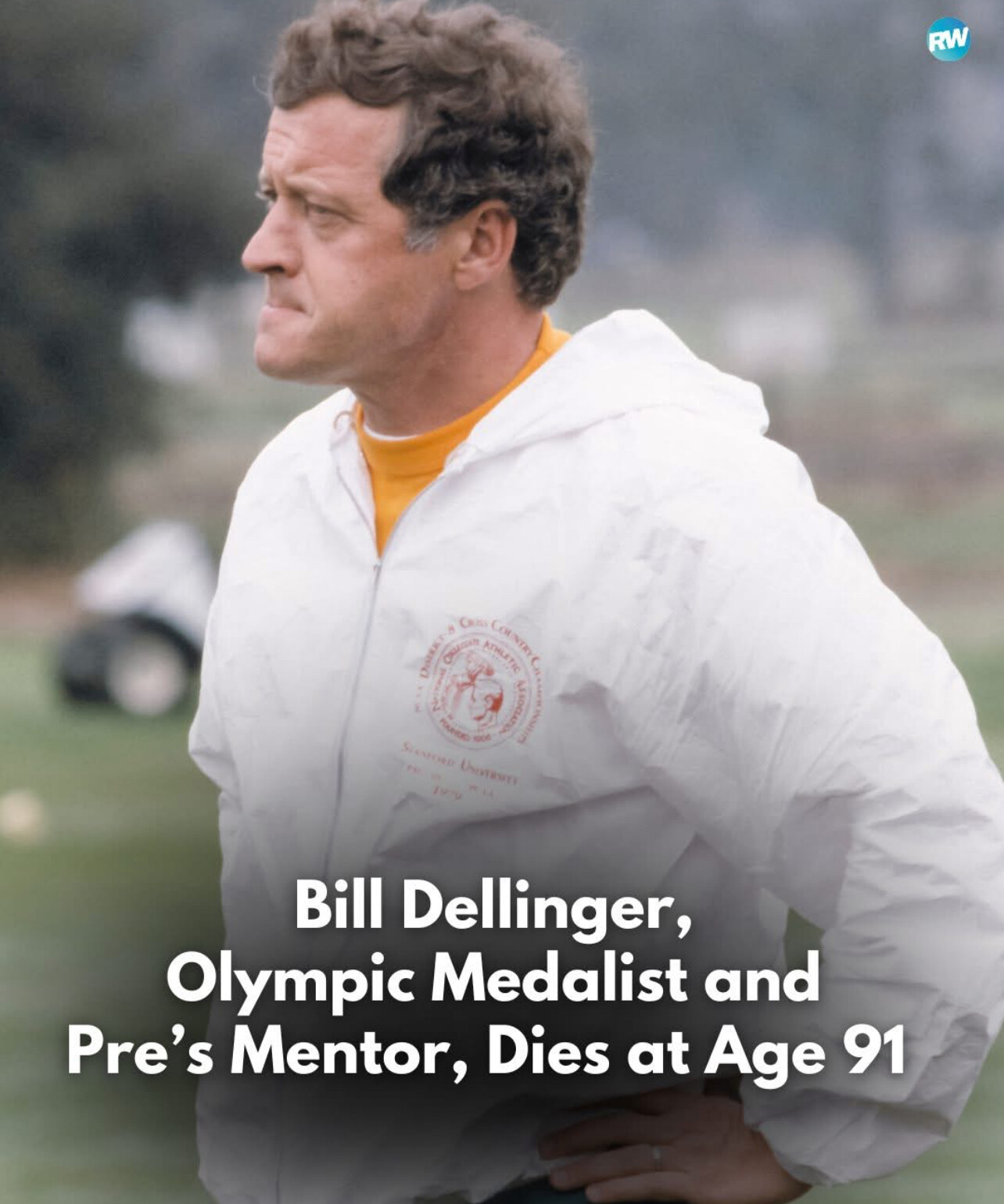
Born on March 23, 1934, in Grants Pass, Oregon, Dellinger rose to national prominence while competing for the University of Oregon under coach Bill Bowerman. He represented the United States in three Olympic Games—Melbourne 1956, Rome 1960, and Tokyo 1964—earning a bronze medal in the 5000 meters in his final Olympic appearance.
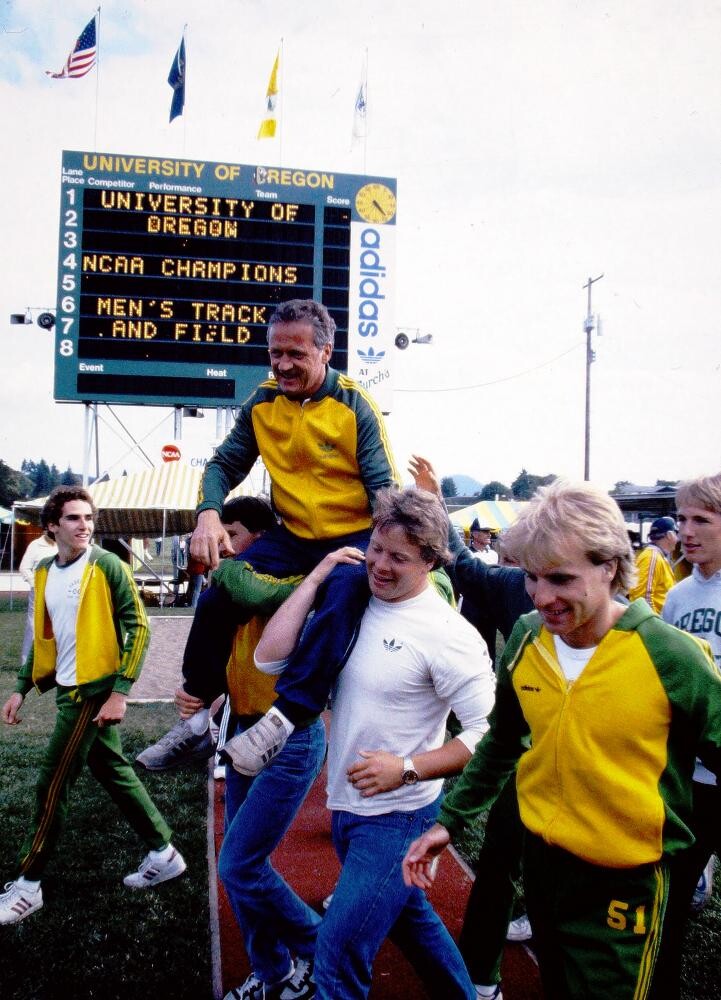
But Dellinger’s second act may have been even more impactful.

In 1973, he succeeded Bowerman as head coach at Oregon and immediately found himself guiding the nation’s most electric young runner—Steve Prefontaine. Their relationship transcended typical coach-athlete dynamics. Dellinger was more than a tactician; he was a stabilizing force for a fiercely independent and intense young star.
“Dellinger wasn’t just a coach. He was an architect of belief,” Prefontaine once said. “He knew when to push and when to trust.”
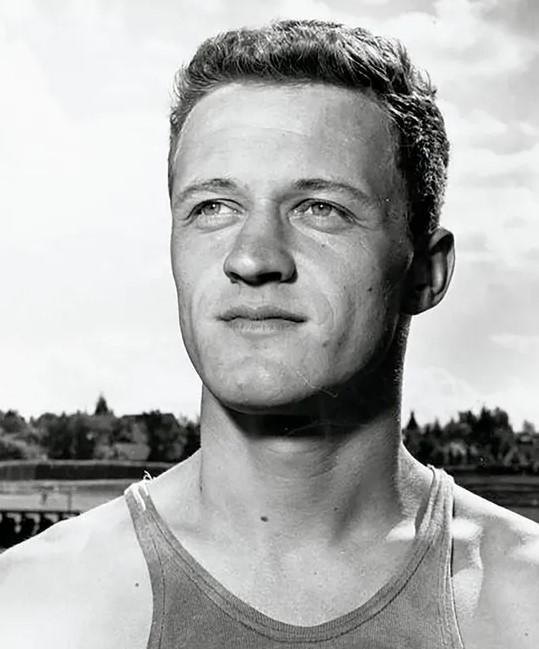
Dellinger coached at Oregon until 1998, mentoring athletes like Alberto Salazar, Matt Centrowitz Sr., Rudy Chapa, and many others who carried the Oregon tradition to global stages. He helped solidify Oregon’s reputation as the mecca of American distance running.
He was known for blending scientific training methods with an intuitive understanding of athlete development. His workouts were tough, his expectations high, but his support unwavering.
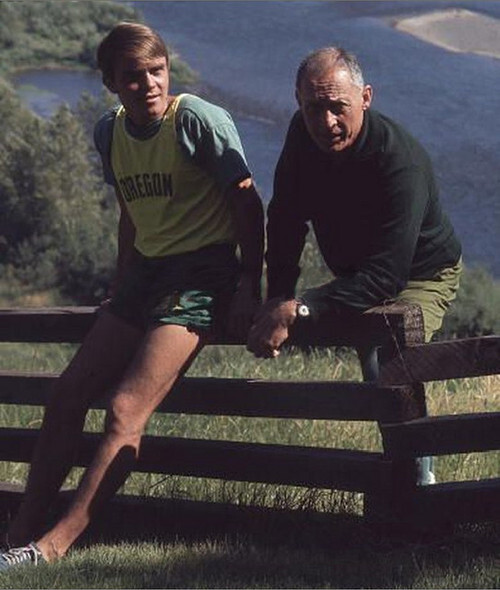
A Lifetime of Influence
Dellinger’s contributions to the sport extended well beyond the track. He co-authored training guides, helped shape early Nike culture, and lent his name to the prestigious Dellinger Invitational, one of the top collegiate cross-country meets in the country.
“Bill’s influence on distance running—first as a world-class athlete and then as a masterful coach—was profound,” said Bob Anderson, lifelong runner and founder of Runner’s World and My Best Runs.
“I hadn’t seen Bill in years, but his presence still echoes in the sport today. He inspired a generation and helped build the foundation of what American distance running has become. He may be gone, but he’ll never be forgotten.”
A Final Lap
Dellinger’s passing marks the end of an era, but his life’s work will continue on every time an Oregon singlet toes the line, every time a young coach references his methods, and every time a runner believes they can dig a little deeper.
He didn’t just coach champions—he helped shape the soul of American distance running.
Rest in peace, Coach Dellinger.
by Boris Baron
Login to leave a comment
Faith Cherotich’s 8:53 Breakthrough: 6th-Fastest Steeplechase Ever—Now She’s Targeting Gold in Tokyo
Faith Cherotich is rewriting the women’s 3000m steeplechase narrative. The 20-year-old Olympic and World bronze medalist exploded onto the senior stage this year, slashing over 11 seconds off her personal best and firmly establishing herself among the all-time greats. With the World Championships set for Tokyo in 2025, she’s made it clear—she’s not done yet.
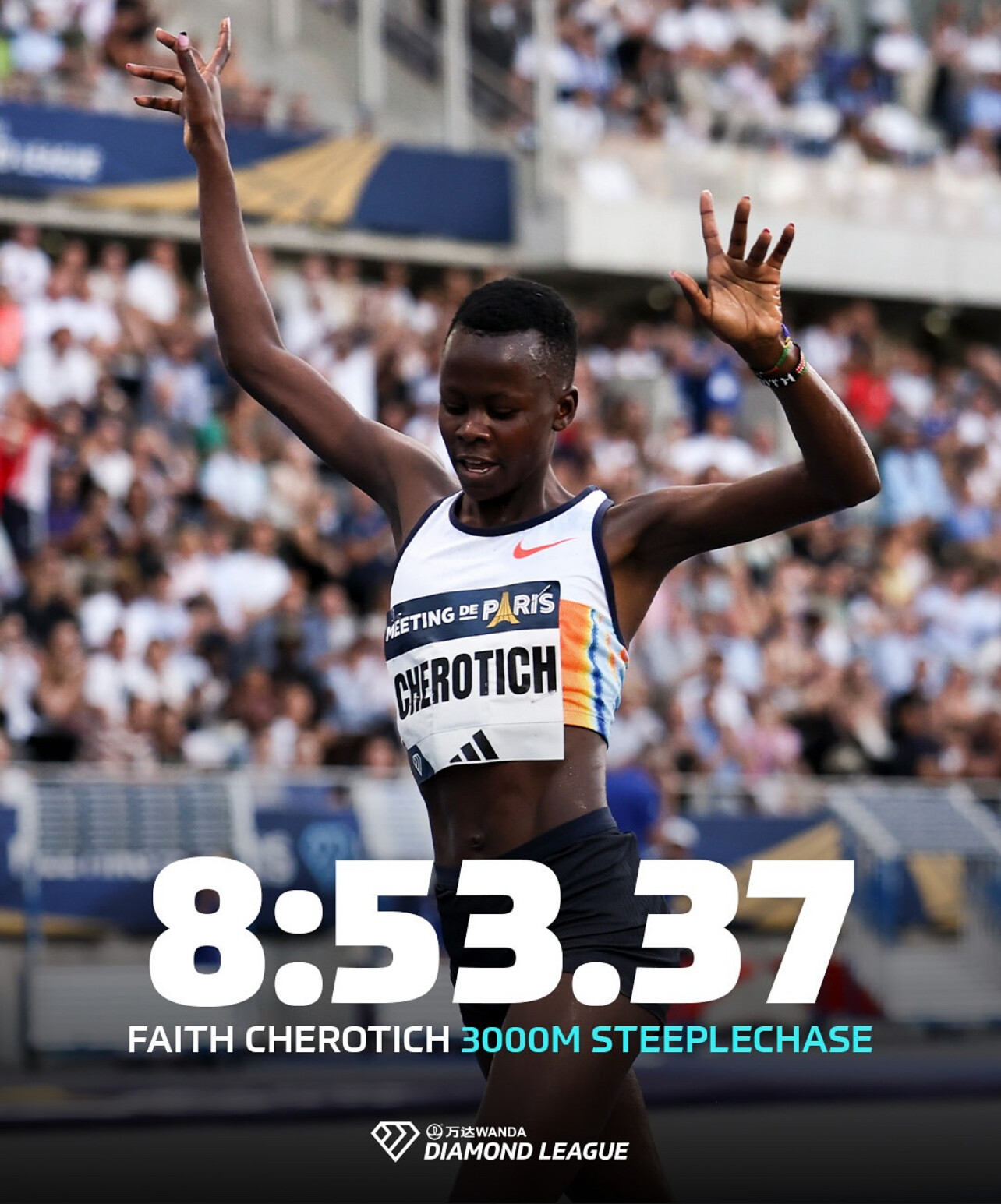
Olympic Roots, Meteoric Rise

Cherotich made her Olympic debut in Paris 2024, earning bronze in 9:04.24 behind Winfred Yavi and Peruth Chemutai. Just a year later, she’s running nearly 11 seconds faster.
At the 2023 World Championships in Budapest, she finished second in 9:00.69, already hinting at her vast potential. But 2025 has been a different level altogether.

Diamond League Domination
Cherotich’s progression this season has been remarkable:
• Doha Diamond League – 9:05.08
• Oslo Diamond League – 9:02.60 (meet record)
• Paris Diamond League – a stunning 8:53.37, now the world lead for 2025 and the 6th-fastest time in history
In Paris, she confidently shadowed 2020 Olympic champion Peruth Chemutai before surging ahead for the win.
“I am happy to have run a PB,” Cherotich said after the race. “It was not an easy race… after a few laps I got confident enough to take the lead and knew I could manage the race and win.”
All-Time Rankings & World Record Watch
• Fastest time ever: 8:44.32 — Beatrice Chepkoech (2018)
• Second-fastest: 8:44.39 — Winfred Yavi (Rome, 2024)
• Cherotich: Now #6 all-time with 8:53.37
Her consistency, combined with tactical growth, has vaulted her into serious world title contention
Focused on Tokyo 2025
With the World Championships returning to Tokyo, Cherotich is more motivated than ever:
“My target this season is to win the world title… I want to run good races… I am going to fight and do all my best to achieve my goal… It will be a different result this time in Tokyo.”
She currently leads the Diamond League standings by 10 points over rival Yavi and has shown she can beat any competitor on the day.
✅ Performance Summary
|
Meet |
Time |
Result |
|
Paris DL |
8:53.37 |
1st – PB, WL |
|
Oslo DL |
9:02.60 |
1st – MR |
|
Doha DL |
9:05.08 |
1st |
|
Budapest Worlds (2023) |
9:00.69 |
2nd – Silver |
|
Paris Olympics (2024) |
9:04.24 |
3rd – Bronze |
Cherotich isn’t just winning races—she’s chasing history. With the world title in her sights and her confidence growing with every lap, all roads now lead to Tokyo.
by Boris Baron
Login to leave a comment
Four Scenic Routes to Explore in San Francisco Plus: A Unique Race Experience Coming August 3
San Francisco isn’t just a city of hills and cable cars—it’s a runner’s dream. With its unique blend of urban energy, coastal serenity, and panoramic vistas, the City by the Bay offers some of the most scenic running routes in the world. Whether you’re training for a race or simply looking for a refreshing jog, these four routes provide the perfect introduction to San Francisco’s running scene.
1. Golden Gate Park Loop

• Distance: 7 miles
• Terrain: Paved paths and dirt trails
• Highlights: Botanical gardens, Stow Lake, and peaceful groves
Golden Gate Park is San Francisco’s version of Central Park—only longer and filled with even more natural variety. This 7-mile loop guides runners past the Japanese Tea Garden, the Conservatory of Flowers, and around Stow Lake. It’s ideal for tempo runs, long runs, or easy days, offering both paved and soft-surface options with minimal traffic distractions. You’ll find moments of quiet and lush green scenery that make you forget you’re in the middle of a major city.
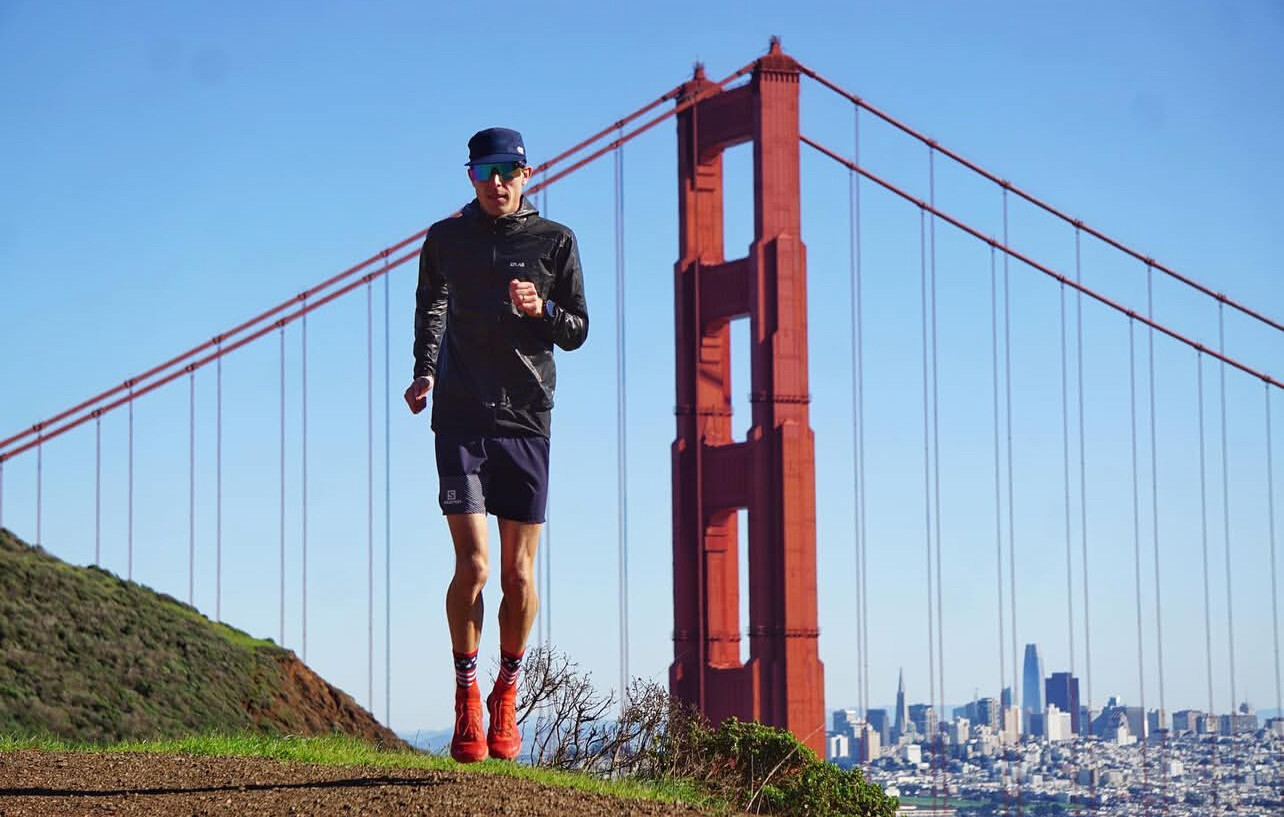
2. Presidio Challenge
• Distance: 4 miles
• Terrain: Hilly with stairs and varied paths
• Highlights: Sweeping views of the Golden Gate Bridge and Bay, forested trails, military history

Looking for a climb and a challenge? The Presidio route rewards effort with unmatched views and tranquil forest trails. Once a military post, this national park is now one of the most scenic places to run in San Francisco. Start near Crissy Field, ascend via the Batteries to Bluffs Trail or the Ecology Trail, and loop back through shaded switchbacks and historic military bunkers. It’s a great test of fitness with picture-perfect moments.
3. Embarcadero Waterfront Run
• Distance: 3–6 miles
• Terrain: Flat, paved promenade
• Highlights: Bay Bridge, Ferry Building, Pier 39, sea lions
This runner-friendly route delivers postcard-worthy views and an easy-to-follow course along the Bay. Begin at Oracle Park or the Ferry Building and head north past piers, ships, shops, and cafés. The Embarcadero is ideal for morning or evening runs, with great lighting, plenty of water stops, and occasional sea lion cameos at Pier 39. It’s also one of the most accessible spots for visitors staying downtown.
4. Lands End Coastal Trail
• Distance: 3–4 miles
• Terrain: Dirt trails and stairs
• Highlights: Cliffside Pacific views, Sutro Baths, Golden Gate Bridge overlook
Lands End feels like a trail runner’s escape—without leaving the city. The route snakes along the cliffs on the city’s northwest edge, offering stunning ocean views, cypress trees, and a glimpse of the iconic Golden Gate Bridge in the distance. While the terrain includes stairs and some narrow paths, the scenery is unforgettable. Make time to stop at the Sutro Baths ruins and the Lands End Labyrinth for a true San Francisco experience.
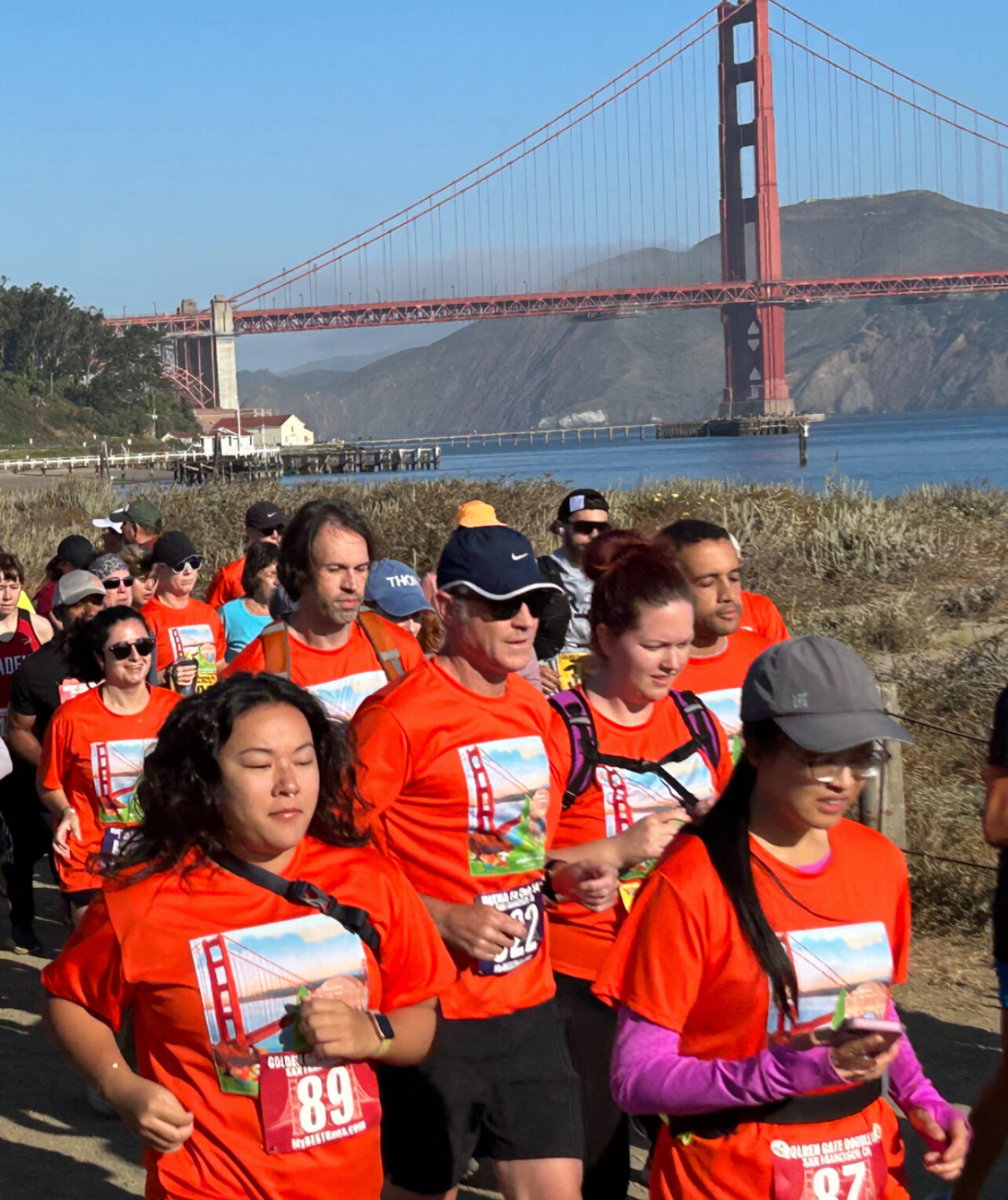
Looking for a Race? Don’t Miss August 3
If you’re inspired to test your fitness on one of these routes, sign up for one of San Francisco’s most scenic events: the Golden Gate 10K, 5K, and Double 8K, happening on August 3. Held at Crissy Field, these flat and fast courses offer panoramic views of the Golden Gate Bridge and the bay—without ever crossing the bridge itself.
The event also features the Golden Gate Double 8K, a unique two-part challenge: run a 5K, take a short recovery break, then race a 3K. The combined time determines your score, adding a strategic twist that rewards consistency and pacing.
It’s an ideal race for all levels—from competitive racers to weekend warriors—and a memorable way to experience the San Francisco waterfront on foot.
Tips for Running in San Francisco
• Layer Up: Weather can shift quickly. Fog and chilly breezes are common even in summer.
• Mind the Terrain: Hills and stairs are frequent. Don’t underestimate them.
• Stay Hydrated: Water fountains are available in parks and along the Embarcadero.
• Beat the Crowds: Early mornings offer the quietest, most peaceful running conditions.
• Use Public Transit: Many routes are easily accessible via BART, Muni, or bike share.
Whether you’re a local or just visiting, San Francisco delivers a unique mix of urban running and natural beauty. With iconic views, varied terrain, and a welcoming fitness community, the city makes it easy to fall in love with running all over again.
So lace up your shoes, pick a path, and let San Francisco move you.
Would you like me to add clickable registration or map links for the August 3 races?
by Boris Baron
Login to leave a comment
Golden Gate 10k/5k DOUBLE 8K
The Golden Gate courses offers unparalleled views of the Golden Gate Bridge for more than 80% of the way! The course will begin at historic Crissy Field near the Presidio of San Francisco. Runners will enjoy the gorgeous vistas of the Golden Gate National Recreation Area. We are offering three races: Golden Gate 10K and 5K (run/walk) and Golden Gate...
more...Marta García Emerges as One of Spain’s Brightest Distance Running Talents
Spanish distance runner Marta García Alonso is quickly becoming one of Europe’s top long-distance talents. Her string of breakthrough performances over the past year highlights her rise—from national standout to international podium contender.
In June 2024, García made headlines by earning bronze in the 5000 meters at the European Championships in Rome with a personal best of 14:44.04, setting a new Spanish national record. That performance solidified her status as one of the strongest European women in the event.
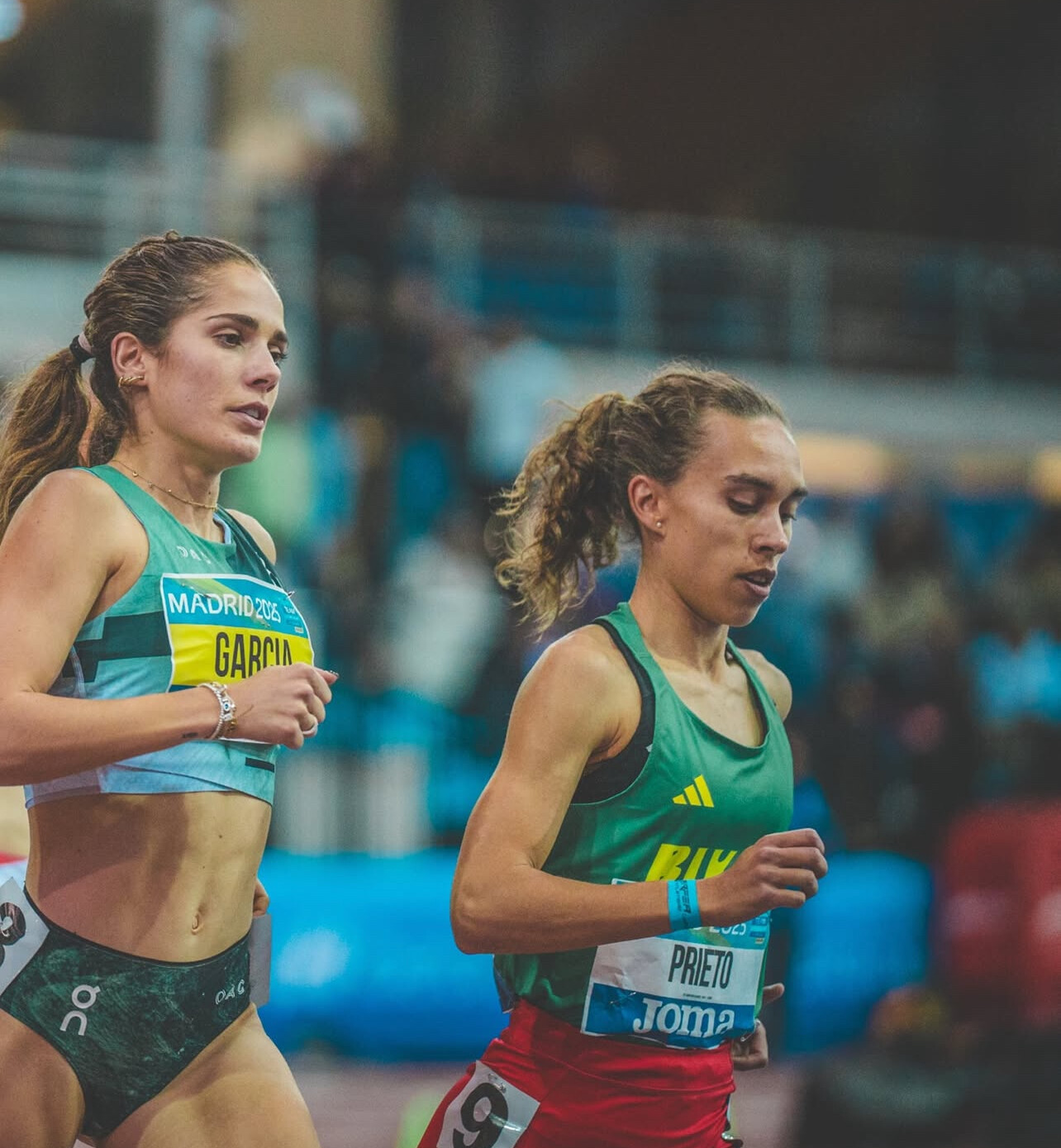
Just months later, she stunned the field at the San Silvestre Vallecana 10K in Madrid, clocking 31:19to defeat world marathon record holder Ruth Chepngetich. García became the first Spaniard to win the iconic race since 2008, and her time stands as the fastest ever by a Spanish woman on that course.
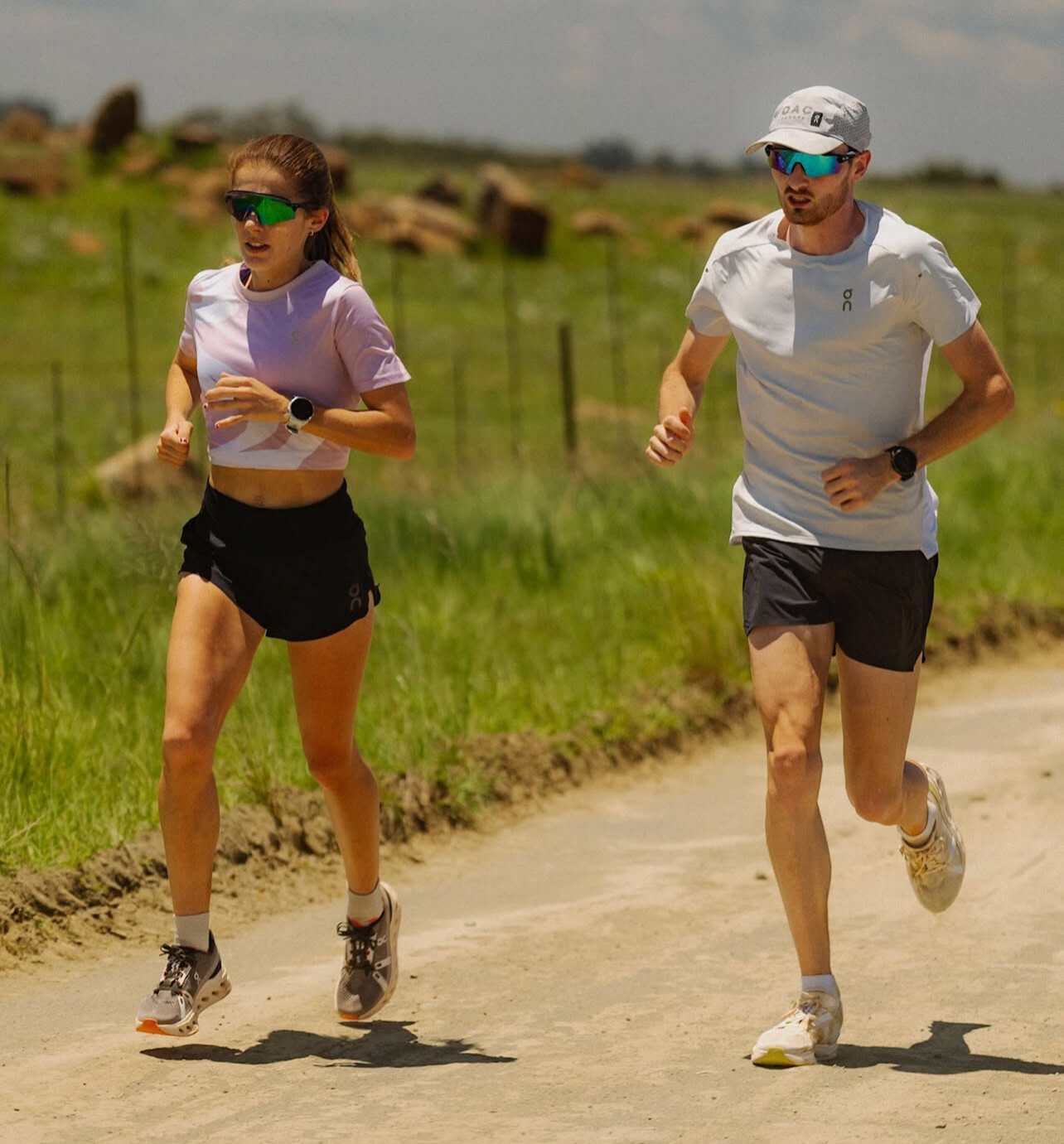
Now in 2025, she’s showing no signs of slowing down. At the 10km de Camargo held on April 27, García ran an impressive 31:26, further proving her consistency and range on the roads. With the Paris Olympics on the horizon, she is poised to be one of Spain’s top contenders.

Beyond the track, García is a qualified medical doctor who made the bold decision to pause her medical career to focus fully on athletics. She currently trains with On Athletics Club Europe under coach Thomas Dreissigacker in St. Moritz, Switzerland, alongside some of the continent’s top distance runners.
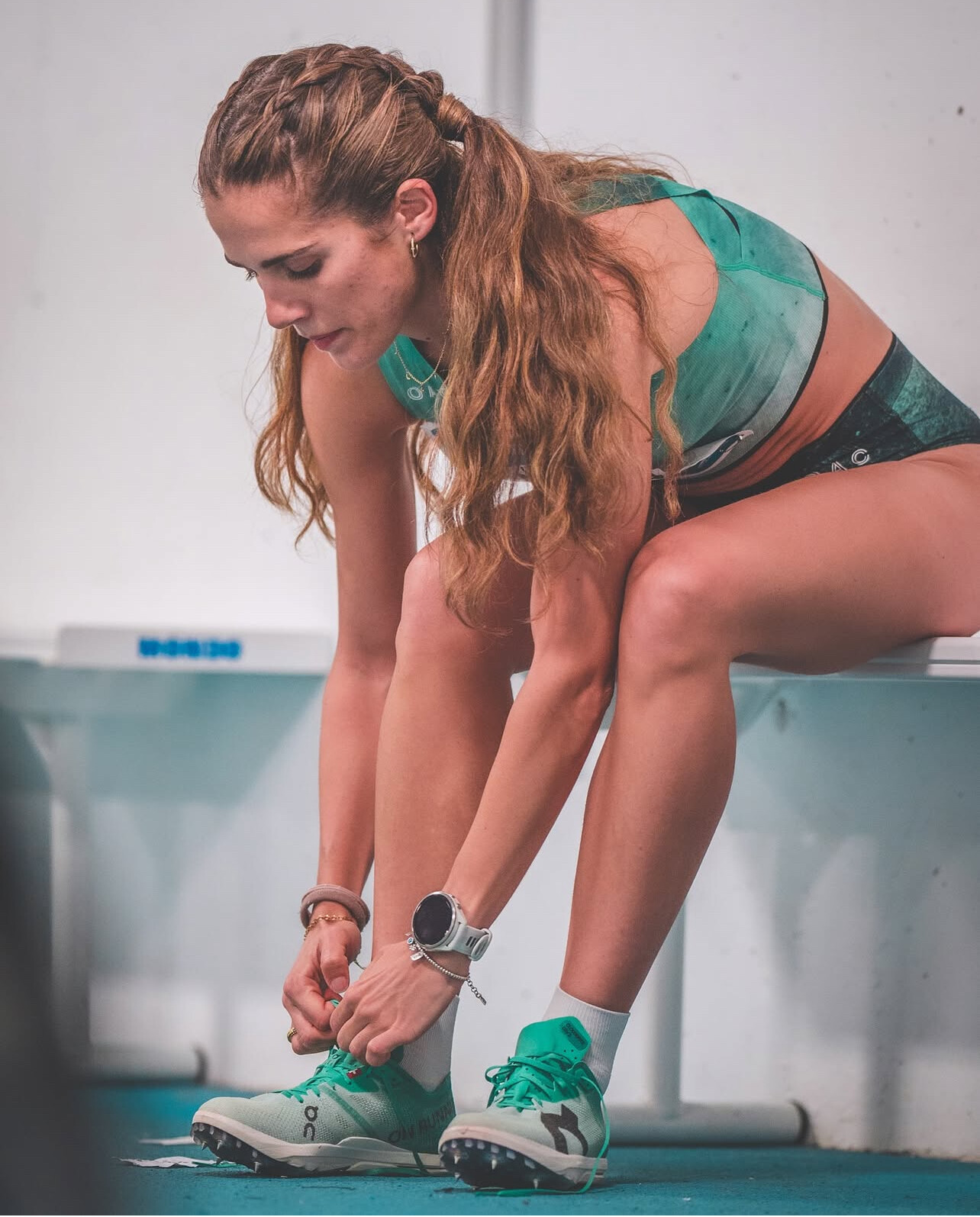
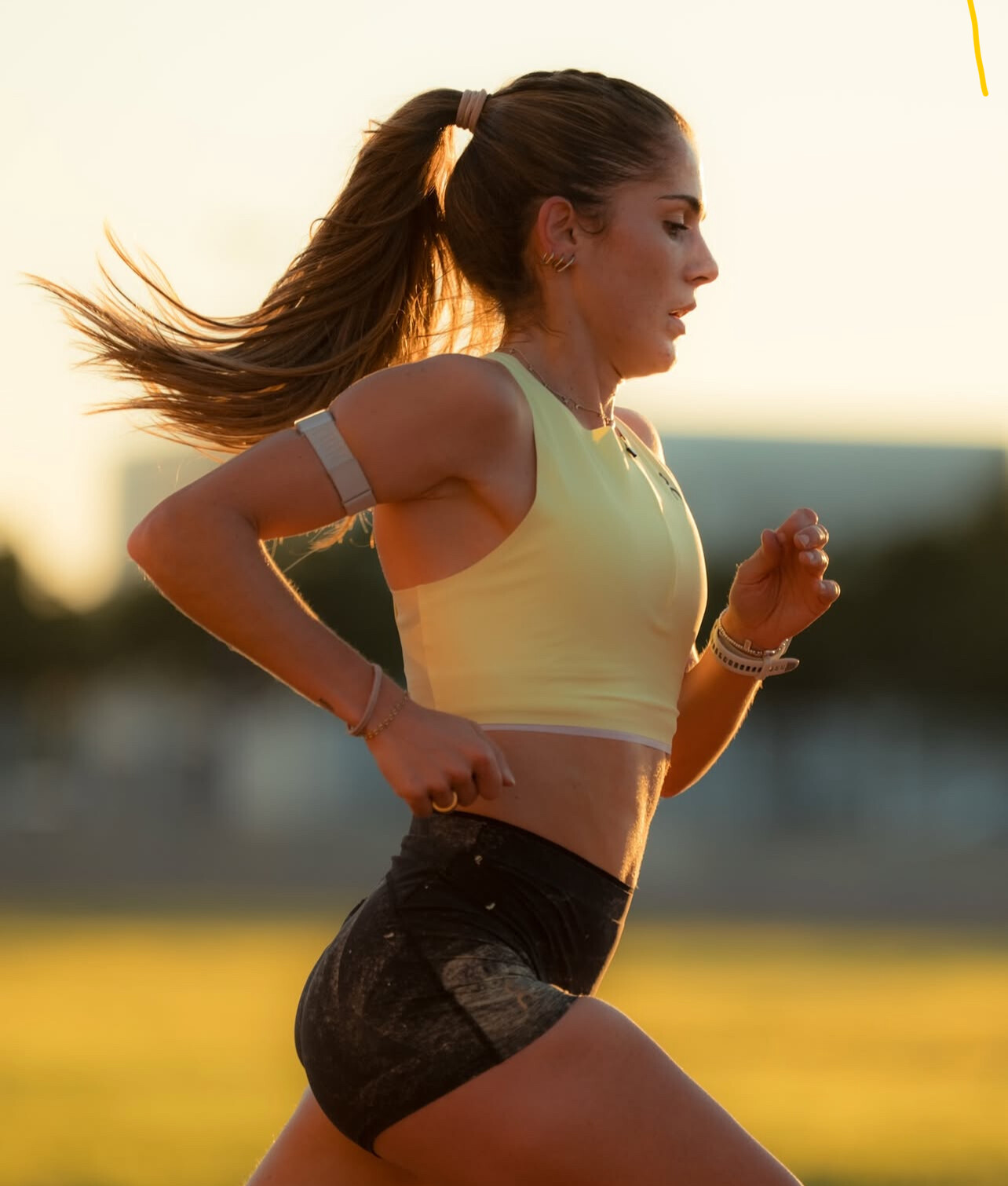
With her relentless drive and world-class results, Marta García is not just a rising star—she’s already delivering on her promise, and the best may still be ahead.
by Boris Baron
Login to leave a comment
Arizona’s Monster — Why the Cocodona 250 Is One of the Toughest Races on Earth
The Cocodona 250 isn’t just a race—it’s an odyssey through Arizona’s most rugged and awe-inspiring landscapes. Spanning 256.5 miles from Black Canyon City to Flagstaff, this ultramarathon demands everything a runner has—physically, mentally, and emotionally.
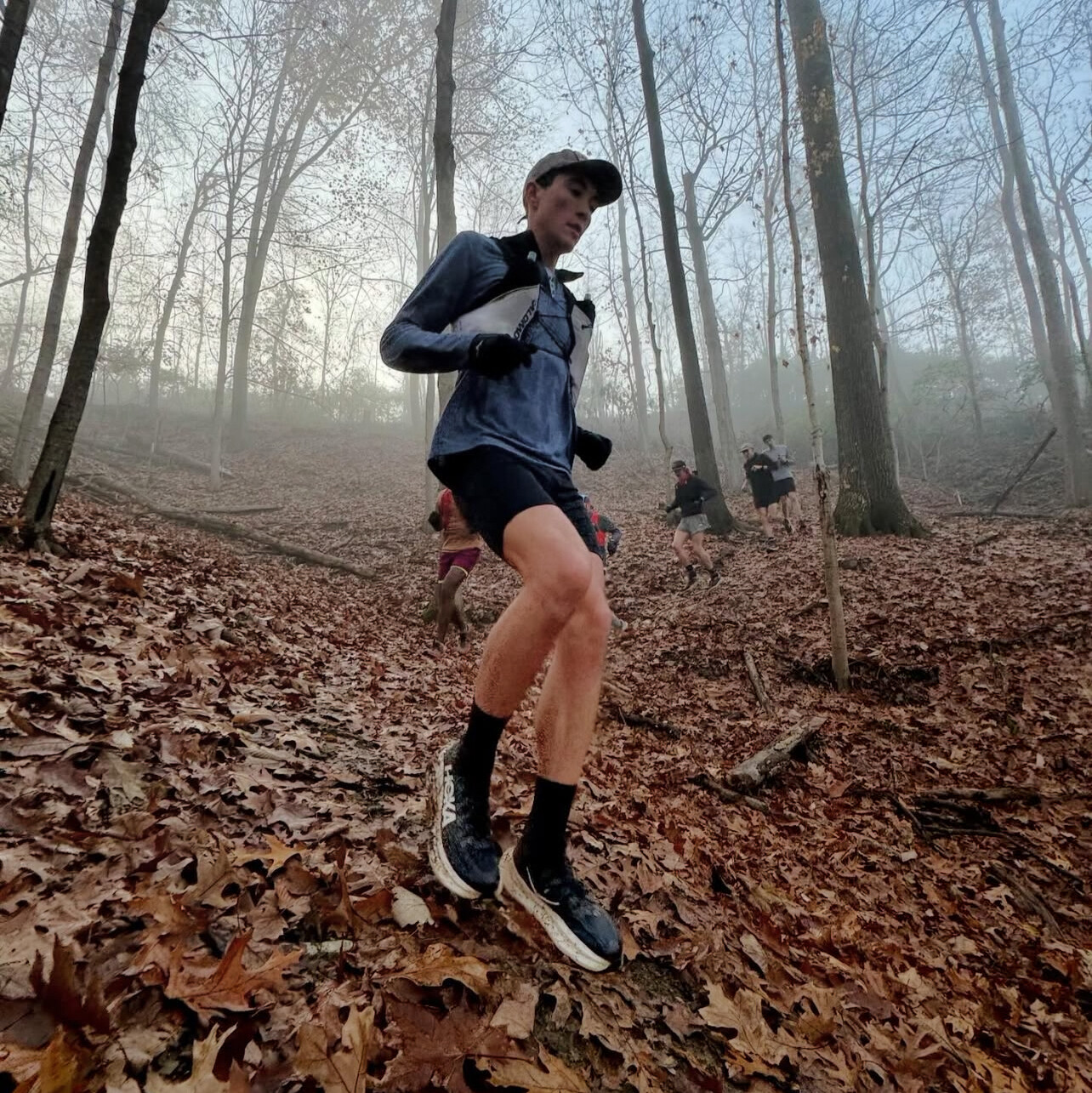
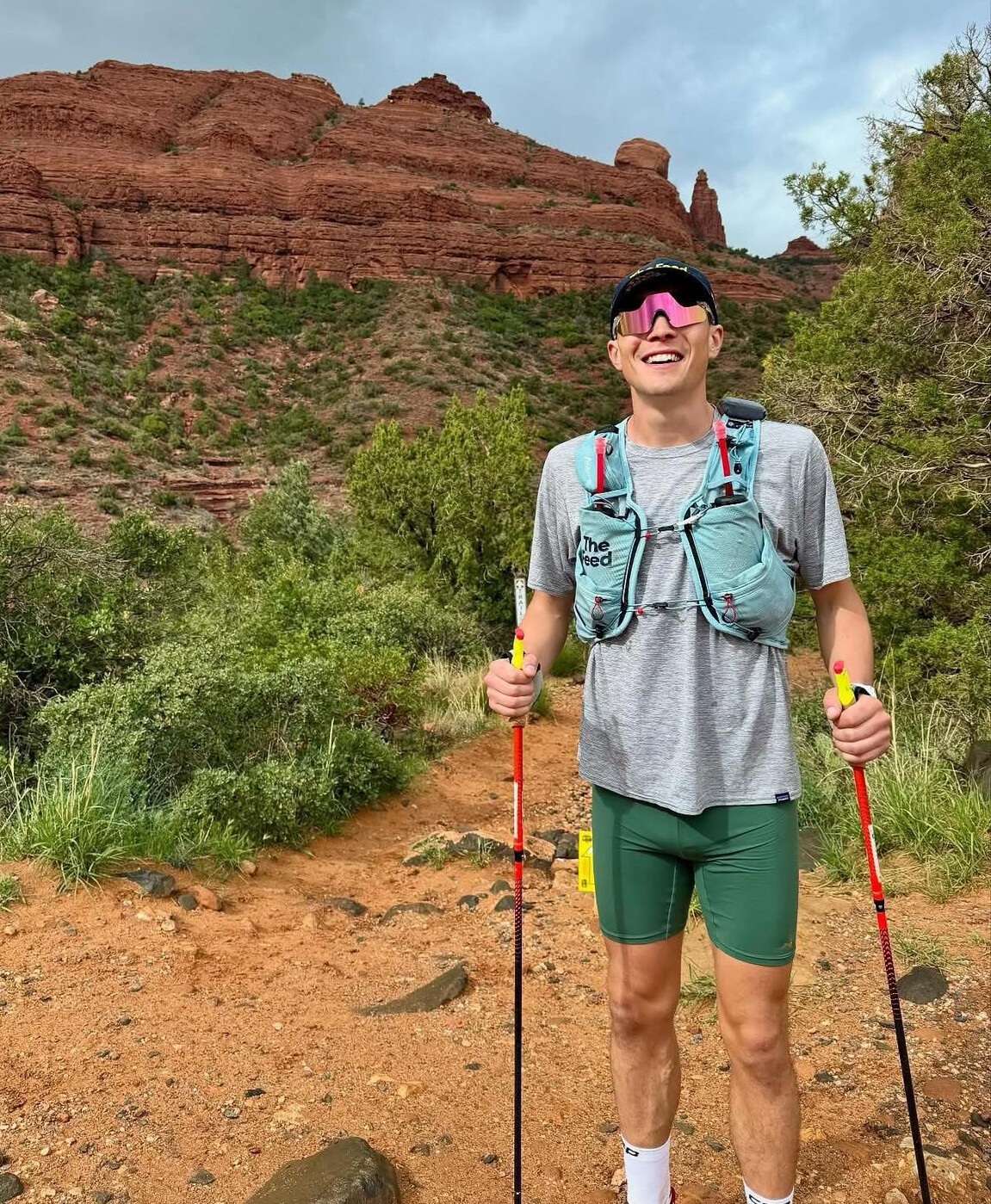
With over 40,000 feet of elevation gain, participants climb mountain passes, descend desert valleys, and navigate technical trails through towns rich in mining and frontier history—Crown King, Prescott, Jerome, Clarkdale, and Sedona—before reaching the final climb to Mount Elden and the finish in Flagstaff.
The terrain breakdown reflects the challenge:
• 45% single-track trails
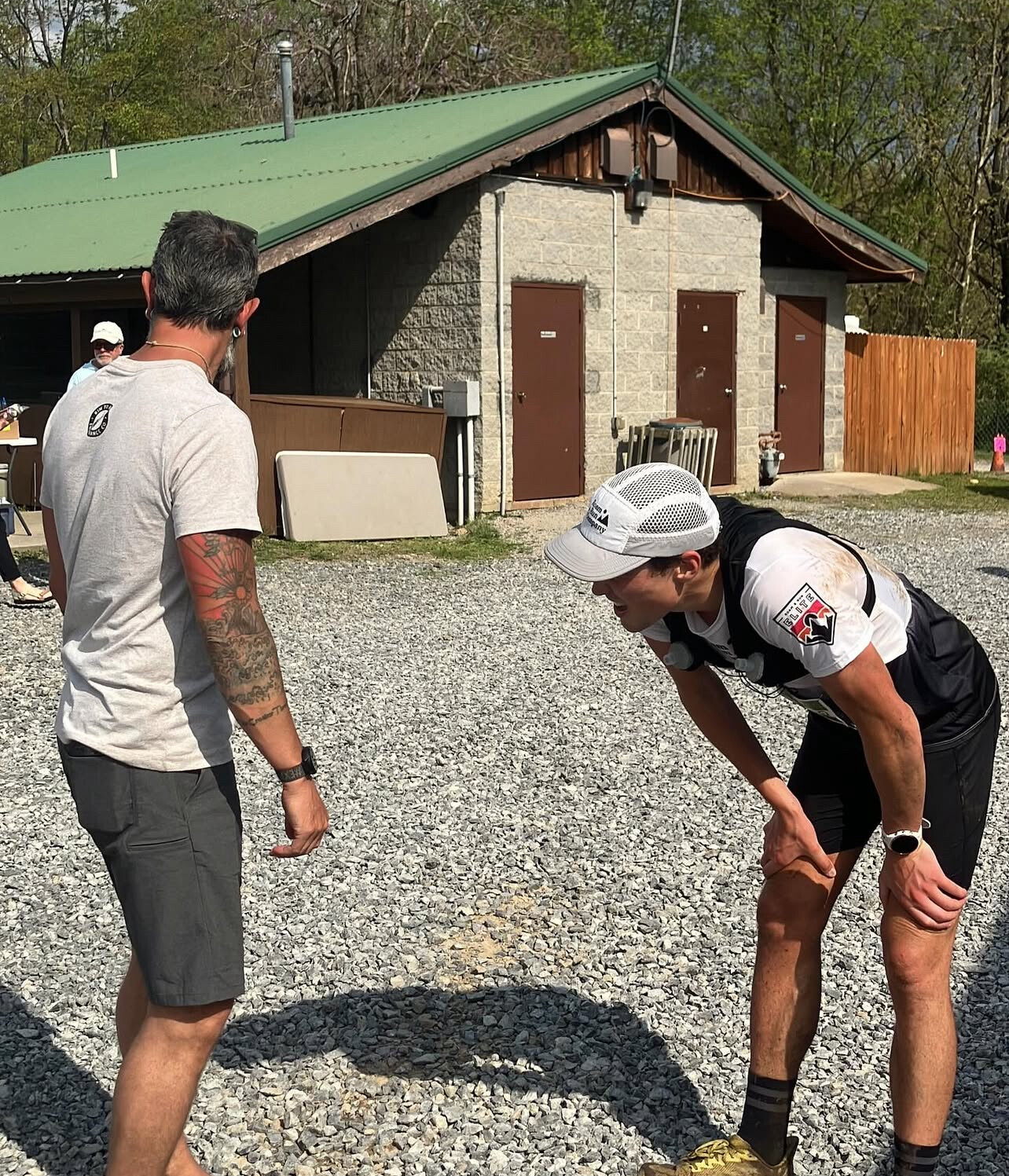
• 46% jeep and double-track roads
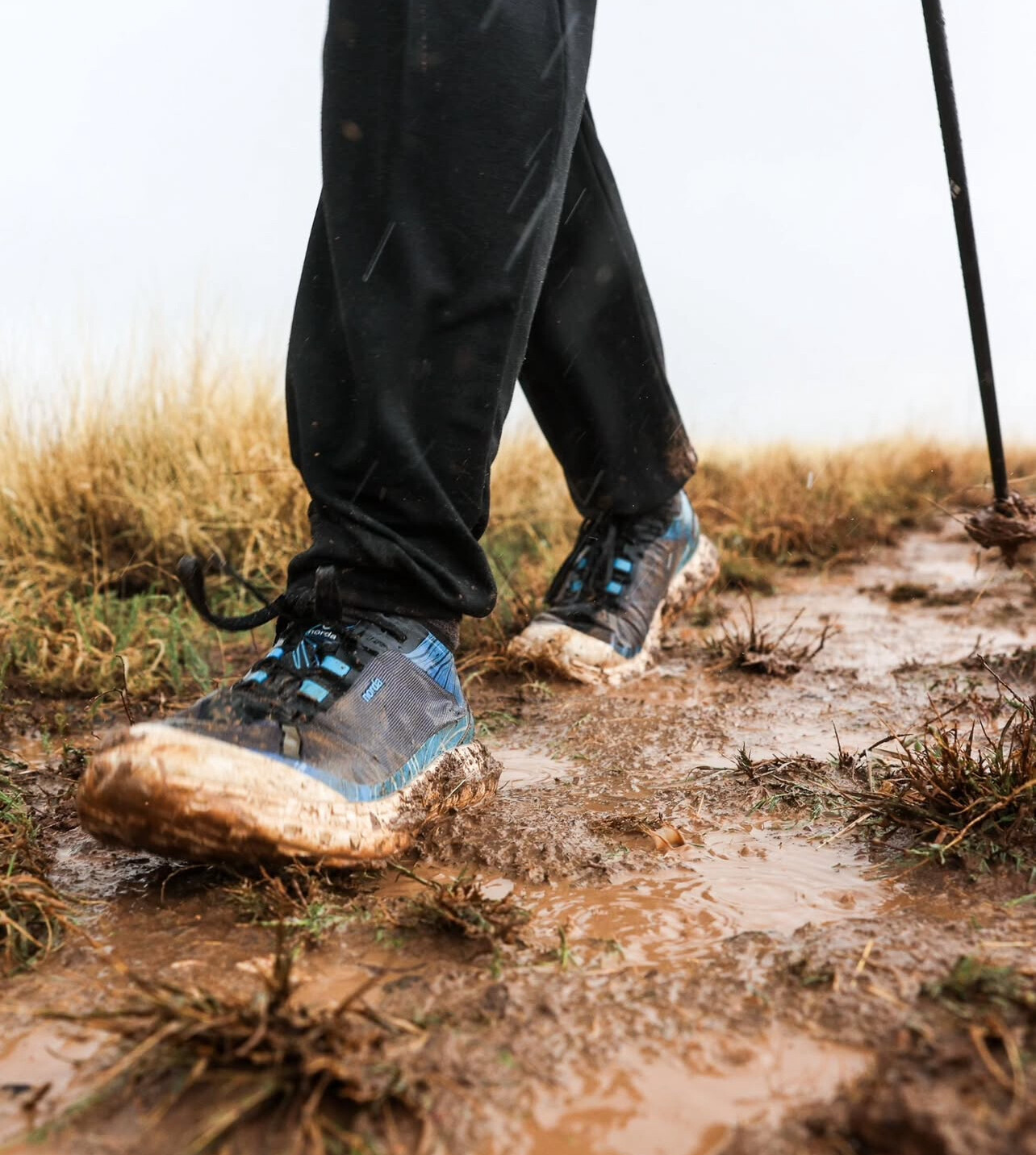
• 9% pavement
Runners face a 125-hour cutoff to complete the course, pushing through heat, altitude shifts, and sleep deprivation. With elevations ranging from 1,996 feet to over 9,200 feet, it’s a test of true ultrarunning grit.
For those who dare to take it on, Cocodona is more than a race—it’s a journey across time, terrain, and personal limits.
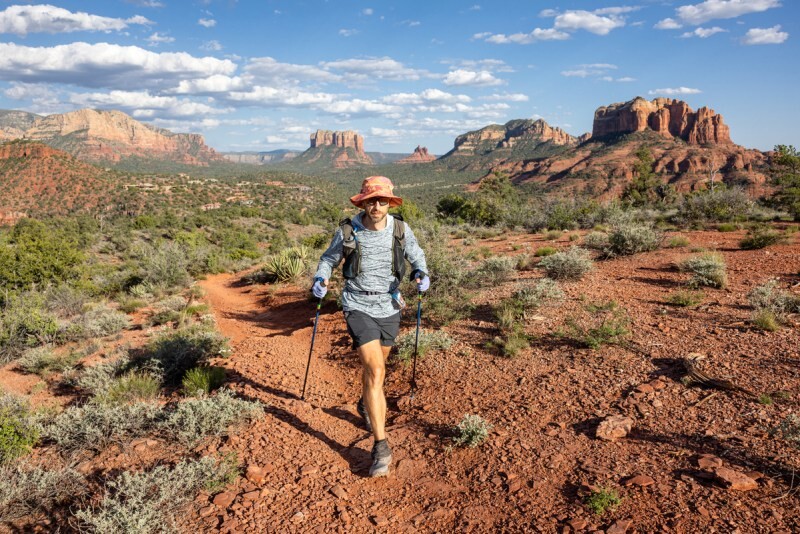
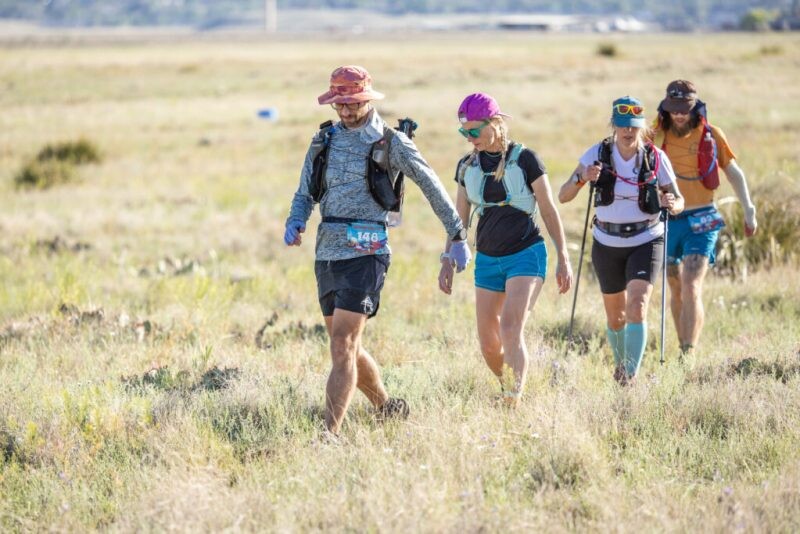
by Pros Baron
Login to leave a comment
Dan Green Wins Cocodona 250 in Record Time Averaging 13:45 per mile
Dan Green, a seasoned endurance athlete from Huntington West Virginia, took on the grueling Cocodona 250ultramarathon across Arizona this week—and not only finished the race, he won it in spectacular fashion.
Green completed the 256.5-mile course in 58 hours, 47 minutes, and 18 seconds, setting a new course record and surpassing the previous best by over an hour. That’s an average pace of 13 minutes and 45 seconds per mile—an incredible feat considering the race includes nearly 40,000 feet of elevation gain.
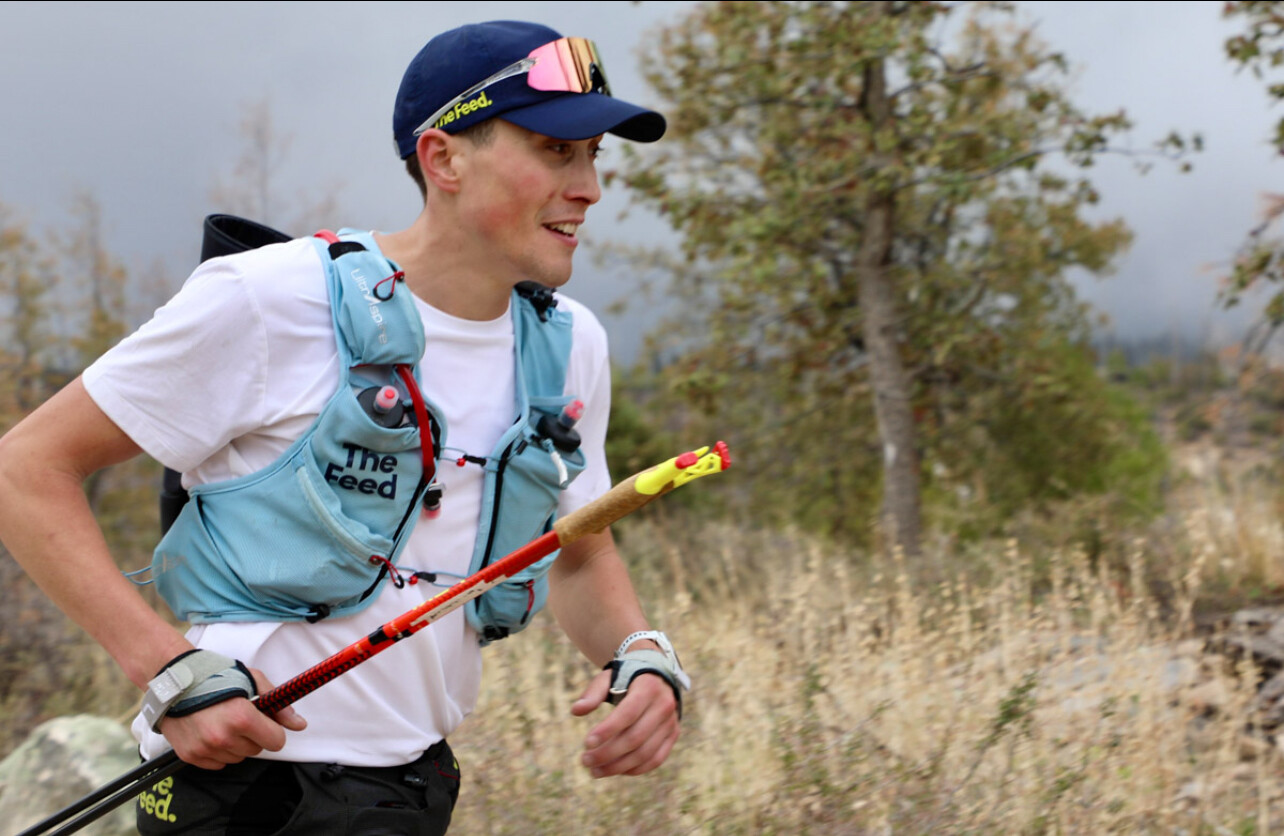
The Cocodona 250 is one of the most challenging ultramarathons in the world, stretching from Black Canyon City to Flagstaff, with runners navigating desert heat, rugged mountain trails, and rocky ascents through towns like Prescott, Jerome, and Sedona. The course is roughly 45% single-track trail, 46% jeep and dirt road, and just 9% paved.
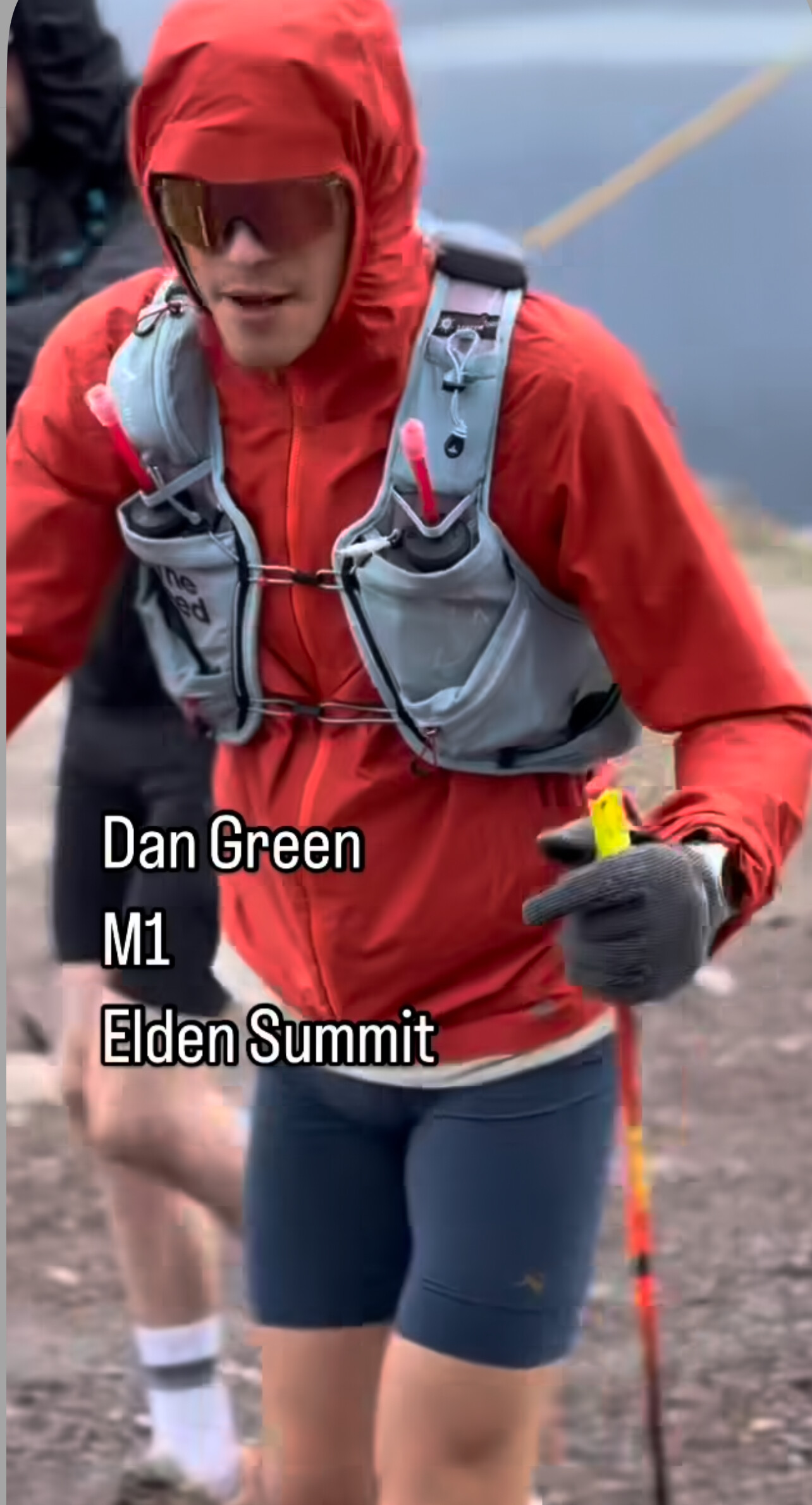
Top 5 Men’s Finishers

1. Dan Green (USA) – 58:47:18 (13:45/mi)
2. Ryan Sandes (South Africa) – 61:21:04
3. Edher Ramirez (Mexico) – 63:10:13
4. Harry Subertas – 65:28:53
5. Finn Melanson – 66:29:40

Women’s Champion
• Rachel Entrekin – 63:58:15
Set a new women’s course record by more than seven hours

Green’s calm and steady demeanor helped him manage the distance. Speaking with a reporter mid-race via video call, he said:
“Some people take it too seriously. Like why? I mean, you can have fun, still do good, and you can brighten people’s day a little better too.”
This mix of positivity and performance is exactly what the ultrarunning world thrives on—and Dan delivered both in Flagstaff.
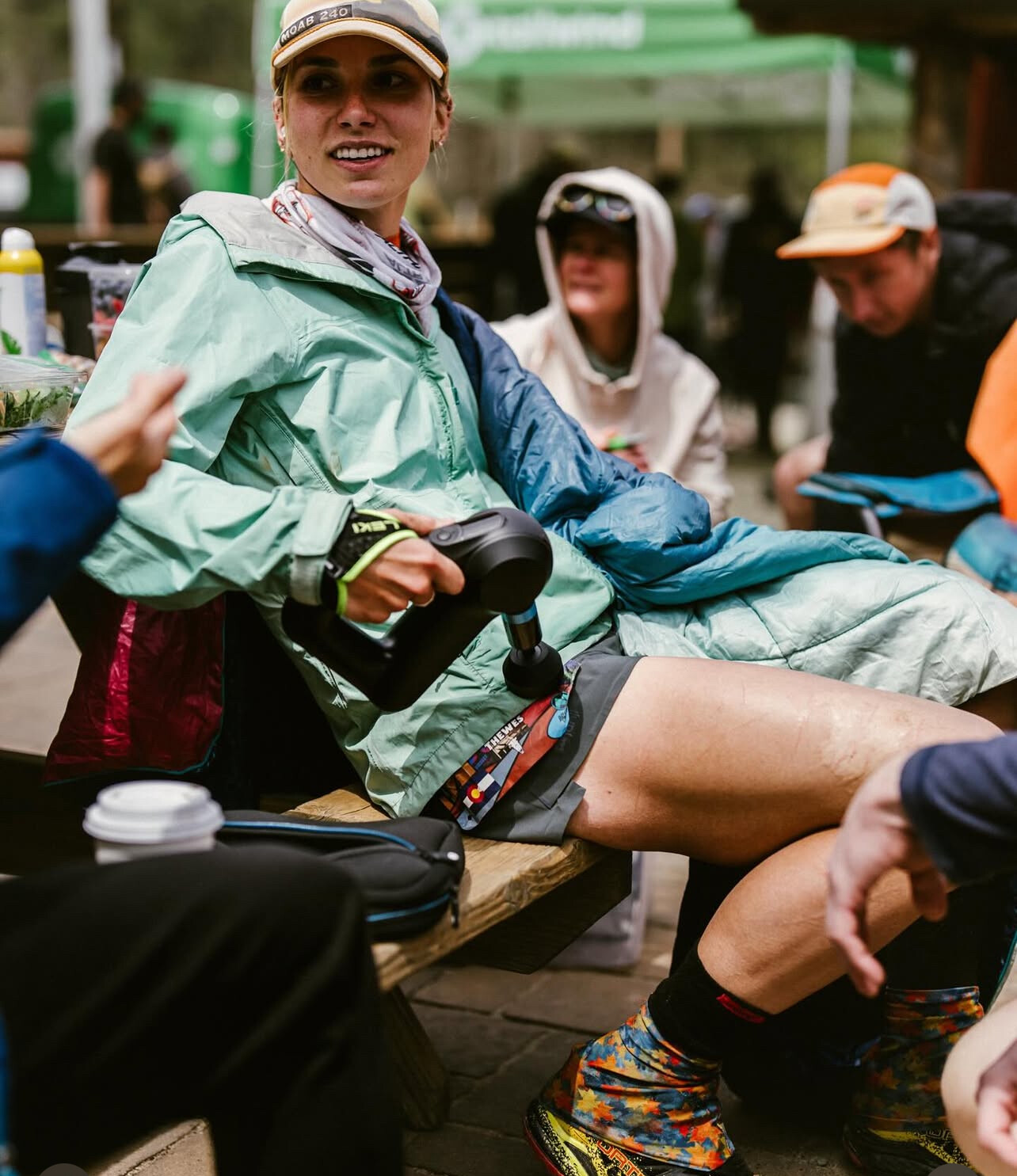
Cocodona 250 Quick Facts
• Distance: 256.5 miles
• Elevation Gain: ~40,000 ft
• Time Limit: 125 hours
• Cutting Through: Black Canyon, Crown King, Prescott, Jerome, Sedona, Flagstaff
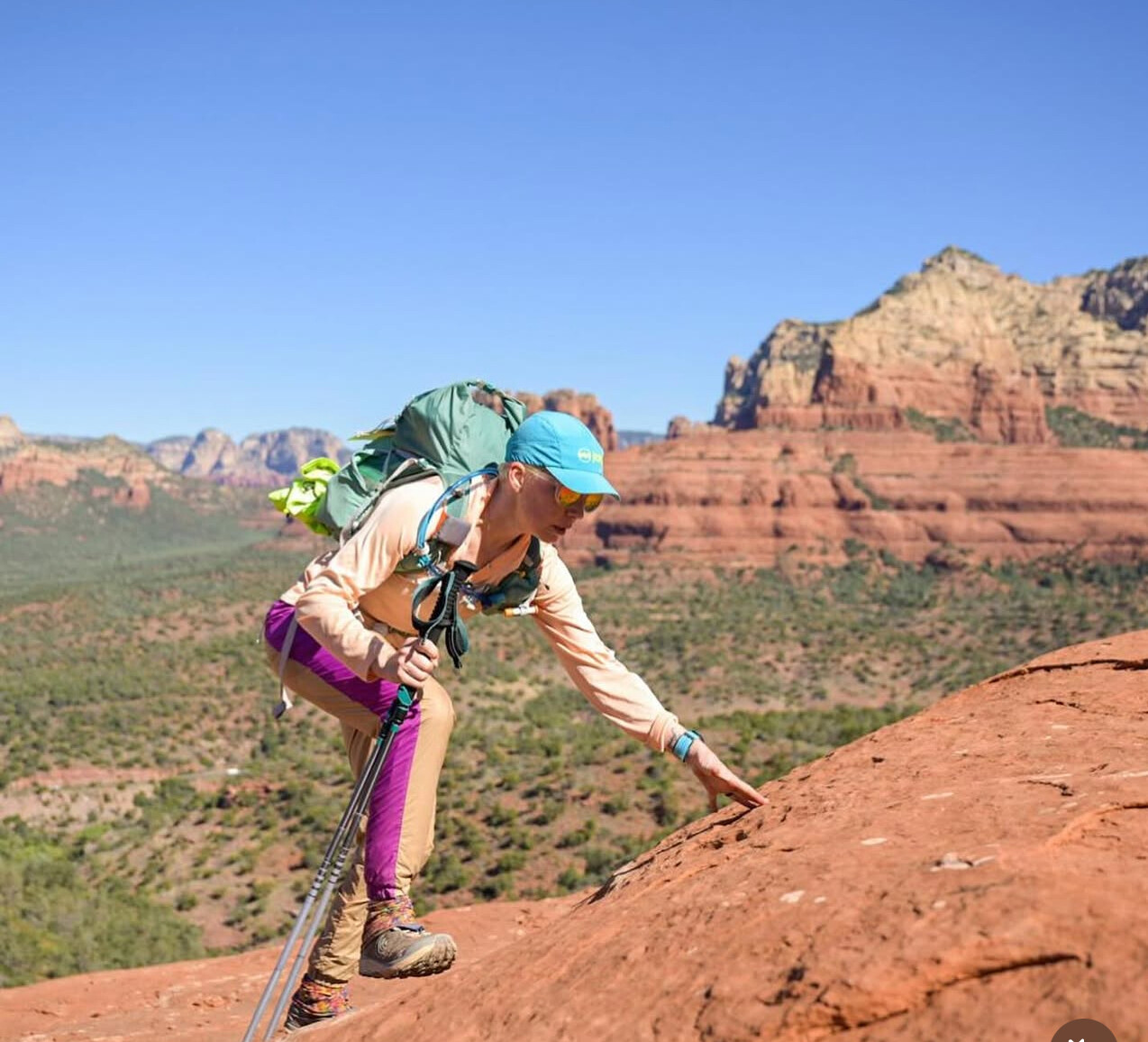
• Terrain Breakdown:
• 45% single-track trail
• 46% double-track/jeep road
• 9% pavement
"Congratulations to Dan Green—your new course record holder and a shining example of what grit, strategy, and a good attitude can achieve over 250+ miles," says MBR editor Bob Anderson
by Boris Baron
Login to leave a comment
Running on Vacation - The Rise of Destination Races and Wellness Travel
Runners are no longer just chasing personal bests—they’re chasing passport stamps, too. Around the world, thousands of runners are combining their love of travel with their passion for racing, fueling a surge in destination races and wellness-focused running getaways.
From the historic cobblestone streets of Rome to the snowcapped trails of Patagonia, destination races have become bucket-list experiences. These events are about more than just performance—they offer culture, adventure, and a chance to see the world on foot.
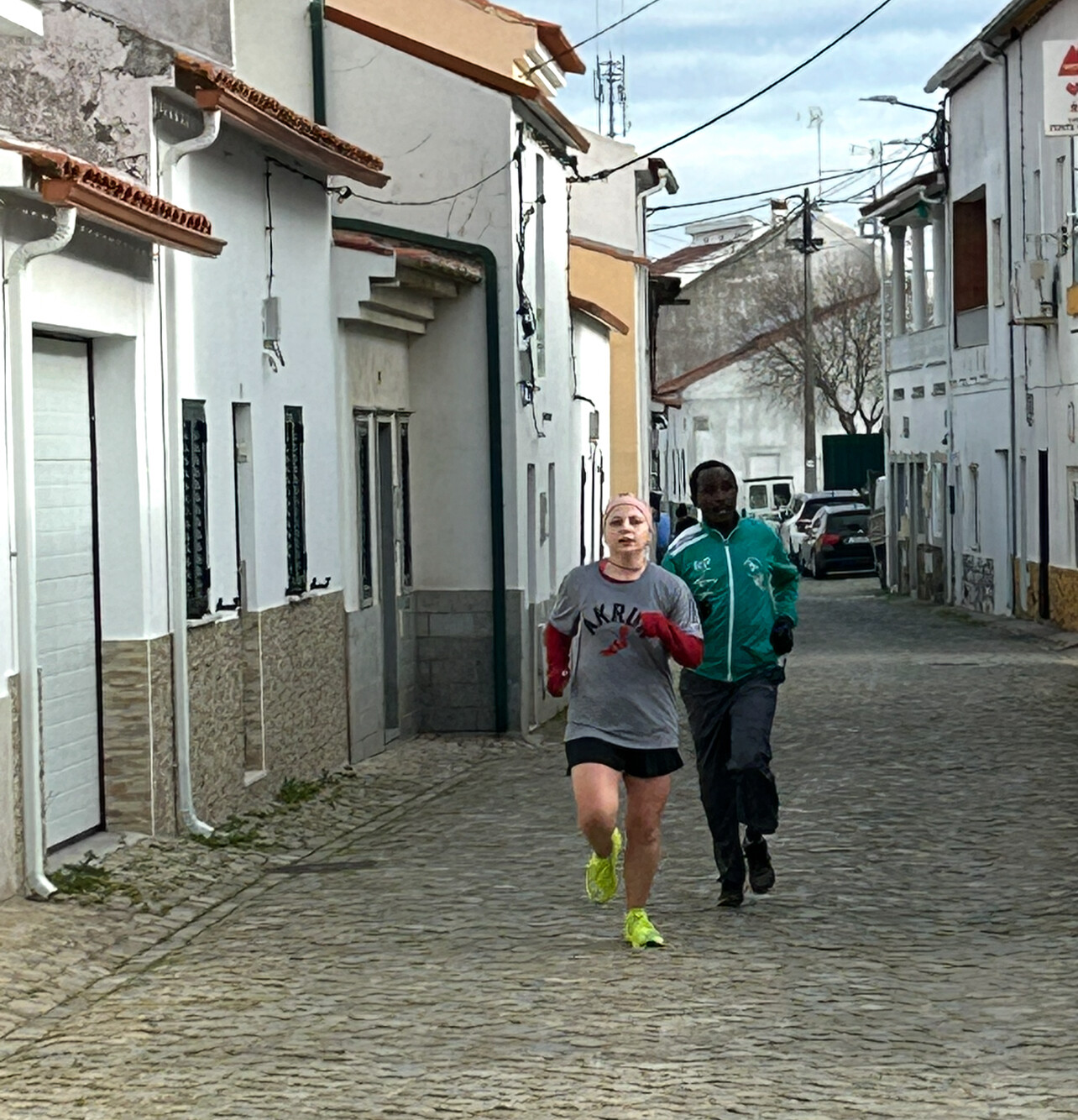
A Growing Global Trend
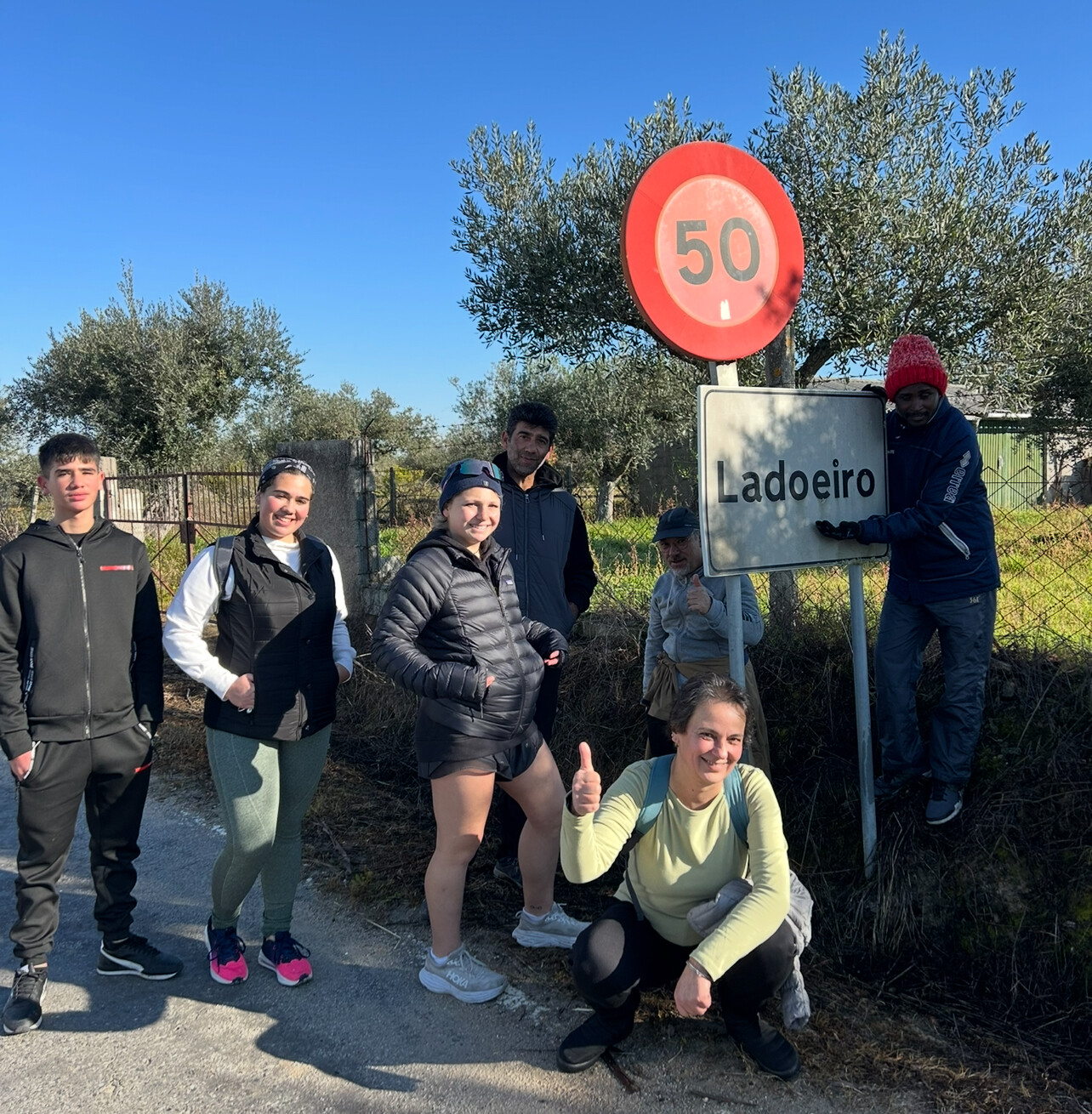
Race-cations are booming. Major marathons like Tokyo, Berlin, and Paris draw runners from dozens of countries each year, not only for the challenge but also for the immersive experience of racing through iconic cities. At the same time, trail and ultramarathons in remote locations—like the Patagonia International Marathon or the Jungfrau Marathon in Switzerland—offer a unique mix of endurance and awe-inspiring landscapes.
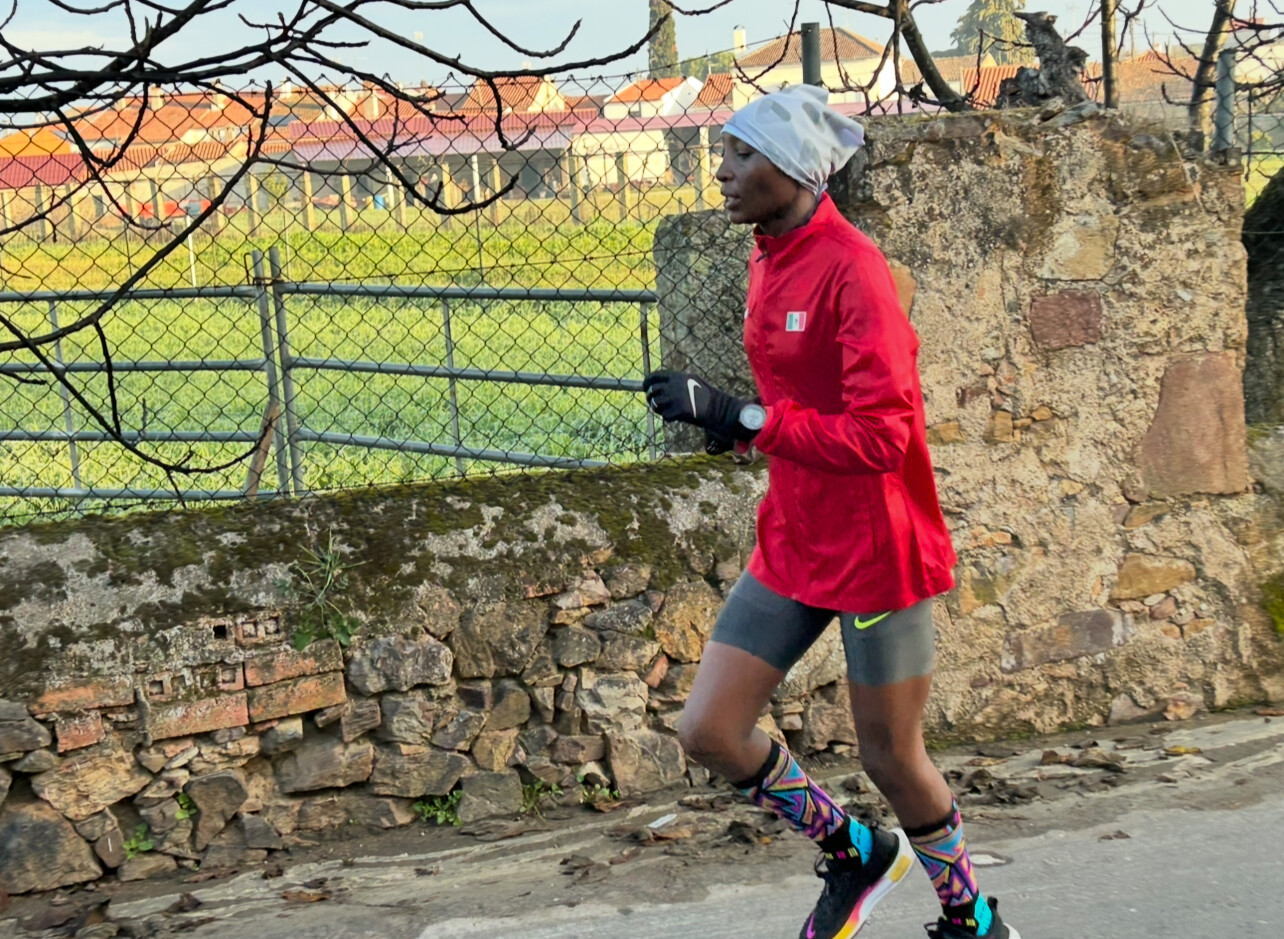
According to organizers, many participants plan these trips a year in advance, bringing along family and turning the event into a full vacation. Hotels, restaurants, and local tourism boards have taken note, often offering special packages around race weekends.
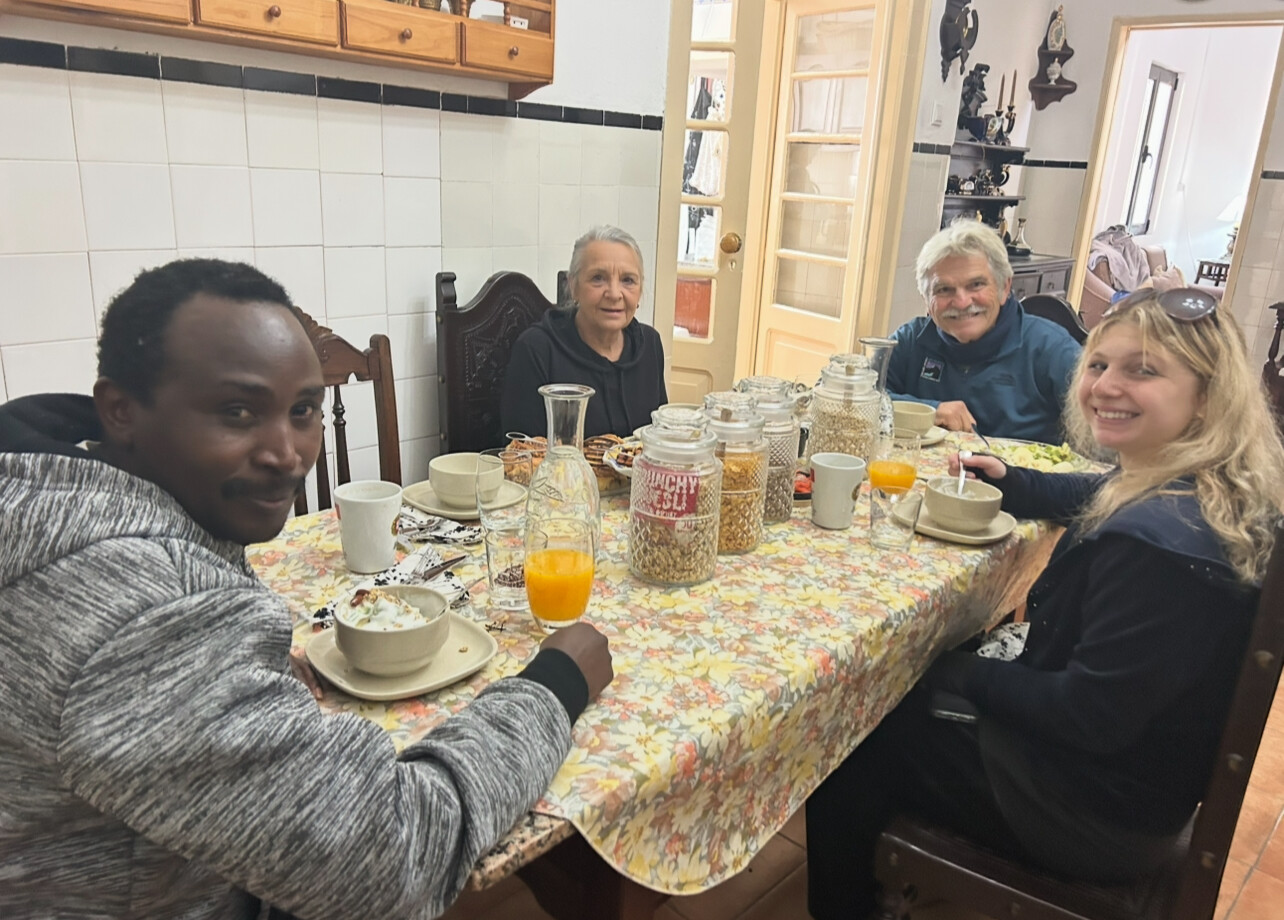
KATA Portugal and KATA Kenya: Tuning Up Abroad
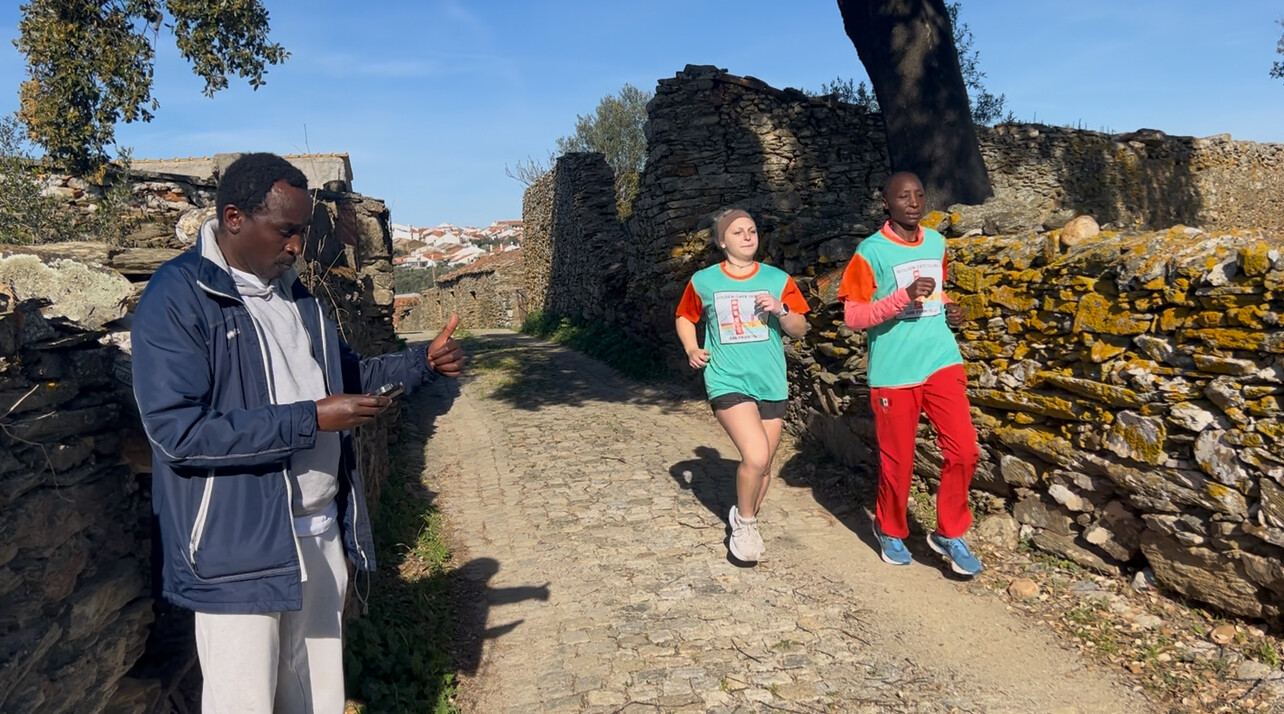
A growing number of runners are also adding a tune-up week to their itinerary—fine-tuning their fitness at dedicated training retreats before race day. Two of the most exciting options are KATA Portugal and KATA Kenya, both part of the Kenyan Athletics Training Academy network founded by running pioneer Bob Anderson.

KATA Portugal (photos 2-7), located in the scenic village of Monforte da Beira, offers personalized coaching, peaceful trails, home-cooked meals, and even massage and yoga—ideal before races like the Lisbon Marathon. Meanwhile, KATA Kenya (photo 8), based in the high-altitude town of Thika, provides a once-in-a-lifetime chance to train with world-class Kenyan athletes ahead of the Nairobi Marathon or other African events. Whether you’re a sub-3 marathoner or chasing your first finish, spending a week immersed in focused training can elevate the entire race-cation experience.
More Than a Medal
Wellness travel has also influenced the trend. Many destination races are now paired with yoga retreats, spa treatments, and recovery days in scenic locations. Runners can find themselves soaking in Icelandic hot springs after a half marathon or tasting wine in the Douro Valley after a 10K.
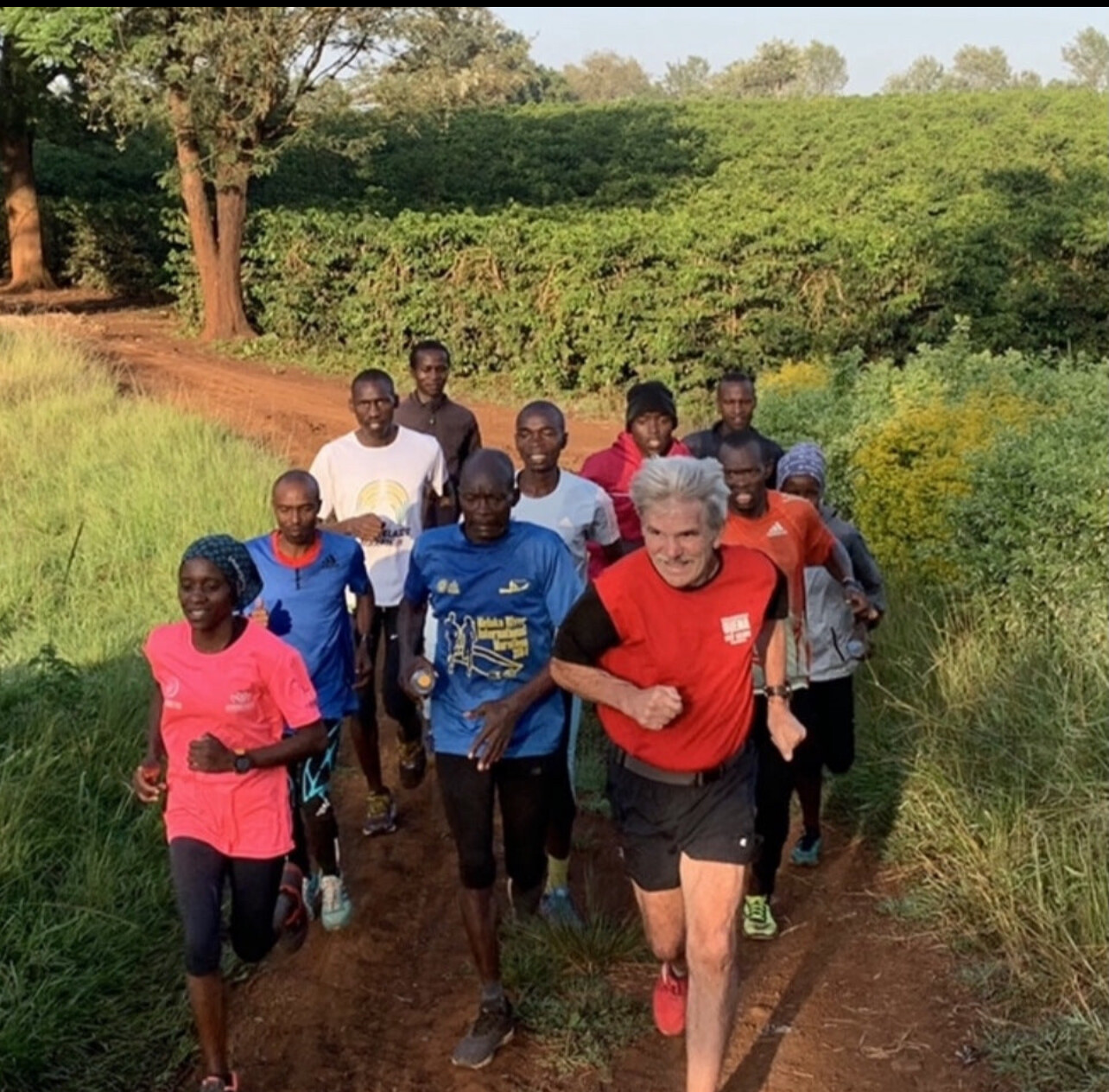
And the camaraderie is real. “There’s something unforgettable about running through a city or countryside you’ve never seen before with people who came from every corner of the globe,” says Sarah Kim, a five-time international marathoner. “You share the course, the culture, and the challenge.”
Tips for Planning a Race-Cation
• Pick Your Race Wisely: Choose an event that fits your fitness level and time zone adjustment. Be mindful of climate and elevation, too.
• Plan Around the Race: Arrive a few days early to acclimate, but schedule your sightseeing after the race. You’ll appreciate it more on rested legs.
• Pack Smart: Don’t rely on finding gear at your destination. Bring your trusted shoes, race-day fuel, and any recovery tools you use.
• Make It Memorable: Book a special meal, visit a famous landmark, or sign up for a local tour. Racing abroad is as much about the experience as it is about the finish line.
Looking Ahead
As international travel continues to rebound, destination races will likely play an even bigger role in the running world. For those who train hard year-round, what better reward than a race that ends with a view—and maybe a glass of local wine?
by Boris Baron
Login to leave a comment
Brigid Kosgei and Amos Kipruto Lead the Deepest Fields Ever at Haspa Marathon Hamburg
European star Karoline Grovdal targets historic debut
The 39th edition of the Haspa Marathon Hamburg on Sunday promises to be the fastest and most competitive in the event’s history. Headlining the men’s race are Kenya’s Amos Kipruto and Ethiopia’s Kinde Atanaw, both with personal bests under 2:04. Meanwhile, former women’s world record holder Brigid Kosgei leads a stellar women’s lineup, becoming the fastest woman ever to start in Hamburg.
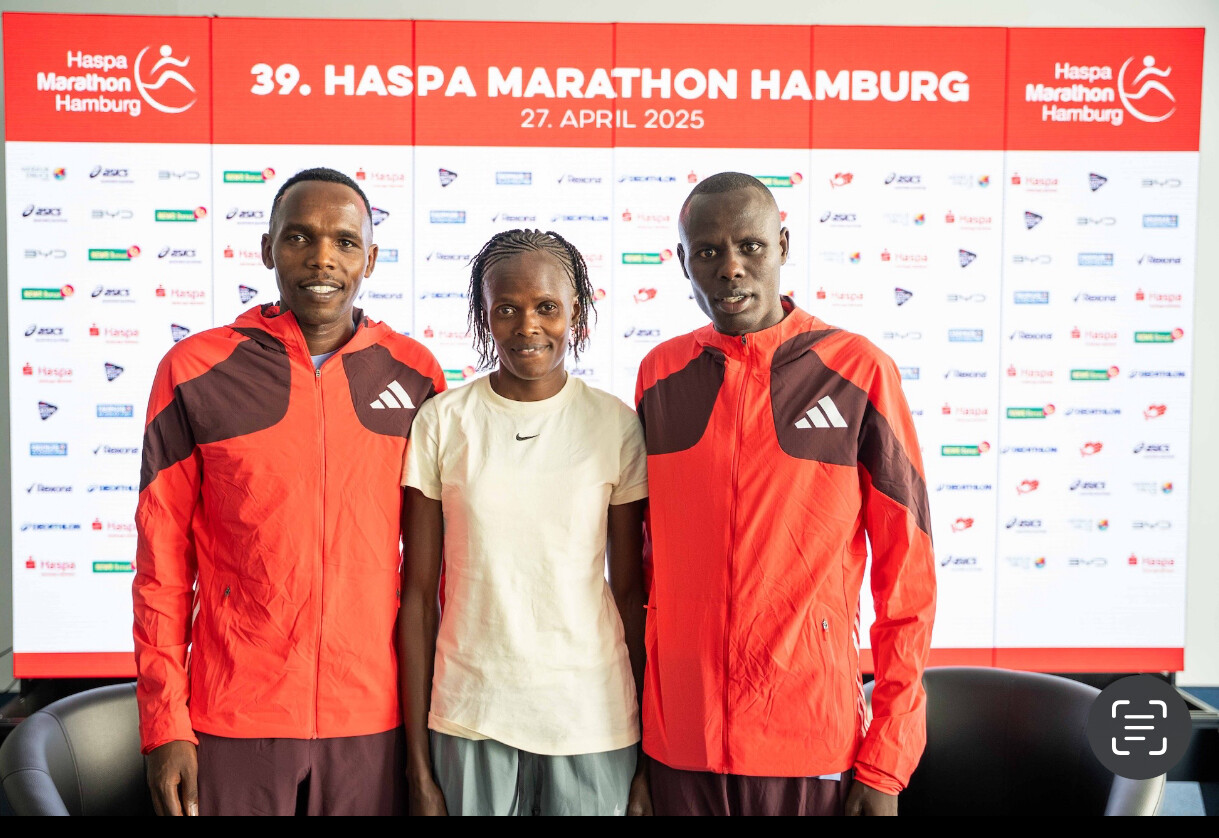
A total of 15,000 runners have entered Germany’s biggest spring marathon, with 38,000 participants across all weekend events—setting a new record. “We are experiencing another running boom, and our elite fields are stronger than ever,” said Chief Organiser Frank Thaleiser.
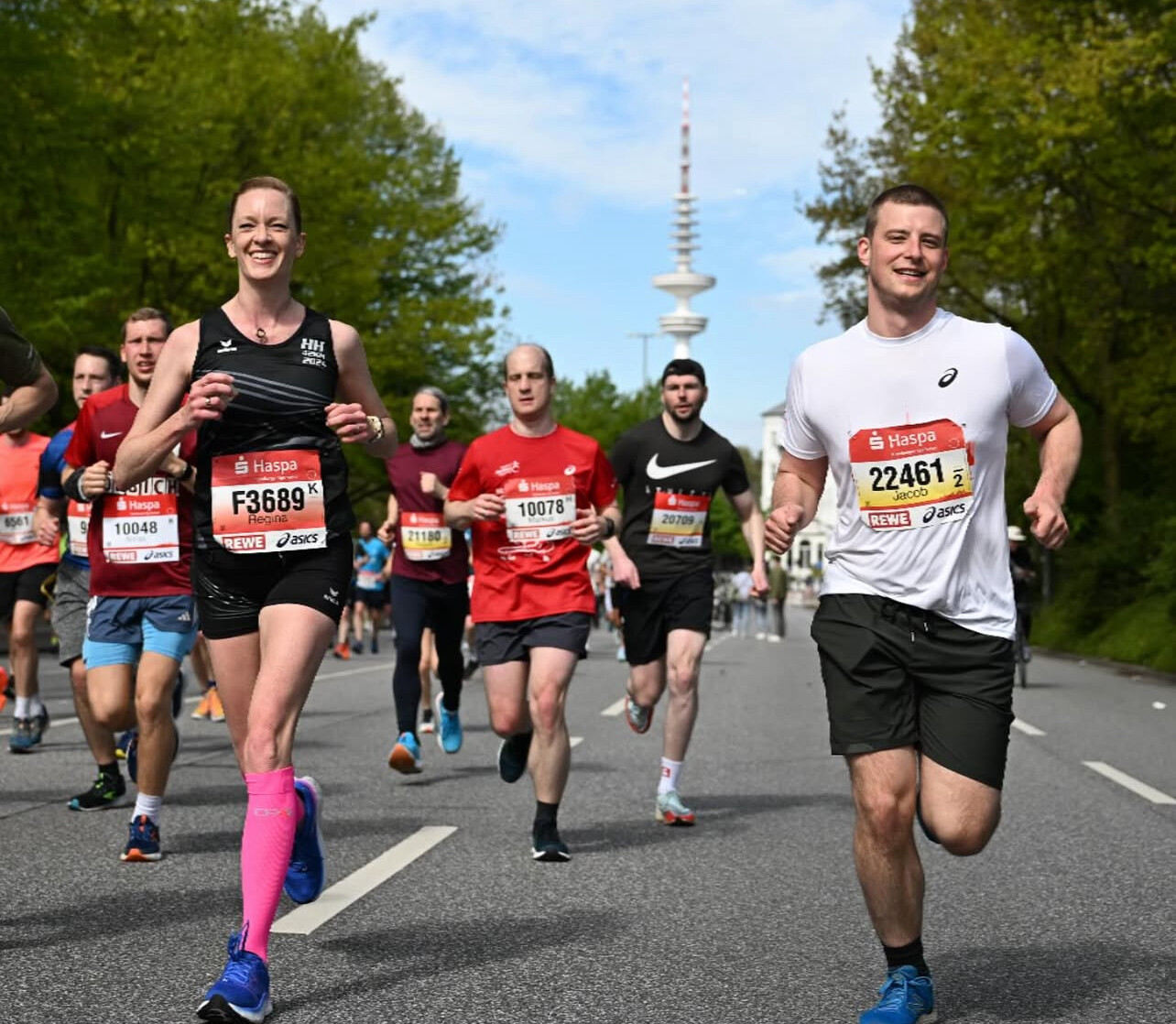
With near-perfect weather conditions forecasted, fast times are expected. The men’s course record of 2:04:09, set by Bernard Koech in 2023, could be under threat, with the potential for Hamburg’s first sub-2:04 performance.
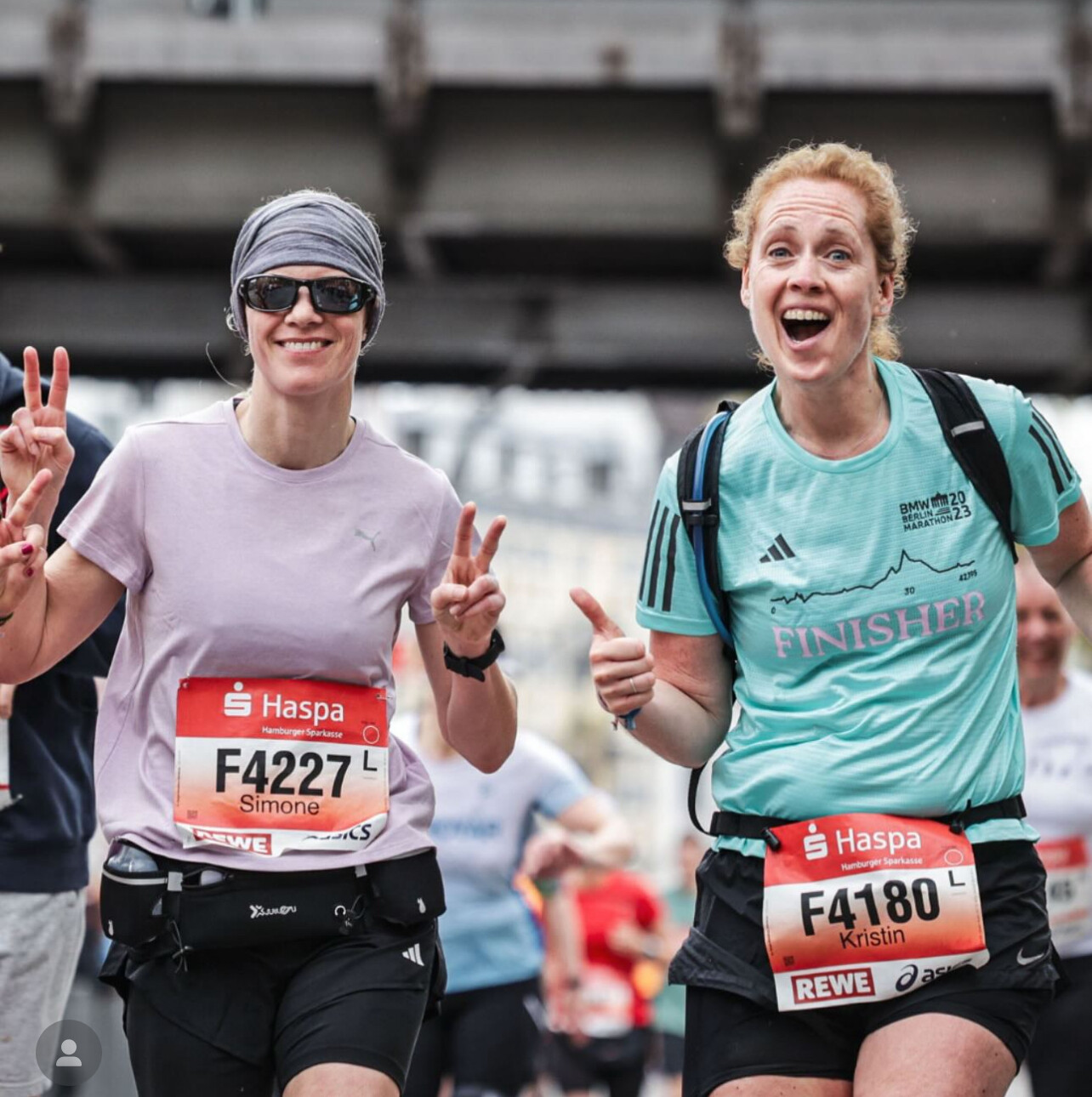
Amos Kipruto, who ran a personal best of 2:03:13 when finishing second behind Eliud Kipchoge in Tokyo 2022, is focused on running fast. “If I had the choice, a personal best would mean more to me than victory,” said Kipruto at the pre-race press conference. He’ll be joined by Kinde Atanaw (2:03:51), Tsegaye Getachew (2:04:49), and Philemon Kiplimo (2:04:56) in chasing the record. Kiplimo, who finished third in Hamburg last year, knows the course well and is aiming for an aggressive second half after a planned 62:00 opening.
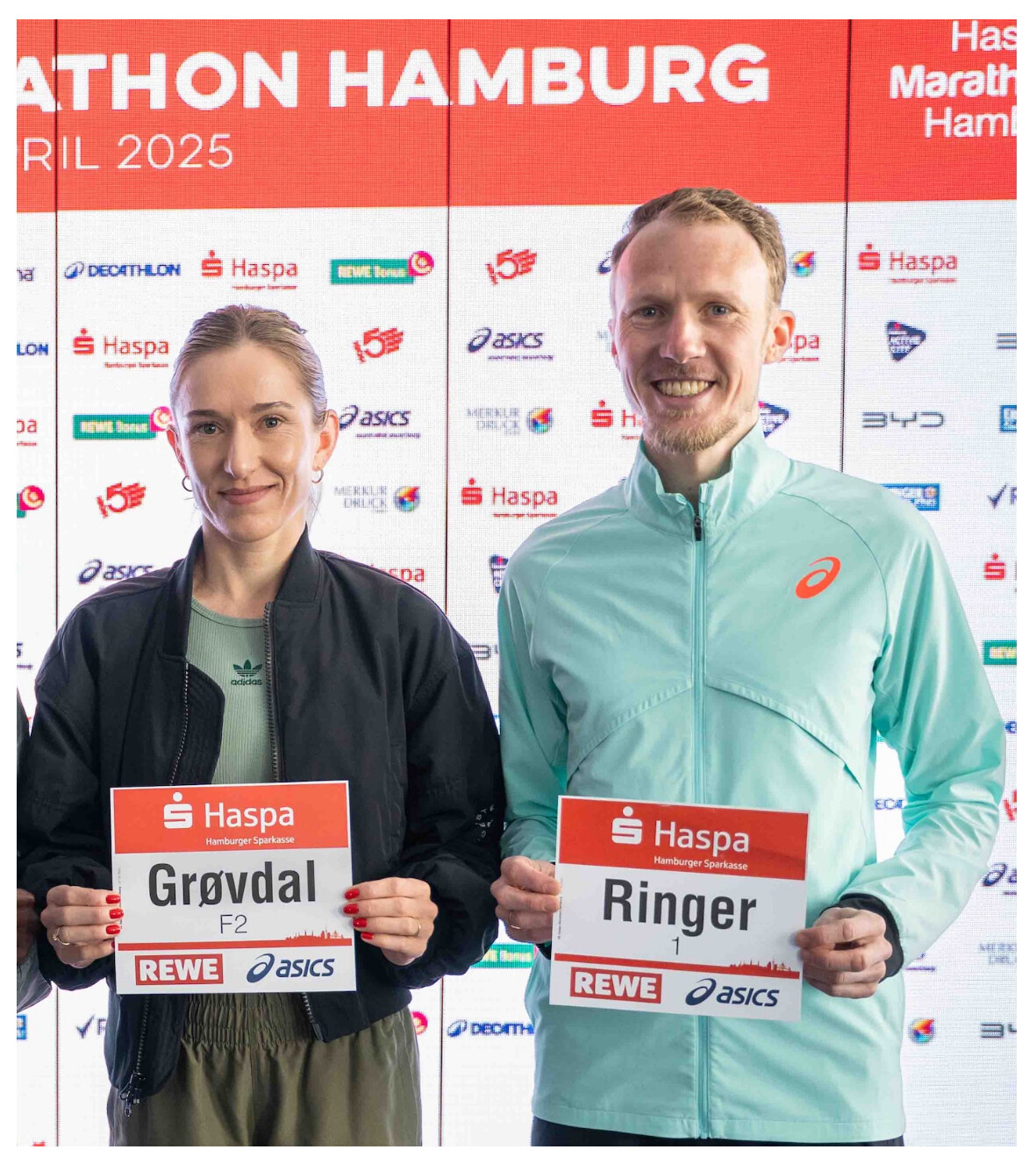
Germany’s top hope is Richard Ringer, the 2022 European marathon champion, who recently improved his personal best to 2:05:46. “I want to improve my Hamburg result from last year and aim to run under 2:07:00,” said Ringer, who also ran a new half marathon PB of 60:51 in Berlin this spring.
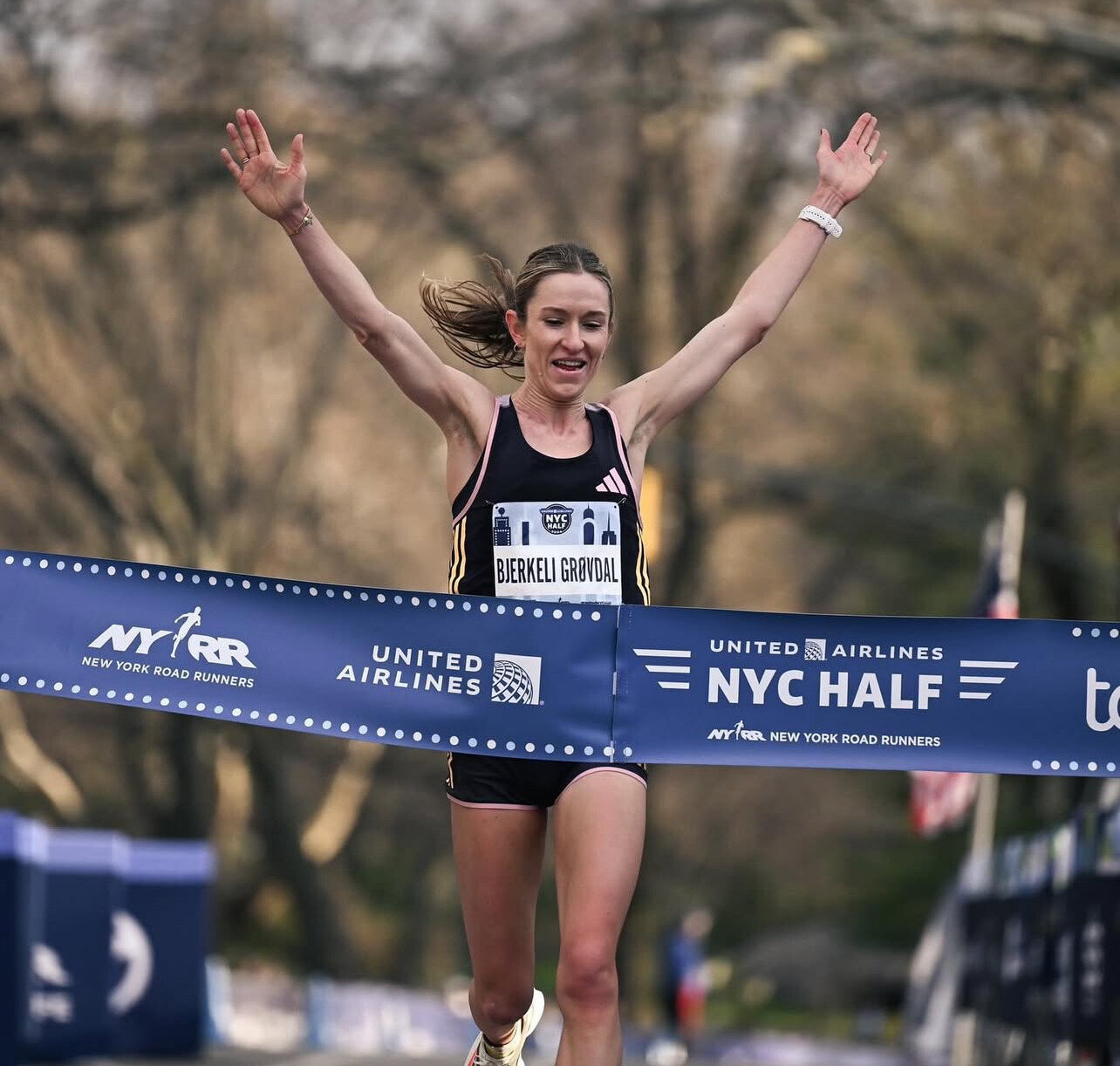
On the women’s side, Brigid Kosgei is back after battling injury, having last raced at the 2023 London Marathon where she clocked 2:19:02. Kosgei, who broke Paula Radcliffe’s long-standing world record with her 2:14:04 performance in Chicago 2019, is confident: “I am fit now and excited to run a good race in Hamburg.”
The women’s course record of 2:17:23, set by Ethiopia’s Yalemzerf Yehualaw in 2022, will be tough to beat, but with Kosgei, Ethiopia’s Workenesh Edesa (2:18:51), and rising star Sichala Kumeshi (2:20:42) in the field, a sub-2:20 finish is very possible. Edesa recently won in Osaka with 2:21:00 and is aiming to go faster, while Kumeshi is coming off a strong victory in Houston under tough conditions.
A major European storyline is Norway’s Karoline Grovdal, who will make her marathon debut. Grovdal, a multiple European Champion and last year’s half marathon gold medalist in Rome, is targeting Ingrid Kristiansen’s legendary Norwegian record of 2:21:06—set in London back in 1985 when it was a world record.
Elite Field Highlights
Men:
Amos Kipruto (KEN) – 2:03:13
Kinde Atanaw (ETH) – 2:03:51
Tsegaye Getachew (ETH) – 2:04:49
Philemon Kiplimo (KEN) – 2:04:56
Kebede Tulu (ETH) – 2:05:19
Goitom Kifle (ERI) – 2:05:28
Richard Ringer (GER) – 2:05:46
Others include Awet Habte (ERI, 2:06:25), Felix Kibitok (KEN, 2:06:28), and Julien Wanders (SUI, 2:11:52)
Women:
Brigid Kosgei (KEN) – 2:14:04
Workenesh Edesa (ETH) – 2:18:51
Etagegn Woldu (ETH) – 2:20:03
Sichala Kumeshi (ETH) – 2:20:42
Karoline Grovdal (NOR) – Marathon Debut
Others include Shitaye Eshete (BRN, 2:21:33) and Natasha Cockram (GBR, 2:26:14)
by Race News Service with Boris Baron
Login to leave a comment
Haspa Marathon Hamburg
The HASPA MARATHON HAMBURG is Germany’s biggest spring marathon and since 1986 the first one to paint the blue line on the roads. Hamburcourse record is fast (2:05:30), the metropolitan city (1.8 million residents) lets the euphoric atmosphere spill over and carry you to the finish. Make this experience first hand and follow the Blue Line....
more...Diamond League 2025 Begins Saturday in Xiamen: Distance Stars Ready to Shine on Global Stage
The 2025 Wanda Diamond League kicks off this Saturday, April 26, in Xiamen, China, launching the most prestigious one-day series in global track and field. With 15 elite meets on the calendar, this year’s circuit serves as both a proving ground and a preview for the World Athletics Championships in Tokyo this September.
While Olympic champion Grant Holloway will headline the sprint hurdles, it’s the middle- and long-distance events in Xiamen that promise some of the most compelling matchups of the weekend.

Chebet vs. Tsegay in the Women’s 5000m
Saturday’s most anticipated race may be the women’s 5000m, featuring a classic Kenya vs. Ethiopia showdown.
Beatrice Chebet, the reigning Olympic champion and world record holder in the 10,000m, opens her Diamond League campaign against Gudaf Tsegay, the reigning 5000m world champion and world record holder. With personal bests of 14:05.92 (Chebet) and 14:00.21 (Tsegay), the two are expected to push each other deep into record territory.
They’ll be challenged by rising Ethiopian talents Freweyni Hailu and Birke Haylom, both capable of delivering world-class performances.
Kipyegon Returns in the 1000m
Also making her season debut is Kenyan superstar Faith Kipyegon, who will race the rarely-run 1000m. The two-time Olympic and world champion is the current world record holder in both the 1500m and the mile.
In Xiamen, she’ll face Jamaica’s Natoya Goule-Toppin and Uganda’s Halimah Nakaayi, both of whom are known for their championship pedigree over 800m. The 1000m offers an ideal distance for Kipyegon to sharpen her speed and stamina heading into the summer.
Men’s 3000m Steeplechase: A Deep Field Emerges
The men’s 3000m steeplechase will feature a stacked lineup, with top athletes from Kenya, Ethiopia, and Morocco vying for early-season dominance. With the event’s tradition of upsets and tactical drama, this race will be one to watch for fans of distance racing.
2025 Wanda Diamond League Schedule
Following Xiamen, the Diamond League tour travels to 14 more cities before the two-day final in Zurich. Here’s the full schedule:
• April 26 – Xiamen, China
• May 3 – Shanghai/Suzhou, China
• May 16 – Doha, Qatar
• May 25 – Rabat, Morocco
• June 6 – Rome, Italy
• June 12 – Oslo, Norway
• June 15 – Stockholm, Sweden
• June 20 – Paris, France
• July 5 – Eugene, USA
• July 11 – Monaco
• July 19 – London, UK
• August 16 – Silesia, Poland
• August 20 – Lausanne, Switzerland
• August 22 – Brussels, Belgium
• August 27–28 – Zurich, Switzerland (Diamond League Final)
The series leads directly into the 2025 World Athletics Championships, set for September 13–21 at Japan National Stadium in Tokyo.
by Boris Baron
Login to leave a comment
Showdowns Set to Define 2025 Diamond League Season with over 9 million in prize money
With the season opener just days away, rivalries from 800m to 10,000m are heating up on the Road to Zurich
The 2025 Wanda Diamond League kicks off on April 26 in Xiamen, China, launching a new season of high-stakes track and field action. For the world’s best middle- and long-distance runners, this marks the beginning of the Road to the Final—a journey that will culminate in Zurich on August 27–28.
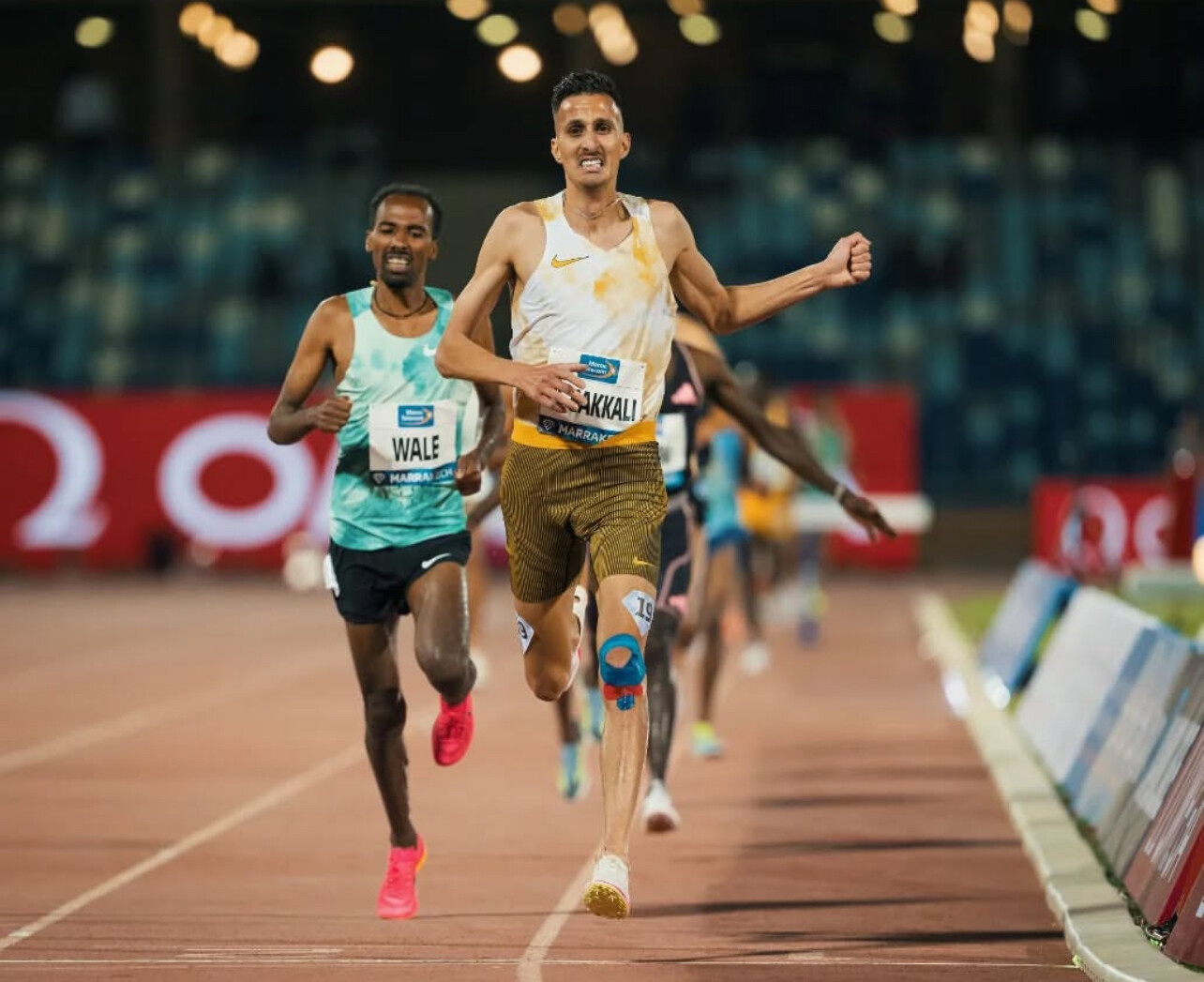
And if the early headlines are any indication, the upcoming season will be nothing short of electric.
Ingebrigtsen vs. Kerr: A Rivalry Rekindled
One of the fiercest rivalries in the sport will light up the men’s 1500m once again as Jakob Ingebrigtsen and Josh Kerr go head-to-head at the London Diamond League on July 19.

Their tension has been simmering since Kerr stunned Ingebrigtsen to win the world title in Budapest in 2023. The Norwegian responded with a strong victory in Zurich, but the scoreboard is far from settled.
Ingebrigtsen, now chasing his fifth career Diamond League title, will also line up against Olympic medalists Yared Nuguse and Cole Hocker in the Bowerman Mile at the Prefontaine Classic in Eugene on July 5, setting up another world-class clash.
Doha’s Steeplechase Rematch
The women’s 3000m steeplechase promises a rematch of Olympic proportions in Doha, where Winfred Yavi will face off against fellow medalists Peruth Chemutai and Faith Cherotich.
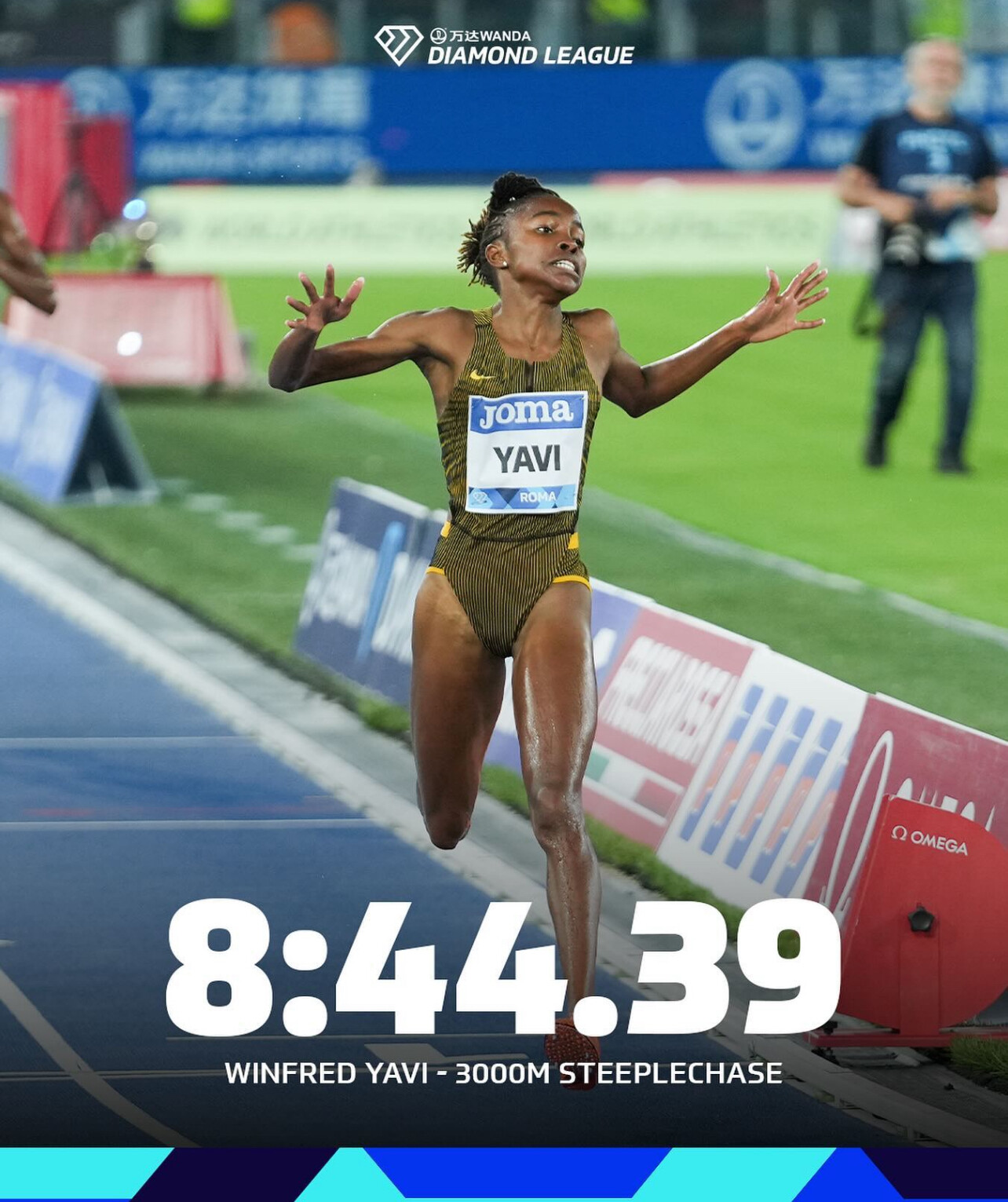
Yavi, the reigning Olympic champion, came within a whisker of the world record in Rome last season, while Cherotich enters 2025 as the Diamond League titleholder. Their early-season clash in Qatar could set the tone for one of the most compelling storylines in women’s distance running.
Eyes on Rome: A Distance-Lover’s Dream
The Pietro Mennea Golden Gala in Rome on June 6 is already shaping up to be one of the key middle- and long-distance showpieces of the year.
While final entries are still being confirmed, the women’s 800m is expected to feature a powerhouse lineup, potentially including Keely Hodgkinson, Athing Mu, and Mary Moraa. On the men’s side, stars like Emmanuel Wanyonyi, Marco Arop, and Djamel Sedjati are expected to battle for points in a crowded field of Olympic contenders.
Rome, known for producing fast times and historic finishes, could once again deliver career-defining performances.
2025: A Season Built for Distance Drama
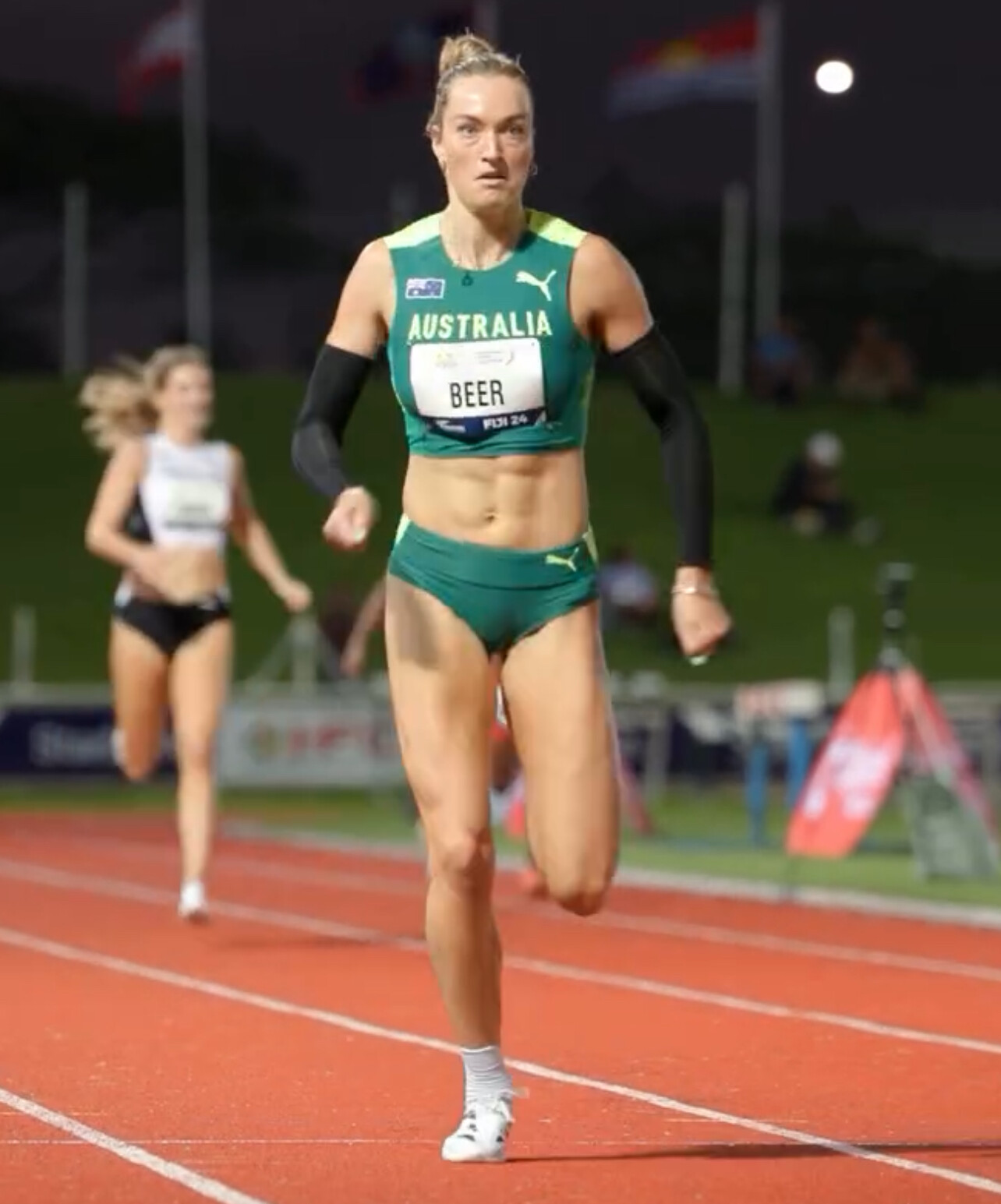
The Wanda Diamond League includes 14 series meets across four continents, leading to the two-day Final in Zurich, where only the top point-earners will compete for the Diamond Trophy. With increased prize money—ranging from $30,000 to $50,000 per discipline at series meetings and $60,000 to $100,000 at the Final—and millions watching worldwide, every race matters.
2025 is already shaping up to be a banner year for middle- and long-distance running. With fierce rivalries, Olympic-level fields, and rising stars chasing career breakthroughs in the 800m, 1500m, mile, steeplechase, 5000m, and 10,000m, the stage is set for one of the most thrilling Diamond League seasons yet.
by Boris Baron
Login to leave a comment
Antonio Rao, 92, Completes 30th Consecutive Rome Marathon in 6:44:16
In an inspiring display of endurance and passion, 92-year-old Italian runner Antonio Rao completed his 30th consecutive Rome Marathon on March 16, 2025. Finishing the 42.195 km course in 6 hours, 44 minutes, and 16 seconds, Rao continues to defy age-related expectations and inspire runners worldwide.
Rao’s marathon journey began in 1995, and he has not missed a single Rome Marathon since. This year’s race marked his third marathon finish in his 90s. Notably, in 2023, he set an Italian men’s 90+ age-group record with a time of 6:14:44, showcasing his remarkable consistency and dedication to the sport.
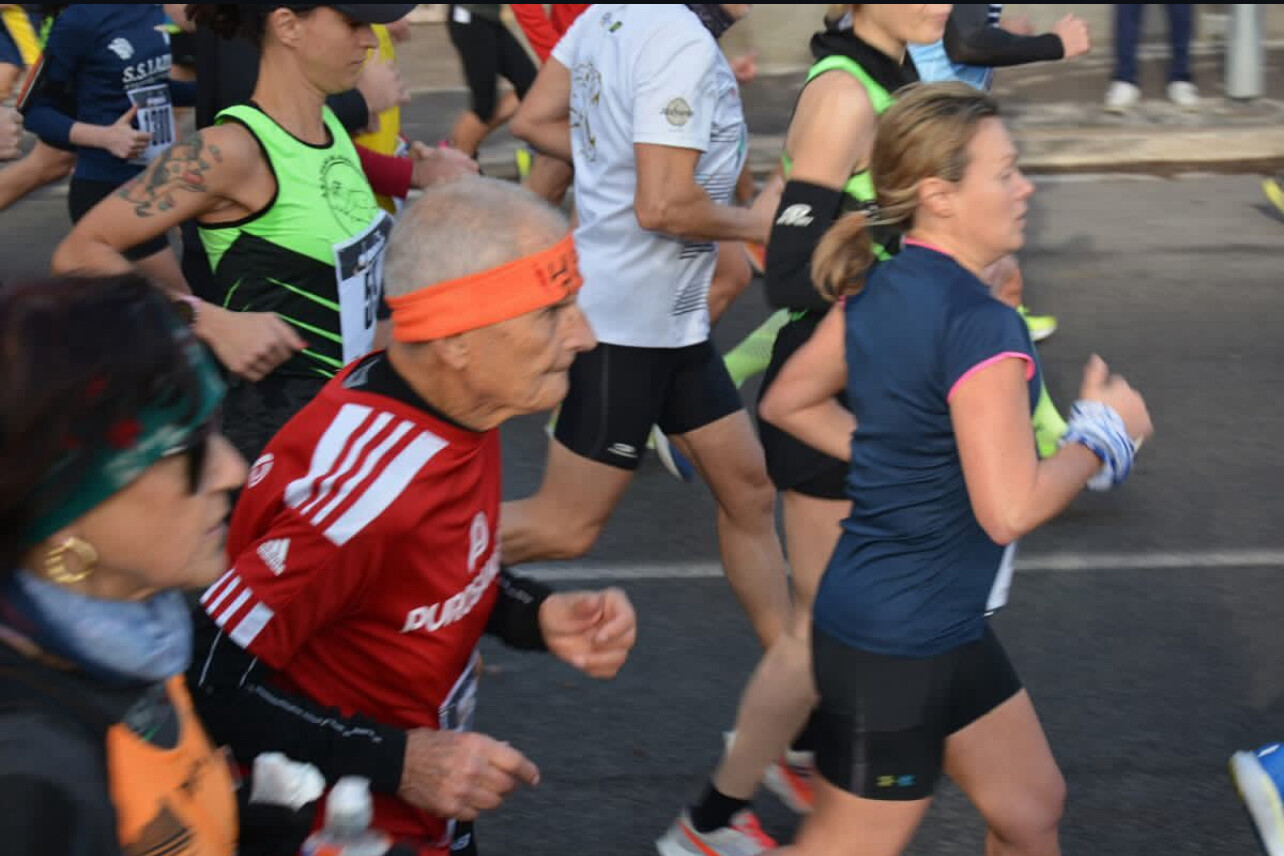
Despite facing health challenges leading up to the race, Rao expressed surprise at his performance: “I haven’t been feeling well lately, and I didn’t think I could finish it,” he admitted. “Instead, I finished with a time 10 minutes faster than last year.”
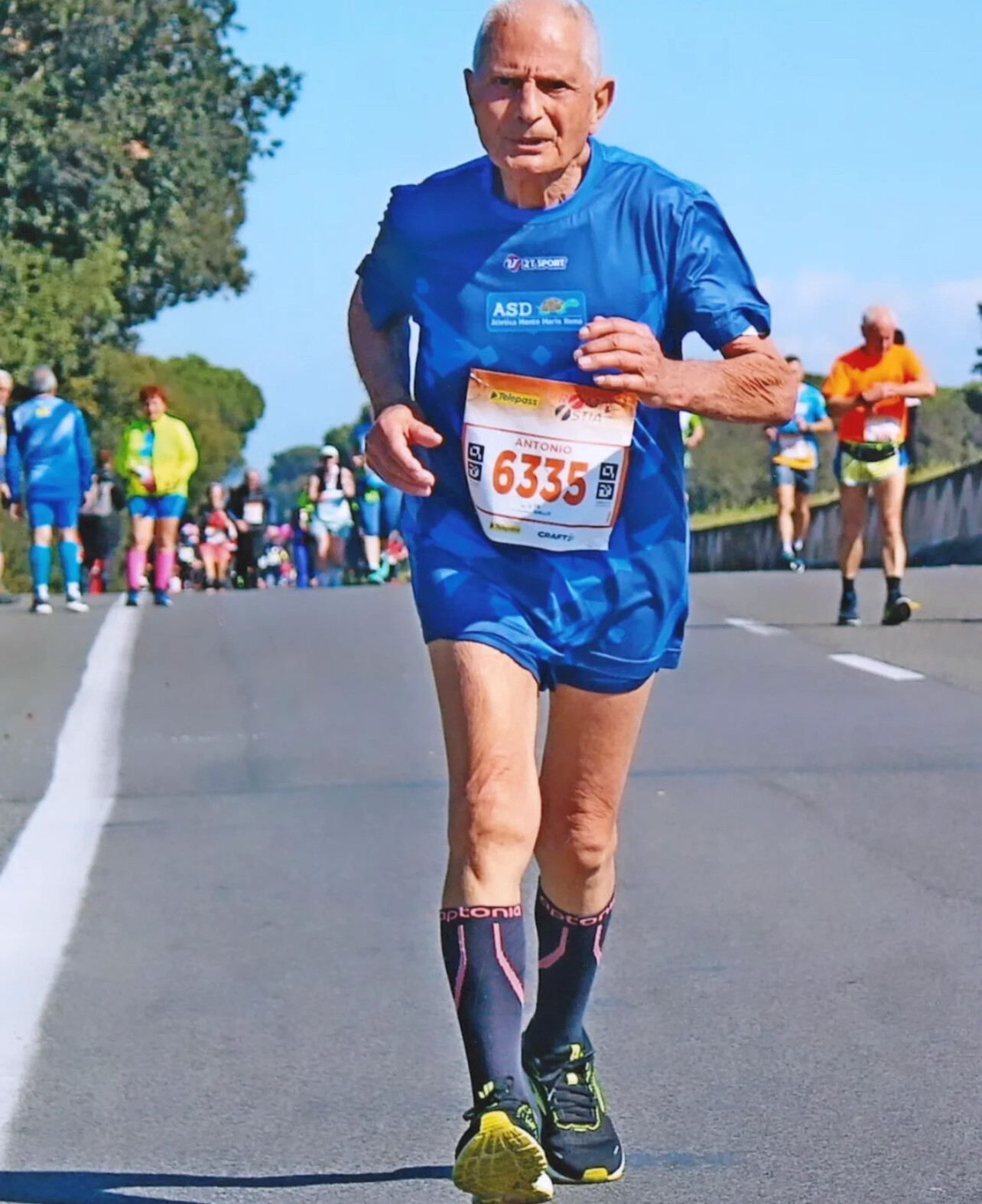
In addition to his marathon achievements, Rao also completed the Roma-Ostia Half Marathon (blue shirt) just weeks prior, finishing in 2 hours and 54 minutes, further demonstrating his unwavering commitment to running.
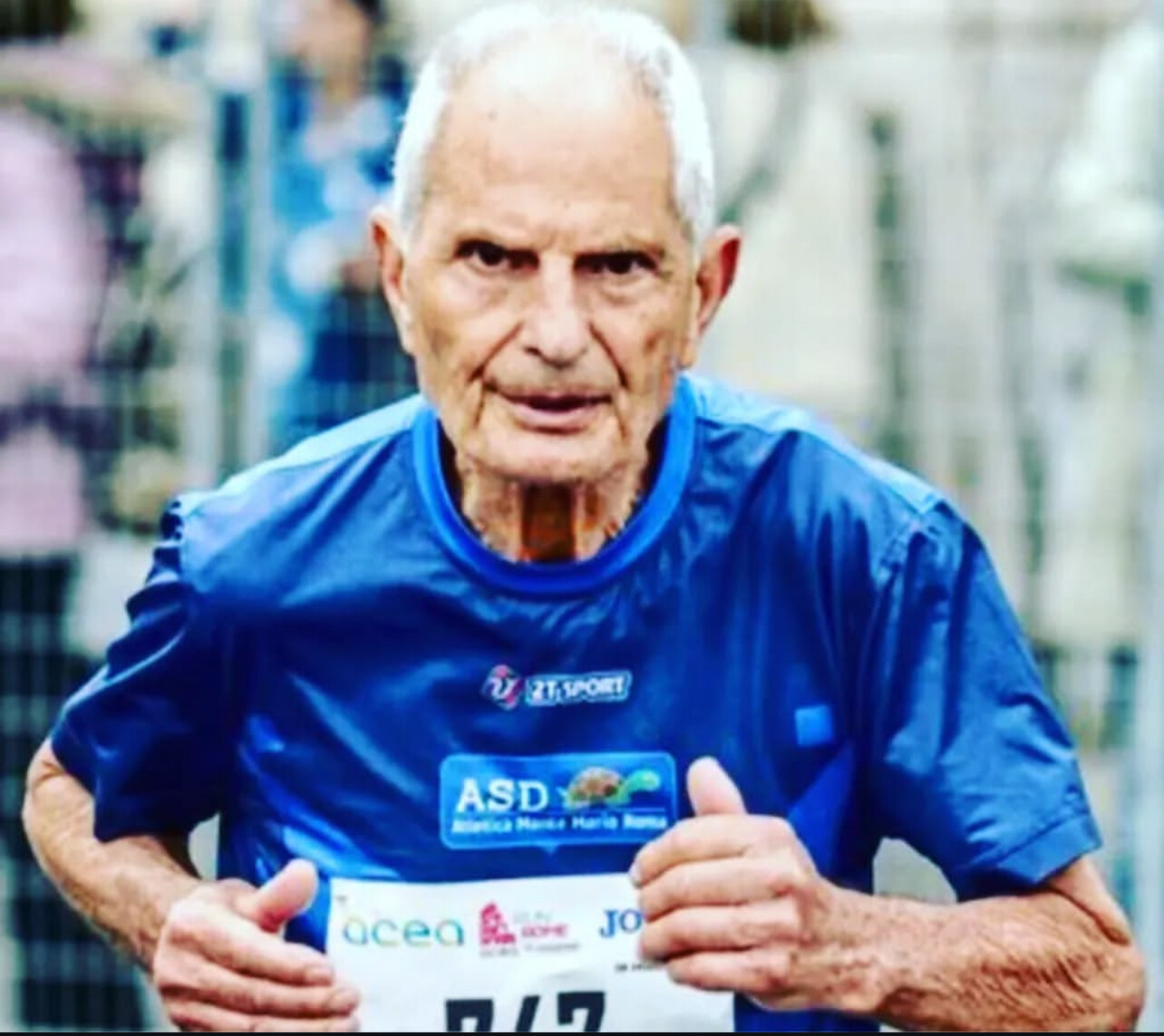
While Rao’s accomplishments are extraordinary, it’s worth noting that Fauja Singh, a British runner of Indian origin, holds the record for the fastest marathon time in the 90+ age group. At age 92, Singh completed the 2003 Toronto Waterfront Marathon in 5 hours and 40 minutes.
Antonio Rao’s dedication to running serves as a powerful reminder that age is no barrier to pursuing one’s passions. His story continues to inspire runners of all ages to stay active and embrace the joy of the sport.
by Boris Baron
Login to leave a comment
Kenyan Elites Eye Fast Times at Sunday’s Vienna City Marathon
The 42nd edition of the Vienna City Marathon, Austria’s premier road racing event and a World Athletics Elite Label race, is set to unfold this Sunday with over 45,000 participants—including a record 13,000 marathoners. A strong Kenyan contingent is expected to set a blistering pace as they aim for personal bests on the historic streets of Vienna.
Kenya’s Justus Kangogo (PB 2:05:57), Asbel Rutto (2:06:24), and Stanley Kurgat (2:07:05)headline a deep elite field. All three confirmed at Friday’s press conference that they’re not just here to win—they’re here to run fast.
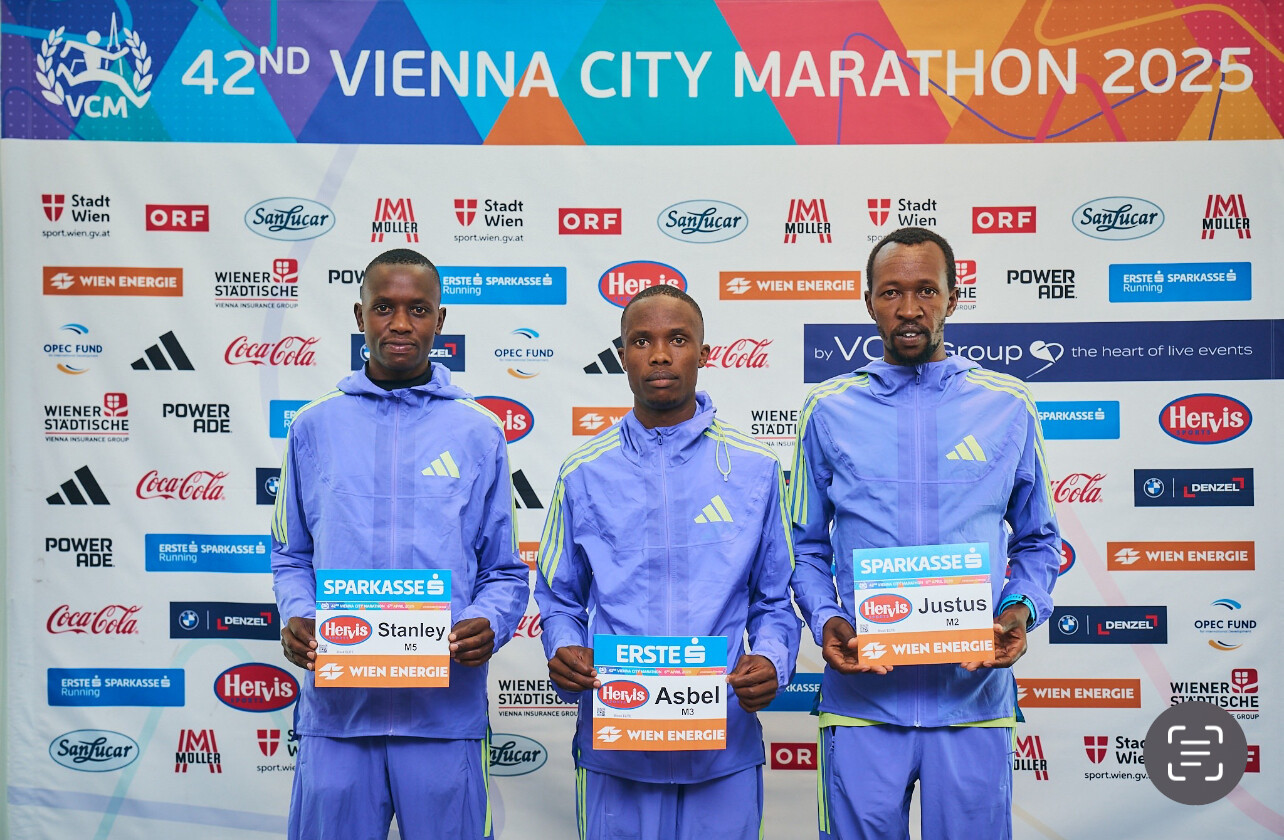
“We have an interesting elite field that should provide a thrilling race,” said Johannes Langner, elite coordinator. “Our target for the lead group is a half marathon split between 62:30 and 62:45, with a second group about a minute behind.”
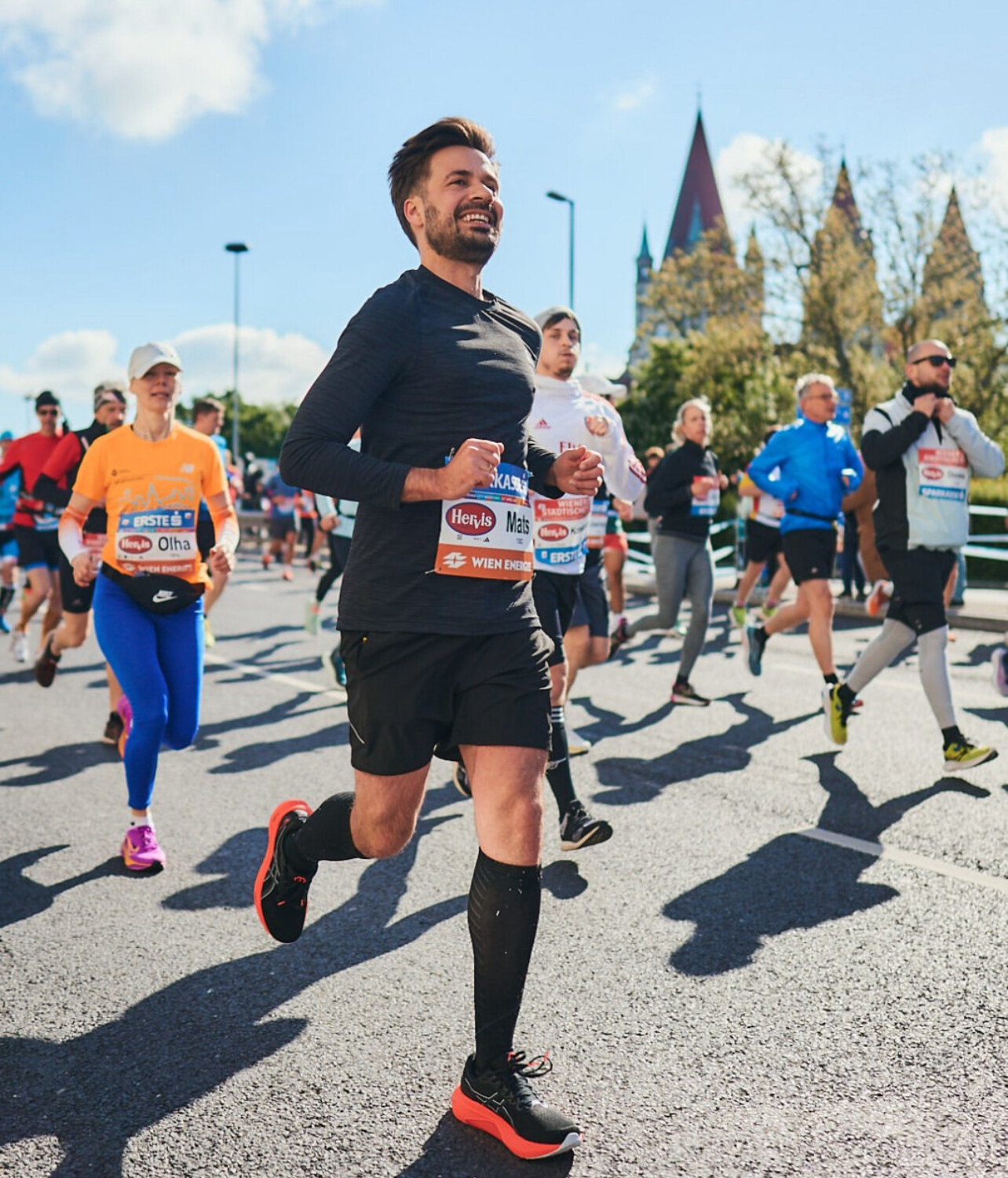
Though the forecast calls for dry but cold weather, with temperatures just above freezing at the 9 a.m. start, the elite field still has its sights set on the 2:05:08 course record.
Kangogo, who ran his PB in Berlin, said he’s eager to team up with Rutto: “I am a frontrunner as well, so we will work together. And once we finish, we will celebrate.”
Rutto made headlines with his course record victory in Rome last year, running solo to a 2:06:24 finish. “I am a frontrunner,” said the 23-year-old. “If you stay behind, you can’t win. On Sunday, I’m going for a personal best.”
Stanley Kurgat brings a strategic edge, having paced Vienna last year up to 32K. “Now I’ll go the full distance. I know this course, and even if it’s cold, it will still be a good race.”
Other strong contenders include Douglas Chebii (2:06:31), Charles Ndiema (2:08:12), and Benard Kimeli (2:08:34). Keep an eye on Bernard Muia, last year’s runner-up in Vienna, who comes in with a 2:09:17 PB from Munich. Meanwhile, Wisley Kibichii, a 59:57 half marathoner, will make his highly anticipated marathon debut.
Vienna City Marathon General Manager Dominik Konrad, son of longtime race director Wolfgang Konrad, emphasized the event’s growing impact: “We’re seeing another running boom. Entries came early and never stopped. This year’s marathon is not only a celebration of sport but also a huge boost to Vienna’s economy, with runners from 146 nations—a record.”
Top Men’s Elite Field – Personal Bests
• Justus Kangogo (KEN) – 2:05:57
• Asbel Rutto (KEN) – 2:06:24
• Douglas Chebii (KEN) – 2:06:31
• Stanley Kurgat (KEN) – 2:07:05
• Charles Ndiema (KEN) – 2:08:12
• Benard Kimeli (KEN) – 2:08:34
• Bernard Muia (KEN) – 2:09:17
• Mica Cheserek (KEN) – 2:09:26
• Kipsambu Kimakal (KEN) – 2:09:41
• Geoffrey Koech (KEN) – 2:10:12
• Haftamu Abadi (ETH) – 2:10:33
• Lemawork Ketema (AUT) – 2:10:44
• Gadisa Tajebe (ETH) – 2:11:02
• Edward Koonyo (KEN) – 2:11:24
• Evans Yego (KEN) – 2:12:56
• Henry Kichana (KEN) – 2:13:06
• Andreas Vojta (AUT) – 2:13:43
• Andrew Davies (GBR) – 2:14:23
• Daverso Ramos (PER) – 2:14:25
• Wisley Kibichii (KEN) – Debut
• Mogos Tuemay (ETH) – Debut
by Race News Service
Login to leave a comment
Vienna City Marathon
More than 41,000 runners from over 110 nations take part in the Vienna City Marathon, cheered on by hundreds of thousands of spectators. From the start at UN City to the magnificent finish on the Heldenplatz, the excitement will never miss a beat. In recent years the Vienna City Marathon has succeeded in creating a unique position as a marathon...
more...Haspa Marathon Hamburg 2025 Features Strong Women’s Field as Karoline Bjerkeli Grøvdal Makes Marathon Debut
The Haspa Marathon Hamburg, set for April 27, 2025, will showcase a highly competitive women’s field led by Ethiopia’s Workenesh Edesa. Edesa, who holds a personal best of 2:18:51, is among several elite Ethiopian athletes in the race. Norway’s European Half Marathon Champion, Karoline Bjerkeli Grøvdal, will make her highly anticipated marathon debut. A total of 15,000 runners have registered for the 39th edition of Germany’s largest spring marathon.
Grøvdal, 34, is one of the most prominent names on the women’s start list, which may see further additions in the coming weeks. She won the European Cross Country Championships three consecutive times from 2021 to 2023 and had a breakthrough year in 2024, winning the New York Half Marathon before claiming the European Half Marathon title in Rome. Later that year, she set a personal best of 66:55 at the Copenhagen Half Marathon, suggesting she has the potential for a strong marathon debut. She recently returned to the New York Half Marathon, finishing in 69:03—six seconds faster than the previous year—to place seventh.

“I think Hamburg is a good place to start my marathon career,” Grøvdal said, looking ahead to her debut over the classic distance.
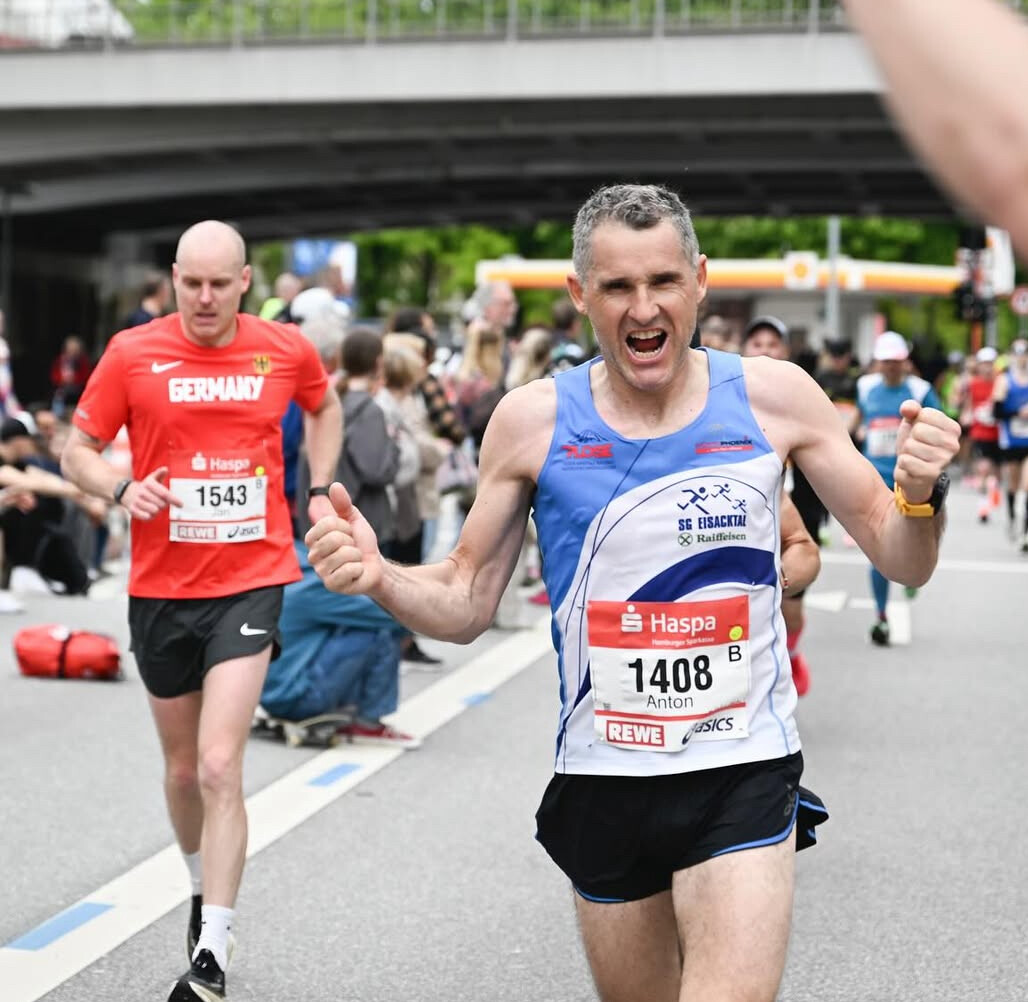
Workenesh Edesa, 32, is among the fastest women ever to compete in the Haspa Marathon Hamburg. She first set her personal best of 2:18:51 while finishing fourth at the 2022 Berlin Marathon, then matched that time to set the course record at the 2024 Osaka Marathon. In January 2025, she successfully defended her Osaka title, winning in 2:21:00. Edesa trains in Addis Ababa under renowned coach Gemedu Dedefo as part of one of the world’s strongest marathon training groups.
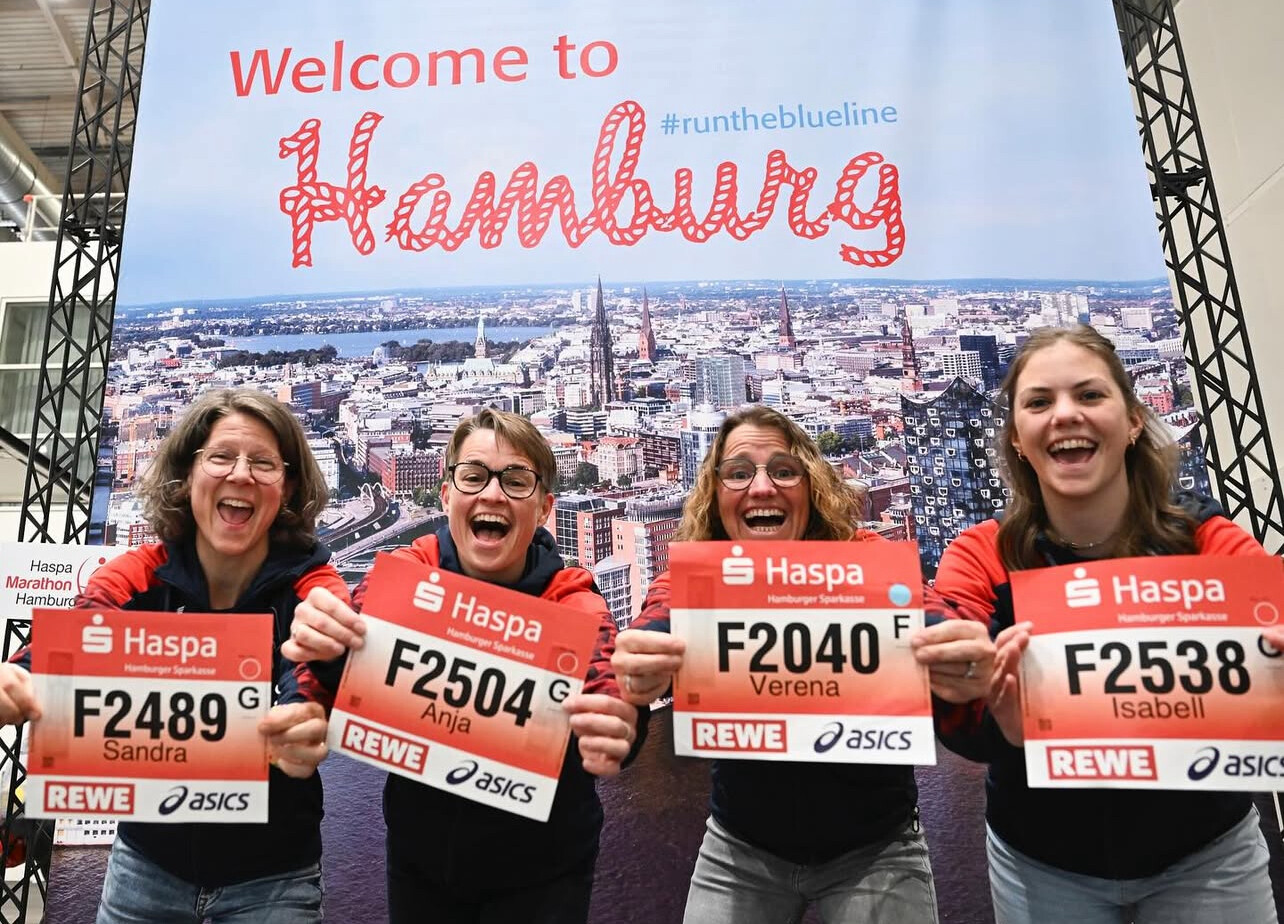
Joining Edesa on the start list are three more Ethiopian contenders, each with personal bests between 2:20 and 2:21:
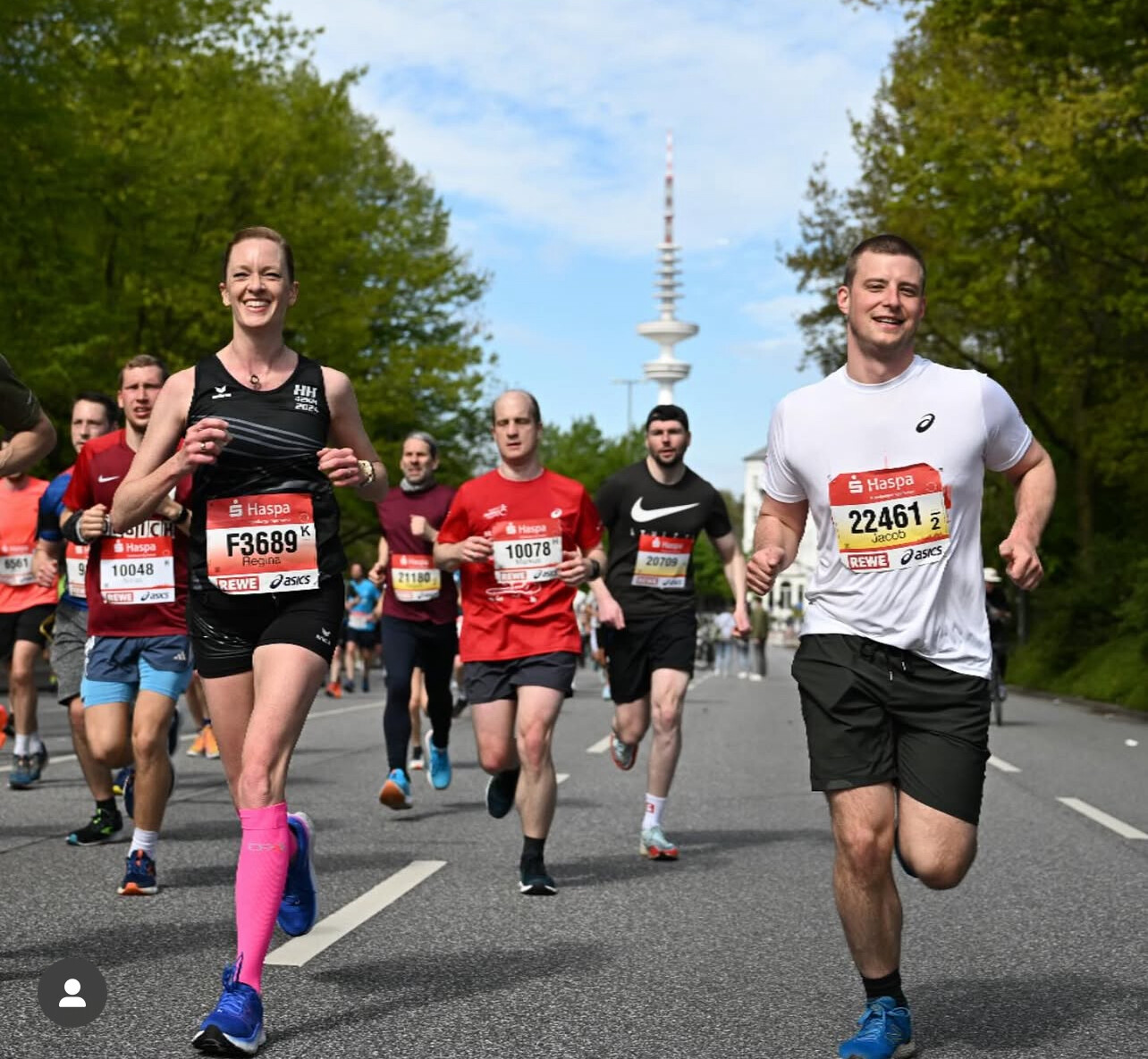
• Etagegn Woldu ran 2:20:03 in Valencia in 2022, narrowly missing the sub-2:20 milestone.
• Waganesh Mekasha, known for her consistency, clocked a personal best of 2:20:44 last fall to win the Toronto Marathon.
• Sichala Kumeshi shaved nearly five minutes off her previous best to win the Houston Marathon this January in 2:20:42.
A total of 15,000 runners have registered for the 39th edition of Germany’s largest spring marathon, blending elite athletes with a deep field of amateur and club runners eager to test themselves on the fast, scenic course.
With this level of talent on the start line, the Haspa Marathon Hamburg is set to deliver one of its most exciting women’s races in history.
by Race News Service
Login to leave a comment
Haspa Marathon Hamburg
The HASPA MARATHON HAMBURG is Germany’s biggest spring marathon and since 1986 the first one to paint the blue line on the roads. Hamburcourse record is fast (2:05:30), the metropolitan city (1.8 million residents) lets the euphoric atmosphere spill over and carry you to the finish. Make this experience first hand and follow the Blue Line....
more...Taping for Distance Running A Guide to Injury Prevention and Performance Enhancement
Taping is a simple yet effective way to support muscles and joints, manage pain, and prevent injuries during training and racing. Whether preparing for a 5K or a marathon, runners can use taping techniques to stabilize key areas, reduce discomfort, and aid recovery. The right taping method depends on the specific issue, the type of tape used, and individual running mechanics.
Choosing the Right Tape
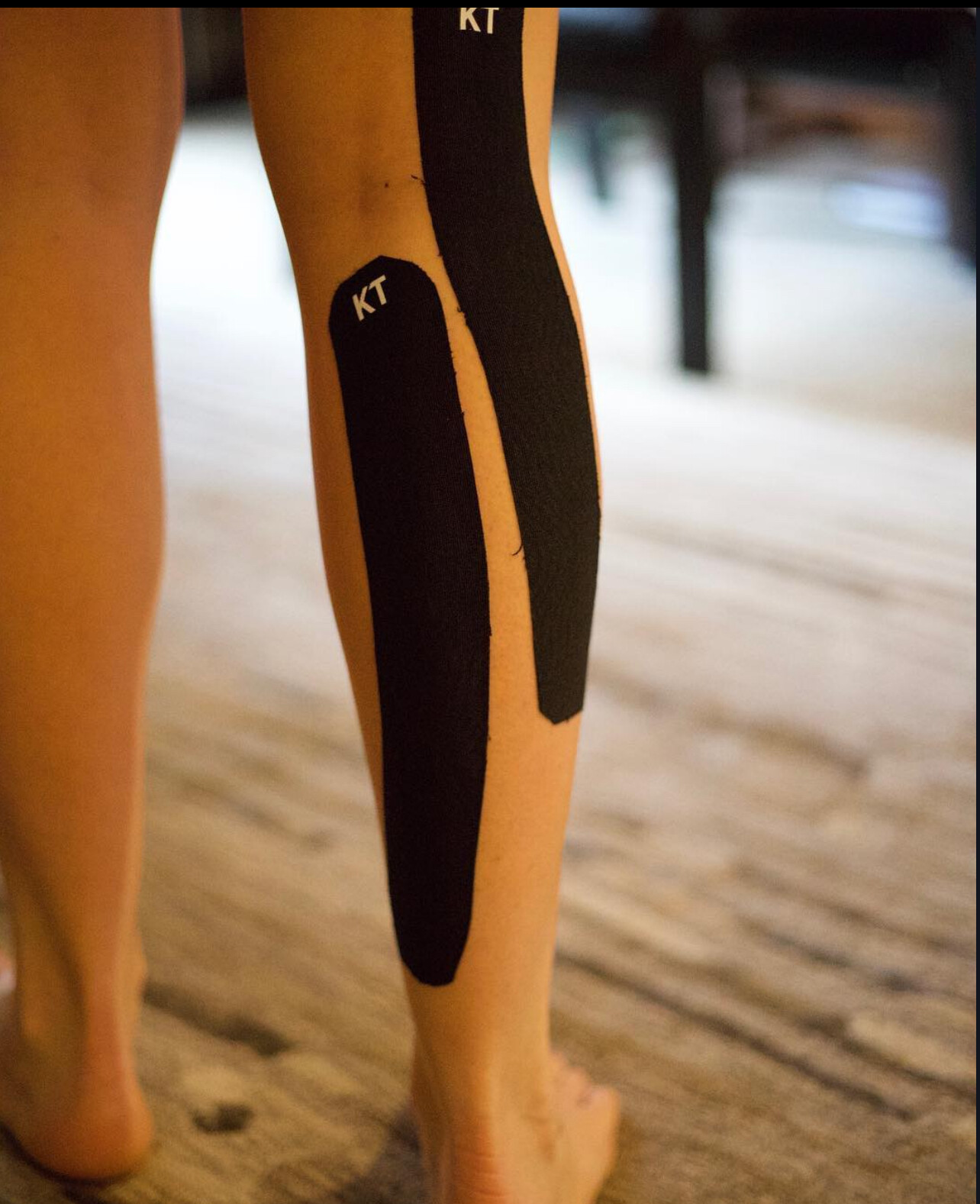
Kinesiology tape is flexible and moves with the body, making it ideal for muscle support, reducing inflammation, and improving circulation. It allows for full range of motion while providing targeted support.
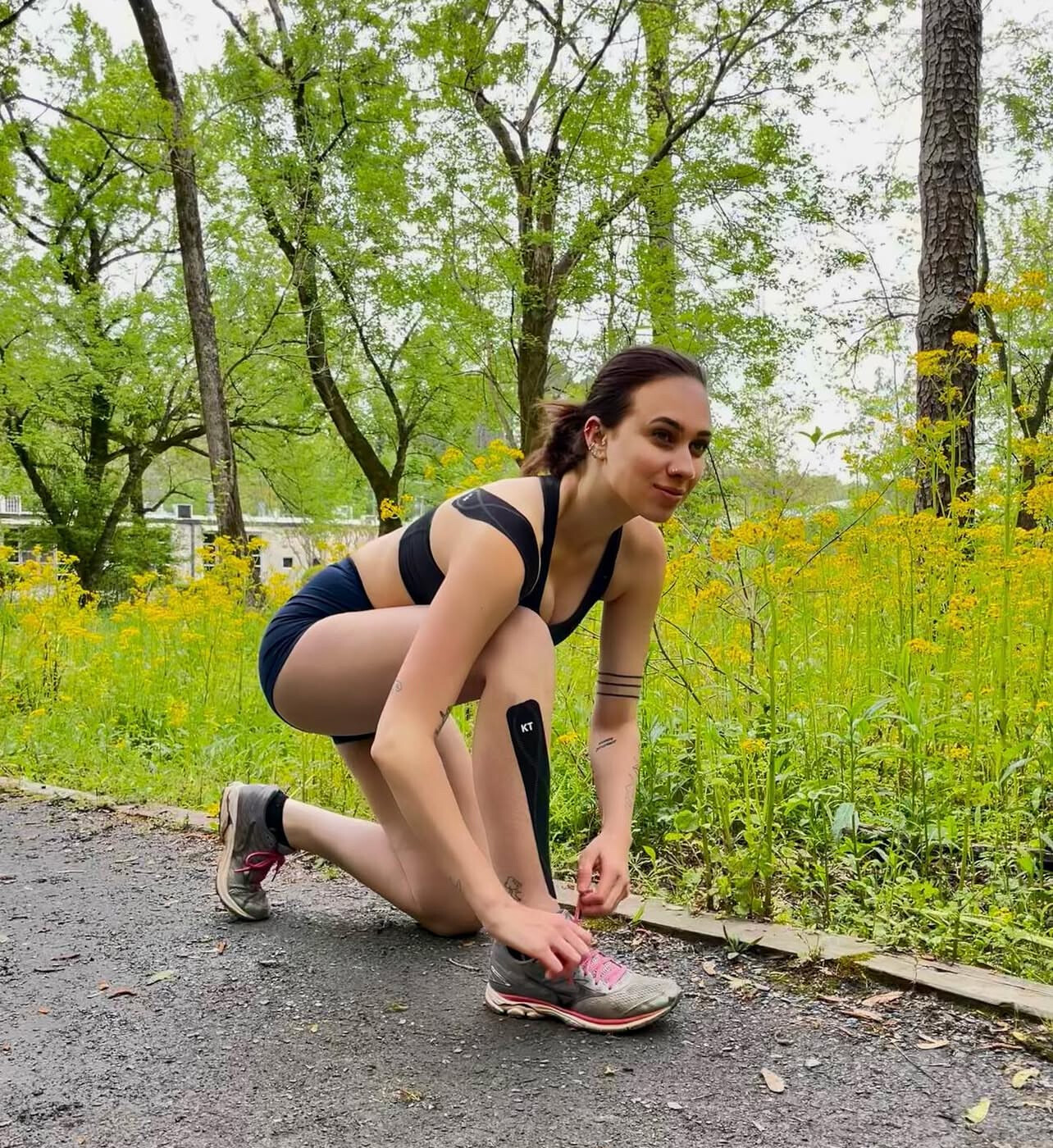
Athletic tape is more rigid and best for stabilizing joints or restricting excessive movement. It is often used to reinforce weak areas or prevent further injury.
Common Taping Techniques for Runners
Knee support for patellar tendonitis or runner’s knee can be achieved by placing a strip of kinesiology tape just below the kneecap with a slight stretch in the middle. Adding two diagonal strips along the sides of the knee provides extra reinforcement.
IT band syndrome taping starts with a long strip running from the upper thigh down to the outer knee. A second strip across the knee helps reduce friction and stabilize the area.
Achilles tendon support requires anchoring the tape at the bottom of the heel and running it up along the Achilles tendon with mild tension. A horizontal support strip across the Achilles adds extra stability.
Plantar fasciitis taping involves placing a strip along the bottom of the foot from the ball to the heel. An X-shaped cross over the arch provides additional structure and support.
Ankle stability taping includes wrapping a strip around the base of the foot and up around the ankle. A second strip applied in a figure-eight pattern helps prevent excessive movement and reinforces joint stability.
Tips for Effective Taping
Apply tape to clean dry skin to ensure strong adhesion.
Avoid overstretching the tape, as this can cause discomfort and reduce effectiveness.
Round the edges of the tape to prevent peeling during long runs.
Test taping methods during training runs rather than waiting until race day.
Remove tape gently with baby oil or adhesive remover to avoid skin irritation.
Taping can be a valuable tool for runners dealing with minor aches, recovering from injuries, or looking for additional support in key areas. While it is not a substitute for proper training and strength work, it can help manage discomfort and provide extra confidence on race day.
by Boris Baron
Login to leave a comment
Italy’s Most Popular Half Marathon Returns for 2025 with a Strong International Field
The Roma-Ostia Half Marathon, Italy's most popular half marathon, is set to celebrate its 50th edition on Sunday, March 2, 2025. This landmark event is expected to attract over 12,000 participants, including a significant international contingent, with foreign runners comprising approximately 42% of the registrants.
The race will follow its traditional route, starting in Rome's EUR district near the Palazzo dello Sport. Runners will traverse the wide boulevards of the neighborhood before proceeding onto the Cristoforo Colombo road, leading directly to the finish line at Ostia's main roundabout. This 21.0975-kilometer course is renowned for its speed, offering participants a prime opportunity to achieve personal bests.
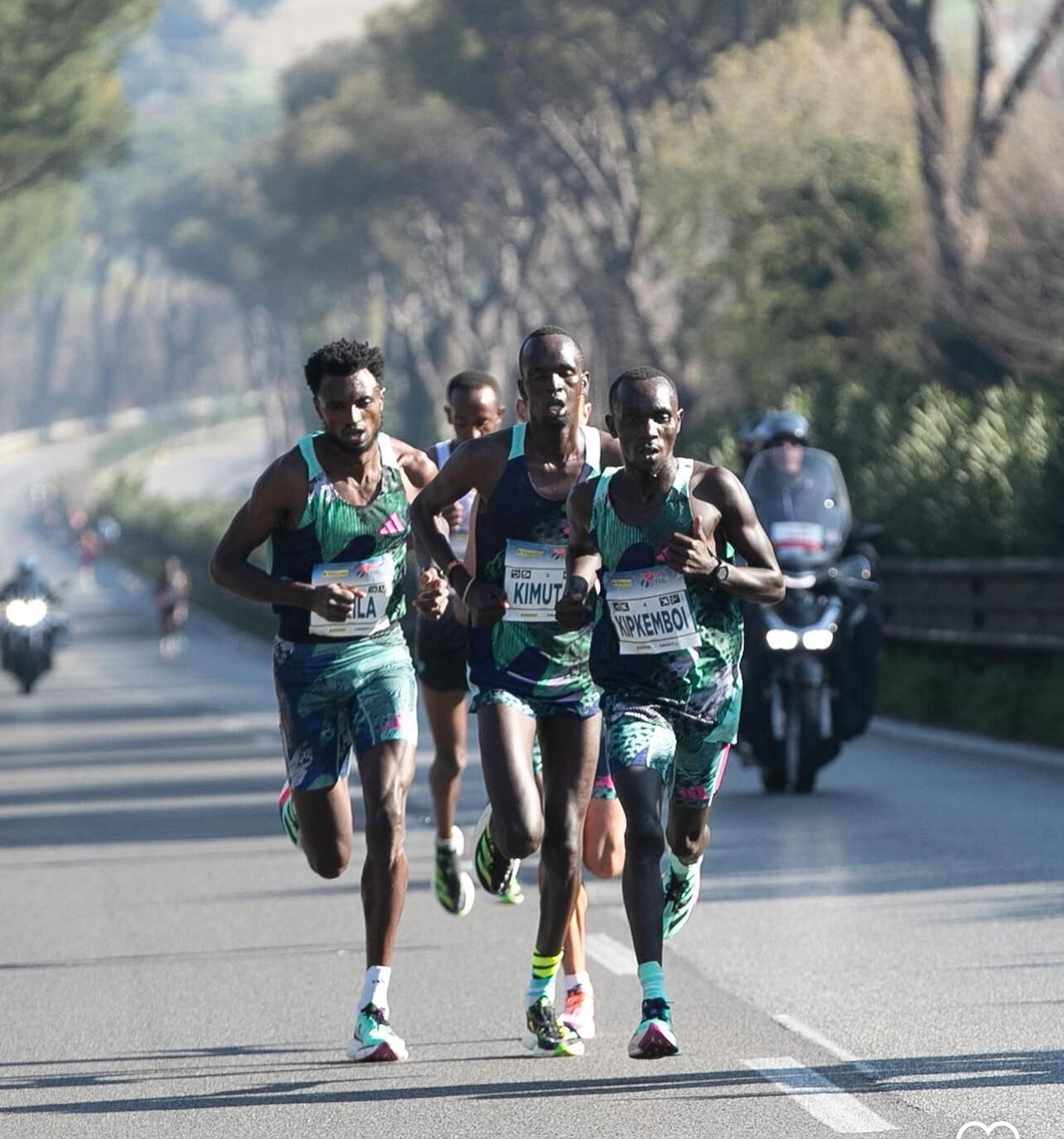
In the lead-up to the race, the Casa RomaOstia 2025 Village will be open from Thursday, February 27, to Saturday, March 1, at Piazzale Pier Luigi Nervi. The Village will feature a photographic exhibition celebrating the half-century history of the event, along with various stands showcasing the latest in sports and running. A highlight of the pre-race activities is the elite athletes' parade scheduled for Saturday, March 1.
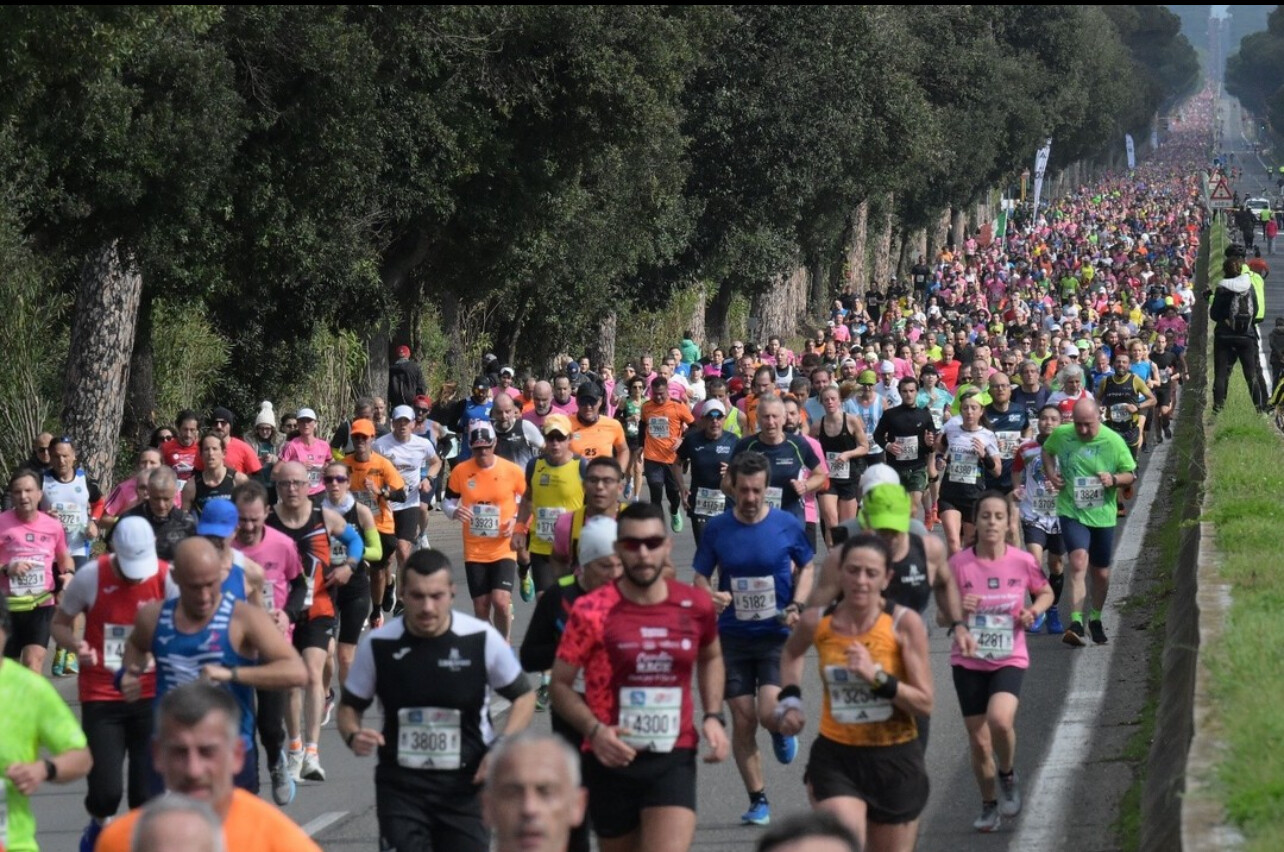
As of now, the official list of elite runners for the 2025 race has not been released. However, the Roma-Ostia Half Marathon has a storied history of attracting top-tier international talent. In the 2024 edition, notable athletes such as Ethiopian Tsegu Berehanu Wendemu and Kenyan Mary Wacera Ngugi participated, with Ngugi clinching the women's title. Given this tradition, participants and spectators can anticipate a competitive field in the upcoming race.
The current course records stand as a testament to the event's competitive nature. In the men's category, Moroccan athlete Aziz Lahbabi set the record in 2014 with a time of 59:25. On the women's side, Kenyan runner Florence Kiplagat holds the record with a time of 1:06:38, achieved in 2012.
Login to leave a comment
Roma Ostia Half Marathon
Italy's most popular half marathon, this road race is a popular event for runners of all abilities. The Roma-Ostia Half Marathon is an annual half marathon road running event which takes place in the spring in Rome, Italy. The course begins in the EUR district of the city and follows a direct south-easterly route to the finish point near the...
more...Rest in Peace, Jerome Drayton: Canadian Marathon Legend Passes Away at 80
The world of distance running has lost one of its greats. Jerome Drayton, the Canadian marathon record holder for over 40 years, passed away early today at the age of 80. A true pioneer in Canadian distance running, Drayton inspired generations of athletes with his remarkable performances on the international stage.
Born in Germany before immigrating to Canada, Drayton became one of the most dominant marathoners of his era. He competed in the 1968 Olympic Games in Mexico City and the 1976 Olympic Games in Montreal, proudly representing Canada. His most famous victory came at the 1977 Boston Marathon, where he became the first Canadian winner in 34 years. Drayton was also a three-time champion of the prestigious Fukuoka Marathon in Japan, one of the world’s most competitive races at the time.
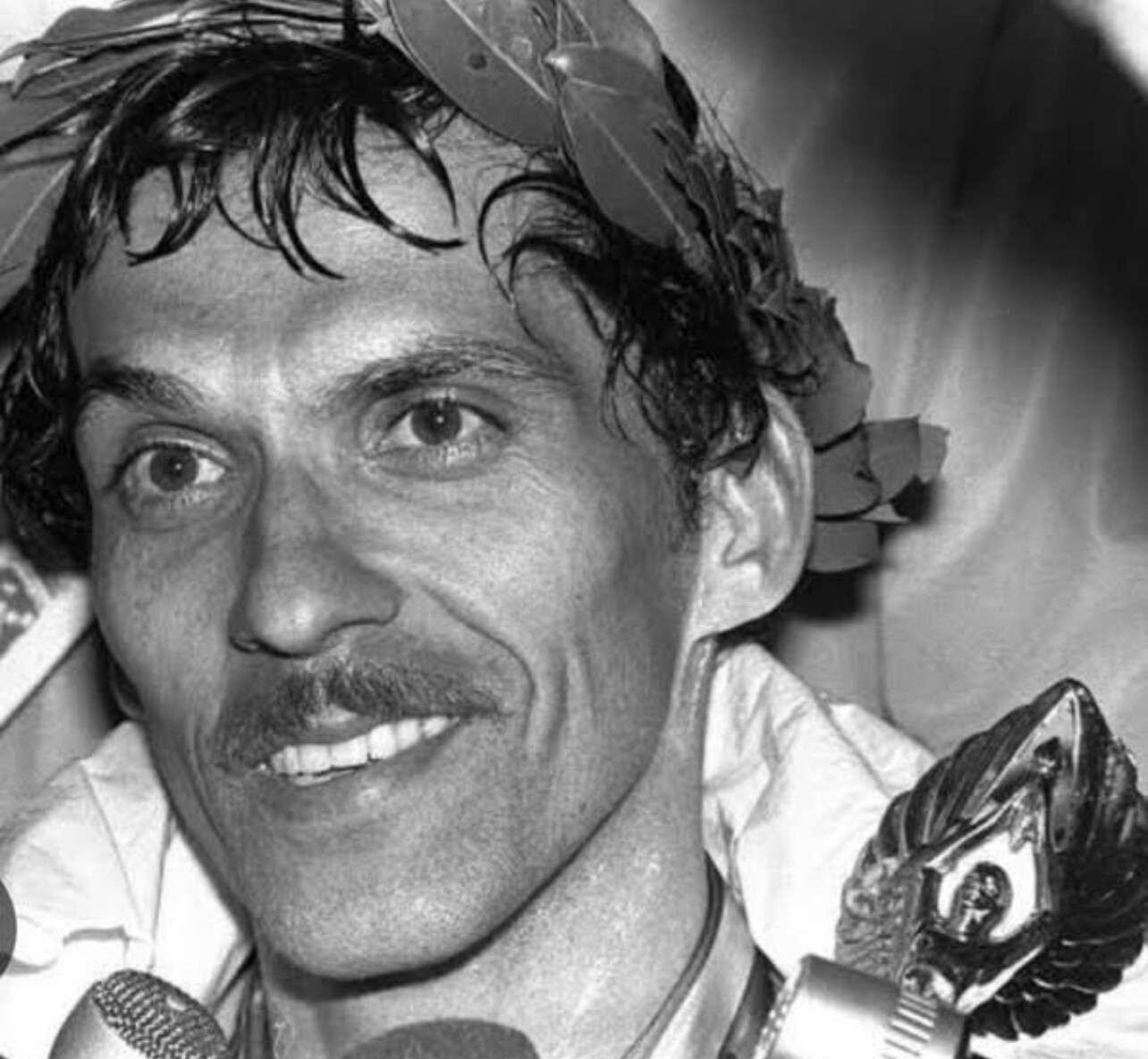
Drayton’s Canadian marathon record of 2:10:09, set in 1975 at Fukuoka, remained untouched for an astonishing 43 years until it was finally broken in 2018. His dominance and consistency made him one of the most respected marathoners globally. He competed for the Toronto Olympic Club under the guidance of coach Paul Poce, a National Team Coach who helped shape many of Canada’s top distance runners.
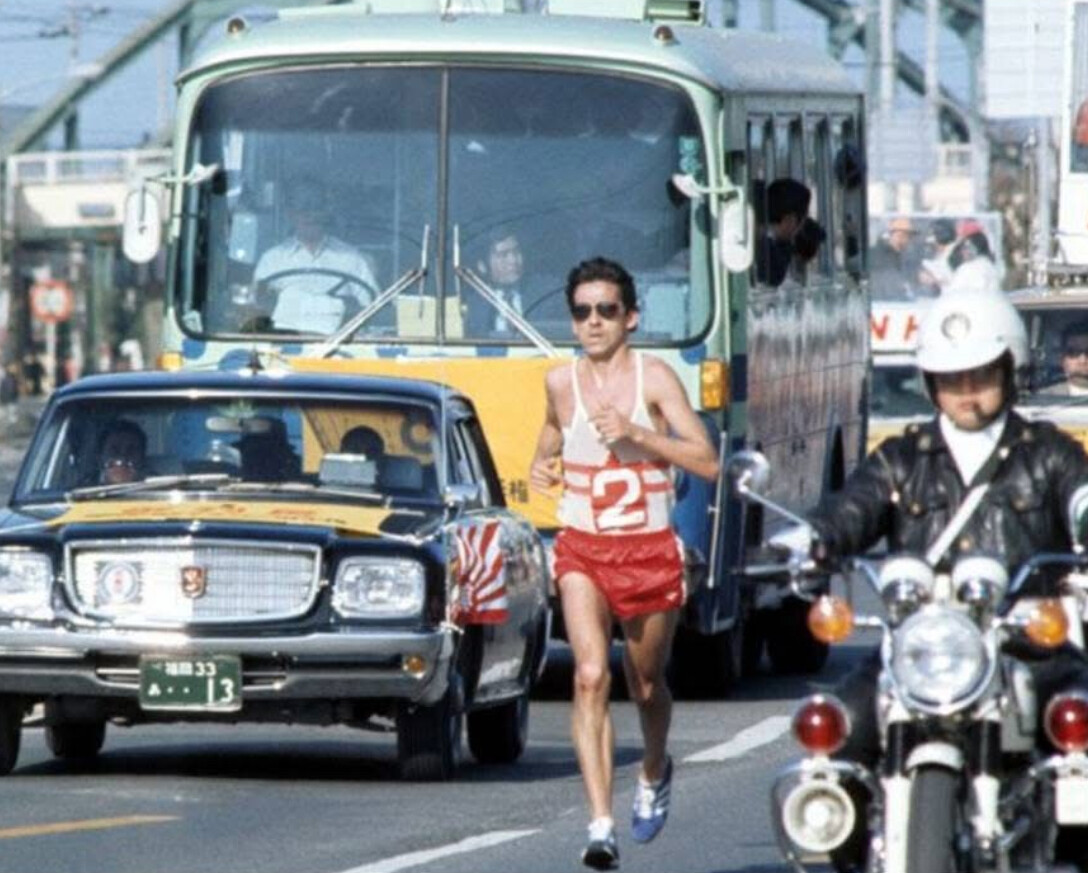
Beyond his achievements, Drayton was admired for his humility and sportsmanship. Those who had the chance to meet him, including at club banquets, remember him as an inspiring presence and a true gentleman.
His contributions to Canadian distance running will never be forgotten. Jerome Drayton showed Canadian runners what was possible, and his legacy will continue to inspire future generations.
Rest in peace, Jerome, and thank you for everything you gave to the sport.
by Boris Baron
Login to leave a comment
Jerome was not only an amazing runner but an amazing all around person. - Bob Anderson 2/11 7:53 am |
Anticipation Builds for Middle-Distance Showdowns at 2025 Czech Indoor Gala
The Czech Indoor Gala, scheduled for February 4, 2025, in Ostrava, is set to feature thrilling middle-distance races, particularly in the men’s 800 meters and the women’s 3000 meters.
Men’s 800 Meters:
Czech national record holder Jakub Dudycha will compete on home soil. As a junior, he set a national U20 indoor record of 1:47.42 at the Czech Indoor Gala, later improving it to 1:47.12. Outdoors, he advanced to the semi-finals at the European Championships in Rome, clocking a time under 1:45, and subsequently set a new Czech senior record of 1:44.82 in Bydgoszcz. Dudycha has expressed his ambition to break the national indoor record this season.
He will face formidable international competitors, including Belgium’s Eliott Crestan, who is the sixth fastest European in history with a national record of 1:42.43 set at the Paris Diamond League meeting. Crestan is a bronze medallist from both the European and World Indoor Championships. Another strong contender is Catalin Tecuceanu, representing Italy since 2022, who secured European bronze in Rome and boasts personal bests of 1:45.00 indoors and 1:43.75 outdoors.
Women’s 3000 Meters:
Kristiina Sasínek Mäki, a Tokyo Olympics finalist, will compete in the 3000 meters. She has been training under Swiss coach Louis Heyer and is eager to showcase her progress. However, she will face stiff competition from African athletes. Ethiopia’s Freweyni Hailu, the 1500m world indoor champion from Glasgow 2024, returns after setting a meeting record in the mile at last year’s Czech Indoor Gala. Joining her is compatriot Sembo Almayew, the junior world record holder in the steeplechase and World U20 champion, as well as Norah Jeruto, the World 3000m steeplechase champion from the 2022 Eugene Championships, now representing Kazakhstan.
The Czech Indoor Gala, part of the World Athletics Indoor Tour Gold series, continues to attract top-tier talent, ensuring a night of exceptional athletic performances in Ostrava.
Login to leave a comment
Sprint Showdowns and Distance Battles to Take Center Stage at the New Balance Indoor Grand Prix
The New Balance Indoor Grand Prix, a World Athletics Indoor Tour Gold meeting, is set to deliver thrilling track action in Boston on Sunday (Feb 2), with an elite lineup of global gold medalists ready to ignite the indoor season. The competition will serve as a crucial stepping stone towards the World Athletics Indoor Championships Nanjing 25 in March.
Sprints and Hurdles: Lyles and Alfred Lead the Charge
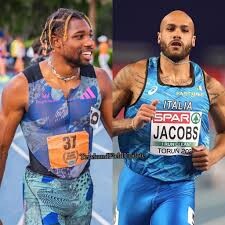
Olympic and world sprint sensation Noah Lyles returns to defend his 60m title, after setting a meeting record of 6.44 last year. Lyles, who claimed 100m gold and 200m bronze at the Olympics, kicked off his season with a 6.62 win in Gainesville last weekend. He will face Trayvon Bromell (USA), Zharnel Hughes (GBR), and 2022 world indoor champion Marcell Jacobs (ITA), who is making his North American indoor debut.
In the women’s 300m, Olympic 100m champion Julien Alfred steps up in distance for her New Balance Indoor Grand Prix debut. After winning world indoor 60m gold in Glasgow, Alfred took 100m gold and 200m silver at the Olympics and ended last season with a Diamond League Final victory. She faces a competitive field including 2019 world 200m champion Dina Asher-Smith (GBR) and USA’s Lynna Irby-Jackson.
The men’s 300m features Olympic 400m hurdles gold medalist Rai Benjamin. A past winner in Boston, Benjamin is set to battle 4x400m relay star Vernon Norwood and Matthew Boling.
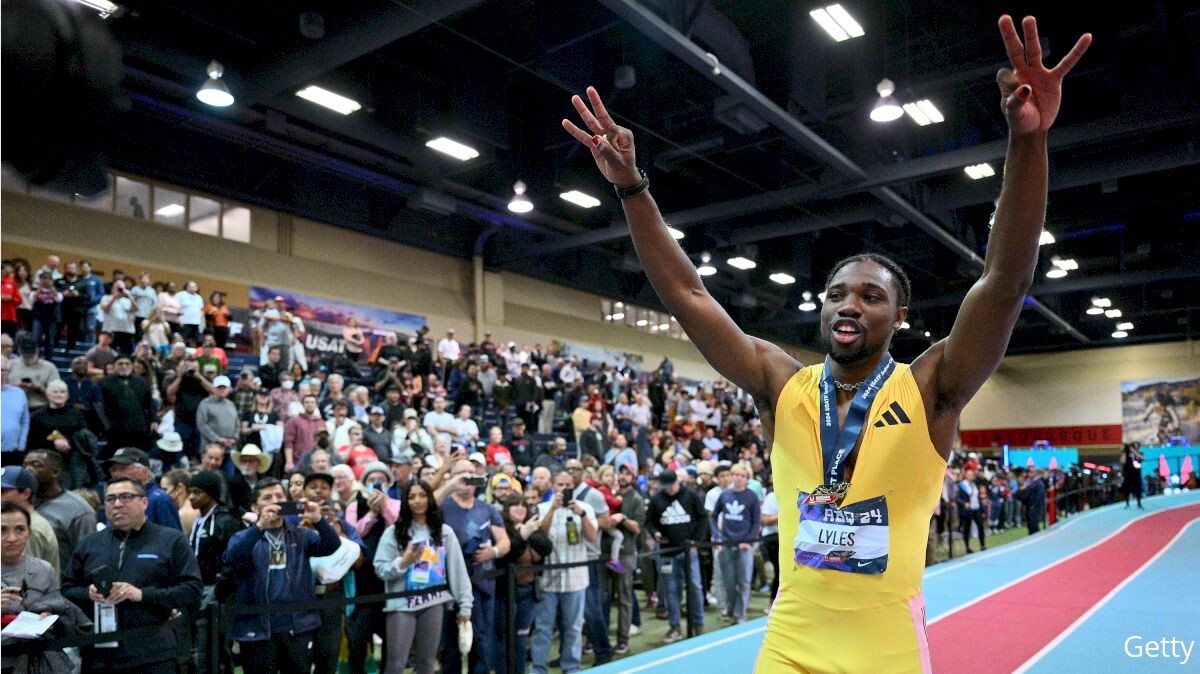
The 60m hurdles events promise fireworks, with world record-holder Devynne Charlton (7.65) and Olympic champion Masai Russell renewing their rivalry. Russell edged Charlton in their recent clash in Lubbock, but the Bahamian sprinter leads their head-to-head series 8-2. Joining them are Olympic finalists Ackera Nugent, Grace Stark, and 2018 world indoor silver medallist Christina Clemons.
For the men, world record-holder Grant Holloway (7.27) looks to extend his 10-year unbeaten streak in the 60m hurdles. The Olympic and world champion headlines the field alongside Olympic finalist Freddie Crittenden and 2022 world silver medallist Trey Cunningham.
Middle and Long Distance Races: Olympic Medalists Face Off
The women’s 3000m sees Olympic 1500m silver medalist Jessica Hull (AUS) take on Great Britain’s Olympic bronze medalist Georgia Bell. Hull, the defending champion, set an Oceanian indoor record of 8:24.93 in this event last year. They are joined by USA’s Parker Valby, Emily Mackay, Elise Cranny, Ethiopia’s Melknat Wudu, Italy’s Sintayehu Vissa, and Olympic steeplechase medalist Emma Coburn.
In the men’s 1500m, USA’s Grant Fisher (Olympic 5000m and 10,000m bronze medalist) takes on 2022 world champion Jake Wightman (GBR), Oliver Hoare (AUS), and Josh Hoey, who recently broke the North American 1000m record.
Bryce Hoppel, the reigning world indoor 800m champion, leads the men’s 800m field, while Hobbs Kessler, Cameron Myers, Neil Gourley, and Andrew Coscoran battle in the 3000m.
Other Key Events
Women’s 60m: Mikiah Brisco (USA) and Zoe Hobbs (NZL) lead the field.
Men’s 400m: 2022 world indoor champion Jereem Richards (TTO) races USA’s Quincy Wilson.
Women’s 500m: Dutch 4x400m Olympic champion Lisanne de Witte takes on USA’s Olympic 800m medallist Raevyn Rogers.
Women’s Mile: Heather MacLean (2023 winner) faces Olympic finalist Susan Ejore, Maia Ramsden, and Sage Hurta-Klecker.
With an electrifying lineup of Olympic and world champions, the New Balance Indoor Grand Prix promises high-stakes racing and a preview of the talent heading to Nanjing 25.
by Boris Baron
Login to leave a comment
How Many Steps Should You Actually Take in a Day to Boost Your Health—or Your Fitness?
We explain how to set your daily step goal, based on what you’re looking to achieve.
Because smartphones, watches, and fitness trackers easily track step counts, most of us are aware of roughly how many steps we take every day. Even non-exercisers may try to hit a daily step goal. Via mostly good press, not science, 10,000 steps is a common goal many focus on as a marker of movement success.

While 10,000 is an easy-to-remember number, like any other fitness metric, your daily step goal should likely be personal and based on your specific goals, such as improving general health metrics or losing weight.
To turn your goal into a daily step count, though, you need to remember that exercise recommendations are given in minutes, not steps. Likewise, every person’s stride length and pace is not only specific to them, but highly variable, based on where they are walking and if they are walking alone or in a group.
“The American College of Sports Medicine (ACSM) recommends at least 150 minutes of moderate-intensity aerobic exercise per week, or 60 minutes of vigorous, which can be achieved by walking for many individuals,” Kaitlyn Baird, C.S.C.S, exercise physiologist at the Hospital for Special Surgery in New York City, tells Runner’s World.
As for point number two, according to Harvard, a brisk walker typically takes about 100 steps per minute. Therefore, a 20-minute brisk walk is likely equal to about 2,000 steps.
To help you find the right target, experts explain how to tailor your daily step count for specific health, fitness, and running habits.
Exactly How Many Steps You Need to Take Every Day, Based on Your Goals
If You’re Walking for Health... Aim for 8,000 Steps per Day
Being sedentary, or taking 4,000 steps a day or fewer, according to the NIH, is linked to poor health outcomes, so if you want to improve your overall health, taking anywhere from 7,500 to 10,000 steps daily is a great starting point. This range supports cardiovascular health, and can reduce the risks associated with prolonged sitting, like metabolic syndrome and cognitive or heart disease, Joshua Rieders, DPT, C.S.C.S., area director
Consider turning those breaks into a short workout routine, such as doing jumping jacks or going up and down stairs. Vigorous exercise lasting less than one minute and performed periodically throughout the day can improve cardiorespiratory fitness and other metrics of cardiometabolic health in previously inactive adults, according to a 2022 paper in Exercise and Sport Sciences Reviews.
If You’re Walking for Improve Fitness... Aim for 10,000 Steps a Day
When walking is your primary fitness activity, it’s not just about how many steps you take, but how you do it. ACSM’s fitness recommendation are achievable for most people, says Baird, and you can use walking to reach those goals.
One key of the ACSM guidelines is the variety of intensity levels. Moderate-intensity exercise means you can talk, but not sing, while vigorous means no talking or singing, but a little more huffing and puffing.
Increasing your walking intensity—by picking up the pace, adding inclines, or incorporating intervals—can make a big difference. “Higher-intensity walking (at a faster pace and/or uphill) can provide more significant benefits in less time due to the increased caloric demand, allowing you to meet your goals more efficiently,” says Rieders.
If
If You Run, Don’t Worry about Steps, but Walk for Recovery
Runners who log three to six miles a few times a week likely already exceed 10,000 steps on many days. “Walking should supplement your workout, particularly for individuals who are looking to maintain general health,” Rieders adds.
Still, runners should consider using walking as a form of active recovery both after their runs and on days when they don’t run. “Running would be your primary modality here, and walking could serve to reduce sedentary time and help with recovery,” says Baird. A leisurely walk can ease muscle soreness and prevent the stiffness that often follows higher-impact workouts.
Again, consider breaking up long periods of inactivity with short walks, for the best health results, Rieders says.
Training for a half or full marathon? As mentioned, a mile likely contains anywhere between 2,000 and 3,000 steps, so on your long run days, you are more than hitting the mark. Nevertheless, Rieders suggests taking some walking steps rather than being sedentary for recovery, but don’t worry about the exact number.
Your Best Step Goal—Count Step Breaks and Intensity
Instead of focusing on your daily step count, a more helpful goal
Login to leave a comment
Move or Die: SCIENTISTS CRUNCHED THE NUMBERS TO COME UP WITH THE SINGLE BEST PREDICTOR OF HOW LONG YOU’LL LIVE—AND CAME UP WITH A SURPRISINGLY LOW-TECH ANSWER
TO PREDICT your longevity, you have two main options. You can rely on the routine tests and measurements your doctor likes to order for you, such as blood pressure, cholesterol levels, weight, and so on. Or you can go down a biohacking rabbit hole the way tech millionaire turned longevity guru Bryan Johnson did. Johnson’s obsessive self-measurement protocol involves tracking more than a hundred biomarkers, ranging from the telomere length in blood cells to the speed of his urine stream (which, at 25 milliliters per second, he reports, is in the 90th percentile of 40-year-olds).
Or perhaps there is a simpler option. The goal of self-measurement is to scrutinize which factors truly predict longevity, so that you can try to change them before it’s too late. A new study from biostatisticians at the University of Colorado, Johns Hopkins University, and several other institutions crunched data from the long-running National Health and Nutrition Examination Survey (NHANES), comparing the predictive power of 15 potential longevity markers. The winner—a better predictor than having diabetes or heart disease, receiving a cancer diagnosis, or even how old you are—was the amount of physical activity you perform in a typical day, as measured by a wrist tracker. Forget pee speed. The message to remember is: move or die.

It’s hardly revolutionary to suggest that exercise is good for you, of course. But the fact that people continue to latch on to ever more esoteric minutiae suggests that we continue to undersell its benefits. That might be a data problem, at least in part. It’s famously hard to quantify how much you move in a given day, and early epidemiological studies tended to rely on surveys in which people were asked to estimate how much they exercised. Later studies used cumbersome hip-mounted accelerometers that were seldom worn around the clock. The new study, published in Medicine and Science in Sports and Exercise, draws on NHANES data from subjects recruited between 2011 and 2014, the first wave of the study to employ convenient wrist-worn accelerometers that stay on all day and night.
Sure enough, it turns out that better data yields better predictions. The study zeroed in on 3,600 subjects between the ages of 50 and 80, and tracked them to see who died in the years following their baseline measurements. In addition to physical activity, the subjects were assessed for 14 of the best-known traditional risk factors for mortality: basic demographic information (age, gender, body mass index, race or ethnicity, educational level), lifestyle habits (alcohol consumption, smoking), preexisting medical conditions (diabetes, heart disease, congestive heart failure, stroke, cancer, mobility problems), and self-reported overall health.
Take a moment to let that sink in: how much and how vigorously you move are more important than how old you are as a predictor of how many years you’ve got left.
The best predictors? Physical activity, followed by age, mobility problems, self-assessed health, diabetes, and smoking. Take a moment to let that sink in: how much and how vigorously you move are more important than how old you are as a predictor of the years you’ve got left.
These results don’t arrive out of nowhere. Back in 2016, the American Heart Association issued a scientific statement calling for cardiorespiratory fitness, which is what VO2 max tests measure, to be considered a vital sign that doctors assess during routine checkups. The accumulated evidence, according to the AHA, indicates that low VO2 max is a potentially stronger predictor of mortality than usual suspects like smoking, cholesterol, and high blood pressure. But there’s a key difference between the two data points: VO2 max is about 50 percent determined by your genes, whereas how much you move is more or less up to you.
All this suggests that the hype about wearable fitness trackers over the past decade or so might be justified. Wrist-worn accelerometers like Apple Watches, Fitbits, and Whoop bands, according to the new data, are tracking the single most powerful predictor of your future health. There’s a caveat, though, according to Erjia Cui, a University of Minnesota biostatistics professor and the joint lead author of the study. Consumer wearables generally spit out some sort of proprietary activity score instead of providing raw data, so it isn’t clear whether those activity scores have the same predictive value as Cui’s analysis. Still, the results suggest that tracking your total movement throughout the day, rather than just formal workouts, might be a powerful health check.
The inevitable question, then, is how much movement, and of what type, we need in order to live as long as possible. What’s the target we should be aiming for? Cui and his colleagues track the raw acceleration data in increments of a hundredth of a second, which doesn’t translate very well to the screen of your smartwatch. The challenge remains about how to translate that flood of data into simple advice regarding how many minutes of daily exercise you need, how hard that exercise needs to be, and how much you should move around when not exercising.
To be honest, though, I’m not sure the quest to determine an exact formula for how much we should move is all that different from the belief that measuring your urine speed will give you actionable insights about your rate of aging. Metrics do matter, and keeping tabs on biomarkers backed by actual science, like blood pressure, makes sense. But it’s worth remembering that the measurement is not the object; the map is not the road. What’s exciting about Cui’s data is how it reshuffles our priorities, shifting the focus from all the little things our wearable tech now tracks to the one big thing that really works—and which is also a worthwhile goal for its own sake. Want to live forever? Open the door, step outside, and get moving.
Login to leave a comment
Racing Super Shoes Will Be Lighter, More Responsive, and Likely Even Faster in 2025
New models from Adidas, Brooks, Hoka, On, Puma, and Saucony highlight a speedy new crop of racing and training super shoesEager to run a new personal best in the marathon in 2025? Or are you itching to crank out a quicker half marathon than you ran in 2024? Or maybe a fast effort in a trail race? The continued evolution of speedy shoe technology will be on your side. With new midsole foams and propulsion plate configurations, top-tier racing shoes will be lighter, more responsive, and presumably faster in 2025.
That goes for both road racing and trail racing super shoes that will be hitting running shops from late winter to early summer.Asics, New Balance, and Under Armour will have lighter and more energetic road racing shoes coming out by late spring, while Nike is expected to release its Ultrafly 2 trail racing super shoe in June. While those models are still under embargo, we’ve got the scoop on several race-day super shoes and high-performance training shoes unveiled at The Running Event trade show in November in the roundup below. We haven’t fully wear-tested these shoes yet, so it’s just a preview of what’s to come. When wear-testing is complete, we’ll produce both first-run reviews and in-depth multi-tester reviews with input from the Outside wear-test team and data from the Outside Gear Lab in Denver.2025 Road Racing Super Shoes
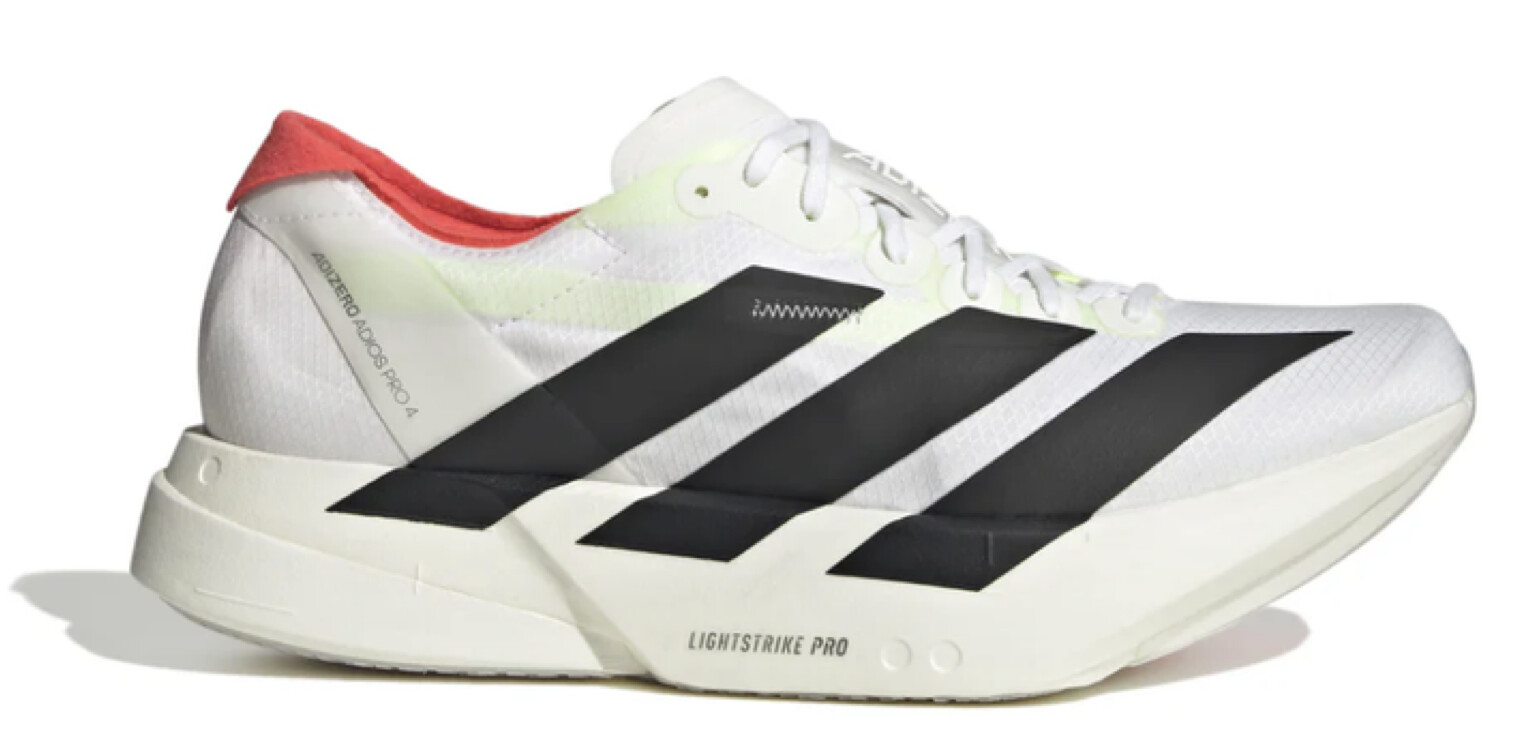
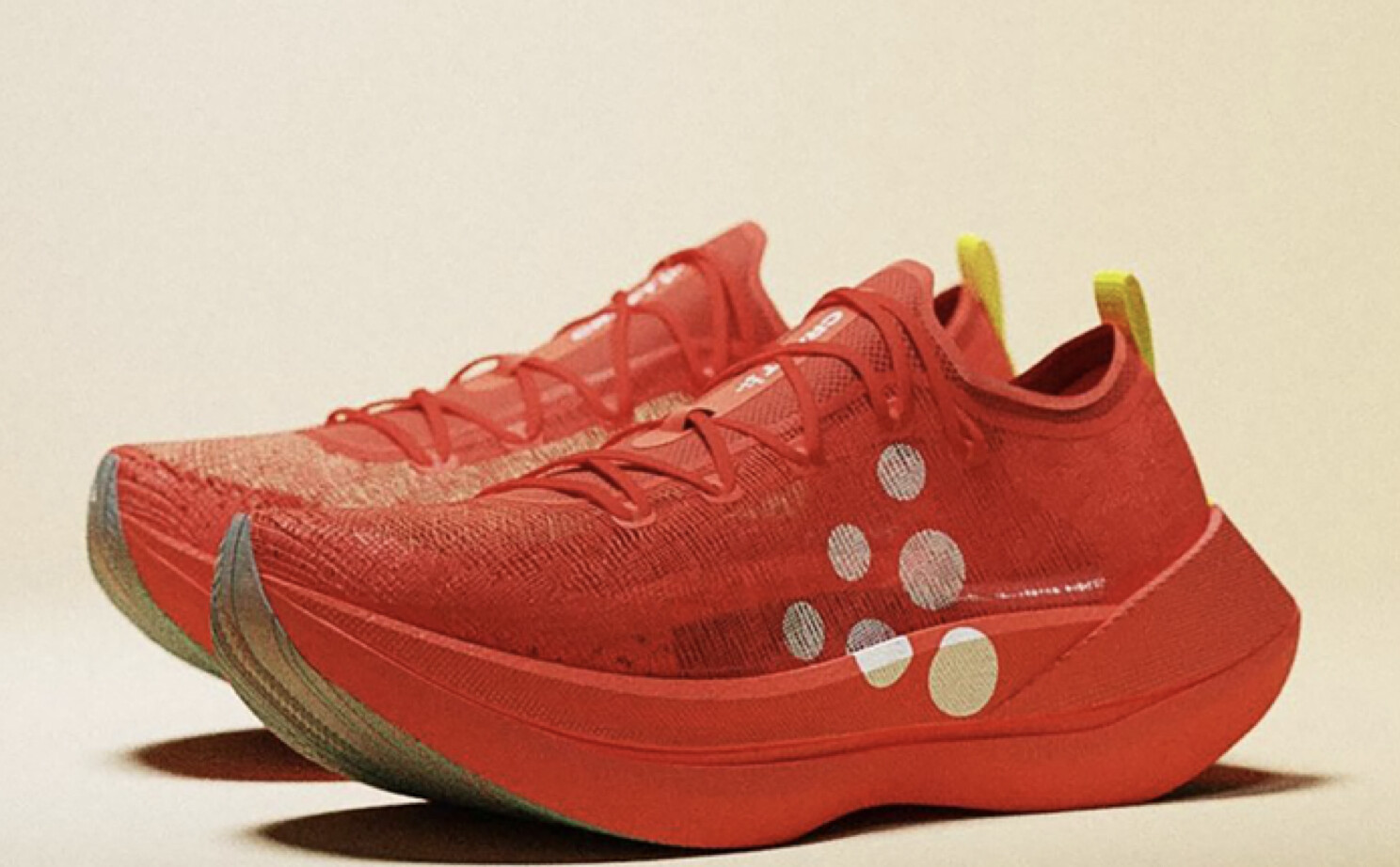
Adidas Adizero Adios Pro 4, $250
Approximate Weights: 6.0 oz. (women’s 8), 7.0 oz. (men’s 9)Heel-Toe Offsets: 6mm drop; 39mm (heel), 33mm (forefoot)Release Date: January
The Adizero Adios Pro 4 was released in limited numbers just before the Berlin Marathon in September, but it will hit stores in mass quantities worldwide in January. It’s been updated with a bouncier Lightstrike Pro midsole, a lighter, stronger stretch-mesh upper with internal locking bands, a new configuration of the Evo Pro EnergyRods, and an aggressive new geometry in which the forefoot rocker point is at 60 percent of the shoe’s length. Several Adidas pros raced in this shoe in the New York City Marathon, including women’s winner Sheila Chepkirui and men’s runner-up Evans Chebet.Brooks Hyperion Elite 4 PB, $250
Approximate Weights: 6.6 oz. (women’s 8), 8.6 oz. (men’s 9)Heel-Toe Offsets: 6.5mm drop; 38.5mm (heel), 32mm (forefoot)Release Date: February
Brooks has been working on enhancing its top-tier road racing shoes for several years. It released the Brooks Hyperion Elite 4 with its DNA Flash v2 midsole compound prior to the 2024 U.S. Olympic Trials Marathon last February, but early in 2025 it will release the Hyperion Elite 4 PB with the brand’s new DNA Gold supercritical midsole foam, a very light and responsive nitrogen-infused 100 percent Peba material, and a very light and airy knit-mesh upper.Brooks Hyperion Elite 5, $275
Approximate Weights: 5.8 oz. (women’s 8), 6.9 oz. (men’s 9)Heel-Toe Offsets: 8mm drop; 40mm (heel), 32mm (forefoot)Release Date: JulyBrooks had hoped to keep the Hyperion Elite 5 under wraps by showing it under embargo at The Running Event trade show, but someone leaked it so it decided to release the details and images of it. It has a DNA GOLD 100 percent PEBA foam midsole with a unique series of half-orb bubble configurations under the arch for optimal compression and decompression. It also has a very light and airy knit-mesh upper and minimal outsole rubber to keep it as light as possible.Craft Kype Pro, $300
Approximate Weights: 5.8 oz. (women’s 8), 6.9 oz. (men’s 9)Heel-Toe Offsets: 8mm drop; 40mm (heel), 32mm (forefoot)Release Date: March
Craft says the unique heel split design of its new Kype PRO racing shoe significantly reduces the contact surface area between the shoe and the ground, allowing for quicker toe-offs and a more efficient stride pattern. The skeleton-like carbon-fiber propulsion plate (developed in collaboration with Arris) embedded in the midsole of its Peba-based Xx midsole foam weighs less than half of an ounce and has a split heel design and enhanced stiffness The ultra-light AeroMesh knit upper is made from a durable mono yarn knit that offers support, pliability, and breathability, while the bottom of the shoe features a thin, lightweight rubber outsole was developed with Italian bicycle tire manufacturer Vittoria.Hoka Cielo X 1 2.0, $275
Approximate Weights: 7.0 oz. (women’s 8), 8.1 oz. (men’s 9)Heel-toe offset: 10mm; 48mm (heel), 41mm (forefoot)Expected launch: February
Login to leave a comment
'I want to be the best to ever do it'- American sprint sensation still dreaming big despite injury woes
The two-time world bronze medalist wants to come back and continue his legacy after injuries slowed him down in the last two years.
American sprint sensation Trayvon Bromell has been a victim of injuries but he now feels ready to come back in 2025 and continue the legacy he had in 2022.
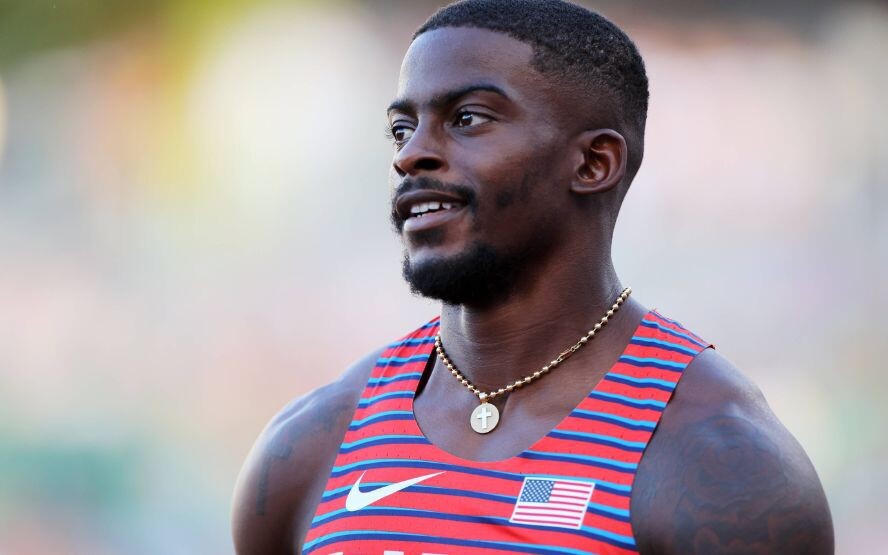
Bromell is one of America’s great sprinting talents but the world never got to see his full potential in the recent events.
In 2024, the two-time world bronze medallist had to pull out of the Olympic trials due to an injury he picked up at a meeting in Savona.
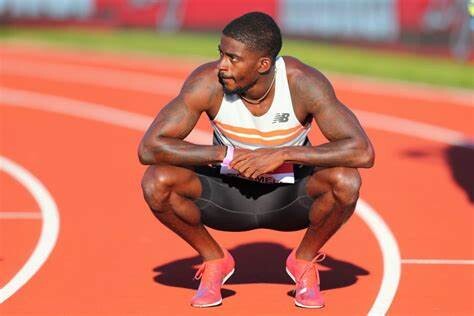
The injury was a huge setback in his career that was just beginning to pick up after his major injury in 2019 when he suffered an adductor muscle setback.
In a previous interview with NBC Sports, Bromell disclosed that his ambition is to surpass the likes of Usain Bolt and Tyson Gay and become one of the greatest sprinters in the world.
Bromell wants his achievements to be beyond the titles and the medals and he pointed out that his definition of success is very different from what other people think.
“Everybody didn’t see me and hear me back then, but now you have to. I want to be the best to ever do it,” Bromell said.
“The odds have always been stacked against me in my life, and that’s why I get emotional after running crazy times. It’s never been about the race or the medals for me.”
He opened up about growing up in a single-parent home and how he struggled to be heard by those around him. Growing up to become one of America’s greatest talents brings him to tears.
Bromell revealed that he wants to be a testimony to all those who feel like some things are impossible. The former world indoor champion further noted that the people who have grown up in such a setup would understand the struggle.
“Being the greatest of all time in this event. I’m a big advocate of making people see me, but when I say that I don’t mean it in a literal sense,” Bromell said.
“But for all of those people who know what it feels like to not be heard or to not be seen ... I want to prove that it’s possible.”
Being raised up by his mother was not easy since she was also struggling to make ends meet. Bromell had to be strong at a young age and take up responsibilities that were meant for adults.
With such a lifestyle, he struggled to maintain a positive outlook in life and was filled with a lot of resentment towards everybody.
“I feel like nobody heard my cries for help, nobody was there for me, and I grew up with so much aggression because I felt like nobody cared and the world was against me,” he added.
by Abigael Wafula
Login to leave a comment
When It’s Time to Replace Your Running Shoes
When this assignment hit my inbox, my first thought was: I am 100 percent going to find out that I need to buy new running shoes. I jog a few times a week and haven’t replaced my Hoka Clifton 9’s since 2023. The chunky, cushioned sole that Hokas are known for has been flattened by months of trail running, and the bright neon yellow exterior has dimmed to a dull mustard.
But they do the job, and I’m a bit frugal, so I’ve stuck with them. But after speaking with a few sneaker experts, I learned I’m not doing myself any favors by holding onto beat-up gear. The more I use them, the greater my risk of an injury.

Here’s why it’s worth replacing your go-to kicks—and how to figure out when to do it.
What Is the Average Lifespan of Running Shoes?
The average running shoe is thought to last about 300 to 500 miles or five to eight months of regular use, but determining your shoe’s true lifespan is more complicated, says Daniel Shull, Run Research Manager at Brooks Running.
Many factors shorten or extend the longevity of your sneakers, including how often you wear them, the kind of terrain and weather you run in, and your stride and strike habits, says Shull.
“Every runner is different, and every shoe is different,” says Arianna L. Gianakos, a Yale Medicine orthopedic surgeon specializing in sports-related foot and ankle injuries.
Trekking through mud, gravel, and puddles can erode your footwear, as can working out in hot or frigid temperatures, says Susan L. Sokolowski, a professor of sports product design at the University of Oregon. She explains if you’re a heavy runner, meaning you land on your foot hard, the foam in the middle of your shoe will break down faster. And if your foot rolls inward or outward, you can wear out a part of your shoe that isn’t built for regular impact, such as the edges or outsole, speeding up your need for
For example, I don’t merely wear my Hokas when I jog. I also wear them when I recreationally hike, bike, and walk my dog all over town. So, while I’d love to think my running shoes last a year, they probably give out much sooner.
Why It’s Important to Replace Running Shoes
When your foot slams onto the ground, your shoe acts as a buffer and absorbs some of the force hitting your foot and ankle, Gianakos says. According to a 2023 review published in Exercise Science and Sports Reviews, shoes influence how your foot interacts with the ground, impacting your performance, speed, comfort levels, and risk of sustaining an injury.
If your sneaker no longer provides the support and cushioning your feet need, you can hurt the joints, tendons, and ligaments in your feet, ankles, and even upper leg, says Gianakos. You can run (pun intended) into a whole host of injuries like plantar fasciitis, tendonitis, stress fractures, and shin splints, she adds.
You may get pain in the ball of your foot (or metatarsalgia), patellofemoral pain syndrome, which causes pain around the kneecap, or iliotibial (IT) band syndrome, a condition that causes pain near the outside of your
So, do a body scan next time you’re out on the trail. Do you notice any foot or ankle aches and knee pains? What about burning sensations on the sole of your foot? How about blisters or calluses? Any of these symptoms may indicate your shoes are shot, says Gianakos.
How to Extend the Life of Your Favorite Pair of Sneaks
First, be mindful of how you store your shoes. You want to keep them in a clean, dry location to prevent mold from growing, says Sokolowski. And don’t store them in a hot, sunny car—UV exposure and heat can cause them to dry out and crack, she adds.
Gianakos recommends having (at least) two pairs of sneakers. That way, you can occasionally switch them out to slow the wear and tear. Another tip: have different sneakers for running in different environments—like “a trail shoe, a road shoe, and even a race day shoe,” says Sokolowski.
And save your running shoes for running only. “The time and amount of steps put on your shoes by walking, standing, and running errands all count towards how long they’ll last,” says Shull.
For all your other day-to-day activities and
Login to leave a comment
Hassan and Tebogo named World Athletes of the Year
Olympic champions Sifan Hassan and Letsile Tebogo have been announced as World Athletes of the Year at the World Athletics Awards 2024 in Monaco.
Following a vote by fans, Hassan and Tebogo received top honors on an evening that saw six athletes crowned in three categories – track, field and out of stadium – before the overall two winners were revealed.
Tebogo was confirmed as men’s track athlete of the year, with Sydney McLaughlin-Levrone receiving the women’s honour. Hassan claimed the women’s out of stadium crown and Tamirat Tola the men’s, while Mondo Duplantis and Yaroslava Mahuchikh were named field athletes of the year.
This year’s Rising Stars were also celebrated, with Sembo Almayew and Mattia Furlani receiving recognition.
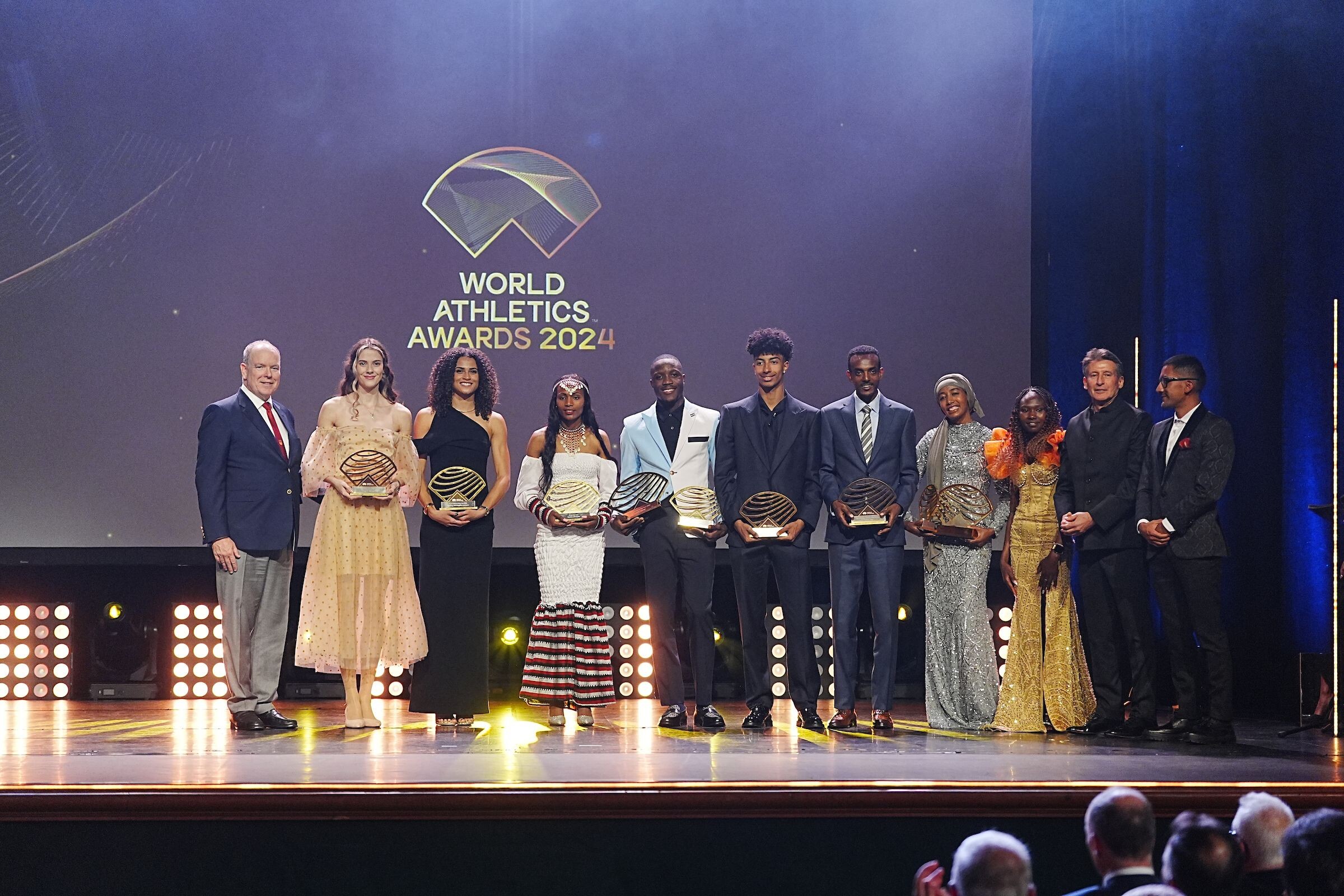
World Athletes of the Year for 2024
Women’s World Athlete of the Year: Sifan Hassan (NED)Men’s World Athlete of the Year: Letsile Tebogo (BOT)
Women’s track: Sydney McLaughlin-Levrone (USA)Women’s field: Yaroslava Mahuchikh (UKR)Women’s out of stadium: Sifan Hassan (NED)Men’s track: Letsile Tebogo (BOT)Men’s field: Mondo Duplantis (SWE)Men’s out of stadium: Tamirat Tola (ETH)
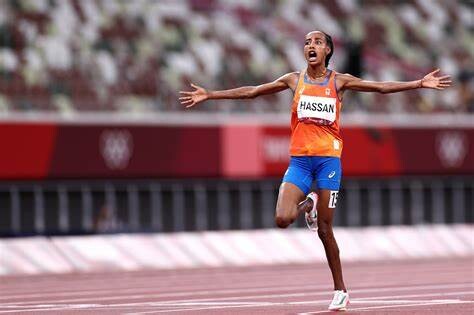
Women’s Rising Star: Sembo Almayew (ETH)Men’s Rising Star: Mattia Furlani (ITA)
“At the end of what has been a stellar year for athletics, we are delighted to reveal our list of World Athletes of the Year – both in their respective disciplines and overall,” said World Athletics President Sebastian Coe. “This group of athletes represents the very best of our sport and has this year redefined what is possible in terms of athletic performance.
“Our 2024 cohort set new standards in heights, speed and distance, including six world records and a host of Olympic and national records between them.
“I congratulate all our award winners, and all of the athletes nominated for these honors, and I thank them for inspiring us all with their performances this year.”
World Athletes of the Year Hassan and Tebogo both won gold and claimed multiple medals at the Paris 2024 Olympic Games.
Dutch star Hassan’s medal treble in Paris was capped by her winning the final athletics gold medal of the Games with her triumph in the marathon in an Olympic record of 2:22:55. That performance came just 37 hours after Hassan claimed bronze in the 10,000m, and six days after her first medal in the French capital – also bronze – in the 5000m.
As a result, she became the first woman to win medals in the 5000m, 10,000m and marathon at the same Games, and the first athlete since Emil Zatopek, who won all three men’s titles in Helsinki in 1952.
Tebogo also made history in Paris when he won the 200m, as he claimed a first ever Olympic gold medal in any sport for Botswana. He ran an African record of 19.46 – a time that moved him to fifth on the world all-time list – and that performance followed his sixth-place finish in the 100m final. He went on to form part of Botswana’s silver medal-winning men’s 4x400m team.
He dipped under 20 seconds for 200m a total of nine times in 2024, with those performances topped by his Olympic title-winning mark which remained the fastest of the year.
His fellow track athlete of the year, McLaughlin-Levrone, improved her own world 400m hurdles record twice, to 50.65 and 50.37, and claimed Olympic gold in that event as well as in the 4x400m. Tola, who joined Hassan in being named out of stadium athlete of the year, won the Olympic marathon title in Paris in an Olympic record.
World records were set by both field athletes of the year. Mahuchikh cleared 2.10m to improve the world high jump record before winning Olympic gold, while Duplantis revised his own world pole vault record three times, eventually taking it to 6.26m, and won the Olympic title.
"Thank you to the fans, to everybody who voted," said Hassan, who was in Monaco to receive her two awards. "I never thought I was going to win this one. This year was crazy. It’s not only me – all the athletes have been amazing. I’m really grateful. What more can I say?"
Standing alongside Hassan on the stage at the Theatre Princesse Grace, Tebogo said: "It feels amazing to know that the fans are always there for us athletes. It was a great year.
"This means a lot," he added. "It’s not just about the team that is around you, there are a lot of fans out there that really want us to win something great for the continent. It was a real surprise to hear my name because I didn’t expect this."
Almayew and Furlani named Rising Stars of 2024
Not only did Sembo Almayew and Mattia Furlani achieve great things as U20 athletes in 2024, they both also secured success on the senior stage.
Almayew finished fifth in the 3000m steeplechase final at the Paris Olympics, going close to her own national U20 record with her 9:00.83 performance, before she travelled to Lima where she won the world U20 title, setting a championship record in the process. With that win, the 19-year-old became the first ever Ethiopian world U20 women’s steeplechase champion.
Furlani improved the world U20 long jump record to 8.38m at the European Championships on home soil in Rome to secure silver, and he won two more senior major medals at the World Indoor Championships, where he got another silver, and the Olympic Games, where he claimed bronze.
In Glasgow – at the age of 19 years and 24 days – Furlani became the youngest athlete ever to win a world indoor medal in the horizontal jumps.
Knight wins President’s Award
The winner of the President’s Award was also announced in Monaco on Sunday (1), with Nike co-founder Phil Knight receiving the honour in recognition of his constant inspiring support for athletics and the development of the sport.
The President's Award, first awarded in 2016, recognises and honours exceptional service to athletics. Past winners of the award include the Ukrainian Athletics Association, British journalist Vikki Orvice, Swiss meeting director Andreas Brugger, Jamaican sprint superstar Usain Bolt, the Abbott World Marathon Majors, and 1968 men’s 200m medallists Tommie Smith, Peter Norman and John Carlos for their iconic moment on the podium in Mexico.
“Phil Knight’s passion for athletics is pretty much lifelong,” said Coe. “He developed an almost father-son relationship with his coach, the legendary Bill Bowerman, whose training approach was a departure from the orthodoxies of the day and who not only guided Knight’s career on the track but became a central figure when Phil took his first tentative steps in the running shoe business that became the dominant global force Nike.
“His love of athletics runs through Nike. It is a business created and driven by runners, with Phil never afraid to be the front runner.”
Knight said: “Thank you, Seb Coe, for the ultimate honour of the President’s Award, given by World Athletics. I am in great company, with Tommie Smith and John Carlos, and Usain Bolt. Obviously, I didn’t run as fast as those guys, but I am in such high company that I am thrilled by the award. Track and field has always been an important part of Nike – it has always been a central part of who Nike is.
“I do think running will continue to grow. Not only does Seb and his team do a great job promoting the sport, but it is a sport that not only is enjoyable, but it is probably the best fitness activity you can do. So, for me to win this honour, it is very meaningful.”
During the ceremony, a moment was taken to remember last year’s men’s out of stadium athlete of the year Kelvin Kiptum, the marathon world record-holder who died in a road traffic accident in February, as well as other figures from the sport who have passed away in 2024.
by World Athletics
Login to leave a comment
Marathon world lead for debutant Sawe in Valencia
Kenya’s Sabastian Sawe set a world lead on his marathon debut, while Ethiopia’s Megertu Alemu also captured a solid victory at the Valencia Marathon Trinidad Alfonso – a World Athletics Elite Platinum Label event – on Sunday (1).
Sawe’s winning time was 2:02:05, just 12 seconds off the fastest ever debut set by his compatriot Kelvin Kiptum two years ago and a mark that moves him to fifth on the world all-time list, while Alemu ran 2:16:49, just 15 seconds outside her lifetime best.
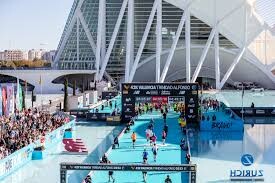
The men’s event had been billed as a thrilling showdown between experienced specialists such as Sisay Lemma, Deresa Geleta and Kenenisa Bekele, versus some promising debutants including Sawe and Hillary Kipkoech. Perfectly paced by a trio of pacemakers – Kenya’s Samwel Mailu, Erick Sang and Vincent Nyageo – the leading men went through the opening 5km in 14:31. That cadence was maintained until the leading pack reached the 10km checkpoint in 29:04 and 15km in 43:39. By then, nine athletes remained at the helm including all the favourites, Geleta and Lemma running closest to the pacemakers.
The halfway mark was passed in 1:01:17, 42 seconds slower than last year’s split when Lemma set the course record of 2:01:48. Unlike last year, when he performed conservatively over the first half, Bekele was running quite bravely as the 42-year-old travelled in third or fourth place. But some two kilometres later, the multiple Olympic and world champion began to lose ground and by the 28th kilometre the relentless 2:55/km rhythm whittled down the leading pack to five: Kenya’s Mateiko and Sawe plus Ethiopia’s Geleta, Lemma and Birhanu Legese.
Once the last pacemaker dropped out with the clock reading 1:33, Lemma began to falter to lose any chance of retaining his title. At the front, Mateiko and Geleta broke away from Sawe and Legese, those pairs separated by 30 metres inside the 32nd kilometre. It was Mateiko, who was not able to finish the Chicago 2023 and London 2024 marathons, who seemed to decide the victory was in his favour shortly afterwards as he became a lonesome leader. The three-time Valencia half-marathon podium place finisher had built a five-second gap on Sawe and Geleta, while Legese could not maintain that pace and travelled in fourth place way back.
Mateiko’s getaway proved to be short-lived as he was reeled in by Sawe and Geleta at the 36th kilometre, when the predicted final time remained at 2:02:35. It was then that the eventual winner found another gear to speed away easily from Mateiko and Geleta, who finished fifth at the Paris Olympics. Sawe, who has completed all his nine half marathons under the 60-minute barrier, upped his pace to the 2:48/2:50 range to gradually extend his lead. By the 40km point he clocked 1:55:42, 20 seconds ahead of Geleta, while a tired Mateiko travelled another 35 seconds in arrears.
Sawe showed a magnificent display of solo running over the closing kilometres, going faster and faster as the end was approaching to finally finish unopposed in a world leading performance of 2:02:05, including a 14:06 closing five kilometres.
Geleta, the Seville Marathon winner, improved his career best to 2:02:38 for second place, while Mateiko slowed dramatically over the final stages but still managed to finish the distance at the third time of asking in 2:04:24, holding off a late challenge from Tanzania’s 2017 world bronze medallist Alphonce Simbu.
Simbu achieved a perfectly balanced two halves (1:02:13/1:02:25) to finish fourth in a PB of 2:04:38, two seconds clear of the 42-year-old Swiss athlete Tadesse Abraham, who clocked a lifetime best and national record of 2:04:40 for fifth. In a race of an incredible depth, 10 men ducked under the 2:05 milestone while Bekele dropped out shortly after the 31st kilometre.

Sawe, the world half marathon champion, has won seven out of his nine half marathon appearances, topped by a 58:02 time in Rome in 2022. His two defeats came in Valencia, so Sunday’s performance marks his first victory in the city.
The winner, whose two halves were timed at 1:01:18 and 1:00:47, said: “Honestly, I had built up very good for this debut and was quite confident of doing well. It’s an amazing day, I’m so happy to be here and win in Valencia, which is so beautiful.
“I was used to running the half marathon event, I was comfortable during the first half, then I was close to the helm of the race and I thought I could go faster and I just did it. I dedicate this win to the victims of the Valencia floods, I pray for them.”
Alemu confirms she is the strongest
Following the withdrawal of Ethiopia’s course record-holder Amane Beriso due to a stress fracture, the women’s contest kicked off at the scheduled 3:12 rhythm on an attempt to lower the current 2:14:58 course record set in 2022. The opening five and 10 kilometres were covered in 16:02 and 32:03, respectively, and by then all the favourites stayed in the leading pack, with Alemu joined by her compatriot Tiruye Mesfin, Uganda’s Stella Chesang and Kenya’s Evaline Chirchir. The clock read 47:56 for the 15th kilometre and that cadence proved to be too quick for Mesfin and Chirchir, that pair running 18 seconds in arrears by then.
Running alongside lots of male athletes, Alemu and the Paris Olympics eighth-place finisher Chesang went through halfway in 1:07:15, well on schedule to break Beriso’s record, with Mesfin and Chirchir some 300 metres back timed at 1:08:06 but quick enough to set respective career bests. Chesang’s resistance came to an end some 1:11 into the race when she just could not stay with Alemu’s pace. The Ethiopian managed to maintain her speed until the 30th kilometre, which she reached in 1:35:55, but from then on the 27-year-old dropped her rhythm as she timed 16:48 for the following two five-kilometre sections (30-40km) and her chances of a course record clearly vanished.
Even so, Alemu’s win was never in jeopardy as she strengthened gradually her advantage on Chesang to 40 seconds by the 30th kilometre and a massive 1:21 at the 40km checkpoint, while Mesfin easily got rid of Chirchir just before reaching the 25th kilometre. At the tape, Alemu posted her second quickest ever time thanks to a 2:16:49 clocking, while the runner-up Chesang broke the 2:20 barrier for the first time in a national record of 2:18:26. Mesfin completed the classy podium, also improving her lifetime best by 12 seconds with 2:18:35.
“I know I can do a better mark but I’m happy to win today,” said Alemu. “Between 35 and 40 kilometres I wasn’t feeling good, so I decided to reduced my rhythm. At the finish line, all the people were clapping and that was really special. I can feel today it’s a different day for Valencia.”
It is only in recent weeks that event organisers were able to confirm that the race would go ahead. At the end of October, the province of Valencia was hit by extreme floods, claiming the lives of 229 people. The natural disaster lasted for more than two weeks, causing substantial damage in the area. Organisers confirmed that all the proceeds from the sponsors, the organisation’s own funds and the runners will be donated to one or more projects for the reconstruction of the affected areas.
Leading results
Women1 Megertu Alemu (ETH) 2:16:492 Stella Chesang (UGA) 2:18:263 Tiruye Mesfin (ETH) 2:18:354 Evaline Chirchir (KEN) 2:20:335 Majida Maayouf (ESP) 2:21:436 Chimdesa Kumsa (ETH) 2:21:547 Laura Luengo (ESP) 2:22:318 Isobel Batt-Doyle (AUS) 2:22:599 Moira Stewartova (CZE) 2:23:4410 Sara Hall (USA) 2:23:45
Men1 Sabastian Sawe (KEN) 2:02:052 Deresa Geleta (ETH) 2:02:383 Daniel Mateiko (KEN) 2:04:244 Alphonce Simbu (TAN) 2:04:385 Tadesse Abraham (SUI) 2:04:406 Chimdessa Debele (ETH) 2:04:447 Maru Teferi (ISR) 2:04:458 Hillary Kipkoech (KEN) 2:04:459 Samuel Fitwi (GER) 2:04:5610 Sisay Lemma (ETH) 2:04:59
by World Athletics
Login to leave a comment
VALENCIA TRINIDAD ALFONSO
The Trinidad Alfonso EDP Valencia Marathon is held annually in the historic city of Valencia which, with its entirely flat circuit and perfect November temperature, averaging between 12-17 degrees, represents the ideal setting for hosting such a long-distance sporting challenge. This, coupled with the most incomparable of settings, makes the Valencia Marathon, Valencia, one of the most important events in...
more...My three biggest inconveniences as a runner
More often than not, I’m convinced my struggles as a runner make me stick out like a sore thumb. I’m always surprised with the number of athletes who share these experiences and make me feel a little less like an oddball. Here are the three recurring inconveniences I encounter on a regular basis, along with adaptations that have helped me thrive.
1. Eating enough food

Running is a demanding sport; you’ll expend a lot of energy and need to fuel to replenish those nutrients. As someone with a naturally fast metabolism, it can be tough to keep up with how quickly I get hungry. I found meal prepping has been essential for making sure I’m eating enough, with high-protein meals keeping me full for longer. During peak training months, I’m sometimes eating four meals a day, which can make grocery shopping seem like a full-time job. I also always have a protein bar on hand (I just keep one in my bag at all times) for a post-workout snack or in case of immediate hunger.
Constantly being hungry also makes it difficult to fuel close enough to a race or a workout–I’m hungry, but I don’t want food sitting heavily in my stomach when the pace picks up. I used to follow the two-hour rule, but I’ve slowly trained myself to eat small amounts of food (a bagel, oatmeal or yogurt) closer to the start of my run to ensure I’m not running on empty. Gels and gummies are also perfect for a light, energy-boosting mid-workout snack, without the weight of solid food.

2. Cold hands
Although I have yet to see someone wear gloves while running as often as I do, I know cold extremities are a very common inconvenience among runners. With Raynaud syndrome (decreased blood flow to extremities), even mildly chilly days can make my fingers painfully cold. As fall comes around, you’ll find me with countless pairs of gloves and mittens in my running bag, plus plenty of throw-away gloves for race day. I know–gloves and a tank top isn’t exactly a fashion statement, but I’ve learned to own it.
3. Sweating… a lot
This is something I know all runners deal with, but it can feel excessive when you’re drenched five minutes into your run. It’s easy to compare how much I sweat to my peers, asking myself why I’m the only one changing into clean, dry clothes between workouts. I’ve even wondered if I have hyperhidrosis. Over time, I’ve started to embrace it–after all, it’s just my body doing its job. My solution? Have an extra set of clothes and a sweat towel in my running bag at all times, always drink electrolytes post-workout and never skip deodorant.
by Cameron Ormond
Login to leave a comment
Firenze Marathon 2024: Top runners
Florence - Writing one's name in the roll of honour of a noble event and doing it on the occasion of the 40th birthday, the challenge of the 40^ Estra Firenze Marathon is therefore even more electrifying and the task of making it so is entrusted to twelve men and eight women.
Top runners – Men
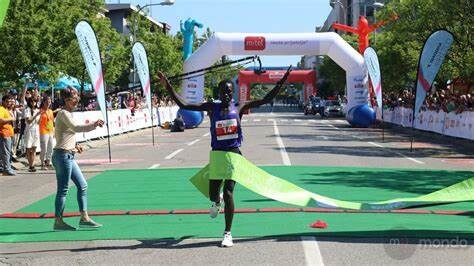
Five from Kenya and Italy, one from France and Burundi to beat the record to be beaten currently in the legs of the Kenyan James Kipkogei Kutto who in 2006 crossed the finish line in 2h08'40". The Kenyan Dikson Simba Naykundi (Caivano Runners) could succeed in his debut on the queen distance. Dikson Nyakundi brings with him the excellent record of 60'39" on the half marathon distance that earned him victory in Treviso in 2022 and has racked up several podiums in Italy, as stated in his curriculum in which we find, among others, the victories in Cremona in 2021 and at the last edition of the Neapolis Half Marathon.
In the race, however, there are those who already have experience on the queen distance and will try to have their say having already run below the record of the event. This is the Kenyan Edwin Kimutai Kiplagat who with 2h08'21", detached in Geneva in 2021, could captain the leading group.
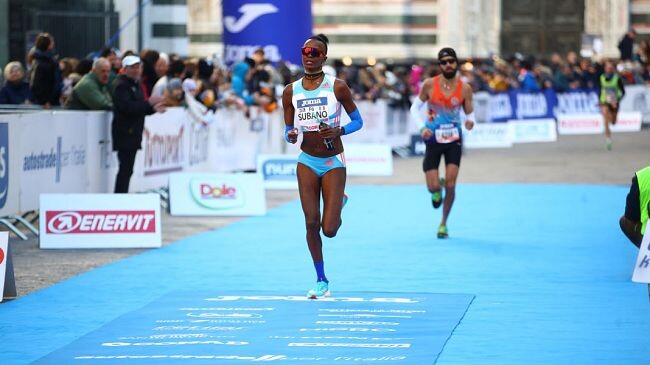
Just over a minute away, the winner of the last edition of the Neapolis Marathon, the Kenyan Samuel Naibei Kiplimo who has already stopped the clock of the 2022 Run Rome The Marathon at 2h09'41", when he conquered the seventh position overall. Behind him is the first on the home list, the Moroccan with an Italian passport Hicham Boufars (Asd International Security) who participated in Florence in 2019 (third overall with 2h13'29"), in 2018 with a personal best (second overall with 2h12'16"), 2015 (2h13'36") and 2014 (2h17'12"), followed by the Kenyan Hyllry Chemweno who this year snatched the personal best of 2h13'28" by winning the Skopje marathon (Macedonia).
A little further behind is Lhoussaine Oukhrid (ASD AT Running) with a personal best of 2h16'25" followed by the Algerian with a French passport Menad Lamrani, last year at the personal best of 2h16'45" at the Rennes marathon (France).
At the start, with the task of acting as a hare, the Kenyan Simon Dudi Ekidor who brings the time of 2h18'58" from the 2019 Nairobi marathon.
Closing the ranks are three Italian regulars of this event, the Moroccan Khalid Jbari (Athl. Club 96 Alperia), capable of 2h21'32", his personal best, in 2022 and Andrea Soffientini (Dinamo Running), for him already three medals in the Firenze Marathon, in 2022 (2h26'36"), in 2021 (2h22'29") and in 2021 (2h26'36") and Kabir Hicham (Pol Moving SSD ARL) who in Florence conquered his best time with 2h22'44" last year, when he showed up sixth at the finish line, improving on the 12^ position of 2021 (2h27'24").
Burundian Jean Marie Bukuru makes his debut with the record of 63'03" in his legs at the 2023 Arezzo half marathon.
Top runners – Women
Five from Kenya, two national standard-bearers and one from Morocco for the glory of the 40^ Estra Firenze Marathon, although, barring surprises, it does not seem that the women's record of the route that belongs to the Olympic Lonah Chemtai Salpeter can waver, in 2018 she had lowered it by four minutes compared to the previous one bringing it to 2h 24'17".
On paper, the victory goes to the Kenyan Vivian Cherotich to whom the Italian roads bring luck, as told by the record with victory conquered at the last edition of the Romeo & Giulietta Half Marathon with a time of 1h09'18" which is on a par with the victory of the last marathon in Eindhoven (Netherlands) when she set her personal best of 2h26'41". Watch out for the Moroccan Souad Kabouchia who here in Florence, in 2021, has already taken fourth place running in 2h27'49", a handful of seconds from the personal best that gave her the victory of the last marathon in Enschede, which ended in 2h27'16".
Three minutes behind her it is possible to see the stride of her compatriot Dorine Cherop Murkomen who this year in Seville set her best time with 2h29'39".
The breath on the neck is of the Kenyan Teresiah Kwaboka Omosa (Caivano Runners) who has racked up several victories, including the half marathons of Udine (2021), Wachau (2022) and Nancy (2024) as well as that of the Salzburg marathon in 2018. For her, the record on the queen distance is from 2021 when in Fürstenfeld (Austria) she stopped the clock at 2h30'12".
A little more detached is the Kenyan Hellen Chepkorir who brings 2h34'16" scored in Kosice (Slovakia) in 2017. In the group of pursuers the Kenyan Lucy Chepoghon Chelele who boasts the time of 2h38'12" a few weeks ago in Nairobi, the blue of Kenyan origin Maria Gorette Subano (Cus Pro Patria Milano), last year able to snatch the bronze medal of the 39^ Firenze Marathon and recently improved at the Berlin marathon (Germany) where she finished her efforts in 2h38'45". For Italy also her teammate Sarah Giomi with the time of 2h40'22" set in Amsterdam in 2018.
Hall of Fame
The ranking by nations still sees the colors of Italy in the lead with 22 victories (11 among men and 11 among women), followed by Kenya with 16 successes (12/4), then Ethiopia which with 15 victories (7/8) extends its lead over Great Britain with 9 victories (3/6); then at 2 there are Bahrain (2/0) and Hungary (0/2). Austria (0/1), Belgium (0/1), Brazil (1/0), Israel (0/1), Yugoslavia (1/0), Morocco (1/0), Norway (0/1), Czech Republic (0/1), Russia (0/1), Rwanda (0/1), Slovenia (0/1) and Ukraine (1/0) all have one win each. There are 18 nations that can boast at least one victory in the roll of honour.
Victories of 9 different nations among men and 13 different nations among women. Men: Kenya 12, Italy 11, Ethiopia 7, Great Britain 3, Bahrain 2. Brazil, Yugoslavia, Morocco and Ukraine: 1. Women: Italy 11, Ethiopia 8, Great Britain 6, Kenya 4, Hungary 2. Austria, Belgium, Israel, Norway, Czech Republic, Russia, Rwanda and Slovenia: 1.
The 2023 edition of the Florence Marathon brought the tricolor back to the men's podium with Said El Otmani (CS Army), in the women's victory of Clementine Mukandanga who signed the national record for Rwanda while the last Italian who had the national anthem sung is Giovanna Volpato who in 2008 cut the ribbon in 2h34'13".
Login to leave a comment
Firenze Marathon
This is Firenze (Florence) Marathon! Along the way you will be surrounded by centuries of art, history and culture, a unique emotion that can only be experienced by those who run in Florence. Thousands of sports people and enthusiasts from all over the world come to participate in this classic race on the last Sunday in November. The route takes...
more...Etienne Daguinos sets European 10km record in Lille
The distance runner clocks 27:04 and takes three seconds off Jimmy Gressier’s mark with super run in French city
Etienne Daguinos set a European 10km record with a sensational performance at Urban Trail de Lille (November 16).
Daguinos, who was part of the French under-23 team that claimed silver at the 2022 European Cross Country Championships, went into the 10km off the back of a personal half-marathon best of 59:46, which put him joint-10th on the European all-time list over 13.1 miles.
“I cannot believe it,” Daguinos said. “Some people might have predicted it [10km record] but I didn’t believe it. I knew that I was in good shape after my half-marathon in Valencia. I wanted to run faster than 27:30 and I am still in shock.”
Not only did Daguinos defeat a strong and deep field in Lille but he did so by running identical 5km splits of 13:32.

World 1500m bronze medallist Narve Gilje Nordas broke the Norwegian 10km record with 27:31, while Mohamed Abdilaahi clocked 27:40, the fastest time by a German in history.
That put the pair seventh and joint-10th on the European 10km all-time list respectively.
It means that Mo Farah, who ran 27:44 in 2010 and held the European 10km record until Julien Wanders recorded 27:32 in 2018, is now 13th on the rankings.
With six out of the eight fastest 10km times by European male athlete occurring this season, expect the record books to tumble once again next year.
Daguinos, who occasionally trains in Font Romeu and also has a background in trail running, is now in prime position to be the first European athlete to break the 27-minute barrier in the 10km.
Only 29 athletes have ever achieved the feat and they are all from Africa.
by Athletics Weekly
Login to leave a comment
Joe Klecker Plans His Half Marathon Debut
In a live recording of The CITIUS MAG Podcast in New York City, U.S. Olympian Joe Klecker confirmed that he is training for his half marathon debut in early 2025. He did not specify which race but signs point toward the Houston Half Marathon on Jan. 19th.
“We’re kind of on this journey to the marathon,” Klecker said on the Citizens Bank Stage at the 2024 TCS New York City Marathon Expo. “The next logical step is a half marathon. That will be in the new year. We don’t know exactly where yet but we want to go attack a half marathon. That’s what all the training is focused on and that’s why it’s been so fun. Not that the training is easy but it’s the training that comes the most naturally to me.”
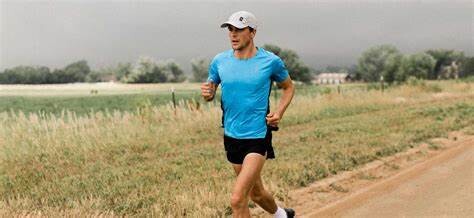
Klecker owns personal bests of 12:54.99 for 5000m and 27:07.57 for 10,000m. In his lone outdoor track race of 2024, he ran 27:09.29 at Sound Running’s The Ten in March and missed the Olympic qualifying standard of 27:00.00.
His training style and genes (his mother Janis competed at the 1992 Summer Olympics in the marathon and won two U.S. marathon national championships in her career; and his father Barney previously held the U.S. 50-mile ultramarathon record) have always linked Klecker to great marathoning potential. For this year’s TCS New York City Marathon, the New York Road Runners had Klecker riding in the men’s lead truck so he could get a front-row glimpse at the race and the course, if he chooses to make his debut there or race in the near future.
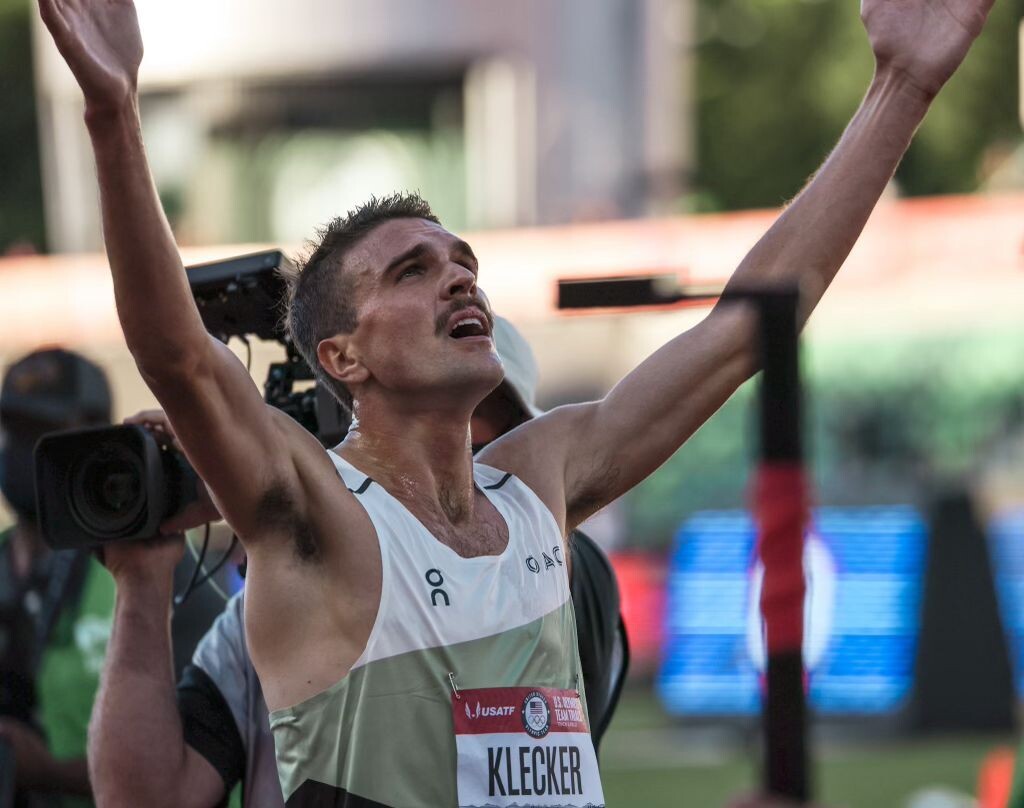
The Comeback From Injury
In late May, Klecker announced he would not be able to run at the U.S. Olympic Track and Field Trials in June due to his recovery from a torn adductor earlier in the season, which ended his hopes of qualifying for a second U.S. Olympic team. He spent much of April cross training and running on the Boost microgravity treadmill at a lower percentage of his body weight.
“The process of coming back has been so smooth,” Klecker says. “A lot of that is just because it’s been all at the pace of my health. I haven’t been thinking like, ‘Oh I need to be at this level of fitness in two weeks to be on track for my goals.’ If my body is ready to go, we’re going to keep progressing. If it’s not ready to go, we’re going to pull back a little bit. That approach is what helped me get through this injury.”
One More Track Season
Klecker is not fully prepared to bid adieu to the track. He plans to chase the qualifying standard for the 10,000 meters and attempt to qualify for the 2025 World Championships in Tokyo. In 2022, after World Athletics announced Tokyo as the 2025 host city, he told coach Dathan Ritzenhein that he wanted the opportunity to race at Japan National Stadium with full crowds.
“I’m so happy with what I’ve done on the track that if I can make one more team, I’ll be so happy,” Klecker says. “Doing four more years of this training, I don’t know if I can stay healthy to be at the level I want to be. One more team on the track would just be like a dream.”
Klecker is also considering doubling up with global championships and could look to qualify for the 2025 World Road Running Championships, which will be held Sept. 26th to 28th in San Diego. To make the team, Klecker would have to race at the Atlanta Half Marathon on Sunday, March 2nd, which also serves as the U.S. Half Marathon Championships. The top three men and women will qualify for Worlds. One spot on Team USA will be offered via World Ranking.
Sound Running’s The Ten, one of the few fast opportunities to chase the 10,000m qualifying standard on the track, will be held on March 29th in San Juan Capistrano.
Thoughts on Ryan Hall’s American Record
The American record in the half marathon remains Ryan Hall’s 59:43 set in Houston on Jan. 14th, 2007. Two-time Olympic medalist Galen Rupp (59:47 at the 2018 Prague Half) and two-time U.S. Olympian Leonard Korir (59:52 at the 2017 New Dehli Half) are the only other Americans to break 60 minutes.
In the last three years, only Biya Simbassa (60:37 at the 2022 Valencia Half), Kirubel Erassa (60:44 at the 2022 Houston Half), Diego Estrada (60:49 at the 2024 Houston Half) and Conner Mantz (60:55 at the 2021 USATF Half Marathon Championships) have even dipped under 61 minutes.
On a global scale, Nineteen of the top 20 times half marathon performances in history have come since the pandemic. They have all been run by athletes from Kenyan, Uganda, and Ethiopia, who have gone to races in Valencia (Spain), Lisbon (Portugal), Ras Al Khaimah (UAE), or Copenhagen (Denmark), and the top Americans tend to pass on those races due to a lack of appearance fees or a stronger focus on domestic fall marathons.
Houston in January may be the fastest opportunity for a half marathon outside of the track season, which can run from March to September for 10,000m specialists.
“I think the record has stood for so long because it is such a fast record but we’re seeing these times drop like crazy,” Klecker says. “I think it’s a matter of time before it goes. Dathan (Ritzenhein) has run 60:00 so he has a pretty good barometer of what it takes to be in that fitness. Listening to him has been really good to let me know if that’s a realistic possibility and I think it is. That’s a goal of mine. I’m not there right now but I’m not racing a half marathon until the new year. I think we can get there to attempt it. A lot has to go right to get a record like that but just the idea of going for it is so motivating in training.”
His teammate, training partner, and Olympic marathon bronze medalist Hellen Obiri has full confidence in Klecker’s potential.
“He has been so amazing for training,” Obiri said in the days leading up to her runner-up finish at the New York City Marathon. “I think he can do the American record.”
by Chris Chavez
Login to leave a comment
Aramco Houston Half Marathon
The Chevron Houston Marathon provides runners with a one-of-a-kind experience in the vibrant and dynamic setting of America's fourth-largest city. Renowned for its fast, flat, and scenic single-loop course, the race has earned accolades as the "fastest winter marathon" and the "second fastest marathon overall," according to the Ultimate Guide to Marathons. It’s a perfect opportunity for both elite athletes...
more...Compression socks might help your race-day tummy troubles
Compression socks have sprinted from the clinic to the track, with pro runners like Sifan Hassan and Eliud Kipchoge touting their recovery and performance benefits. Are they really more than just a fashion trend? Here’s the scoop on what compression socks deliver, and where the hype might be outpacing the science.
Better blood flow and swelling control
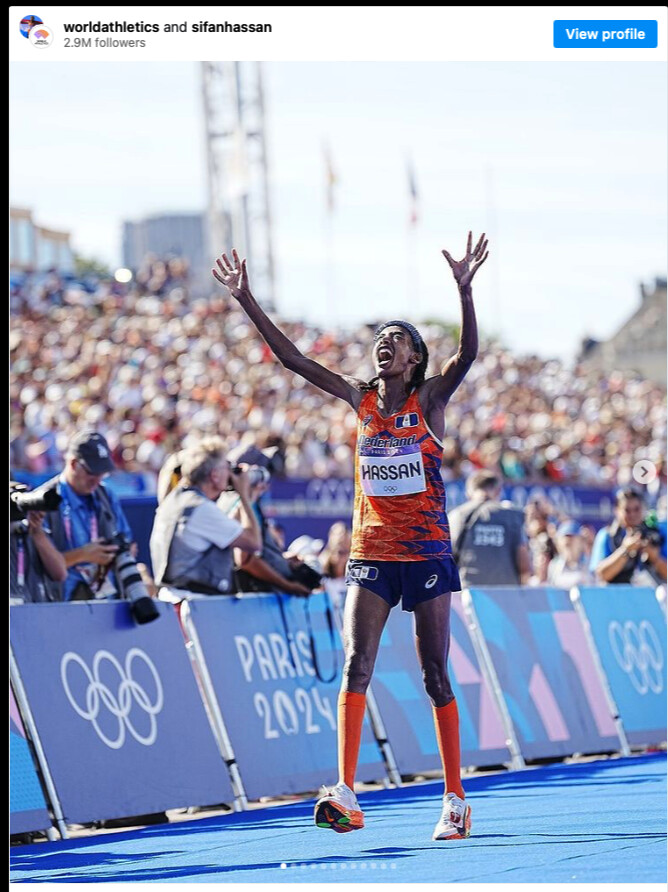
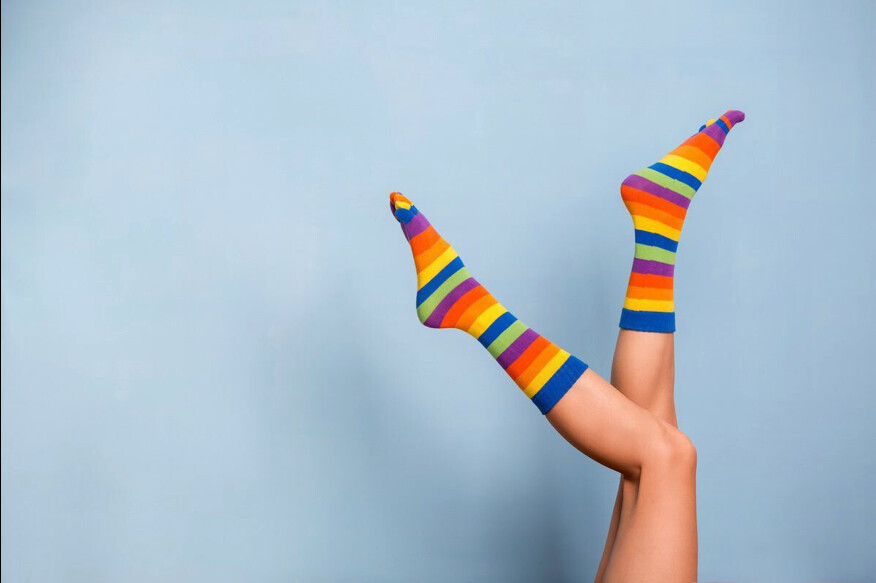
Studies suggest that compression socks really do promote blood circulation and reduce swelling in the legs. Whether you’re logging miles on the trail or pounding the pavement, compression can help prevent that dreaded heavy-leg feeling by keeping blood moving efficiently back to the heart, as recently reported in SELF magazine. Dr. Leada Malek, a San Fransisco-based sports physical therapist, notes that compression socks are particularly useful for runners dealing with recurring swelling or minor injuries like ankle sprains. By reducing fluid buildup, the socks help maintain freedom of movement, letting you run without the drag of swollen, tired legs.
Compression socks can also be helpful for runners who experience postural dizziness after intense effort. For runners with conditions like postural orthostatic tachycardia syndrome (POTS), which can cause lightheadedness when shifting from sitting to standing, the socks help push blood back to the brain and heart.
A calmer stomach on race day
If you’ve ever experienced a queasy stomach during a race, compression socks might help. Running can decrease blood flow to your gut, which leads to discomfort or even nausea. A study in the Journal of Strength and Conditioning Research suggests that compression socks can direct more blood from your legs to your GI tract, helping reduce digestive distress. By maintaining better blood circulation, you may find yourself more comfortable mid-race, with fewer interruptions from an unhappy stomach.
A boost for post-workout recovery
The role of compression socks in post-workout recovery is widely debated. Some research suggests that wearing compression garments can reduce markers for muscle damage. While the effects vary, many athletes report feeling less sore after wearing them. Even if muscle repair benefits are unclear, the stable, “hugging” sensation of compression might help you feel ready to move your body sooner.
Compression socks for travel and long races
Planning to run a far-off race? Compression socks might help keep you healthy by reducing your risk of deep vein thrombosis (DVT) on long flights. According to research, wearing compression socks during prolonged sitting can prevent blood clots by keeping blood flowing in the legs.
Research also suggests that wearing them during a race might reduce DVT risk for the flight home, as the pressure supports blood flow and circulation.
The takeaway
Compression socks may not shave seconds off your race time, but they do offer a variety of benefits, from easing leg swelling to calming a queasy stomach. And if they make you feel more confident on race day, that extra motivation could be all you need to push harder.
by Running Magazine
Login to leave a comment
Ontario runner signs pro contract with Under Armour
On Thursday, Rosseau, Ont., native Gracelyn Larkin announced her contract with Under Armour’s pro running club, Dark Sky Distance, which is based in Flagstaff, Ariz. The 5,000m Canadian outdoor champion from 2022 is a recent graduate of Northern Arizona University (NAU), and formerly competed for the University of New Mexico (UNM) from 2019-2023.
Already located in Flagstaff following her graduation, Larkin will continue training at altitude under coaches Shayla Houlihan and Stephen Haas. The Canadian will be among former UNM teammate and Olympian Weini Kelati and 2022 New York City Marathon champion Sharon Lokedi, who also represent Under Armour.
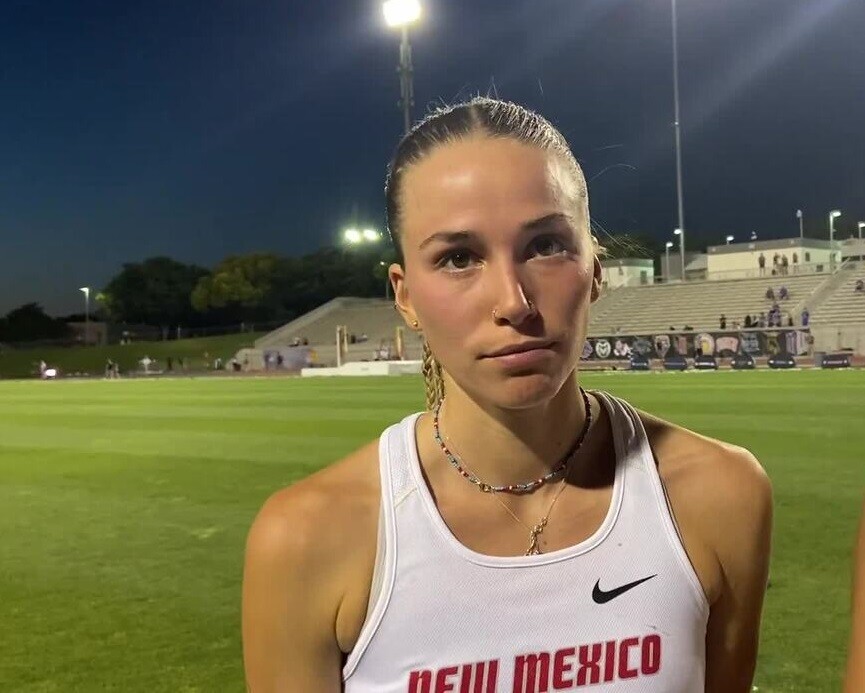
The 23-year-old boasts personal bests of 15:23.63 in the 5,000m and 32:32.61 in the 10,000m. A successful collegiate career saw Larkin earn All-American status seven times, before she went on to represent Canada in the 5,000m at the 2022 World Championships in Eugene, Ore.
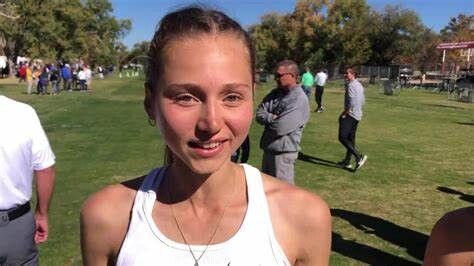
Over the summer, Larkin chased a spot on the Canadian Olympic team. At the Harry Jerome Classic 5,000m in Burnaby, B.C., in June, she clocked 15:25.83 to claim fifth place in a quick race; the time was just two seconds off her personal best. Later that month, Larkin competed at the Canadian Olympic Track and Field Trials in Montreal, placing fourth in the women’s 5,000m final with a time of 15:36.41. The UNM graduate was less than three seconds behind the winner, Gabriela Debues-Stafford. Despite strong efforts, Larkin fell short of qualifying for Paris 2024.
“I’m very grateful to be joining such an amazing group of hard-working individuals,” Larkin said in the announcement post on Instagram. “Working with Under Armour is an amazing opportunity and I can’t wait to represent them over the upcoming years. I look forward to learning from my teammates and coaches while I develop as a professional athlete!”
by Cameron Ormond
Login to leave a comment
Chebet braces for Italica International Cross Country meeting on November 17
Double Olympic champion Beatrice Chebet is set to bring her fierce form to the 42nd Italica International Cross Country meeting on November 17, a highlight event on the World Athletics Cross Country Tour Gold circuit.
Chebet stunned the world in Paris in August with her dual gold-winning performances in the 5,000m and 10,000m.
She secured the 10,000m gong in a time of 30:43.25 leading Italy’s Nadia Battocletti ( 30:43.35 ) and Olympic marathon champion Sifan Hassan of Netherlands ( 30:44.12 ).
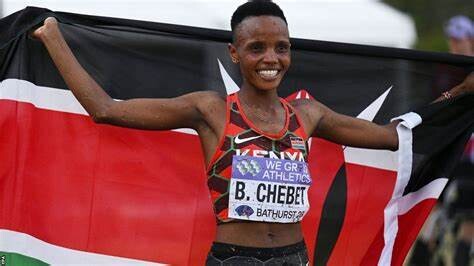
Chebet went on to add the 5,000m title, finishing in 14:28.56 outpacing three-time Olympic 1,500m champion Faith Kipyegon ( 14:29.60 ) and Hassan ( 14:30.61 ).
Chebet is no stranger to cross-country success.
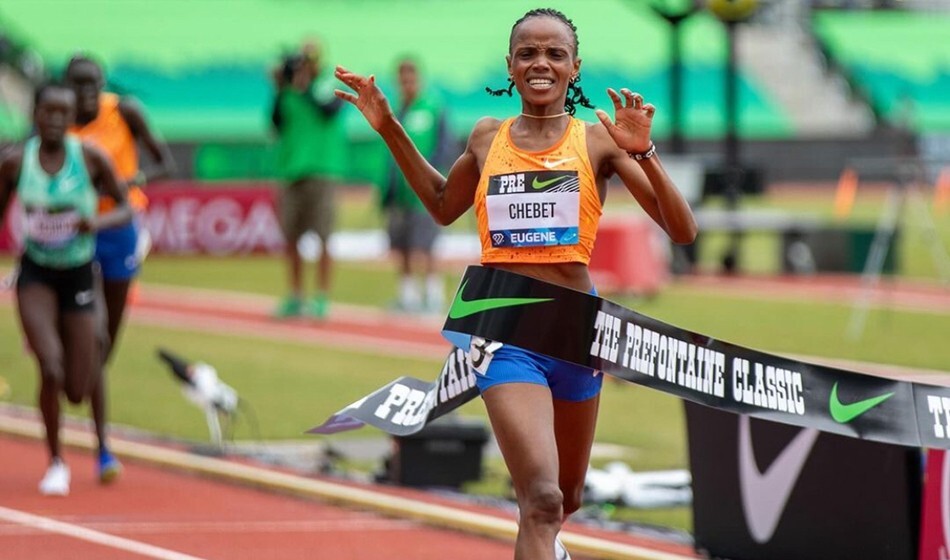
She captured the World U20 Cross Country title in Denmark in 2019 in 20:50.
In 2021, Chebet placed second at the Atapuerca 8km Cross Country event in 25:04 behind Eritrea’s Rahel Ghebreneyohannes ( 25:03 ).
That same year, she clocked 24:35 for a third-place finish at the Seville 7km cross-country meeting.
In 2022, she returned to Atapuerca, this time claiming the title in 25:39.
Last year, she claimed the World Cross Country Championships title in Bathurst, Australia clocking 33:48 with Ethiopia’s Tsigie Gebreselama ( 33:56 ) in second and Agnes Ngetich ( 34:00 ) completing the podium.
She defended her title this year in Belgrade, Serbia, finishing in 31:05 ahead of compatriots Lilian Kasait ( 31:08 ) and Margaret Chelimo ( 31:09 ).
Her illustrious track career boasts silver and bronze medals in the 5,000m during the 2022 (Eugene) and 2023 (Budapest) World Championships.
She boasts gold from the 2022 Birmingham Commonwealth Games as well as the Saint Pierre African Games, both in the 5,000m.
Chebet is the 2018 World Junior 5,000m champion as well as the 2019 African 5,000m junior champion.
In Italy, Chebet will be in the company of 2024 World U20 3,000m steeplechase bronze medallist Diana Chepkemoi as well as the 2018 World 3,000m steeplechase champion Daisy Jepkemei.
The trio will face off against European 3,000m steeplechase record holder Alice Finot of France as well as the World U20 5,000m bronze medallist Charity Cherop of Uganda.
Sweden’s Sarah Lahti, Portugal’s Mariana Machado and Spain’s Carolina Robles will add depth to the field.
In the men’s field, Olympic 10,000m silver medallist Berihu Aregawi from Ethiopia will lead the charge.
His main rivals will be the 2024 Rome Half Marathon champion Yemaneberhan Crippa of Italy as well as Ugandan’s Dan Kibet, Hosea Kiplangat and Kenneth Kiprop.
Portugal’s Etson Barros, Uruguay’s Santiago Catrofe and Spain’s adel Mechaal add depth to the field.
by Teddy Mulei
Login to leave a comment
Cross internacional de Italica
The Cross Internacional de Itálica is an annual cross country running competition it will be held on 21st of November in Santiponce, near Seville, Spain. Inaugurated in 1982, the race course is set in the ruins of the ancient Roman city of Italica. As one of only two Spanish competitions to hold IAAF permit meeting status, it is one of...
more...MARATHON GROUNDBREAKERS
Since Australia’s Derek Clayton ran history’s first sub—2:10 marathon in Fukuoka, Japan, on 3 December 1967, there have been a total of 4538 sub—2:10 marathons (as of 30 October 2024), 4537 by men, one by a woman.
As with any new ground-breaking performance, Ruth Chepngetich’s 2:09:56 in Chicago on 13 October has forced us to reassess all our past assumptions, or, like many, to doubt the validity of the performance itself. But no matter how we got here, to whatever you want to ascribe it, this is where we are now, 2:09:56 by a woman.
In this new reality, until proven otherwise, Ruth Chepngetich is the new Paula Radcliffe, just as Paula was the new Grete Waitz, one ground-breaker to the next, 1978 to 2003 to 2024.
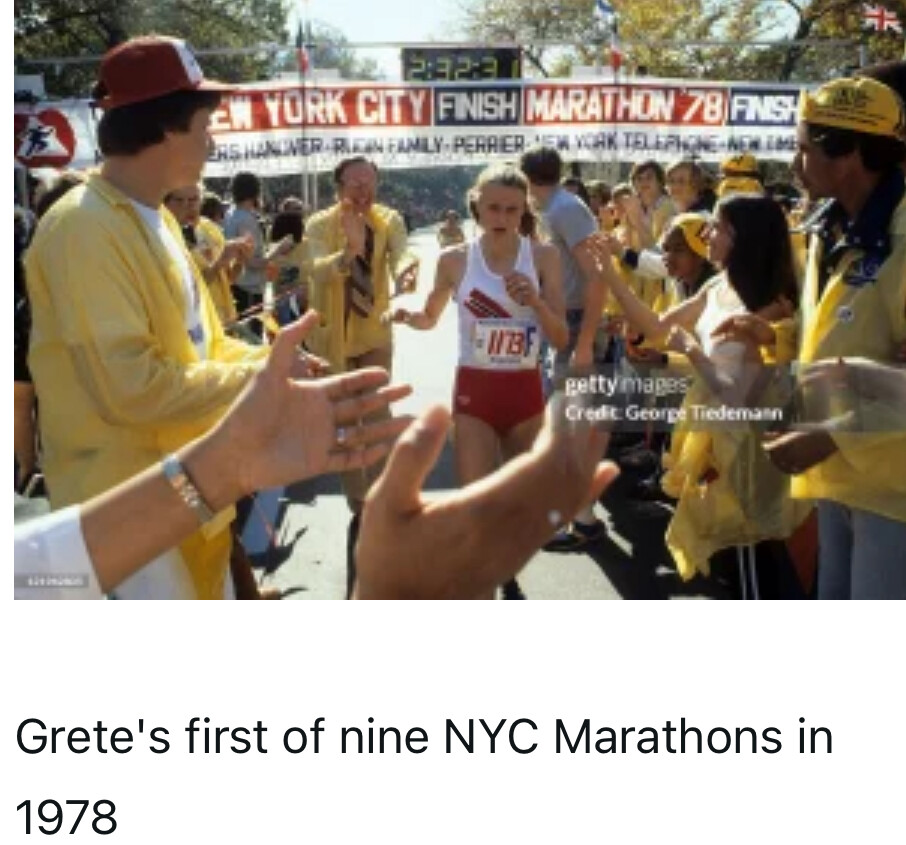
There have been many talented women champions through the years besides those three, including all the pioneers who had to overcome centuries of gender bias that restricted women from even showing their stuff.
But in terms of pure ground-breaking, the 1978 New York City Marathon drew a bright line between what once was and what would be.
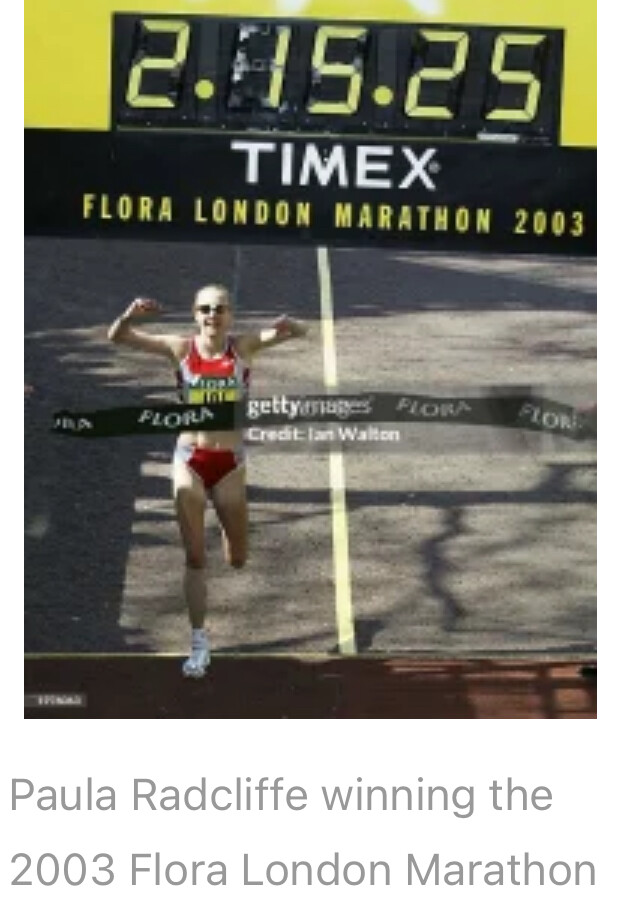
On 22 October 1978, Norway’s track and cross-country star Grete Waitz participated in the marathon for the first time, almost on a whim, as the trip was more of a honeymoon for her and husband Jack after the long track season.
The 2:32:30 world record Grete ran that day was totally unexpected by both the public and Grete herself. She wore bib #1173, wasn’t included on the list of elite women, and came with no specific marathon preparation (not a single run over 13 miles). In fact, she was so upset with husband, Jack, for suggesting she come run the marathon that she threw her shoes at him in the hotel room following her victory.
Still, like almost all debuting marathoners, after a short period of recovery and reflection, Grete concluded she could probably improve next time.
Thus, in New York 1979, following a more careful preparation, Grete ripped nearly five full minutes off her 1978 mark to record history’s first sub—2:30 by a woman at 2:27:33. Her margin of victory over England’s Gillian Adams was 11 minutes (2:38:33). The combination of the mild-mannered former geography teacher from Oslo and the raucous New York City crowds proved transformative, elevating women’s running to heights previously unimagined.
Though Japan’s Naoko Takahashi broke the 2:20 barrier for women in Berlin 2001, after Norway’s Ingrid Kristiansen (2:21:15, London ‘85), America’s Joan Benoit Samuelson (2:21:21, Chicago’85), and Kenyan Tegla Loroupe (2:20:43, Berlin ‘99) all challenged the barrier in the 1980s and ‘90s, it was England’s Paula Radcliffe who established new headlands in the marathon in London 2003 with her 2:15:25.
Nearly two minutes faster than her own 2:17:18 record from Chicago the year before, her 2:15 arced away from Catherine Ndereba’s 2:18:47 from Chicago 2001, completed just one week after Takahashi’s first sub-2:20 in Berlin.
The quality of Paula’s 2:15 can be seen in the 16 years and an entire shoe technology revolution that developed before Kenya’s Brigid Kosgei did Paula one better in Chicago 2019 at 2:14:04. That performance plowed new ground again. And now we have Ruth Chepngetich in Chicago 2024 with history’s first sub-2:10, just a year after Ethiopia’s Tigst Assefa’s first sub—2:12 in Berlin `23 (2:11:53).
Twice before, Chepngetich had come to Chicago with world record intentions. In 2022, she won the race in 2:14:18, just 14 seconds off Kosgei’s record. In 2023 she finished second in 2:15:37. On both occasions she flew through halfway under 66 minutes, only to falter in the second half. Perhaps she was a close reader of Malcolm X.
“There is no better teacher than adversity. Every defeat, every heartbreak, every loss, contains its own seed, its own lesson on how to improve your performance the next time.” – Malcolm x
In simple terms, making innovative strides in athletics requires time, experimentation, and reviewing, similar to how new scientific theories are examined before full acceptance. But women just haven’t been at the marathon game long enough to produce a large enough sample size to define their outer limits with any accuracy. They are barely two generations in since 1978.
Men have been competing for a much longer time with a much larger sample size.
Though Eliud Kipchoge surpassed the two-hour barrier in Vienna in 2019, that was accomplished as an exhibition, not a sanctioned race. In that sense, we are still awaiting the next barrier breaker on the men’s side in the Marathon.
Looking back, England’s Jim Peters stands as the first modern barrier breaker with his 2:18:40 win at the 1953 Polytechnic Marathon between Windsor and Chiswick in West London, England, history’s first sub—2:20.
Next was Ethiopia’s Abebe Bikila, the legendary double Olympic victor in Rome 1960 and Tokyo 1964. His 2:15:17 in Rome still stands as the barefoot marathon world record.
Next came Australia’s Derek Clayton, the first man under both 2:10 and 2:09. His 2:08:34 from Antwerp 1969 lasted for 12 years, holding off challenges throughout the entire Running Boom era headed by Americans Frank Shorter and Bill Rodgers.
Though never world record holders, the two Americans dominated the 1970s boom era, Shorter through the first half, Rodgers the second.
The Eighties were the last decade of international marathon champions: American (Al Salazar, Greg Meyer); European (Steve Jones, Carlos Lopes); Japanese (Toshihiko Seko and the Soh brothers); and Australian (Rob de Castella). Kenya’s Joe Nzau won Chicago in 1983 in a thrilling duel with England’s Hugh Jones when Chi-town was still developing its reputation as a world class event.
Ibrahim Hussein set new records in Honolulu and kick-started the Kenyan marathon revolution
The full East African deluge didn’t begin until 1987 and ‘88 when Kenya’s Ibrahim Hussein (already a two-time and soon to be three-time Honolulu Marathon champion) became Africa’s first New York City and Boston Marathon winner and Ethiopia’s Belayneh Dinsamo set the world record, 2:06:50, in Rotterdam 1988 that lasted over a decade.
The list of marathon stars from other nations scaled back markedly in the 1990s. Mexico had its turn at the top via greats like Dionicio Cerón (1994-`96 London champion), and back-to-back New York Ciy winner German Silva (1994 & 1995).
Moroccan-born American Khalid Khannouchi twice ran a world marathon record, first in Chicago 1999 (2:05:42), then three years later in London 2002 (2:05:38). And who could forget the personable Brazilian, Marílson Gomes dos Santos, who won New York City twice in 2006 & 2008, or Meb in NYC `09 and Boston 2014??
But the United Nations pickings get rather meager after that as East African athletes have had a stranglehold on the sport of marathoning, most dominatingly by Kenya’s Eliud Kipchoge. His run of sustained excellence over 42.2 kilometers was, and is, unprecedented in its longevity, including double gold in Rio 2016 and London 2020. And his last world record of 2:01:09 in Berlin 2022.
Sadly, the current record holder, Kelvin Kiptum, died in a car accident in February 2024 after establishing the 2:00:35 world record in Chicago 2023.
With the 2024 TCS New York City Marathon scheduled this weekend, we don’t expect to see any record performances. Yet, all the above is why we follow the game, isn’t it, to witness the arc of improvement over time, while hoping to discover a new name to remember? It’s as valid a focus as any other in this life.
And despite its many flaws and corruptions, the sport of marathoning retains an innate dignity that many endeavors do not. People may have bruised, battered, and tarnished it in the name of glory and money. But it survives, nonetheless, as a simple reflection of the human drive to achieve more in the quest to discover our best.
Doesn’t always turn out that way, but I don’t think we are done with it quite yet. Onward!
by Toni Reavis
Login to leave a comment
Marseille-Cassis: Rwanda's Félicien Muhitira wins the race, Martégal's Clémence Calvin wins the women's race
Rwanda's Félicien Muhitira, 29-year-old athlete crossed the finish line after 1:01:42 of effort. Clémence Calvin won the women's race in 1:13:32.
Arriving limping after only an hour of effort (1h01'42"), the Rwandan won the 45th edition of Marseille-Cassis on Sunday morning. After 20km, the athlete kissed his shoes on the finish line to pay tribute to the Burundian Gervais Hakizimana who died in February who had given him his pair. "I was very focused today. It's a good victory," the winner reacted emotionally to France 3.
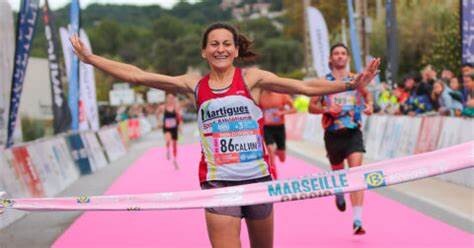
The second in the men's race, the Moroccan Youssef Benhadi had more difficulty when it came to finishing his effort as he was taken care of by the emergency services. The Frenchman Félix Bour completed the podium in the men's race. "I lacked freshness. I did three races in a row this month, I thought it would be enough but the Gineste is not forgiving! The defeat is bitter, I came for the victory but a podium is not to be refused...", he said.
Nicolas Navarro from Aix, a member of the SCO Ste Marguerite, finished at the foot of the podium. "I've already done much better in terms of time, but I still had fun." Clémence Calvin won the women's race in 1:13:32? "I'm happy, I held up well mentally. Since Carro-Carry, I feel like I've had a click. Six years after my first participation, I've added this great international classic to my list of achievements and I'm very happy about it," said the first woman in the general standings.
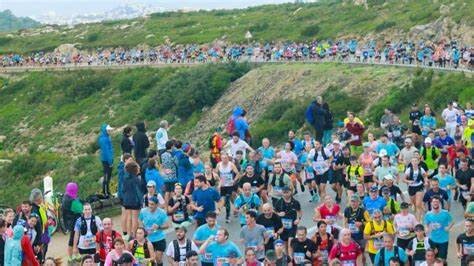
As a reminder, nearly 20,000 riders took the start this Sunday morning of this 20-kilometer race, at 9 a.m., in front of the Velodrome, which will host the long-awaited Clasico this Sunday evening (8:45 p.m.).
by T.Le.
Login to leave a comment
Marseille Cassis
Once upon a time… How could we imagine one day of March 1979, the idea of organizing a race opened to everyone between Marseilles and Cassis could take such an International dimension? A very young athletic section, a group of close friends and the unfailing support of every sections of an “omnisport” club, the SCO Ste Marguerite, gave...
more...When should you not finish a race?
It’s a question many runners have faced mid-race: should I stop? The thought of pulling out can cross any runner’s mind when the day isn’t going as planned, whether you’re leading the pack or you’re dead last. After all, you’ve put in the time and effort to reach the start line, and even if training suggests you’re in great shape, pushing through to the finish can be a challenge. While persevering is often the right choice, there are times when stepping off the course might be the wisest decision. Here’s a look at when you should consider the dreaded DNF.
Injury or pain beyond discomfort

It’s one thing to feel the familiar aches that come with pushing your limits, but it’s another to feel a sharp, shooting pain that signals a potential injury. If you experience pain that worsens with each step, it could be a sign of a stress fracture, muscle tear or joint damage. Ignoring these signs can turn a minor injury into a serious one, potentially keeping you off your feet for the long term.
Common injuries like IT band syndrome or Achilles tendinitis can worsen if you push through them. If the pain alters your gait or you find yourself limping, it’s time to listen to your body and consider calling it a day. It’s better to miss one race than to be sidelined for a whole season.

Dehydration or heat exhaustion
Races that are held in the middle of the summer come with the risk of dehydration or heatstroke. While sweating and feeling thirsty are normal during endurance events, certain symptoms indicate that your body is struggling to keep up. Dizziness, confusion and cramping are all signs of dehydration. In more severe cases, you may experience chills, even in warm weather—a sign of potential heat exhaustion.
If you feel disoriented or experience a sudden drop in energy levels that doesn’t improve after slowing down and hydrating, you should seek medical attention. Continuing in such a state can lead to serious complications or even death. Hydration is critical, but sometimes, even the most prepared runners can find themselves in a situation where stopping is the safest option.
Gastrointestinal distress
GI issues are not uncommon, especially during longer marathons and ultras, where the stress on the body is higher and you must consume nutrition. If you’re dealing with an upset stomach, nausea or diarrhea, you might be able to push through, depending on the severity. However, if the discomfort is unbearable or you’re unable to keep fluids down, it’s wise to pull back and locate a porta-potty to take care of the issue.
by Marley Dickinson
Login to leave a comment
Sorome Negash eyes follow-up success in Dublin Marathon
Sunday next will see the 44th staging of the Irish Life Dublin Marathon, with Sorome Negash of Ethiopia, who won the women's race in the 2023, set to defend her title.
Negash posted a time of 2:26:22 last year and will face competition from fellow Ethiopian Muliye Dekebo, who has a personal best of 2:25:35, and Asmirach Naga, who placed third in her marathon debut at the Rabat Marathon with a time of 2:26:55.
Ann-Marie McGlynn, who competes for Letterkenny AC was the first Irish woman home 12 months ago, when finishing fifth, and again will be looking to retain her national marathon title.
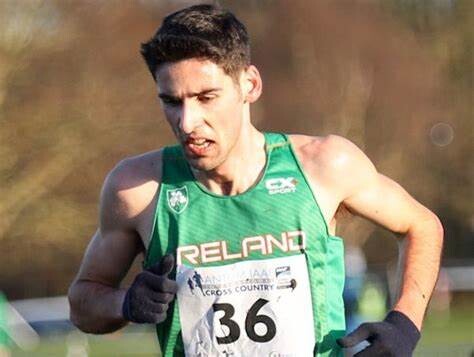
Gladys Ganiel (North Belfast Harriers) Caitlyn Harvey (Road Runners AC) and Grace Lynch (DSD AC) and Aoife Kilgallon (Sligo AC) will be the other home-based names to watch, with the latter finishing the Sligo Coast to Coast 10 Mile race in a respectable 57:12 despite windy conditions.
Spain’s Aya Lamdassem is the leading contender for the men's overall win, with a personal best of 2:06:25 achieved in Seville in 2022 and a season-best of 2:09:43. He also finished fifth at the 2020 Tokyo Games. Also in contention podium positions are Aweke Ayalew from Bahrain, Ethiopia's Abebaw Desalew and and Cypriot Amine Khadirir.
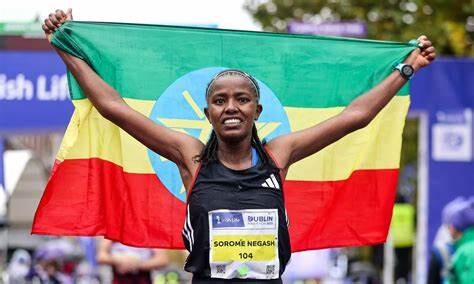
Of the Irish contingent, Hugh Armstrong from Ballina AC has set his sights on winning the national marathon for the fifth consecutive year, this after an impressive year in which he won all four races in the Irish Life Dublin Race Series, including the five-mile, 10km, 10-mile, and half-marathon.
This will be Armstrong's second time competing in this race; he placed third in the National Championships in what was his marathon debut in 2019. With a personal best of 2:12:26 from the 2020 Seville Marathon, he will face strong competition from Cork's Ryan Creech of Leevale AC, who achieved a personal best of 2:12:28 in Seville this year. Creech, who finished second last year, is looking to improve on that result. Ryan Forsyth from Newcastle & District AC, who secured third place last year, will also be part of the field.
In the wheelchair race, Sean Frame will participate after finishing 12th in this year’s Berlin Marathon.
A total of 22,500 competitors are set to compete in this year's race. It will begin in Leeson Street Lower at 9am and conclude on Mount Street, just beyond the Peppercanister Church.
There will be over €100,000 in prize money available, along with national titles for senior men and women, as well as prizes for master categories and team awards.
Login to leave a comment
KBC Dublin Marathon
The KBC Dublin Marathon, which is run through the historic Georgian streets of Dublin, Ireland's largest and capital city.The course is largely flat and is a single lap, starting and finishing close to the City Centre. Conditions formarathon running are ideal....
more...A cold, hard look at extreme winter races
Winter is when races careen from the cosy, coddling courses of autumn into a forbidding tundra that both terrifies and exhilarates. It’s in this frozen landscape that the most extreme races are forged—competitions that take things to unsettlingly unconventional extremes, like sporting the scariest name or boasting the largest field of hungover revellers.
From a race season positively steeped in superlatives, here’s a sampling of extreme cold-weather races that boast the most—for reasons silly and chillingly serious—and strategies for making the most of them.
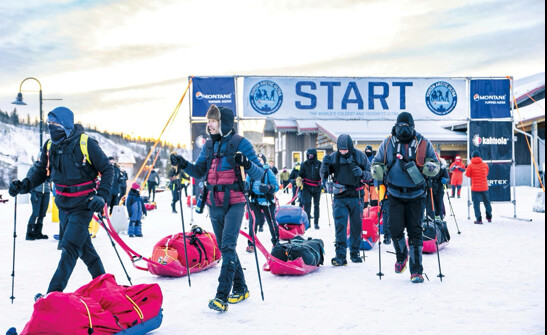

THE WILDEST
Polar Bear Marathon
Nov. 23, 2024
Churchill, Man.
Distances: 21.1 km, 42.2 km, 50 km
albertmartens.com
An event where vehicles tail runners in case a polar bear wanders onto the course truly deserves the title of winter’s wildest race. Beginning from Churchill, Man., the course takes participants along the coast of Hudson Bay for a challenge that balances breathtaking beauty with physical and mental rigour.
“A few times there have been polar bears right on the road where they run,” says race director Albert Martens. “However, we do provide safety for the runners, escorting them with a vehicle. Often the Canadian Rangers are out and assist us, as well.”
As challenging as this event is, the joys of the race aren’t to be outdone by the hardships. “One of the highlights of the run is the beautiful sunrise at the start overlooking Hudson Bay, and the post-marathon banquet, where the runners get to know each other better,” says Martens. He adds that one of the “swag bag” items runners receive is a polar bear carved out of soapstone. Although signups for this year’s event were set to close Oct. 1, it’s a race worth keeping in mind
THE BOOZIEST
Santa Will Run for Beer 5K-ish
Dec. 7, 2024
Bethlehem, Pa.
Distance: “5K-ish”
runsignup.com/Race/PA/Bethlehem/SantaWillRunforBeer5Kish
When it comes to combining Santa and suds, this race really raises the bar. Suit up in your best Kris Kringle costume and simultaneously work up and quench your thirst as you race between more than a dozen drinking establishments. The order you hit the bars in is up to you, but you’ve got three hours to stop at them all before raising a celebratory glass with your fellow runners at Molly’s Irish Grille and Sports Pub.
Speed counts—the first 24 runners at each location get a free beer—but so does presentation, so don’t skimp on style when putting together your Santa look. “Don’t go easy on your costume,” suggests Rochelle Romeo Kane, managing director of Run Lehigh Valley, which organizes the race. She also recommends mapping out your “beer strategy” beforehand: “Are you more of a ‘run fast and hit the close bars’ or ‘go for the early long-haul’ kind of runner? Either way, come with your plan and know it will change!” Runners must be at least 21, but it’s a race that
THE JOLLIEST
Santa Shuffle Fun Run & Elf Walk
Dec. 7, 2024
British Columbia: Abbotsford, Chilliwack, Langley
Alberta: Edmonton, Calgary
Saskatchewan: Regina
Manitoba: Winnipeg
Ontario: Hamilton, Kemptville, Kingston, Ottawa, Sudbury, Thunder Bay, Toronto, Whitby
Quebec: Montreal
Prince Edward Island: Charlottetown
Nova Scotia: Halifax
Newfoundland and Labrador: St. John’s
Additional virtual events
Distances: 1 km, 5 km
santashuffle.ca
What started in 1990 as a fundraiser by Running Room members to support Salvation Army programs in Edmonton has become a countrywide celebration of seasonal giving, as legions of speedy Santas are unleashed from start lines coast to coast. Santa Shuffle races, which continue to benefit the Salvation Army, boast the most Santas in Canada’s winter-running scene, but also pull in plenty of reindeer, elves and assorted festive fashionistas. Clever costuming pays at the events, with prizes for the best individual, group and pet get-ups (see the event website for details).
THE PRICIEST
Antarctic Ice Marathon
Dec. 13, 2024
Union Glacier, Antarctica
Distances: 21.1 km, 42.2 km
icemarathon.com
With a registration fee approaching $30,000, the Antarctic Ice Marathon isn’t a race you’ll enter on a whim, but the experience it offers is as rich as its price tag, and it’s sure to earn a spot on many runners’ bucket lists. You’ll be whisked by jet from Punta Arenas, Chile, to Union Glacier in the Antarctica interior, within a few hundred kilometres of the South Pole. Although aid stations, snowmobile support and medical personnel will be available, completing either the event’s marathon or half-marathon will take plenty of self-motivation; as race organizers point out, there won’t be any crowds to cheer you on—not even penguins venture this far south. Runners should also note this race can be as unpredictable as it is unforgettable. “The Antarctic Ice Marathon presents a unique challenge with its extreme cold and unpredictable weather,” says race director Becca Pizzi. “We advise runners to prepare for low temperatures and be ready for sudden shifts in conditions. Proper layering and mental resilience are key to tackling this unforgettable race.”
THE HEAD-POUNDINGEST
The 18th Hangover Hike
Jan. 1, 2025
Dewsbury, England
Distances: 15 km, 27 km, 34 km
ldwa.org.uk/TheIrregulars/W/2112/hangover-hike.html
An event that gives a refreshingly honest nod to the realities of New Year’s revelry, the Hangover Hike in northern England encourages hikers and runners to get an early and (mostly) sober start to 2025. The New Year’s Day run/hike around the rural roadways, hills and hiking trails of the town of Dewsbury (about 15 km south of Leeds) will ease participants into the challenge ahead with tea and toast at registration. The event’s three hikes—15 km with just over 300 m of ascent, 27 km with about 520 m of climb and 34 km with almost 550 m of ascent—start and end at The Leggers Inn. The Irregulars group of the Long Distance Walkers Association, which organizes the event, puts it succinctly: “A brisk walk or run, a breath of fresh air, a wee dram en route and a hair of the dog at The Leggers. What better way to start the new year?”
THE LOOPIEST
Frozen Falcon
Jan. 12, 2025
Falcon Beach, Man.
Distance: As far as you can go in eight hours
ontheedgerunning.com/home/frozenfalcon
Looped courses can help take the sting out of daunting distances by breaking down the kilometres into bite-sized chunks. The Frozen Falcon’s 6.5-km course at Falcon Trails Resort in southeastern Manitoba is the perfect length to keep your run manageable without it becoming monotonous, but be aware of the course’s unique challenges: “This race is run on groomed trails, however, after a few laps the snow can become a little like sugary mashed potatoes,” cautions race director Joel Toews. “Get working on that lower-leg strength! Also, you’re going to head into the yurt each loop, where there is food and a wood stove. It’s pretty cosy, so don’t get sucked into the comfort. Get back out there as soon as possible.”
THE SCARIEST-SOUNDING
Hypothermic Half Marathon
Vancouver: Jan. 19, 2025
Edmonton: Feb. 2, 2025
(A planned second Edmonton event was not confirmed before publication.)
Kelowna, B.C.: Feb. 9, 2025
Halifax: Feb. 16, 2025
Calgary: Feb. 23, 2025
Winnipeg: Feb. 23, 2025
Additional virtual events
Distances: 10 km, 21.1 km
hypothermichalf.com
The Hypothermic Half Marathon is no walk in the park, but this intimidating-sounding series of winter races has a bark that’s worse than its frostbite. That’s due in large part to the warmth and hospitality shown by volunteers and supporters during and after the races. There are other ways to stay toasty at the Hypo Half, however—at last year’s event in Edmonton, local runner David Eliuk sported 120 T-shirts in a bid to set a new world record for the most T-shirts run in a half-marathon. He achieved the feat, but was bested by American Dan Harvey—who donned 127 shirts at an event a few months later—before Eliuk’s record could be ratified.
THE LONGEST
Montane Yukon Arctic Ultra
Feb. 2–14, 2025
Teslin, Yukon
Distances: 340 km, 640 km
arcticultra.de/home
This race could be a contender for the most extreme in several categories—winds whip up with unfathomable force while temperatures can plummet to -40 C—but its length is what really makes it a standout. Starting from the village of Teslin and finishing in the town of Faro, the ultra’s shorter race totals 340 km, while the main event (including a 150-km route out and back from Faro) adds up to an eye-watering 640 km. Competitors can tackle these either on foot or skis or by mountain bike.
“Many races with these kinds of distances are organized in stages,” says race director Robert Pollhammer. “In our race, athletes are on the go day and night, sometimes up to an average of 20 hours per day.” He cautions that sleep deprivation can be dangerous in such an extreme environment and emphasizes the importance of having a strong race strategy.” While cautioning that the race isn’t for everyone, he says, “If you like the cold, the vastness of nature and being in a race with a family-like atmosphere, the
THE LARGEST (LATITUDINALLY)
6633 Arctic Ultra
Feb. 27 to March 8, 2025
Eagle Plains, Yukon
Distances: 120 miles (193 km), 380 miles (612 km)
6633ultra.com
Canada’s most northerly winter foot race, the 6633 Arctic Ultra (named for the latitude of the Arctic Circle in the Yukon—66 degrees, 33 minutes north) tests the ambitious and adventurous in a gruelling trek across two Canadian territories. Beginning in Eagle Plains, Yukon, runners who tough it out will cross the Arctic Circle to finish lines in the Northwest Territories hamlets of Fort McPherson (193 km) and Tuktoyaktuk (612 km).
Blistering wind and cold make the 6633 one of the most physically punishing races on Earth—but the competition’s mental challenge is greater still, according to race co-director Stuart Thornhill. “The mental fatigue experienced and resilience required cannot be underestimated,” Thornhill says. “Our athletes experience long periods of isolation in the dark and extreme cold, leading to extreme hallucinations.” Sticking to script, he says, is key to success at the 6633: “Those who make it through have a plan which they follow, eating when they need to, sleeping when they need to. They don’t get caught up racing someone else and breaking their plan. I have seen people who have been at the back of the pack for most of the race and have come in the top three finishers, because they stuck to what worked best for them.”
THE SPICIEST
Chilly Half Marathon
March 2, 2025
Burlington, Ont.
Distance: 21.1 km
raceroster.com/events/2025/84601/2025-chilly-half-marathon
The Chilly Half Marathon is a cold-weather race that throws some serious heat. While most of the events on this list aren’t really built for racking up personal bests, the course through downtown Burlington and along Lake Ontario’s western shore is perfect for burning rubber. “This will be the 29th year of the fun, fast, flat race that welcomes 4,000 runners to downtown Burlington,” says Kelly Arnott, co-CEO and co-owner of race organizer VR Pro Inc.
An event that marks the start of the spring road-running season in eastern Canada, the Chilly Half is just as popular for its post-race revelry as for its scenic, zippy course. Spectators and runners can shake off the March chill by coming together for a bowl of piping hot chili. “If it is a chilly day, we will warm you up with a bowl of hot Stagg Chili following the great race,” says Arnott.
THE MOST ENDURING
Around the Bay Road Race
March 30, 2025
Hamilton
Distances: 5 km, 10 km, 15 km, 30 km, additional virtual events
bayrace.com
Launched in 1894—three years before the Boston Marathon—Hamilton’s storied Around the Bay Road Race is North America’s oldest long-distance running event. More than a testing ground for generations of runners, Around the Bay is itself something of an endurance feat. Despite some challenging obstacles (in recent years organizers have had to switch up the course due to renovation and construction projects in the city), the 30K run around Hamilton Harbour remains a cultural focal point for the local community and favourite destination race for runners worldwide. Race-day weather has been known to swing wildly from warm and sunny one year to blizzard-like the next, so the best way to prepare is to be consistent in training, suggests race director Anna Lewis. “Keep to your training schedule even on bad weather days, because you never know what the weather will be like on race day,” she says, adding that wisely managing effort is also key to negotiating tougher terrain near the end of the race. “Don’t go out too fast, so
FROZEN FEATS
Here are some extreme winter exploits that have earned a place in the Guinness Book of World Records.
Coldest marathon
By its name alone, the Siberian Ice Marathon seems a convincing contender for the world’s coldest marathon—and it’s not just hype. Temperatures as low as -39 C were recorded at the 2001 race in Omsk, Russia. While it’s the coldest marathon recognized by Guinness, organizers of the Pole of Cold Marathon in Oymyakon (also in Siberia) reported the mercury crashing to -55 C at its most recent event on Jan. 12, 2024.
Fastest half-marathon barefoot on ice/snow
Not content to set this record by running a bone-chilling half-marathon barefoot in 1:50:42, Josef (Joska) Šálek added an extra dash of shivery showmanship by running the distance in nothing but shorts. The Czechian set the record on a course in his home country on Feb. 18, 2024.
Fastest marathon by a female dressed as Santa
From snowmen to ice-cream cones, there’s no end to the cold- and winter-centric costumes runners will don to break records, but most of these attempts are made in spring or fall. Hand it to British runner
WINTER RACE TIPS FOR FIRST-TIMERS
Don’t dress just for the start line
As tempting as it is to bundle up while waiting for your race to start, things can heat up pretty quickly once you’re on the move, and overheating can sap your performance and enjoyment of the race. If temperatures are dry and above freezing, dressing as though it’s 10 C warmer than it really is will keep your engine running cool as you hit your stride. On colder, windier days, dress in layers that can easily be discarded or passed off to a supporter on the sidelines.
Show up fully charged
The energy demands on your body when racing in colder temperatures aren’t significantly different from those of any other time of year, so there’s no need for drastic changes to your pre-race fuelling. The same can’t be said of your running tech, however. Plummeting temperatures can be a big drain on the battery capacity of your watch, headlamp and heart rate monitor, even during shorter races. Make sure the devices you rely on are fully charged; don’t assume the GPS that saw you to the end of a summer 5K on a 15 per cent
Login to leave a comment
Who Has Stronger Legs – Runners or Cyclists? We Asked Experts to Find Out
Both endurance activities are great for cardiovascular health, but which is better when it comes to building lower limb strength?
Ever found yourself in a debate with your friends about which sport is better: running vs cycling? Perhaps you've squabbled over which sport makes you fitter, or even, who has stronger legs – runners or cyclists?
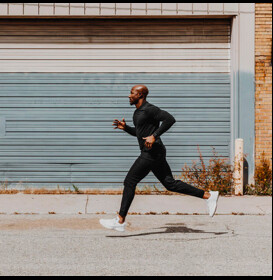
Well, next time you find yourself in a quarrel over that latter point, you might want to reference this very article.
To find out how each sport works our leg muscles differently, leading to differing strengths and physiques between runners and cyclists, we asked Dr Robin Chatterjee, consultant in musculoskeletal, sport and exercise medicine at Chelsea Outpatient Centre, part of HCA Healthcare UK, for some answers.
We also caught up with Jack Hutchins, pro triathlete and coach at Scientific Triathlon, to find out how incorporating cycling into your training week may help to improve running performance and reduce the risk of injury.
Which leg muscles do running and cycling use?
Broadly speaking, running and cycling are lower-limb forms of exercise and use the four main leg muscle groups: quadriceps, calves, glutes and hamstrings. But the action of each works them in different ways.
When pedaling, cyclists use the quads and the glutes to produce power – the quads just before the top of the stroke through to the bottom, while the glutes contribute to generating power while also stabilizing the hip. The hamstrings take care of six o’clock to nine o’clock of the pedal stroke and keep the knee stable when the leg is fully extended, while the calves help with ankle stability.
'The most important muscles [for cyclists] are the quadriceps – the muscles at the front of your thighs,' says Chatterjee. 'Cyclists often have these massive upper thighs – the reason is the constant pedalling action that leads to the over-development of the quads compared to the hamstrings or the glutes.'
It’s why cyclists’ legs
Moreover, strength imbalances are commonly the cause of injuries, so for example quad dominant runners are more susceptible to patellofemoral pain syndrome (more commonly known as runner’s knee) due to increased stress on the knees.
What other leg muscles are involved in running and cycling?
Aside from the key leg muscle groups, both forms of exercise require many more intricate muscles and tendons to keep you moving forward. The main supporting cast that running uses are:
Tensor fasciae lata (TFL), a hip flexor muscle that connects your pelvis to your IT band (which runs down the outside of your leg) and is recruited whenever you raise your leg up or out. It keeps your knees aligned as you drive forward and stabilizes the hips and pelvis as you lift each leg.
Tibialis posterior, a muscle that runs from the back of your shin to your foot via your inner ankle bone and provides your foot with stability and drive.
The flexor digitorum brevis, a muscle on the sole of your foot that provides flexion of your four smaller outer toes, aiding balance, weight distribution and forward momentum.
Cycling, meanwhile, recruits muscles including:
Adductor magnus, the largest groin muscle that extends
It's worth mentioning that the two forms of exercise also develop different fibers within our muscles at different ratios.
'We all have fast-twitch and slow-twitch [muscle] fibers and the ratio alters based on your activity,' explains Chatterjee. Every skeletal muscle (those used to move your bones) contains both fast and slow-twitch muscle fibers; the former is used for rapid, explosive movements like sprinting or jumping, while the latter is endurance-focused.
'Cyclists have [more] fast-twitch fibers – that type of muscle that generates power, which you need for sprints, climbs or long distance cycling. Whereas runners have [more] slow-twitch fibers, which are more fatigue resistant and better for endurance running.'
Is cycling a good form of cross training for runners?
Pro triathlete and coach Jack Hutchins says that integrating cycling into a runner's training can have myriad benefits.
The performance benefit, says Hutchins, is the result of an increased training load – in terms of both volume (duration) and intensity (how hard). If you’re just relying on running to do this, it can be difficult, particularly if your legs aren’t conditioned to ramp up the training load or you’re injury-prone. While beneficial for improving fitness and
'These long-duration workouts on the bike create significant metabolic stress and elicit some really good physiological benefits because you accumulate fatigue metabolites. The fitness transfers are not just cardiovascular – cycling uses similar muscle groups but recruits muscle fibers in a different way. You could do it [create the same training effect] by doing loads of double run days, but by having those one or two three to four hour sessions a week in your schedule, you get that different and additional stimulus you can't really get running.'
Hutchinson points out that long rides can even be fun! 'On a bike, you can get out and explore all day, which is good fun and stop for lunch. If athletes can incorporate a training session into a nice day out, they will probably do more training.'
If you don't own a bike, though, or you are a nervous cyclist, you can elicit the same training benefit by using an indoor bike or turbo trainer.
The way in which you fit sessions into your run training will depend on what your running goals are for the year but Hutchins suggests using cycling as part of building your base fitness before embarking on a training plan.
'Rather than doing loads of run volume all-year round, you can be a little bit more precise and use more cross training in the winter, base season or build phase and then save that increase in run volume for the competition or specific [phase] as you're leading into your big 'A' race.'
Chatterjee does, however, caution that while combing the two may reduce the risk of injury for some, be mindful that it's not a magic bullet as, in doing so, 'you are taking on the risk of injury from both [sports]', citing buttock pain and lower back pain as niggles sometimes seen in cyclists.
by Runners World
Login to leave a comment
Toronto runner Virginia Lee, 51, prepares for 25th consecutive Waterfront Marathon
For Virginia Lee, the TCS Toronto Waterfront Marathon on Oct. 20, is more than just another race—it’s a journey that has spanned a quarter-century. The 51-year-old Toronto native is a legacy runner at the Toronto Waterfront Marathon, having finished every edition since the marathon distance was introduced in 2000.
This year, she’s gearing up for her 25th consecutive Waterfront Marathon, with a deeper purpose: fundraising for the Princess Margaret Cancer Foundation through the TCS Charity Challenge in memory of her late father.

Lee and her father were incredibly close, and she credits her love for fitness to him as it was something he loved to do. Lee says she was a mathlete in her younger years and her passion for fitness began in her 20s. After a while, she got tired of the 45-minute commute to her local gym.
Lee decided to skip the gym and hit the local track instead—where she fell in love with running. A colleague at Browns Shoes, Manny, eventually helped her gain enough confidence to register for her first race. “He was a big mentor for me,” Lee says. “I remember being in awe of all the marathons he’s done, and now I’ve done more—he can’t believe how far I’ve come.”
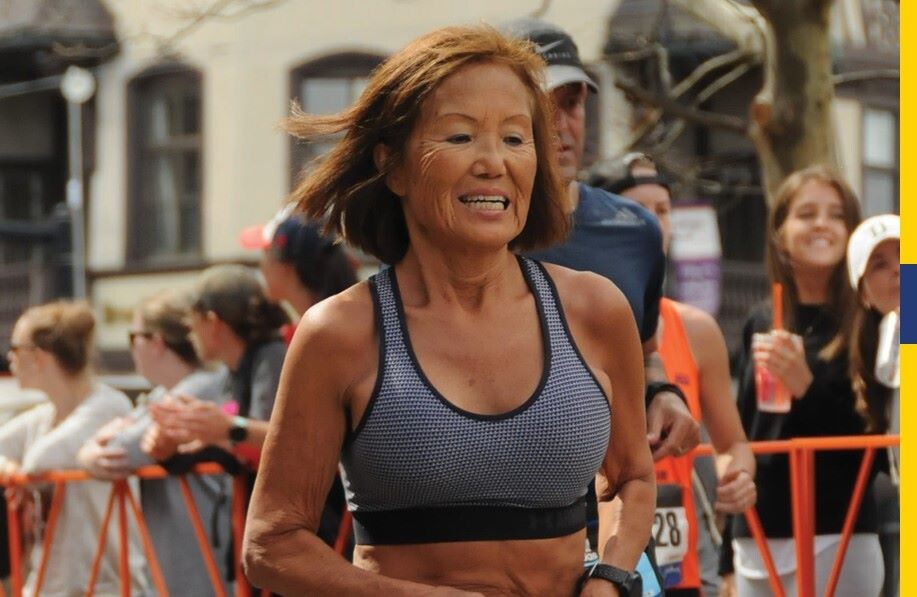
She first ran the Toronto Waterfront Marathon in 2000, and it quickly became an annual tradition. “I started doing the Toronto Waterfront Marathon every year because it was something I enjoyed,” Lee says. Her dedication to the race became even more apparent in 2013 when she faced a tough decision—run the Chicago Marathon, which she had qualified for, or maintain her streak in Toronto. Toronto organizers reached out, reminding her of her unbroken streak. She ended up doing both. “I had to be super conservative in Chicago because I wanted to run well in Toronto,” Lee recalls.
Over 24 years, Lee has seen the sport evolve, especially women’s participation. “There weren’t too many women at my first marathon in 2000, but last year there were nearly 1,500 female finishers,” she says. The growing community of older female runners in Canada has been an inspiration, along with U.S. masters running legend Jeannie Rice, who at 76, holds several masters marathoning world records. “She is such an idol for me,” says Lee. “Although I’ll never be as fast as her, her consistency and resilience are everything.”
One of Lee’s biggest motivations remains her desire to maintain her streak. “A lot of people did not believe I could do this,” she says, reflecting on the dedication that has driven her through two decades of training. Her commitment is impressive considering her career at the University Health Network (UHN) in Toronto, where she’s worked for the last 15 years.
Her training build for this year’s race has been the hardest yet, dealing with her father’s passing, plus a bad case of shingles. “I wasn’t well. I caught shingles and felt exhausted for the first two months,” she shares. “The loss of my father has given me a renewed purpose.”
At the TCS Toronto Waterfront Marathon expo on Friday, Lee will share her story to the start line and guide eager runners through what they can expect on the 2024 course. Despite 24 years of experience, Lee admits she still gets nervous. “I feel like I have imposter syndrome every year. But I’m grateful to be a part of it.”
by Marley Dickinson
Login to leave a comment
TCS Toronto Waterfront Marathon
The Scotiabank Toronto Waterfront Marathon, Half-Marathon & 5k Run / Walk is organized by Canada Running Series Inc., organizers of the Canada Running Series, "A selection of Canada's best runs!" Canada Running Series annually organizes eight events in Montreal, Toronto and Vancouver that vary in distance from the 5k to the marathon. The Scotiabank Toronto Waterfront Marathon and Half-Marathon are...
more...TCS Toronto Waterfront Marathon elite field announced for 2024
We are just 10 days away from Canada’s largest race weekend: the 2024 TCS Toronto Waterfront Marathon. Since 2015, this event has also served as the annual Canadian Marathon Championships. This year’s race will feature everything from former champions and national record holders to rising stars looking to make their mark on the 42.2 km distance.
Here’s your cheat sheet for the men’s and women’s elite fields in Toronto.
Canadian men’s field
Andrew Alexander (Toronto): The 25-year-old former NCAA standout won the 2023 Toronto Waterfront Half-Marathon in 62:44. He is coached by Matt Hughes, the Canadian record holder in the men’s 3,000m steeplechase, and former Canadian marathoner Dave Reid. Alexander is aiming for a sub-2:10 finish at his hometown marathon.
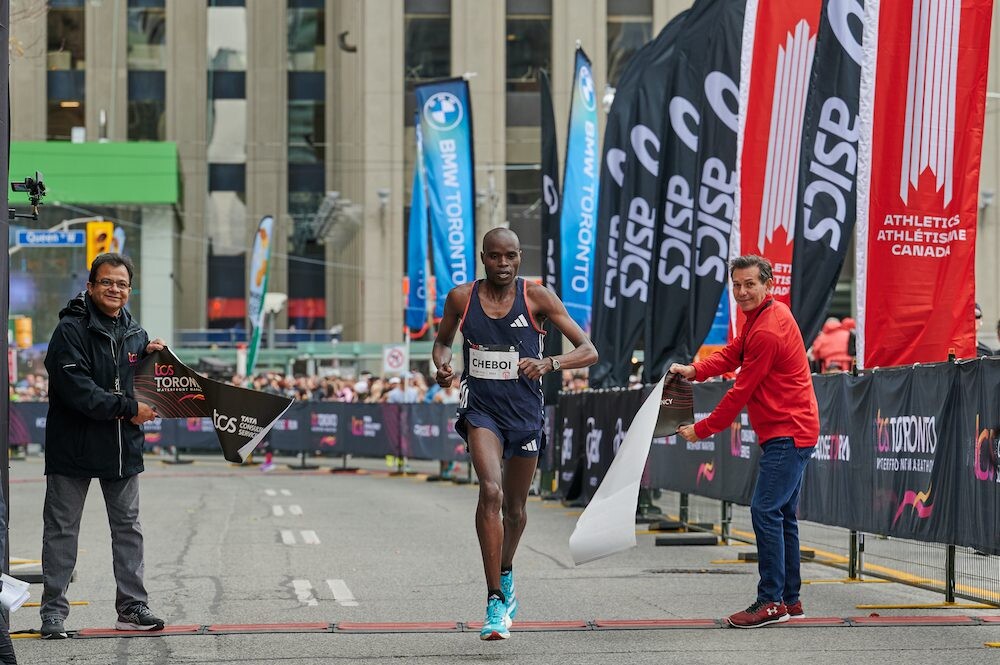
Thomas Broatch (Vancouver): The reigning Canadian marathon champion. He was the first Canadian across the line last year in his marathon debut (2:16:25). Four months later, Broatch took another shot at the distance, lowering his personal best by more than four minutes at the 2024 Houston Marathon (2:11:54).
Justin Kent (Surrey, B.C.): This will be Kent’s first time competing at the Toronto Waterfront Marathon. He ran his PB of 2:13:07 at the 2023 Prague Marathon, earning him a spot on Team Canada’s men’s marathon team for the 2023 World Athletics Championships.
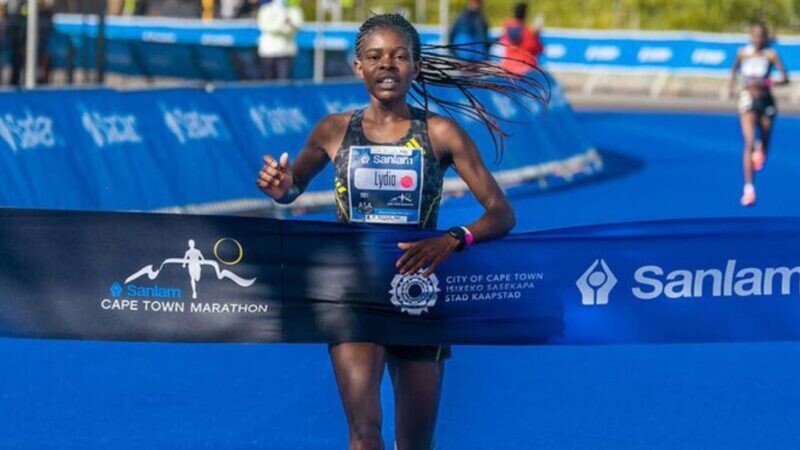
Maxime Leboeuf (Gatineau, Que.): Leboeuf finished third at the 2022 Montreal Marathon in 2:24:25. He’s a former graduate of Queen’s University XC program and an avid cross-country skier.
Kieran McDonald (Halifax): McDonald will be making his marathon debut in Toronto. He ran his half-marathon best of 65:45 at the 2024 Houston Half Marathon in January.
Alex Neuffer (Stratford, P.E.I.): Neuffer ran his PB of 2:21:34 at the 2022 Boston Marathon, finishing as one of the top Canadians. He’s a graduate of St. Francis Xavier University’s XC program and a training partner of Kieran McDonald (see above).
Thomas Nobbs (Vancouver): The 25-year-old will be running his second-career marathon in Toronto. He made his debut in Philadelphia last fall, running 2:19:13. Nobbs finished just off the podium at the 2024 Canadian 10K Championships, in 29:31. He also finished second at the Canadian Half Marathon Championships in Winnipeg in June.
Sergio Ráez Villanueva (Mississauga, Ont.): Ráez Villanueva has competed at the Toronto Waterfront Marathon for the last two years. He set his best of 2:18:04 here in 2022 (his marathon debut). Ráez Villanueva is self-coached and also coaches youth athletes in his hometown of Mississauga.
Tristan Woodfine (Cobden, Ont.): Coached by former Canadian Olympic marathoner Reid Coolsaet. Woodfine won the half marathon here in 2022. He has the fastest time among Canadian men in the field, with a PB of 2:10:39 from Houston earlier this year.
International men’s field
Elvis Cheboi (Kenya): Cheboi ran his personal best of 2:09:20 to win the 2023 Toronto Waterfront Marathon. (Reigning champion)
Mulugeta Uma (Ethiopia): Uma ran 2:05:33 to win the 2024 Paris Marathon in April. He has the fastest personal best in the men’s field.
Abdi Fufa (Ethiopia): Fufa finished just off the podium at the 2024 Dubai Marathon in January (2:06:23). He ran his PB of 2:05:57 at the Siena Marathon in 2021 (where he was second). The 29-year-old is looking for his first marathon win.
Hailu Zewdu (Ethiopia): The 29-year-old ran his PB of 2:06:31 at the Dubai Marathon in 2020. He has not broken 2:09:00 in his six marathons since.
Gizealew Ayana (Ethiopia): Ayana is the youngest elite athlete in the field–he’s only 21. He ran his PB of 2:07:15 to win the 2023 Paris Marathon in his debut at the distance.
Domenic Ngeno (Kenya): The 26-year-old is the fastest Kenyan marathoner in the Toronto field. He won the 2024 L.A. Marathon in March in 2:11:01. Ngeno’s PB of 2:07:26 was from a podium finish at the 2023 Eindhoven Marathon in the Netherlands.
Noah Kipkemboi (Kenya): A veteran of the marathon distance. The 31-year-old has competed at more than 10 marathons in his career. He podiumed at the Enschede Marathon earlier this year, with a time of 2:09:06.
Brian Kipsang (Kenya): Kipsang arrives in Toronto fresh off a personal best at the 2024 Milan Marathon in March, where he placed second in 2:07:56. The 30-year-old has finished in the top five at three of his last four races.
Abe Gashahun (Ethiopia): Gashahun has the fastest half-marathon personal best in the field of 59:46. He’s had success at shorter distances and cross country, but it hasn’t yet translated to the marathon. The 26-year-old ran 2:08:51 earlier this year in Saudi Arabia.
Sydney Gidabuday (U.S.A.): Former member of Adidas Tinman Elite Track Club in Colorado. Gidabuday made his marathon debut on Canadian soil at the 2023 Ottawa Marathon, where he finished ninth. His PB of 2:14:34 was run at the hilly NYC Marathon in 2023.
Yusuf Nadir (U.S.A.): Personal best of 2:15:27 from the 2023 Grandma’s Marathon in Duluth, Minn. He finished 25th at the U.S. Olympic Marathon Trials in February.
Aidan Reed (U.S.A.): Also made his marathon debut at the 2023 Ottawa Marathon–2:20:23. Reed ran collegiately at Southern Utah University, following in the footsteps of Canadian marathon record holder Cam Levins.
Canadian women’s field
Kate Bazeley (St. John’s, N.L.): The 40-year-old ran her PB of 2:36:35 in Toronto in 2019. Earlier this year, Bazeley represented Team Canada at the World XC Championships in Belgrade, Serbia.
Anne-Marie Comeau (Saint-Ferréol-les-Neiges, Que.): The 2018 Canadian (winter) Olympian ran her marathon best of 2:34:51 in Toronto last year, crossing the line as the second Canadian woman.
Asia Dwyer (Toronto): Dwyer ran her personal best of 2:42:45 at the 2023 Toronto Waterfront Marathon last fall. She told Canadian Running in an interview for the November/December 2024 issue of the print magazine that she is looking to smash her previous best.
Rachel Hannah (Port Elgin, Ont.): Hannah was the top Canadian finisher at the 2024 Ottawa Marathon in May. She won a bronze medal for Canada at the 2015 Pan-American Games in Toronto. She ran her personal best of 2:32:09 was at the 2016 Houston Marathon.
Liza Howard (Toronto): Howard told Canadian Running in an interview that her goal is to reach the podium and run a personal best. Howard ran her current personal best of 2:35:29 at the 2022 Chicago Marathon. She has unofficially broken the Canadian women’s 50K record, twice, in her marathon build for this race.
Erin Mawhinney (Hamilton): The 28-year-old runner will be making her marathon debut in Toronto. She is coached by two-time Canadian Olympian Reid Coolsaet. She broke the tape at the Toronto Waterfront Half Marathon last year, running a PB of 1:13:50.
Melissa Paauwe (Calgary). Paauwe is carrying the pride of Calgary into Toronto. She ran her PB of 2:41:12 at the 2023 Chicago marathon, and finished as the top Canadian.
Leslie Sexton (Markham, Ont.): Sexton returns to Toronto to run her hometown marathon. She said she will be trying to qualify for Worlds in Tokyo next year. She set her PB of 2:28:14 at the 2024 Houston Marathon this year, but missed the Olympic standard by two minutes.
Natasha Wodak: (Vancouver) started her marathon career here in 2013 but has not returned until this year; has never won the championship. Her PB of 2:23:12 from the 2022 Berlin Marathon stands as the current Canadian record.
International women’s field
Waganesh Mekasha (Ethiopia): Has a personal best of 2:22:45 from the 2019 Dubai Marathon. The 32-year-old Ethiopian won the 2023 Ottawa Marathon and finished second in Toronto last fall, with a time of 2:23:12.
Afera Godfay (Ethiopia): Godfay finished third behind compatriots Buze Diriba and Mekasha (see above) last year. She has a personal best of 2:22:41 and has finished in the top five in four of her last five marathons.
Roza Dejere (Ethiopia): The 27-year-old Ethiopian has the fastest personal best in the women’s field (2:18:30). She finished fourth in the women’s marathon at the Tokyo Olympic Games. She comes to Toronto as a threat to the course record of 2:22:16, which was set in 2019.
Meseret Gebre (Ethiopia): Gebre hasn’t raced since Toronto last fall, where she finished seventh in 2:29:54. She set her PB of 2:23:11 to win the Barcelona Marathon in 2022.
Valentina Matieko (Kenya): One of two Kenyan women in the international elite field. Matieko comes to Toronto fresh off a personal best earlier this year at the Paris Marathon in April (2:24:21).
Lydia Simiyu (Kenya): Simiyu ran her PB of 2:25:10 earlier this year at the Rome Marathon. She served a six-month doping suspension in 2022 after she tested positive for chlorthalidone after the Poznan Half Marathon in Poland.
Rediet Daniel (Ethiopia): Two top-five finishes in her three professional marathon starts. The 24-year-old Ethiopian ran her personal best of 2:26:25 at the 2024 Doha Marathon in February.
The TCS Toronto Waterfront Marathon, to be held on Oct. 20, is Canada’s premier running event and the grand finale of the Canada Running Series (CRS). Since 2017, the race has also served as the Athletics Canada marathon championship and Olympic trials.
by Marley Dickinson
Login to leave a comment
TCS Toronto Waterfront Marathon
The Scotiabank Toronto Waterfront Marathon, Half-Marathon & 5k Run / Walk is organized by Canada Running Series Inc., organizers of the Canada Running Series, "A selection of Canada's best runs!" Canada Running Series annually organizes eight events in Montreal, Toronto and Vancouver that vary in distance from the 5k to the marathon. The Scotiabank Toronto Waterfront Marathon and Half-Marathon are...
more...Kenyans target a double hat-trick in Munich
Kenya’s elite runners target a double hat-trick at Sunday’s Generali Munich Marathon: If successful it will be the third time in a row that runners from this country take Germany’s fourth biggest marathon race.
Cosmas Birech and Shamilah Kipsiror are heading the start list with personal bests of 2:08:03 and 2:27:33 respectively.
Organizers registered a record total of over 27,000 entries from 120 countries for the 38th edition of the Generali Munich Marathon, which will start and finish next to the iconic Munich Olympic Stadium. Due to building works in the arena runners can not finish inside on the track this year. While the total figure includes races at shorter distances there will be around 6,200 marathon runners on Sunday.
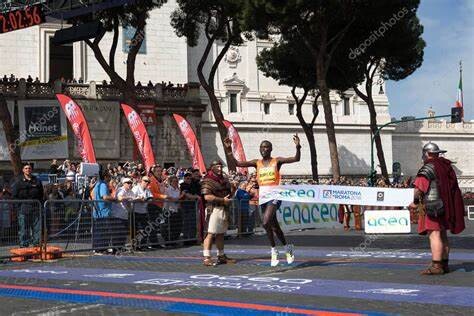
A number of athletes had to cancel their start due to either injuries of visa problems. The latest withdrawal came from Dominic Nyairo of Kenya, who would have been a strong favorite on Sunday. However there is still enough talent left to produce a good race. “It is our aim to achieve winning times of sub 2:09 and sub 2:26,“ said Michael Kraus, the elite field coordinator. The weather might be challenging, but we remain optimistic to see faster winning times than last year.“
Cosmas Birech ran his personal record when he won the Rome Marathon in 2018 with 2:08:03. Rome is not known as a particularly fast course, so Birech hopes to achieve a similar time at the Generali Munich Marathon. Fellow Kenyans William Kibor and Benard Chumba are also among the favorites. Kibor has a PB of 2:08:32 from the Vienna City Marathon back in 2012 and Chumba ran 2:10:33 in Marrakech last year. All three of them are from Kaptagat and train together. “My training went very well and I feel that I am in the same kind of shape as when I ran my personal best. If the weather is good I hope to run between 2:07 and 2:09 on Sunday,“ said William Kibor at Friday’s press conference in Munich.
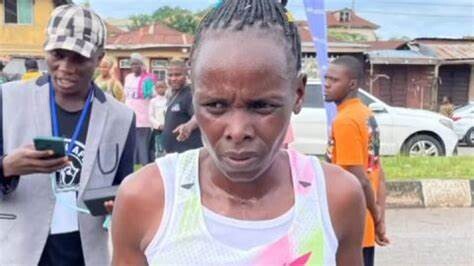
A marathon debutant could do very well on Sunday: Kenya’s Nehemiah Kipyegon showed very promising form recently. The 26 year-old improved his half marathon PB to 60:34 in Copenhagen last month. In the highly competitive race he finished ninth. Siyum Tola of Ethiopia is another athlete who will run his debut in the Generali Munich Marathon. He has been involved in marathons as a pacemaker and is a training partner of Milkesa Mengesha who won the Berlin Marathon two weeks ago.
In the women’s race Shamilah Kipsiror will be the main favorite. The Kenyan improved to 2:27:33 for fourth place in Rome this spring. Her half marathon PB of 67:53 indicates that there is potentially more to come, especially on a flat course like Munich. A trio of Ethiopians will most likely be her strongest rivals on Sunday. Gelane Senbete has a personal record of 2:29:54 while Gadise Negasa has run 2:30:30. Asmare Assefa could be in for a surprise and a big improvement. So far she has not run faster than 2:33:10 but the Generali Munich Marathon will be her first race outside Africa. Assefa is in the same training group with Tola and Mengesha in Addis Ababa.
“We are thrilled by the record entry which means we have a 20 percent surge compared to last year. We are proud of these figures which show that our event and the course are really popular,“ said Gernot Weigl, who runs the Generali Munich Marathon as Race Director for almost 25 years. Stronger elite fields and international media work have helped bring up the numbers recently.
Although the city of Munich benefits from the growing number of international runners the event attracts, it was Munich’s government that clouded the future of the Generali Munich Marathon. Officers of the city’s district department (Kreisverwaltungsreferat) decided to pass on the right of staging a marathon in the city to a new organizer who has never ever staged a road race. There is talk of a two-lap marathon course and it looks as if the city of Munich gambles with a successful international event that in addition keeps a legacy of the 1972 Munich Olympic Games. “I have never heard of anything like this happening to a major international marathon race,” said Gernot Weigl, who is now legally challenging the decision of the Munich district department.
by AIMS
Login to leave a comment
Generali Munich Marathon
The GENERALI MUNICH MARATHON has held the elite label of the WORLD ATHLETICS since 2020 and the marathon route is officially measured and recognized. The route runs from the Olympic Park and Schwabing to Leopoldstraße with the Siegestor, via Königsplatz and the Pinakotheken to the English Garden. From there past the Chinese Tower and Art Nouveau villas in Bogenhausen, through...
more...Trento Half Marathon 2024: Ugandan Kiplangat triumphs, Ethiopian Mekuriaw wins in the women's category
Great success for the 2024 edition of the half marathon that takes place in the city center: 1500 participants in the Trento Half Marathon and Trento 10k del Concilio. President Gianni Valler: "First time that several days before we declare sold out. We are extremely satisfied, everything was beyond the rosiest expectations"
Triumphing in the 2024 edition of the Trento Half Marathon is the Ugandan born in 2000 Hosea Kiplangat, who showed up on the finish line in Piazza Duomo in a brilliant and very valid 1h00'15". The women's race was won by the Ethiopian Yalemeget Yaregal Mekuriaw, who won with a real solo in 1h07'56", just 8 seconds from the course record held by the Ethiopian Worknesh Debele.
Great emotions this morning in Trento, which proves to be the Italian capital of running for a Sunday of sport of the highest technical level: on the second day of the Trento Running Festival - after the thrills and adrenaline of Saturday evening with the 77th edition of the Giro al Sas - it was the turn of the 1500 participants of the Trento Half Marathon and Trento 10k del Concilio, which recorded as many as 20 percent more attendance than in 2023, with 25 nationalities represented and 25 percent female.
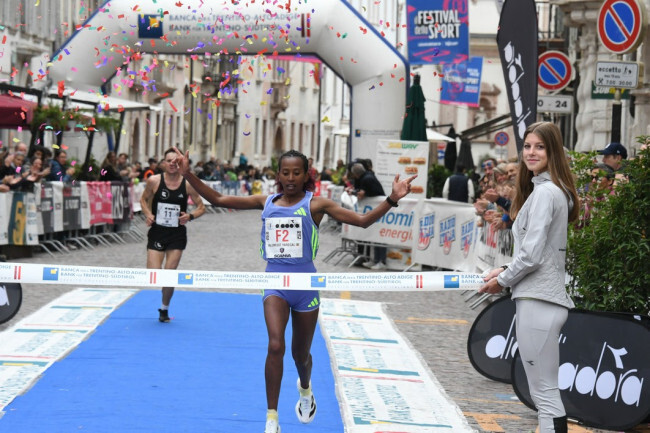
Returning to the competitions, the Trento Half Marathon record to beat has been held since 2022 by the multi-titled Ethiopian Tamirat Tola with 59'49", but today it was really fast thanks to Kiplangat who showed up at the finish line with an extraordinary time that for the Ugandan also counts as a personal best.
"I improved my personal best on the half marathon by almost two minutes and I am really happy with the final result - said Kiplangat at the end of the race -. I arrived today inthe best possible physical condition and the race went really well, I thank Trento for the warm affection at the finish line".
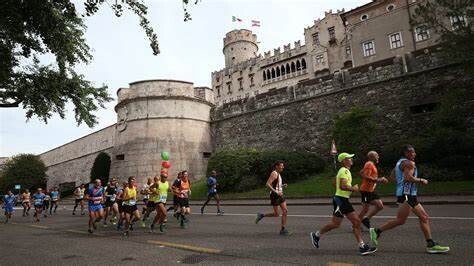
Behind Kiplangat, a Kenyan double with the youngclass of 2005 Dennis Kororia and Zacharia Krop: respectively second in 1h01'11", conquering a personal best, while Krop, at his debut on the distance of 21 kilometers, third in 1h01'19".
As for the women's race, despite the triumph, Yalemeget Yaregal Mekuriaw did not get a "personal best" (time at the Berlin Half Marathon 2023 of 1h06'27", ed.) but the Ethiopian athletestill entered a great time, with 15 kilometers run alone where she distanced the runner-up by a good three minutes.
In second place was the Kenyan Nelly Jeptoo in 1h10'58" and on the third step of the podium in 1h11'34" her compatriot Nancy Jepleting.
Sixth place instead for Luna Giovanetti of Atletica Valle di Cembra, already Italian champion Promesse di corsa in montagna, who therefore becomes the first Italian of this Trento Half Marathon stopping the clock in 1h20'35", her first real official result on the certified half marathon distance.
At the same time, the Trento 10k del Concilio was also run, a race that recorded the success of Damiano Casagranda of Atletica Valle di Cembra with 33'53", while among the women the victory went to the South Tyrolean Tanja Scrinzi in a time of 38'19".
To make a final assessment of this Trento Running Festival 2024 is the new president of Asd Città di Trento Gianni Valler: "It is the first time that several days before we declare the sold out of registrations, we are extremely satisfied with this, everything has been beyond the rosiest expectations".
"Great chronometric performances have further rewarded us, gratifying our work and that of over three hundred volunteers who have set up the route impeccably – concluded Valler -. The Giro at the Sas was also a spectacle with a great Yeman Crippa, a home athlete cheered by all the Trento public who loves him and obviously congratulations also to last night's winner Charles Rotich who ran really fast, he will be a great champion in the future, we are sure of it".
by F.Os.
Login to leave a comment
Trento Half Marathon
In Trento we have joined forces by gathering together the city’s biggest running events to give birth to the “Trento Running Festival”. The Festival is a whole weekend dedicated to running for people of all levels: top runners, amateurs, families and the young. The event offers the opportunity to meet and watch top athletes trying to beat their record at...
more...Kenyans aim to continue Munich’s success story
With the help of a strong African elite field organisers of the GENERALI MUNICH MARATHON hope to continue their recent success story on 13th October. Three Kenyan runners with personal bests slightly over 2:08:00 will be on the start line besides the Olympic Stadium. The women’s race will feature two runners who have clocked good half marathon times and could be in for a breakthrough over the full distance in Munich.
Including races at shorter distances a record total of over 25,000 runners is expected to compete in the 38th edition of the GENERALI MUNICH MARATHON, which is an increase of around 20 percent compared to last year. About 7,000 will run the marathon. Registration is still possible at: www.generalimuenchenmarathon.de
“We are really happy with the strong development of our entry figures. This shows that our concept is working and bearing fruit,“ said Race Director Gernot Weigl.
Parts of the elite fields were announced today. Kenya’s Cosmas Birech is currently the fastest runner on the start list. He won the 2018 Rome Marathon in 2:08:03. In the same year he also clocked a half marathon PB of 60:06. While there were hardly any races during the pandemic Cosmas Birech was unlucky once the period of lockdowns was over. The Kenyan was injured for a longer time. At the age of 38 he now wants to give it another go and hopes to get back to his best.
Dominic Nyairo, who has a personal best of 2:08:13, produced fine performances in his recent marathons. The 27 year-old will be one of the main favorites on 13th October. In 2021 Nyairo won his debut in Hofu, Japan, with a sprint finish in 2:09:34. In 2023 the Kenyan came back to Japan and placed 16th in the highly competitive Tokyo Marathon, improving to 2:08:13. He then ran the Berlin Marathon and finished 19th in a fine 2:08:47. In contrast William Kibor achieved his personal best quite some time ago. He clocked 2:08:32 when he was fifth in the Vienna City Marathon in 2012. After a longer break, which was partly due to the pandemic, he came back running a couple of half marathons last year. The GENERALI MUNICH MARATHON will be Kibor’s first race at the classic distance since 2019.
“We have produced the fastest times in the history of our event in the past two years. And I hope that we will once again see results in the region of 2:08to 2:09,“ said Gernot Weigl. „In the women’s race times between 2:25 and 2:27 should be possible.“
Two women who can still be regarded as newcomers could produce a surprise at the GENERALI MUNICH MARATHON. Shamilah Kipsiror only started her career last year when she was already 36 years old. When she competed outside Kenya for the first time she had instant success, winning the Ghent Half Marathon in a fine 67:53. Kipsiror then ran a 2:28:13 marathon debut in Venice last October. She was fourth in that race and fourth again when she returned to Italy for the Rome Marathon this spring, improving to 2:27:33.
One of Kipsiror’s strongest rivals will be Uganda’s Viola Chemos. She has only run one marathon so far, but that was in high altitude in Eldoret, Kenya. While she clocked 2:36:38 the 31 year-old followed this up with a fine race in July. Chemos took the Kaptagat Half Marathon in Kenya’s well-known high altitude training region with 69:23. Because of their strong half marathon performances Shamilah Kipsiror and Viola Chemos could improve significantly at the GENERALI MUNICH MARATHON.
Login to leave a comment


